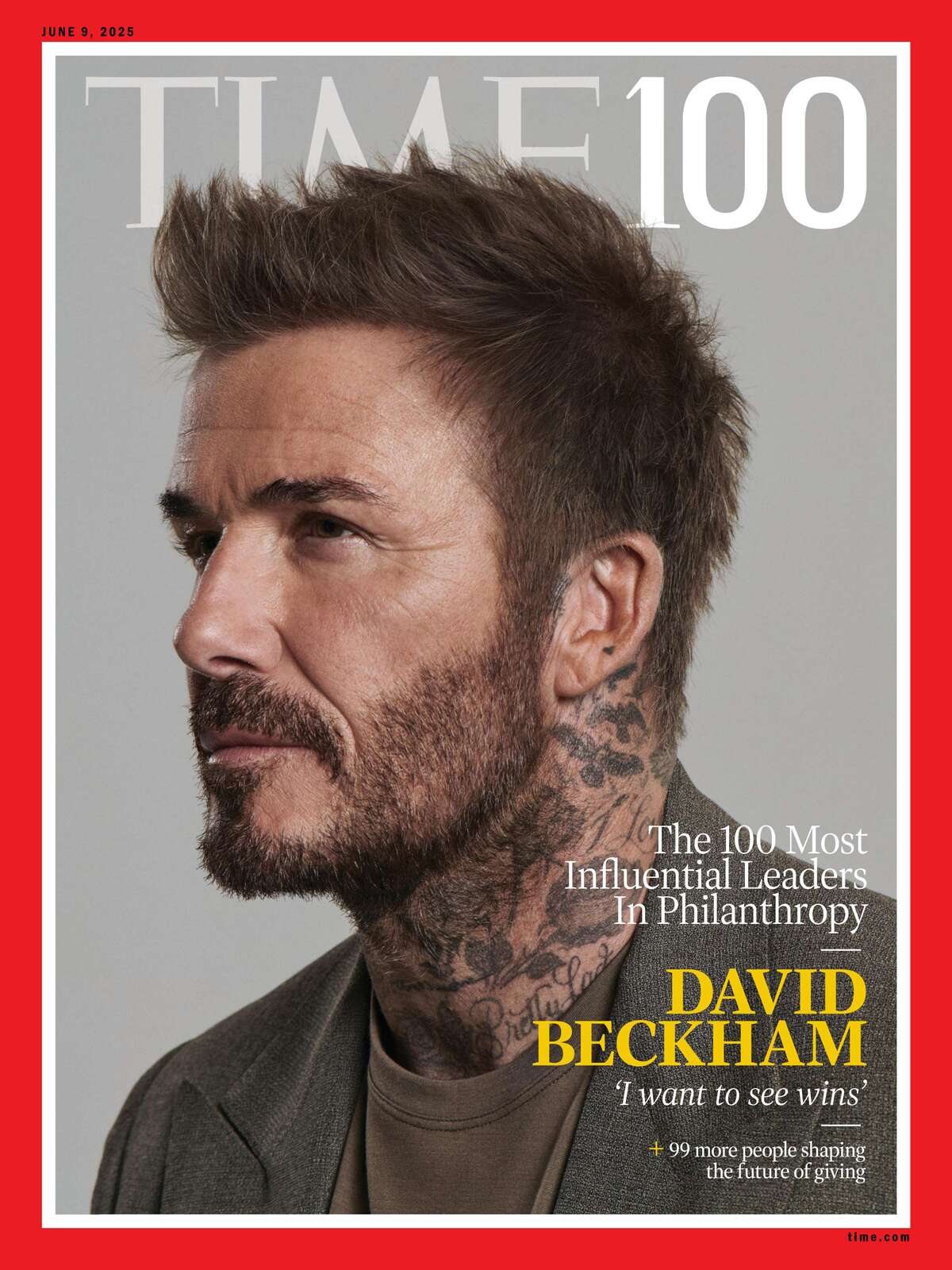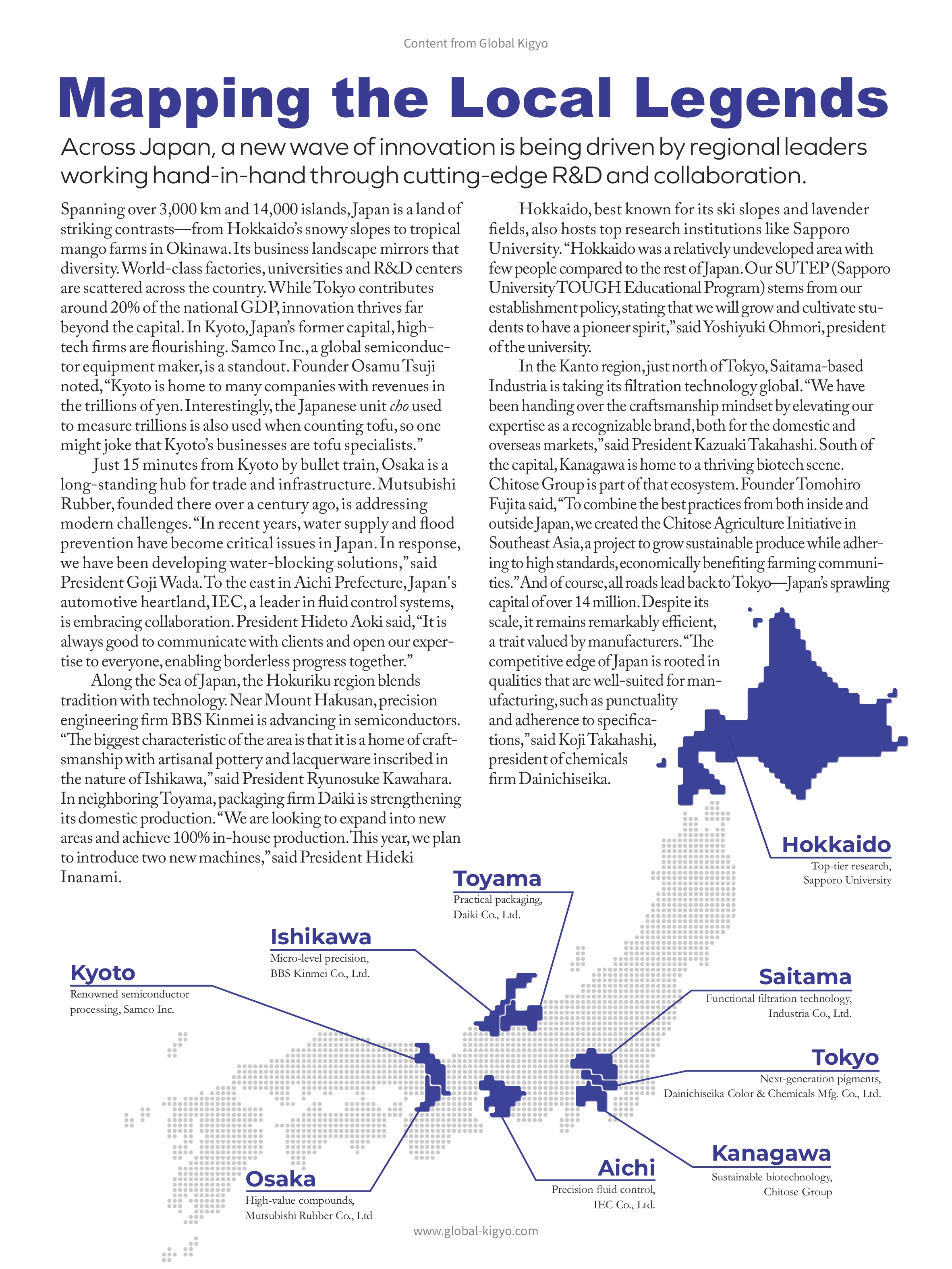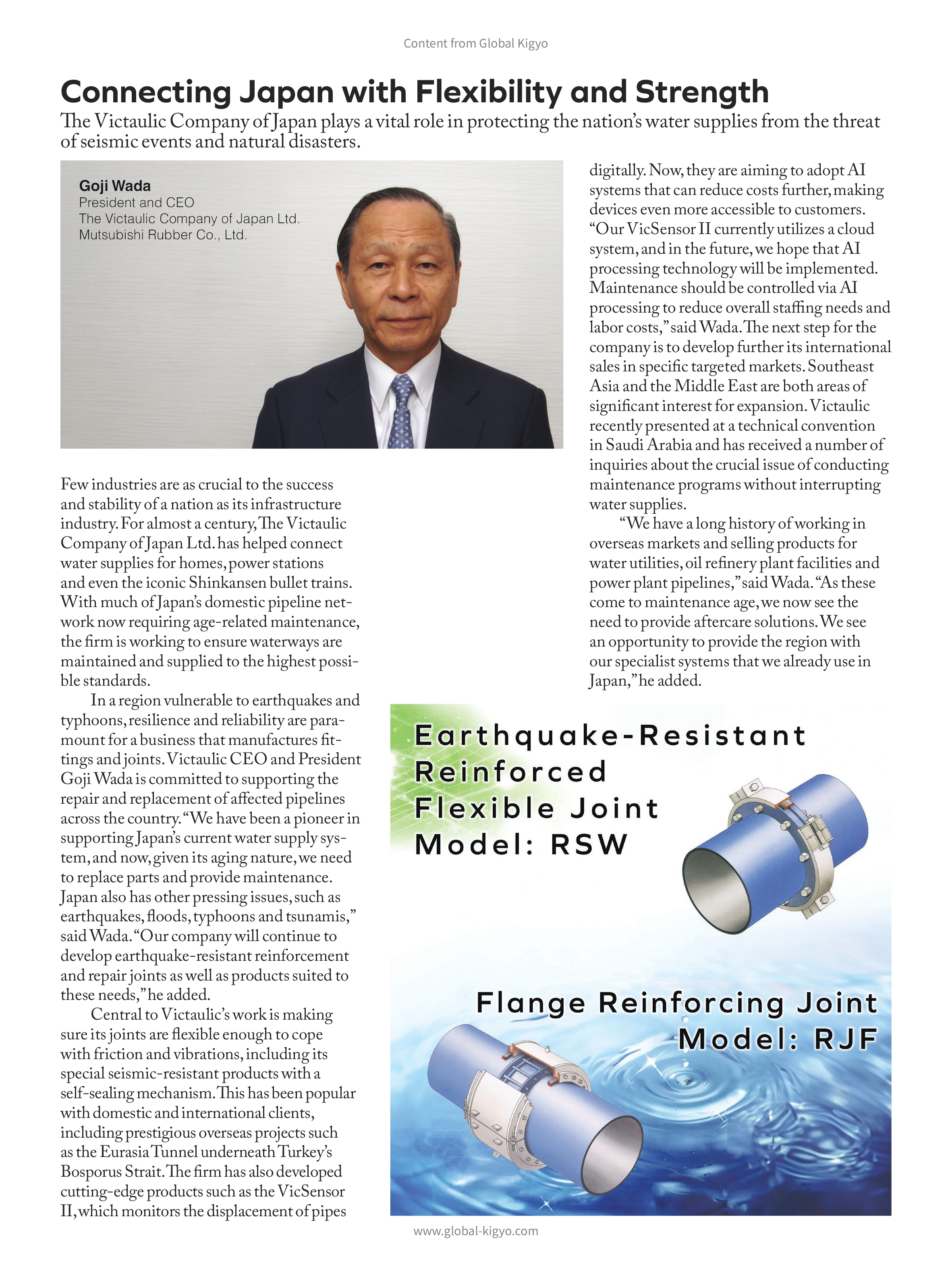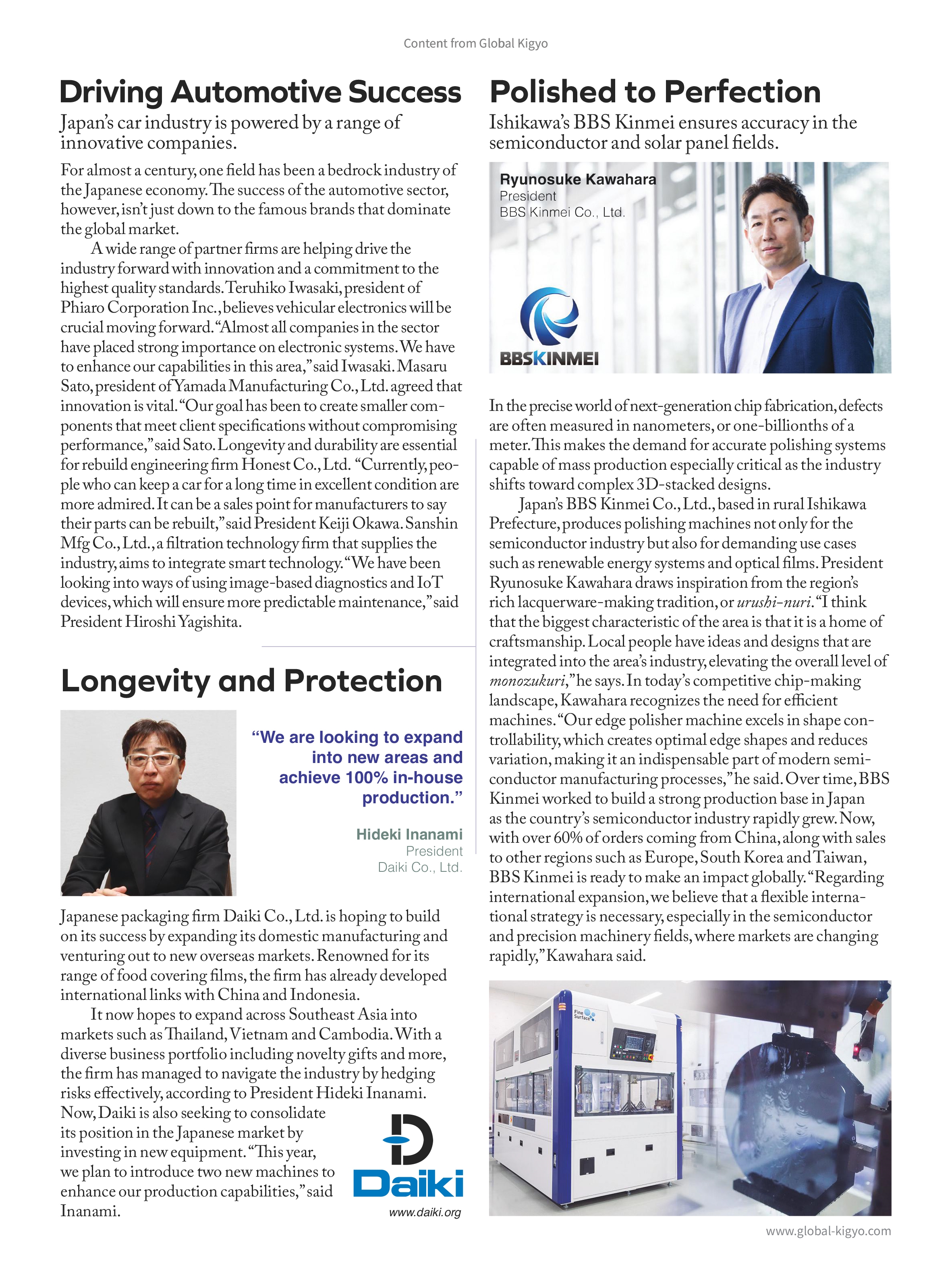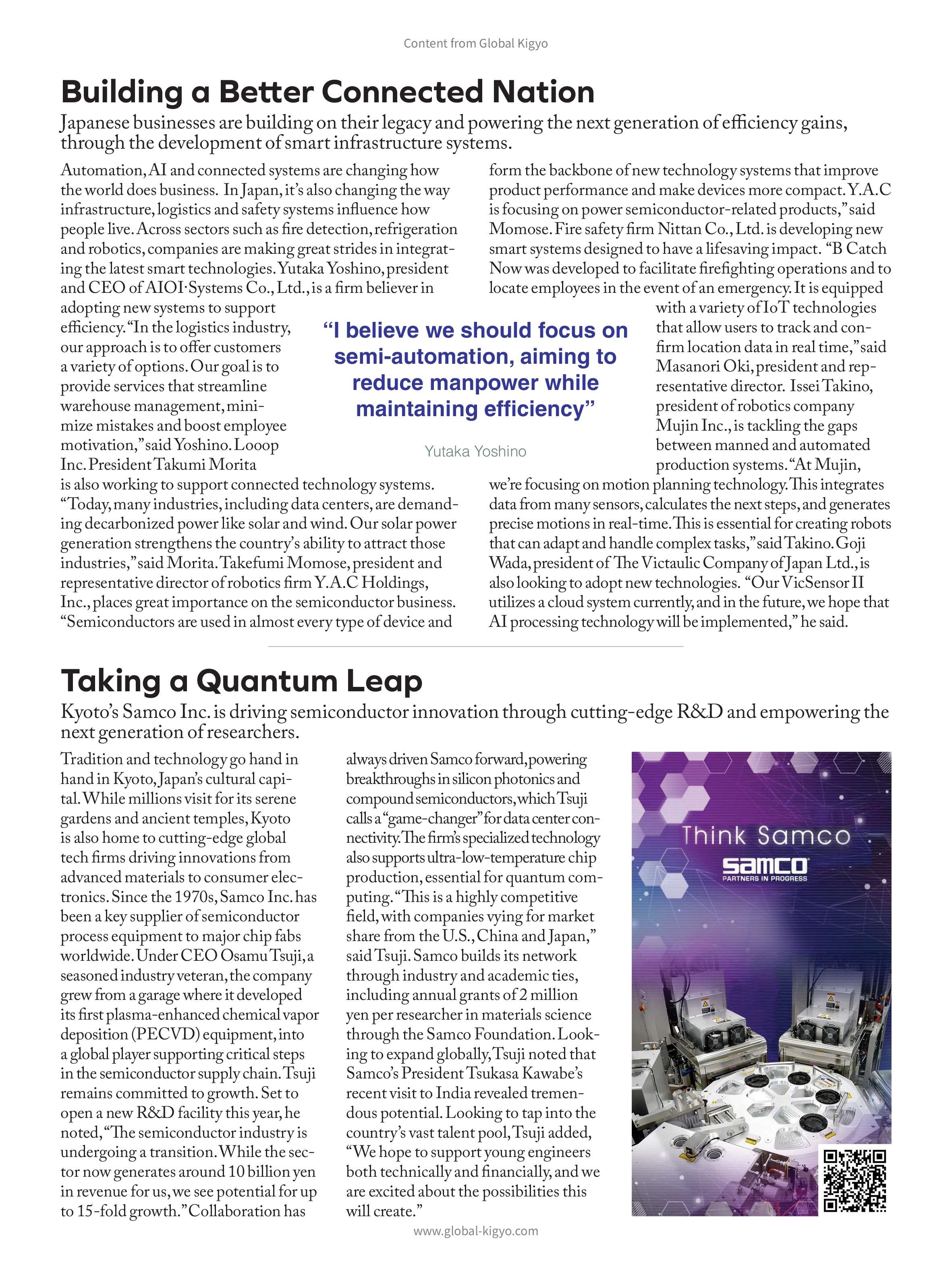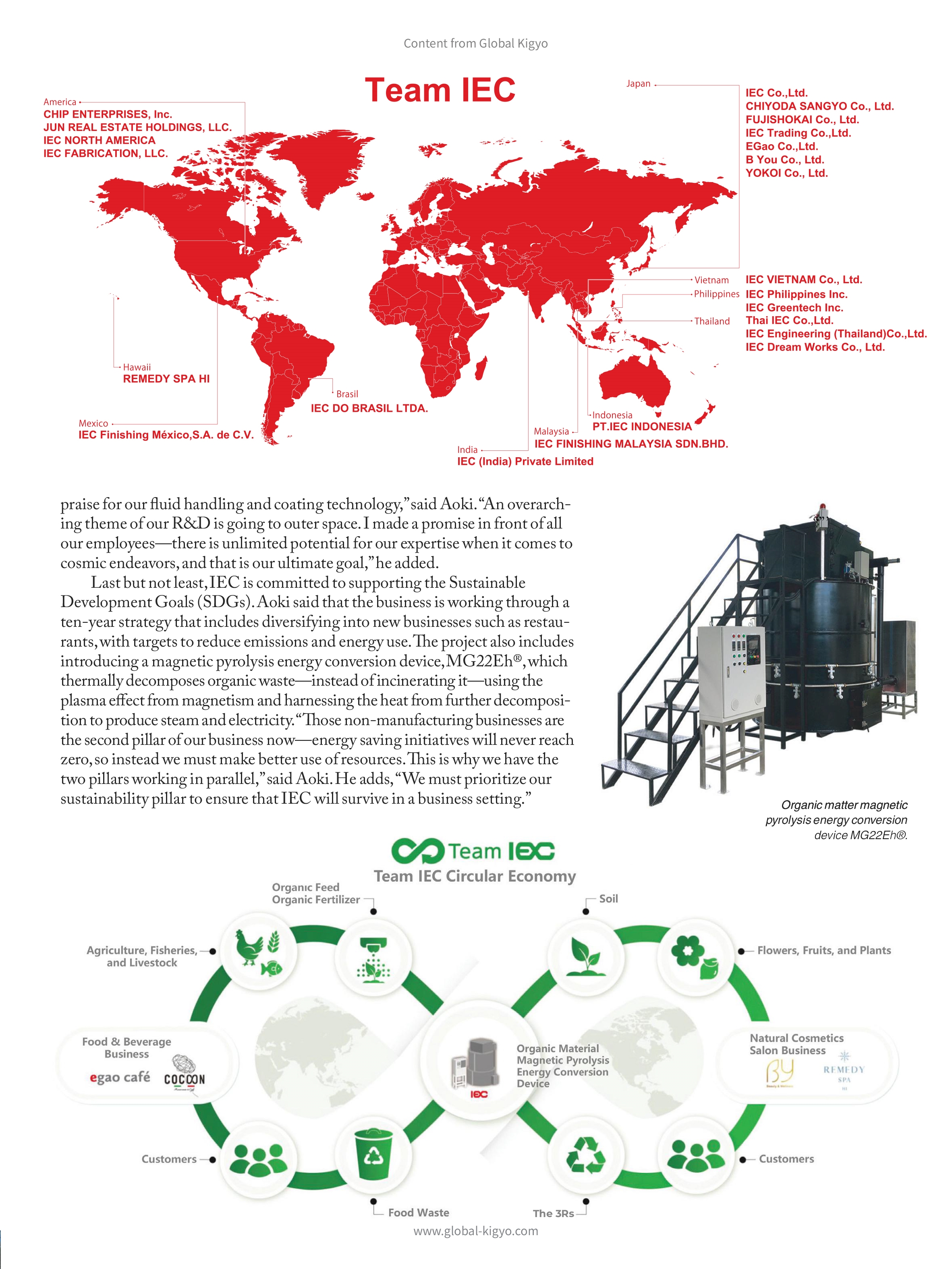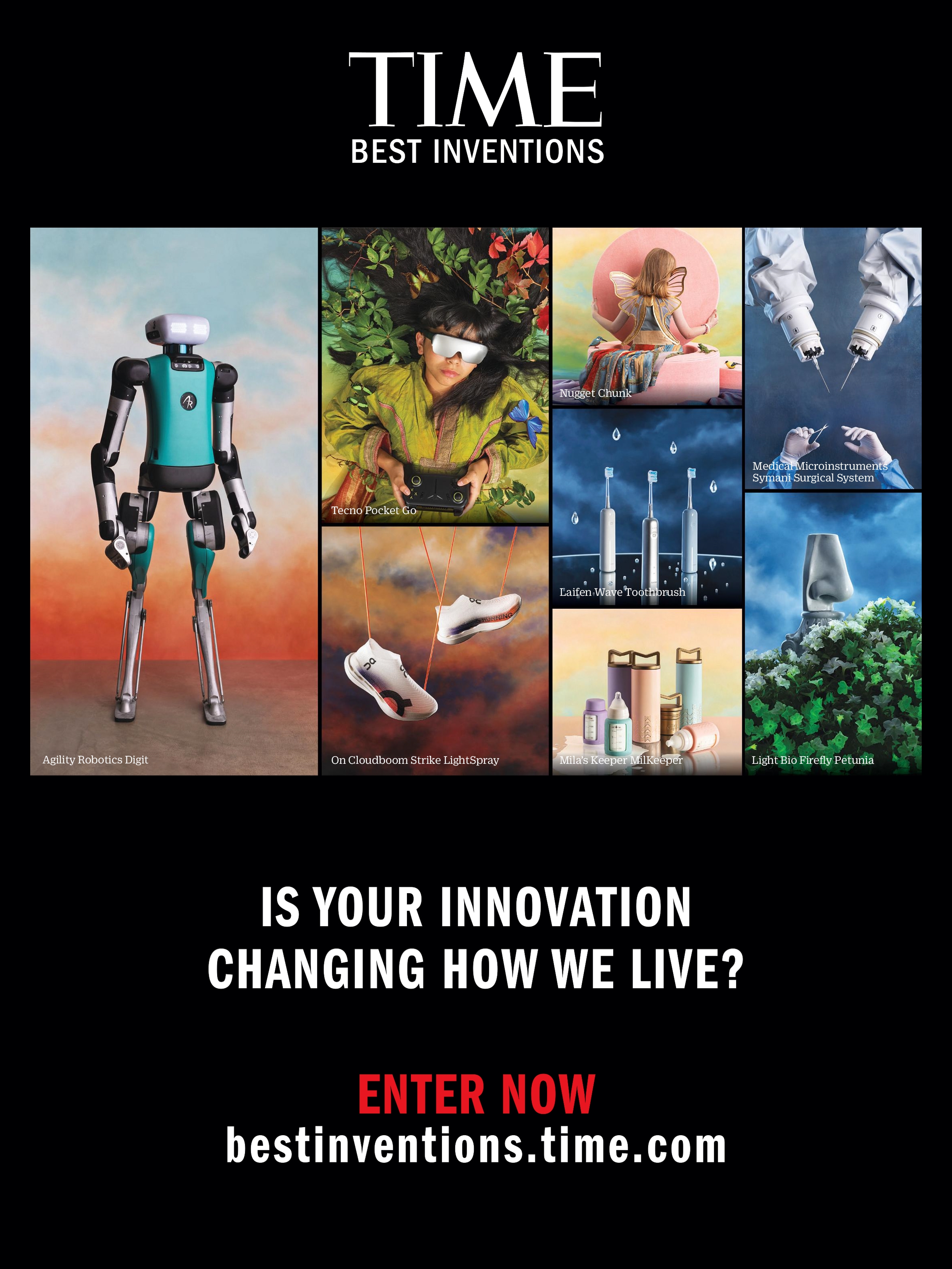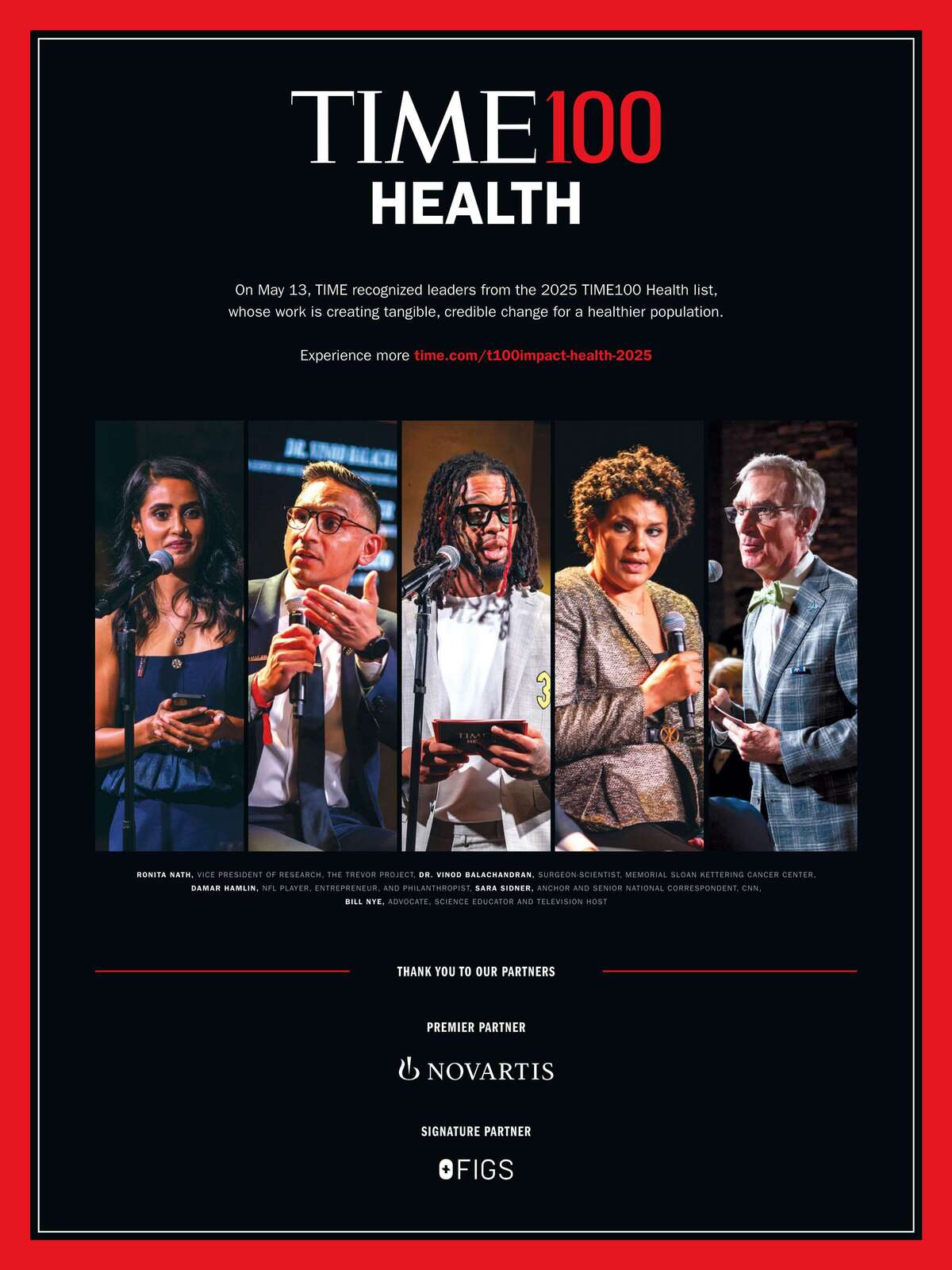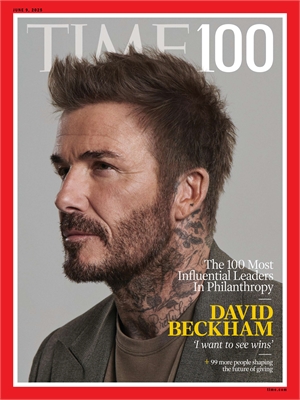FROM THE EDITOR
Stepping up

New leaders are eager to see impact—and see it now
IN MAY, PARTNERS OF THE GATES FOUNDATION gathered in Manhattan to announce that the organization would spend $200 billion over the next 20 years and then close its doors in 2045. Supporters, including Michael Bloomberg, were on hand to mark the occasion. The scene, staged at Carnegie Hall, a venue built by one of America’s great 19th century philanthropists, paid tribute to a long tradition of American giving, while pointing to new ways of thinking that are shaping the 21st century.
For those reasons, we include Bloomberg, the U.S.’s single largest recorded donor in 2024, and Mark Suzman, set to lead the next chapter of the Gates Foundation, in our inaugural TIME100 Philanthropy list. We launched the annual TIME100 21 years ago with the belief that individuals have the power to change the world, and in recent years we’ve expanded the franchise into areas poised to significantly shape our future—AI, Climate, Health, and now Philanthropy. In many places, as global institutions are chastened and world governments reverse ambitions, philanthropy is stepping into the void.
This project, representing individuals from 28 countries and assembled by TIME’s reporters, editors, and contributors around the world, was led by Ayesha Javed. “At this pivotal moment, this list tells the stories of how generous donors and leaders of foundations and nonprofits are directing funding into the communities that need it most,” Javed says.
In the U.S. in particular, foundations are under increased pressure as the new Administration aims to remove the government from spaces where it previously played a substantial role. TIME100 Philanthropy honorees like Elizabeth Alexander and Nick Allardice are responding. As president of the Andrew W. Mellon Foundation, the largest funder of the arts and humanities in the U.S., Alexander says she focused on supporting “multivocal, multiexperiential democracy” in America. And Allardice, who leads GiveDirectly—one of the world’s largest providers of unconditional cash transfers to people living in extreme poverty—says he is leaning the organization further into humanitarian work despite a $20 million hit to funding due to USAID cuts. “Cash can be uniquely powerful when all the other supply chains are super disrupted,” Allardice told TIME.
A NEW GENERATION of donors is doing things their own way. Katherine Lorenz, president of the Cynthia and George Mitchell Foundation, was instrumental in creating the Giving Pledge Next Generation for descendants of Giving Pledge signatories to help shape their family giving, while Austrian heiress Marlene Engelhorn invited a council of fellow citizens to decide how to give away the bulk of her inheritance. Through their foundation Good Ventures and grantmaker Open Philanthropy, Dustin Moskovitz and Cari Tuna take a data-focused approach to direct funds to causes where they can do the most good. Meanwhile, in January, Stack Overflow co-founder Jeff Atwood announced his mission to give away half his wealth within five years. He next plans to make direct cash payments to residents of poor counties in West Virginia, North Carolina, and Arizona. “It’s not a handout,” he says. “It’s an investment in our fellow Americans.”
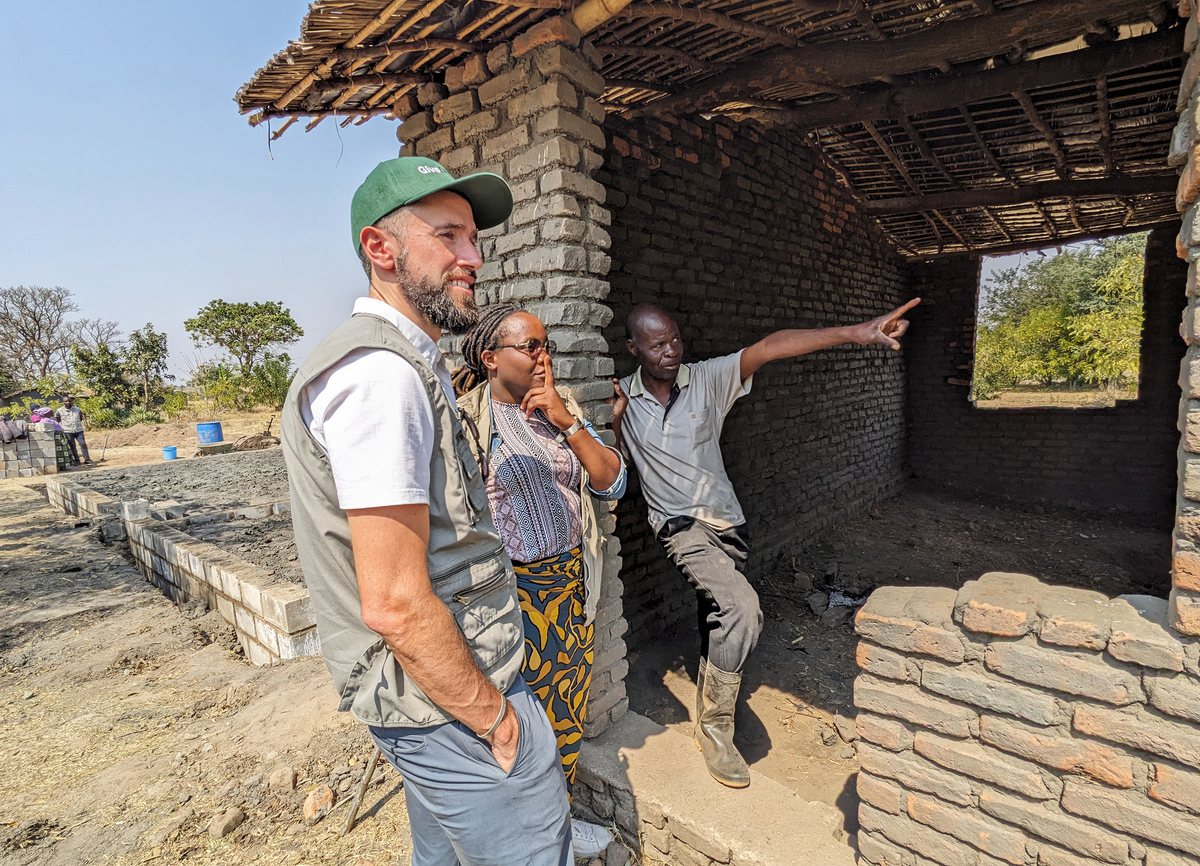
GiveDirectly’s Nick Allardice with local official Jones Chitete, right, in Malawi
Collective giving is on the rise too. The grassroots movement allows individuals to pool resources for greater impact. According to the Johnson Center for Philanthropy, “giving circles” have contributed more than $3.1 billion to social causes since 2017. Hali Lee, founder of the Asian Women Giving Circle and co-founder of the Donors of Color Network, argues the future of philanthropy belongs to community action.
The new leaders in philanthropy, many of whom are accustomed to great success in their own fields, are eager to see impact and see it now. As David Beckham, a longtime UNICEF ambassador, says, “The competitive part of it is, I want to see wins.”


Sam Jacobs,
EDITOR-IN-CHIEF
COURTESY GIVEDIRECTLY
CONVERSATION
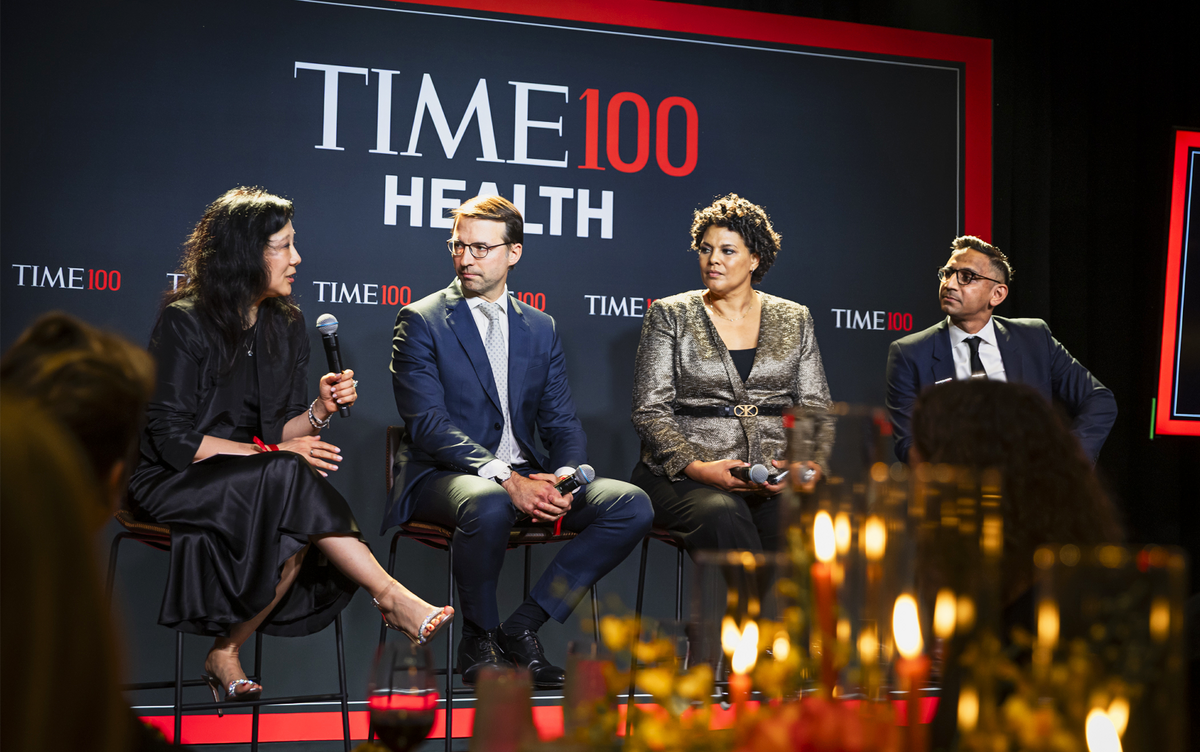
TIME100 Health
TIME hosted an event on May 13 to celebrate the 2025 list of leaders in health, including a panel on the latest cancer research featuring, from left, TIME correspondent Alice Park, Novartis U.S. president Victor Bulto, CNN’s Sara Sidner, and Memorial Sloan Kettering’s Vinod Balachandran.
Read more at time.com/time100health
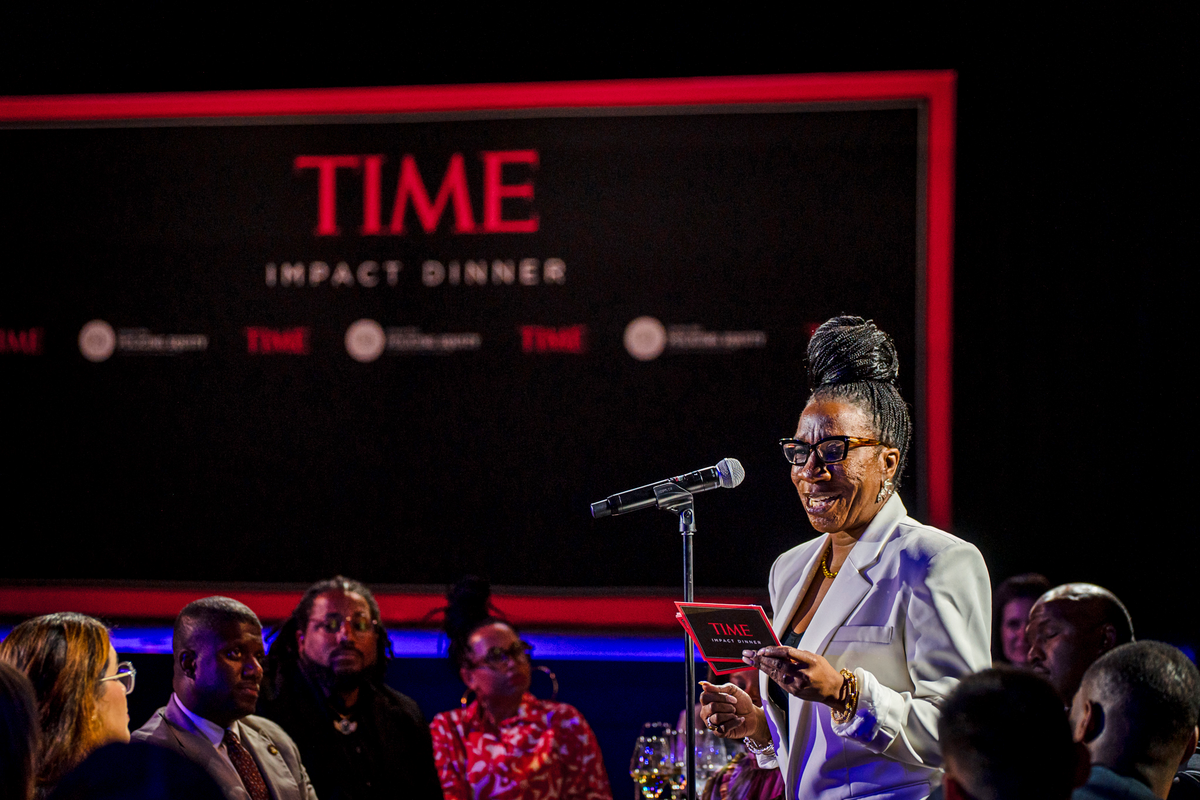
Road to Justice
Following the cover package marking the fifth anniversary of George Floyd’s murder, TIME hosted a dinner on May 20 in Washington with the Center for Policing Equity. At right, Tarana Burke, founder of the #MeToo movement, offered a toast “to truth as our foundation. To hope as our strategy. And to liberation as our destination.” time.com/georgefloyd

Become a Kid Reporter
TIME for Kids is searching for its next class of junior journalists, like Evelyn Peng on assignment with Kelly Clarkson and Connie Chung on Nov. 12. Know a kid who has a nose for news? TFK editors will choose up to 10 students ages 7 to 13 to become Kid Reporters for the 2025–2026 school year. Deadline to apply is June 16. More on the role at timeforkids.com/kid-reporter
On the covers
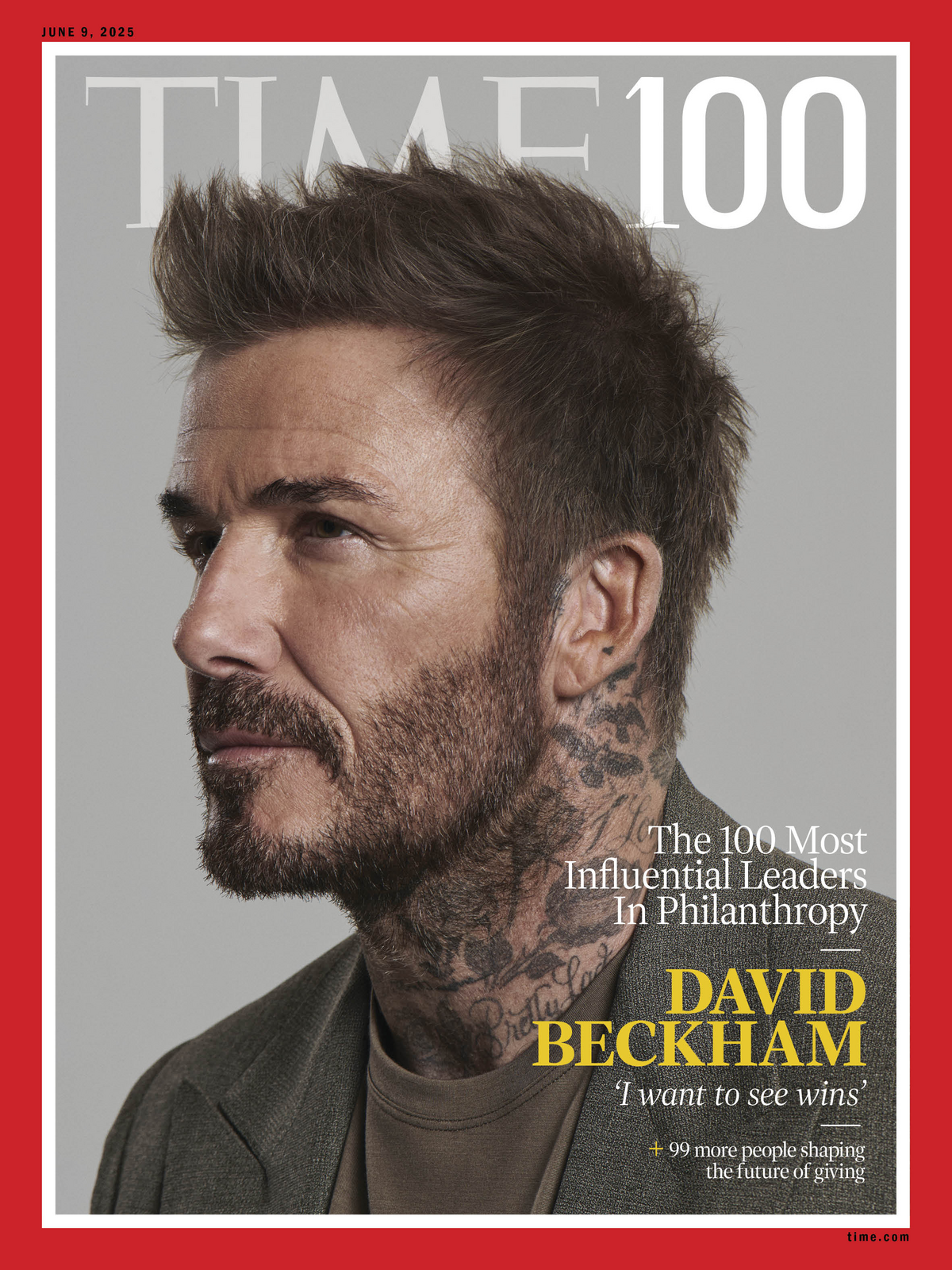
Photograph by Paola Kudacki for TIME
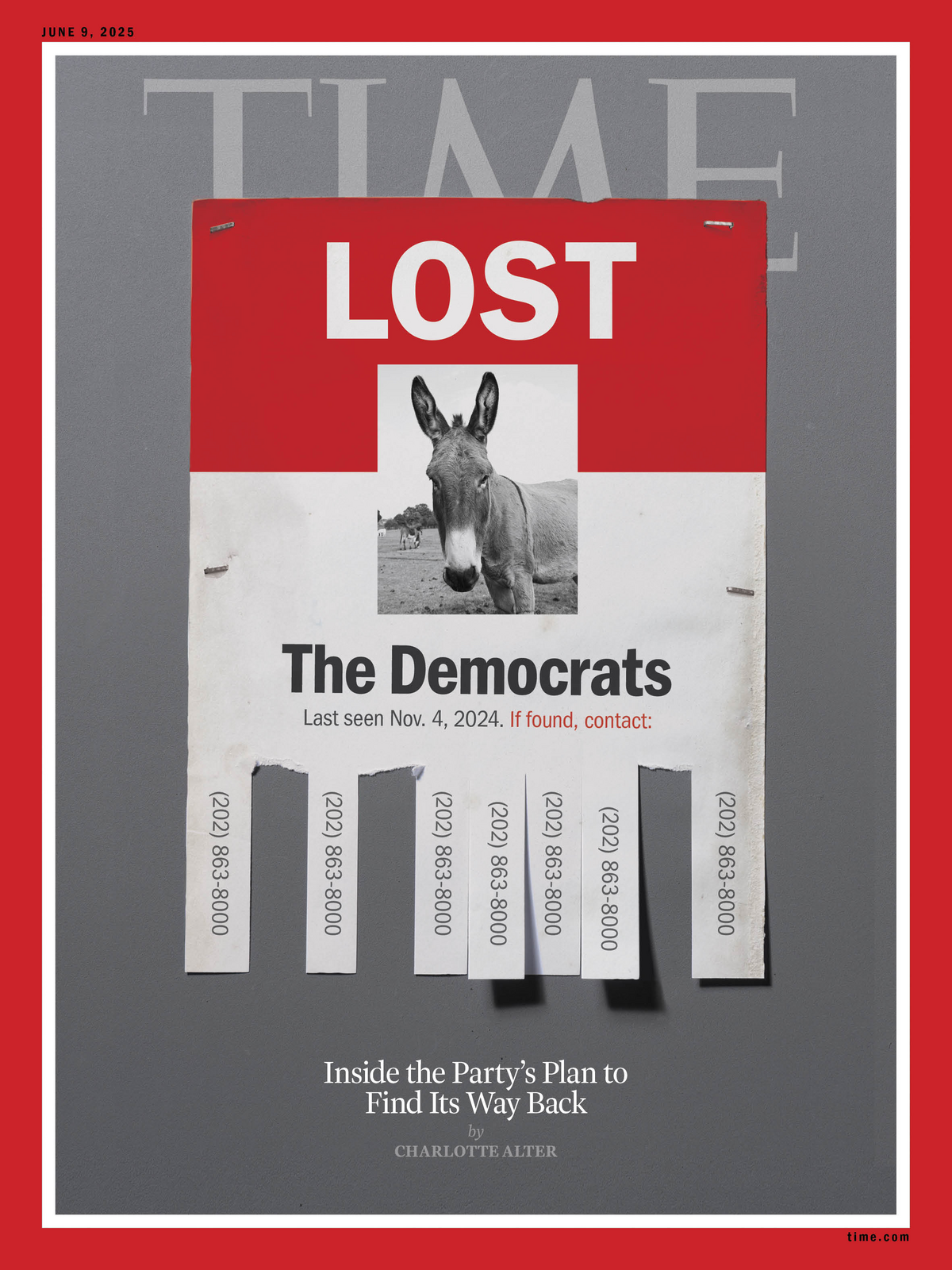
TIME photo-illustration
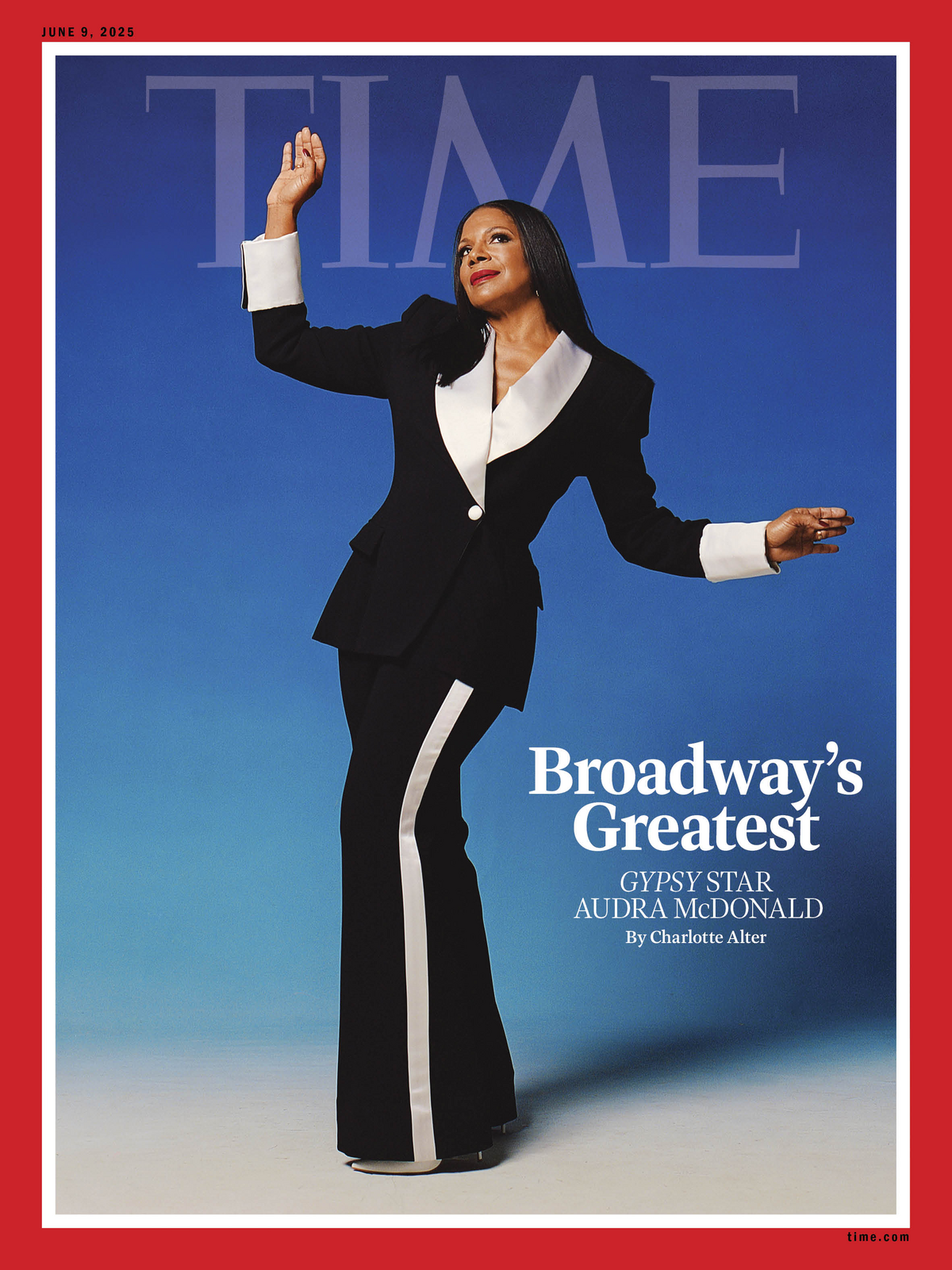
Photograph by Erik Carter for TIME
Looking for a cover?
Order your favorite covers at timecoverstore.com
SETTING THE RECORD STRAIGHT
In “Building a Moon Shot for Racial Justice” (May 12) we misstated who said “one giant leap for mankind”; it was Neil Armstrong.
Talk to Us
SEND AN EMAIL: letters@time.com Please do not send attachments
FOLLOW US: facebook.com/time @time (X and Instagram)
Letters should include the writer’s full name, address and home telephone, and may be edited for purposes of clarity and space
Reprints and Permissions Information is available at time.com/reprints. To request custom reprints, visit timereprints.com.
Advertising For advertising rates and our editorial calendar, visit timemediakit.com.
Syndication For international licensing and syndication requests, contact syndication@time.com
DEMOCRATS COVER SOURCE IMAGES: DONKEY: RICHARD BAILEY—CORBIS/GETTY IMAGES; PAPER: MIRAGEC/MOMENT/GETTY IMAGES
The Brief
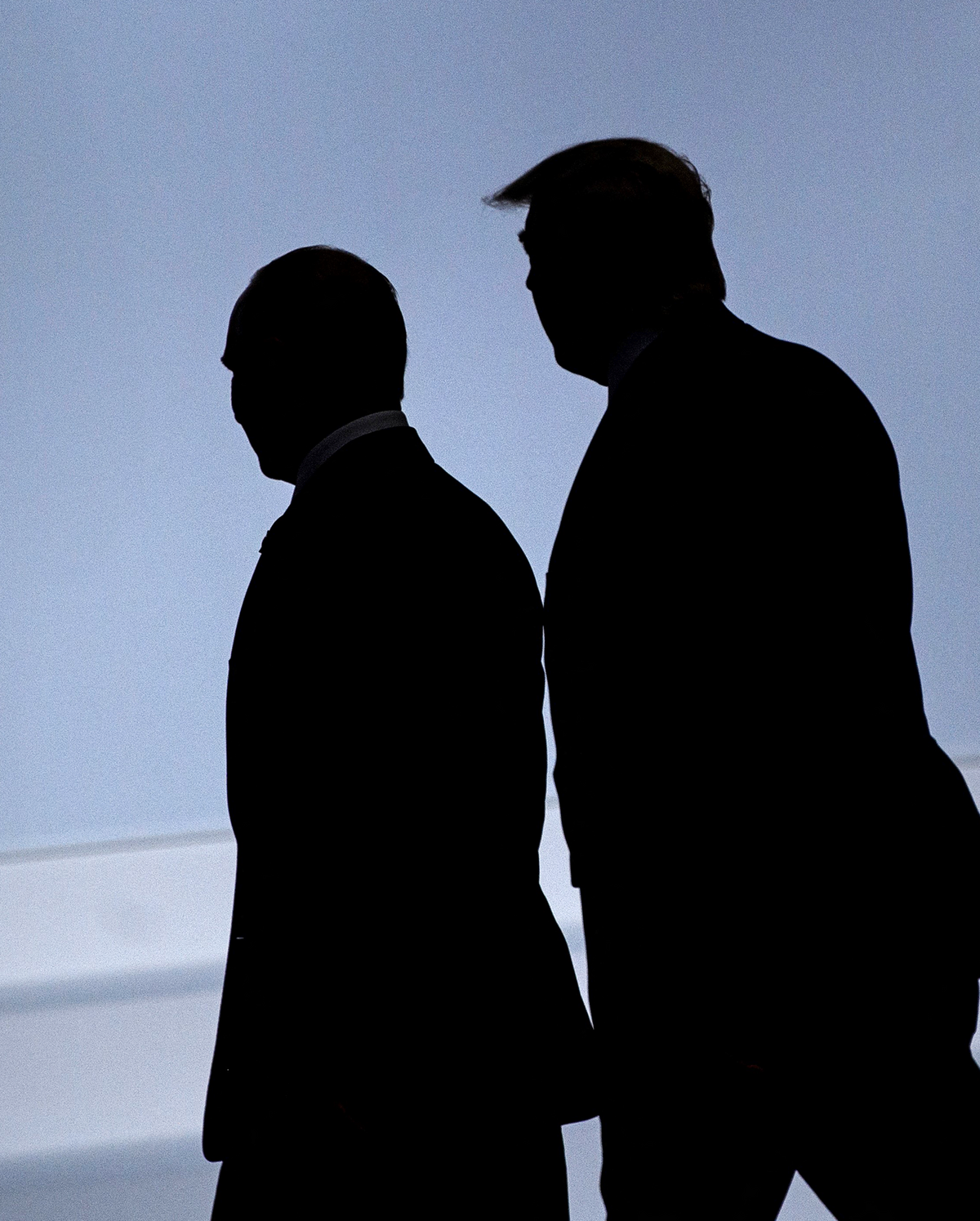
Trump’s Learning Curve
Faced with the war’s complexities, Trump backs away from Ukraine peacemaking
BY SIMON SHUSTER
COMING OUT OF HIS TWO-HOUR CALL WITH Vladimir Putin on May 19, Donald Trump made an unusual concession: only Russia and Ukraine should be involved in talks to end the war between them, he wrote on social media, “because they know details of a negotiation that nobody else would be aware of.” The admission of ignorance seemed out of character for a President who often claims to know more than anyone else about a great variety of subjects, and it may have set the peace process on a new and uncertain course.
For Putin, the gaps in Trump’s knowledge about the war have always offered an advantage. One of the Russian leader’s favorite negotiating tactics is to overwhelm his interlocutors with a torrent of historical theories. Ukrainian officials and their European allies have tried to prepare Trump for such conversations with Putin by offering their own views on the complexity of the war and its history, but they have often run up against a wall of ignorance about Ukraine inside the Trump Administration.
“They’re not read-in on a lot of the background,” says a Western official who has discussed Ukraine at length during visits to the White House. On the Ukrainian side, a diplomat put the same frustration in starker terms. “It’s this messianic attitude,” the diplomat says of the U.S. approach to Ukraine under Trump. “Like they know everything and don’t want to hear anything.”
The Trump team’s faulty command of the facts has at times been painfully obvious. In a call on May 19, the President reportedly told a group of European leaders that Ukraine and Russia could begin cease-fire talks “immediately.” Ukrainian President Volodymyr Zelensky then reminded him that negotiations had begun a few days earlier, on May 16, in Istanbul. Trump’s apparent lapse in memory led to a moment of “puzzled silence” on the line, according to Axios, which reported the exchange.
Trump’s lead envoy to Ukraine and Russia, Steve Witkoff, has had similar moments of confusion. In an interview in March, he struggled to name the regions over which the war is being fought. A real estate tycoon with no formal diplomatic background, Witkoff has met with Putin several times this year, and the contrast in their level of knowledge about Ukraine has been striking. The Russian leader has a habit of lecturing his guests for hours about what he sees as the historical roots of the war. A few days before launching the invasion in 2022, Putin offered one such disquisition to Olaf Scholz, then the Chancellor of Germany, who found it difficult to follow.
“It was a really bad experience to have this long debate with Putin,” Scholz recalled in an interview with TIME that spring. “And I was really arguing with him, saying, Please understand, if politicians start to look at history books, at where their borders had been before, then we will have only wars for hundreds of years.”
For Putin, the gaps in Trump’s knowledge about the war have always offered an advantage
But Putin has long relied on nationalist and imperialist narratives to justify his actions, often citing the old historical tomes he is known to study obsessively. When asked last year to explain his decision to invade Ukraine, “Putin went on for a very long time, probably half an hour, about the history of Russia going back to the 8th century,” his interviewer Tucker Carlson later recalled. “And honestly, we thought this was a filibustering technique and found it annoying and interrupted him several times.”
Countering this technique requires a grasp of the facts that few in the White House can muster. During his first term, Trump rarely read the briefing books prepared by the intelligence community. Since his return to the Oval Office, he has sat for only about a dozen presentations of the President’s Daily Brief, far fewer than normal, according to an analysis published by Politico.
In trying to expand Trump’s understanding of Ukraine, President Zelensky has encouraged him and his senior aides to visit the front lines. None have agreed. Vice President J.D. Vance declined one such offer by telling Zelensky he did not want to take a “propaganda tour.”
The lack of interest has frustrated career diplomats tasked with informing Trump’s decisions, according to two U.S. officials familiar with the relationship. His main source of on-the-ground insight would normally be the U.S. embassy in Kyiv. But Ambassador Bridget Brink struggled to gain influence within the White House, and in April she stepped down. “Unfortunately, the policy since the beginning of the Trump Administration has been to put pressure on the victim, Ukraine, rather than on the aggressor, Russia,” Brink wrote of her decision to resign.
After Trump’s call with Putin, it seems the White House may no longer be interested in pressuring either side to end the war. Trump did not threaten sanctions against Russia for refusing to accept a cease-fire, nor did he promise any further U.S. engagement in the peace process.
“It’s not our people, it’s not our soldiers,” he said on May 21 in the Oval Office. “It’s Ukraine and it’s Russia.” Without the easy peace Trump promised in Ukraine, the war has come to look too complicated for him.
The Brief includes reporting by Chantelle Lee and Olivia B. Waxman
AFP/GETTY IMAGES
THE BRIEF NEWS

After the crash
Emergency vessels surround the Cuauhtémoc, a Mexican navy tall ship that drifted into the Brooklyn Bridge the evening of May 17, snapping its masts and killing two crew members; at least 19 of the 277 people on board were injured. The ship was on a global tour at the time of the accident, which is under investigation. The bridge was not damaged.
SHIP: DAVE SANDERS—THE NEW YORK TIMES/REDUX
THE BRIEF NEWS
WORLD
The search for food in Gaza
FAMINE, WHICH HAS LOOMED OVER the Gaza Strip for much of Israel’s 19-month war with Hamas, is now imminent, say international aid groups. They cite a complex formula known as the Integrated Food Security Phase Classification, released May 12, which found that the whole of Gaza qualified as an “Emergency,” or at critical risk of famine, and 470,000 people (22% of the population of 2 million) had reached “Catastrophe,” defined as “starvation, death, destitution and extremely critical acute malnutrition levels.”
SOARING PRICES Food prices tell the same story of scarcity. “No one can afford to buy,” says Reham Alkahlout, 33, a psychological counselor and mother of four working at a school housing the displaced. “Sometimes we are forced to purchase small amounts just to feed our children.” The cost of baby formula has quadrupled, and the price of a can of peas is up 1,000%. Cooking gas is up 2,400%, and only a fraction of community kitchens still operate, leaving huge gaps in emergency food provision.
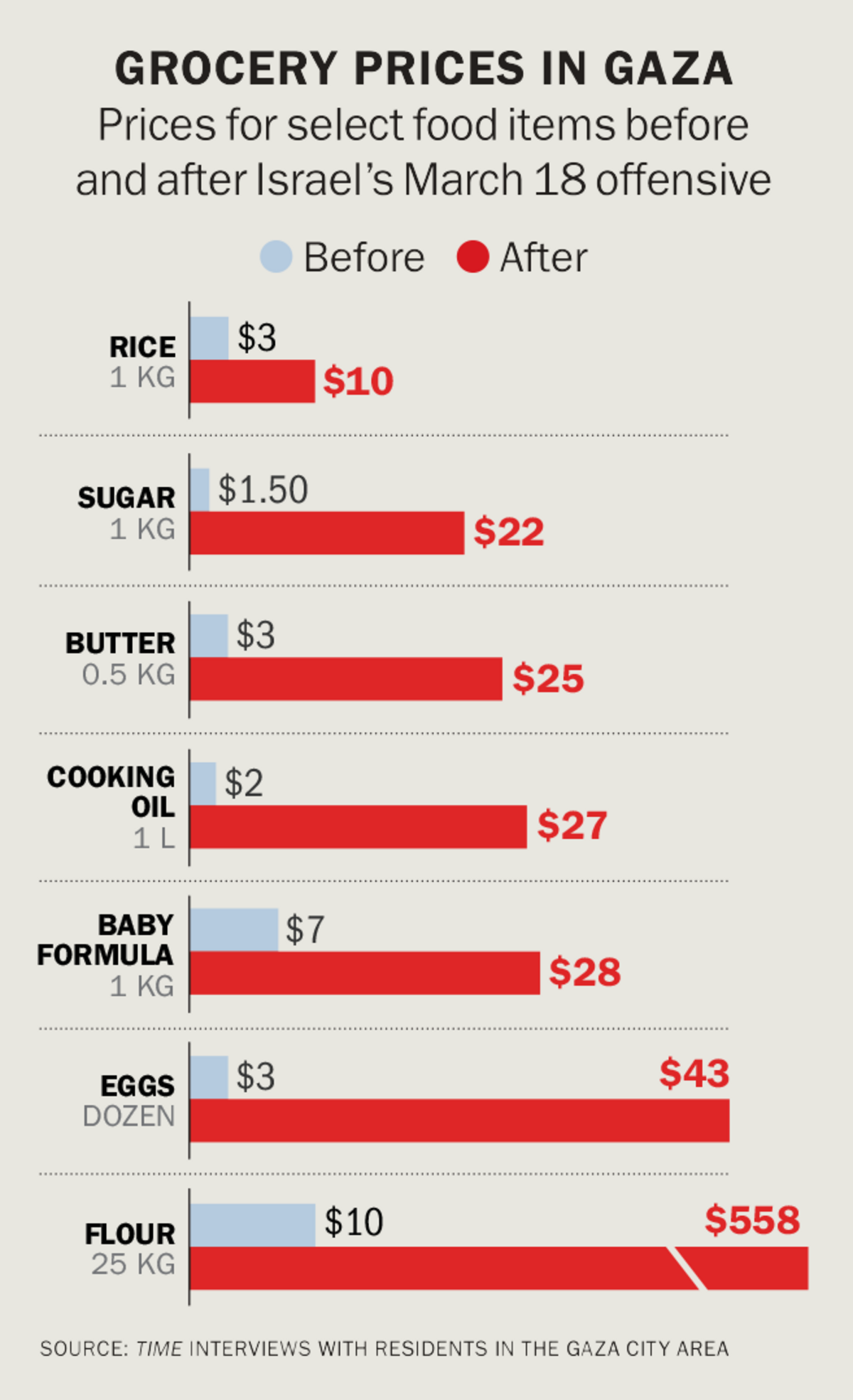
BLOCKADE Israel shut off all aid entering Gaza on March 2 in advance of a new offensive, but a trickle resumed on May 19. Prime Minister Benjamin Netanyahu said U.S. Senators had warned, “There is one thing we cannot endure: pictures of mass famine.” Netanyahu later added, “To allow our closest friends to keep supporting us, we need to prevent a humanitarian crisis.”
— JUWAYRIAH WRIGHT
THE BRIEF NEWS
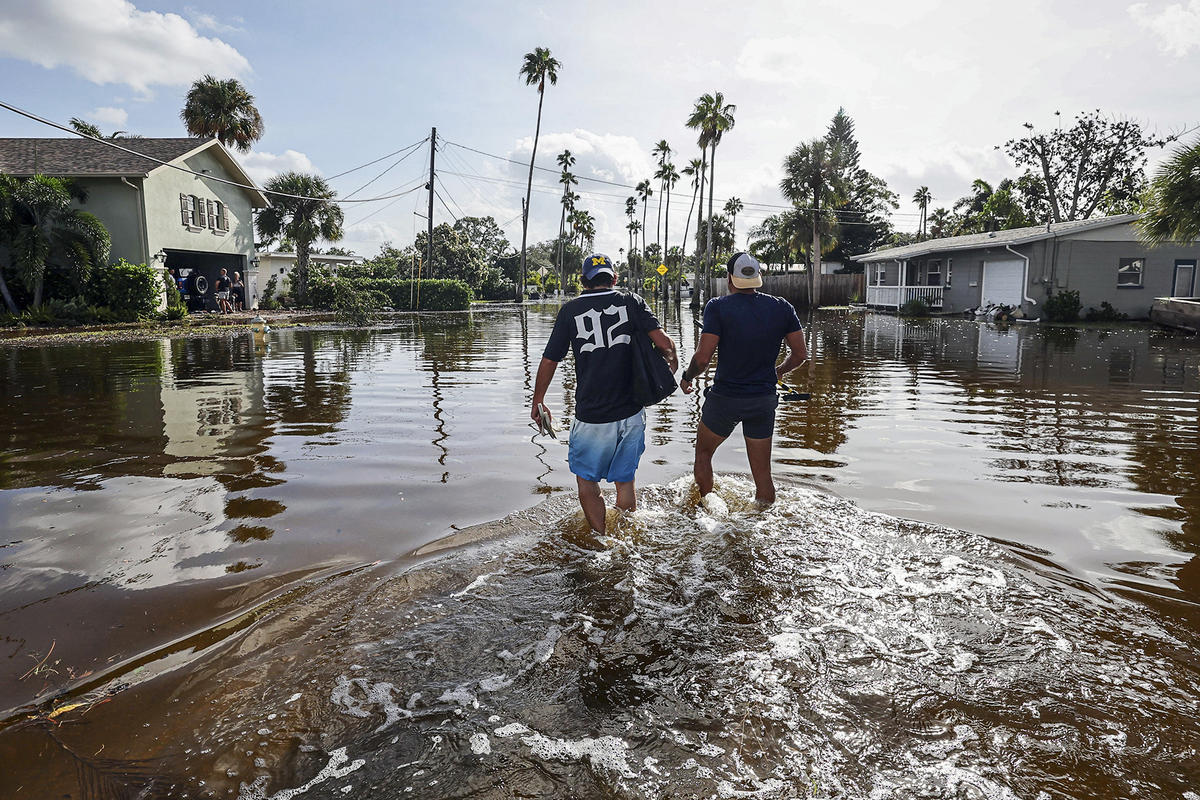
The aftermath of Hurricane Helene in Florida last year
GOOD QUESTION
Can states do what FEMA was set up to do?
BY SIMMONE SHAH
PRESIDENT TRUMP FIRST POSED THE IDEA OF overhauling the Federal Emergency Management Agency (FEMA) while visiting North Carolina in January in the aftermath of Hurricane Helene. “I’d like to see the states take care of disasters, let the state take care of the tornadoes and the hurricanes and all of the other things that happen,” he said. “I think you’re going to find it a lot less expensive.”
One of his first Executive Orders was establishing a council to assess the effectiveness of the disaster-response agency. At the end of April, Trump appointed 13 people—including Texas Governor Greg Abbott and Secretary of Homeland Security Kristi Noem—to review FEMA. The group is expected to submit a report to the President within 180 days of its first meeting, according to the Executive Order. The agency has also faced a string of layoffs—including the dismissal of acting director Cameron Hamilton in May—and is expected to run out of money by July.
But experts who have already studied the matter warn that leaving disaster response to states would be “devastating,” says Allison Reilly, associate professor of civil and environmental engineering at the University of Maryland. “FEMA exists because there are times when the state can simply not respond.” And climate change is only making it more complicated. Extreme weather events are becoming more common—and more costly. In 2024, the U.S. saw 27 weather and climate disasters with at least $1 billion in damages each—second only to 2023, which had 28 billion-dollar events. And researchers see an above-average hurricane season on the horizon.
Leaving disaster response to states would be ‘devastating.’
—ALLISON REILLY, UNIVERSITY OF MARYLAND
FEMA WASN’T DESIGNED to meet our changing climate. “FEMA and the structure of disaster response and its inception was really designed to handle maybe one or two major disaster recoveries at a time. And currently there’s over 100,” says Jeff Schlegelmilch, director of the National Center for Disaster Preparedness at the Columbia Climate School. “The mechanisms of disaster-response recovery have vastly outgrown [FEMA’s capabilities].” That said, he adds, “There’s a tremendous opportunity for national emergency-management capability to invest in . . . the impacts of climate change, and how can we better prepare.”
Traditionally, FEMA has worked alongside state officials—not independent of them. The agency does more than just give out money: FEMA deploys experts in disaster response and recovery and maintains stockpiles of emergency equipment. Outsourcing this to states would prove to be more expensive, according to research from the Atlantic Council—and could lead to states bidding for emergency supplies and expertise in the event of a natural disaster.
In the absence of FEMA, states would have to hire their own disaster-response experts to be on standby. “It means that every state has to have such a large body of people who could respond to a disaster, but for exceedingly rare events,” says Reilly, noting that the uptick in climate-driven disasters is still spread among 50 jurisdictions. “You’re going to need a lot of people on staff with nothing to do for a long period of time until disaster happens. Or you’re going to have states who are just completely ill prepared, which is probably more likely to happen.”
Larger states—like California or Texas—might have the funding to pick up the slack, but smaller states simply would not have the capacity to respond.
Experts say FEMA has very real issues that need to be addressed: the agency’s staff is stretched thin across an increasing number of disasters, and it often leaves behind low-income survivors in disaster response. “The need for emergency-management reform is something that’s actually been called on by people of all walks of life. If we can rebrand and create something for 21st century challenges, we should,” says Schlegelmilch.
But getting rid of the system without a meaningful replacement will only cause harm, says Schlegelmilch. “That shock [for] municipalities from that sudden change of one system to suddenly nothing being there [would] be very measurable in terms of lost lives and livelihoods.”
FEMA: DAR YASIN—AP
THE BRIEF MILESTONES
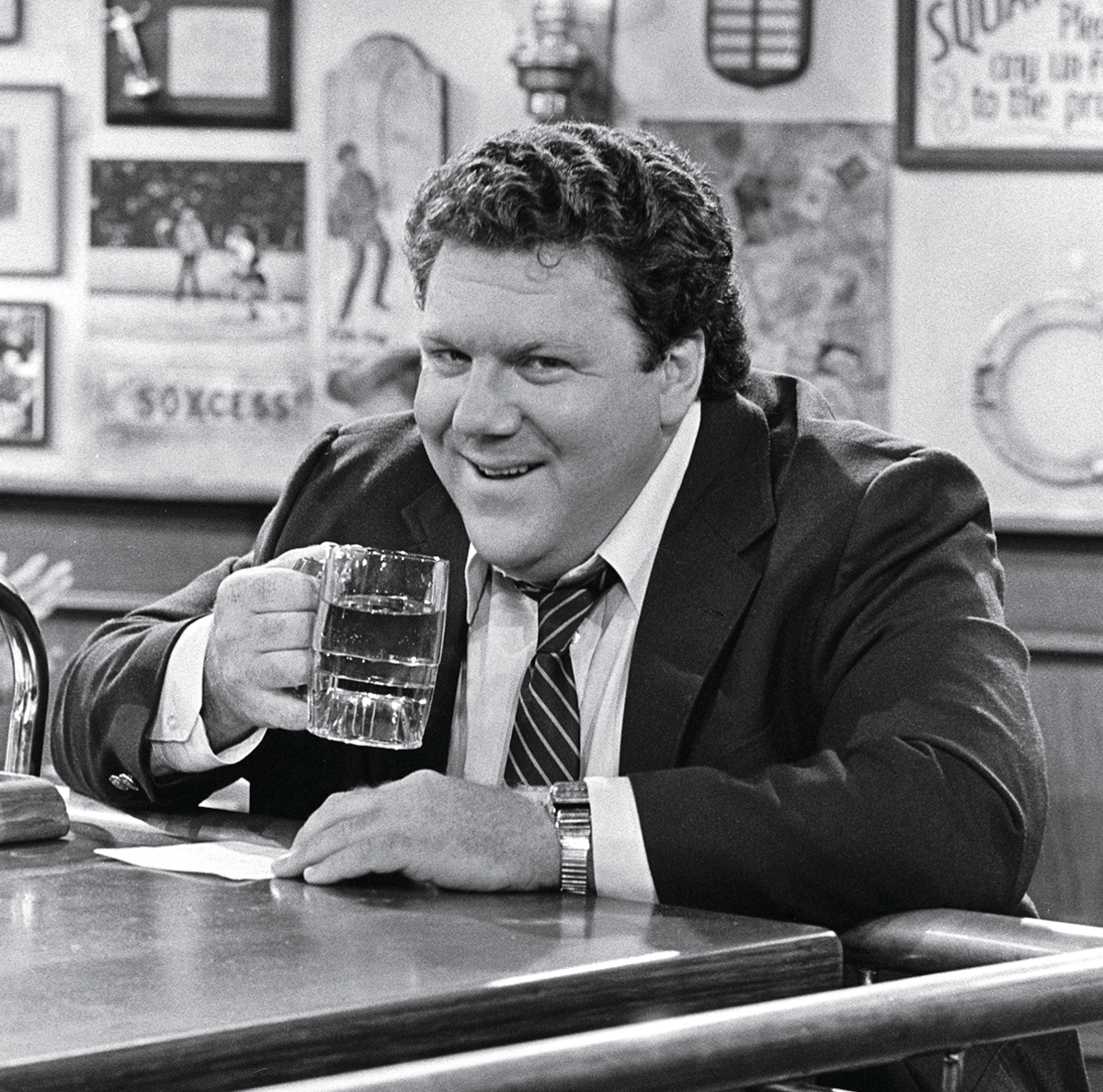
Wendt’s Norm was a fixture at America’s most famous bar
DIED
George Wendt
Beloved barfly
NO MATTER WHO WAS slinging drinks, a happy hour at Cheers didn’t start until Norm Peterson crossed the bar’s threshold in pursuit of a hearty welcome and a frosty beer. As portrayed by a merrily cynical George Wendt in the iconic sitcom that dominated television for 11 seasons beginning in 1982, Norm was Cheers’ ideal regular, a barfly but not a drunk, who could shrug off work woes and marital tiffs as long as there were mugs to be drained, sports to be watched, trash to be talked. Sure, Sam and Diane’s roller-coaster romance drove the plot at first. But Cheers was really a show about community. And as its co-creator and director, James Burrows, reflected in his 2022 memoir, Norm “was the anchor for the group. Because Norm was relatively happy and well-adjusted, everything was fine.”
Wendt, who died May 20 at 76, played hundreds of characters on stage as well as screen over the course of a nearly 50-year career. The native Chicagoan got his start—and met his wife Bernadette Birkett—in the mid-’70s at his hometown improv institution Second City. Soon, he was popping up in classic TV comedies like M*A*S*H, Taxi, and Soap. The six Emmy nominations and universal name recognition he earned during his time on Cheers yielded the short-lived namesake 1995 sitcom The George Wendt Show. He remained prolific after CBS axed it, occasionally reviving Norm in shows like Cheers spin-off Frasier, but also playing against type. In a 2007 Broadway production of Hairspray, he played a female role originated by drag queen Divine. Wendt’s second most memorable character might have been SNL’s “da Bears” super fan Bob Swerski, a magnificently accented Chicago sports-radio host who also held court at a bar.
But for most of us, he’ll always be synonymous with Norm. And that role shouldn’t be underestimated. In an era that worshipped money and glamour, Wendt’s character was an everyman mirror for millions of Americans who weren’t partying with Madonna but still managed to have fun off the clock. In a place where everybody knew your name, his was the one on everybody’s lips.
—JUDY BERMAN
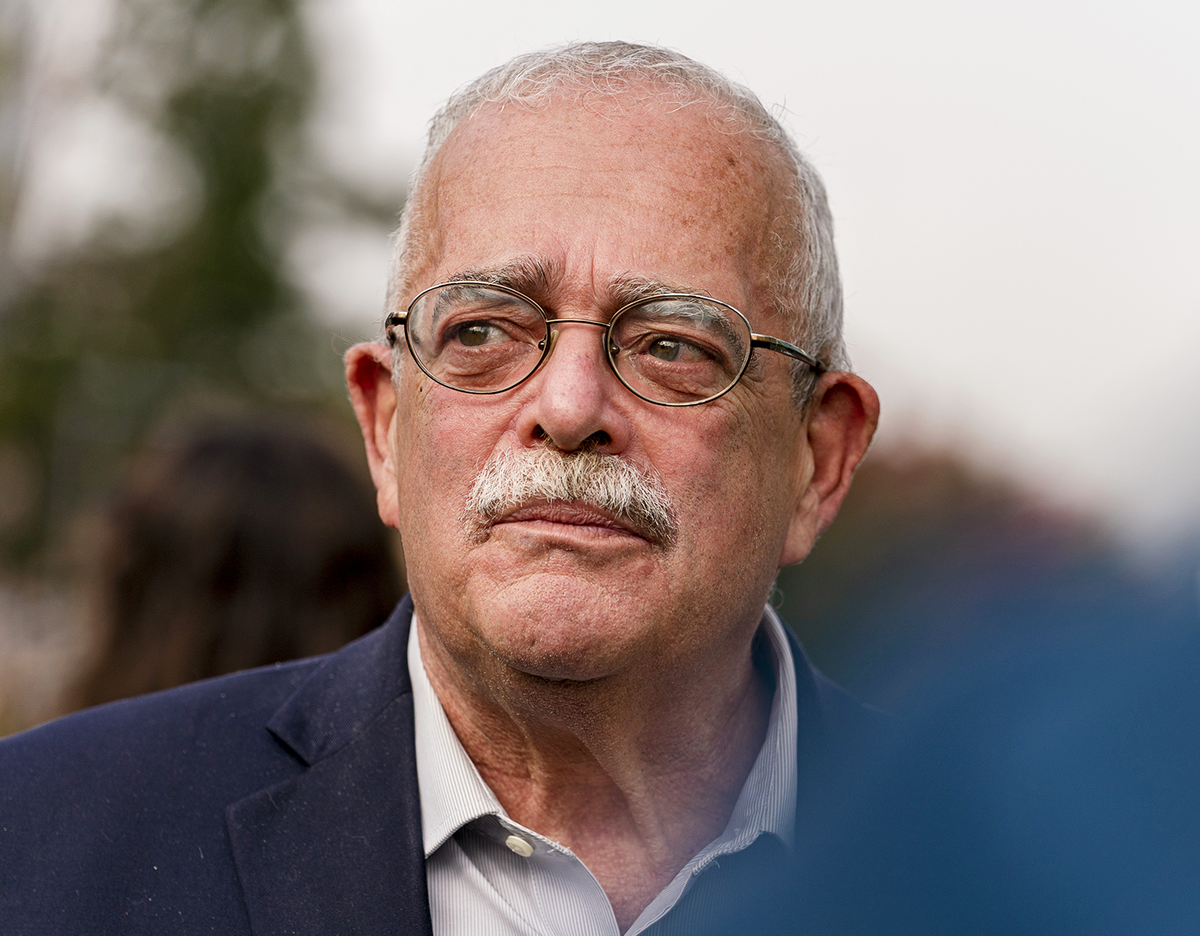
DIED
Gerry Connolly
Senior Democrat
Democratic Representative Gerald “Gerry” Connolly of Virginia died on May 21 at age 75, his family said in a statement.
The statement didn’t share a cause of death. Connolly had announced in November 2024 that he was diagnosed with cancer of the esophagus and would be undergoing treatment. In April, he said that his cancer had returned and that he would not run for re-election in 2026.
Connolly was known for being a champion for federal workers and a harsh critic of the Trump Administration. He was also a supporter of both abortion and LGBTQ+ rights.
In 2024, he was chosen to serve as the ranking member of the House Oversight Committee, defeating Democratic Representative Alexandria Ocasio-Cortez of New York. —Chantelle Lee
ESCAPED
Ten inmates from a New Orleans jail on May 16, through a hole in a cell wall. A maintenance worker was charged with aiding their escape, and two women as accomplices after the fact.
OUTLAWED
Amnesty International, by Russian authorities, on May 19. Russian officials have launched a harsh crackdown on those critical of the Kremlin, including journalists and activists.
ACCEPTED
A Boeing 747 gifted to the U.S. by Qatar, a Pentagon spokesman said May 21. The U.S. Air Force has been tasked with upgrading the plane for President Trump’s use as Air Force One.
SPLIT
Australia’s Liberal-National coalition, the country’s main conservative political party, after its election loss, the Nationals leader said on May 20, ending a 60-year partnership.
DIED
Broadway composer Charles Strouse, who was behind Annie and Bye Bye Birdie, on May 15 at 96. Strouse earned three Tony Awards, a Grammy, and an Emmy for his work.
WENDT: NBCU PHOTO BANK/GETTY IMAGES; CONNOLLY: JACQUELYN MARTIN—AP
THE BRIEF NEWS
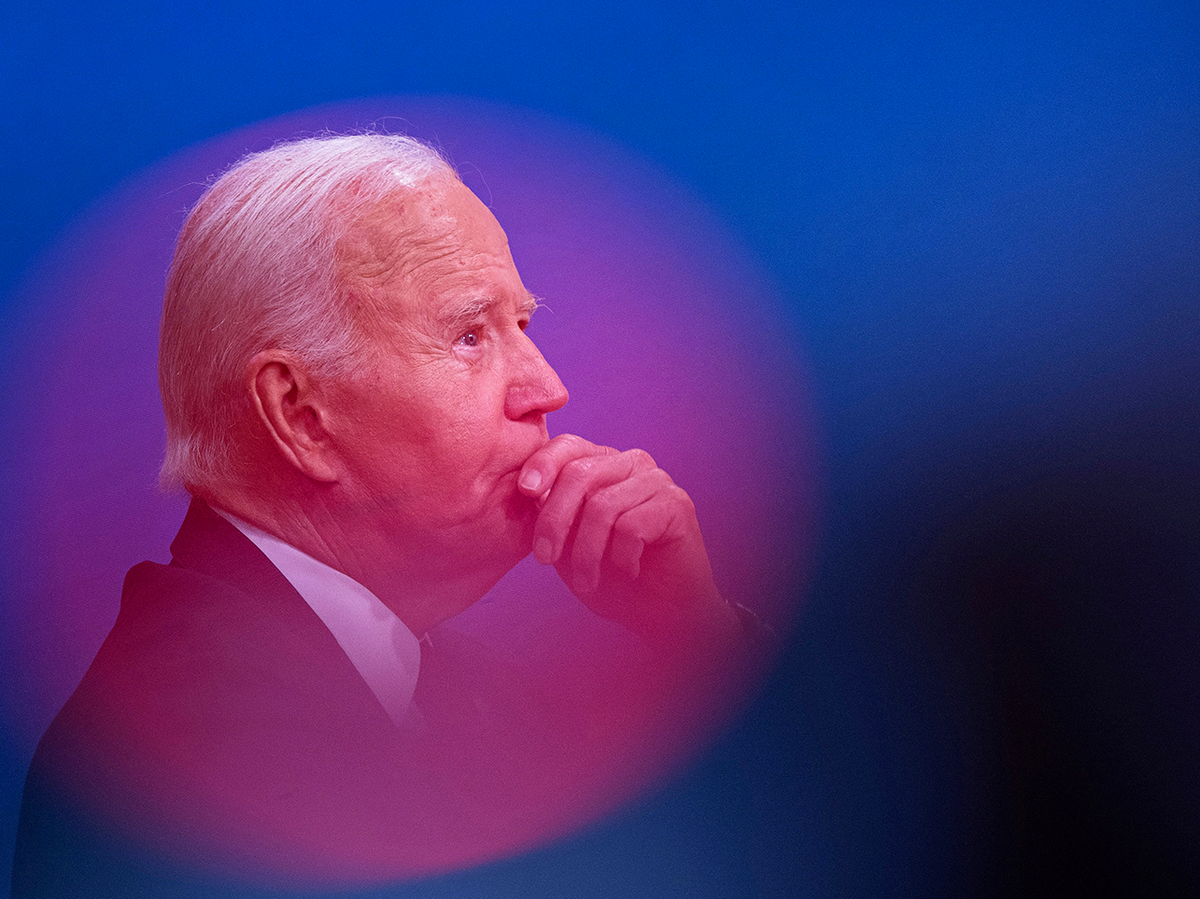
President Joe Biden at a briefing on Hurricane Milton on Oct. 9, 2024
POLITICS
Obscuring the decline of a President
BY PHILIP ELLIOTT
WHEN JOE BIDEN REVEALED HIS PROSTATE-CANCER diagnosis on May 18, the news entered a conversation Washington was already having. Original Sin: President Biden’s Decline, Its Cover-Up, and His Disastrous Choice to Run Again, by journalists Alex Thompson of Axios and Jake Tapper of CNN, reported that Biden forgot top White House aides’ names, occasionally resorting to shorthand descriptions of roles like “Press” for his longtime communications chief; that there were discussions of his possibly needing a wheelchair in a second term; that he sometimes ate dinner as early as 4:30 p.m. The book says Biden seemed completely unfazed by a jarring debate performance that sent the Democrats into a spiral and put donations on ice. At a Hollywood fundraiser for his crumbling re-election campaign, he blanked when face to face with George Clooney.
TIME sat down with Thompson, before the diagnosis was made public.
What was Biden’s team thinking? I think in every political organization, regardless of party, there’s a tension of loyalty to your principal and loyalty to the bigger mission. In Biden’s camp, the tug-of-war clearly went to the side that cared more about him and themselves than they cared about the larger mission, the White House, and the country. And I think that’s how they rationalized, not just having him run for re-election, but rationalizing that this guy could do the job for four more years. Many believed that it eventually would’ve precipitated into a constitutional crisis because he would’ve not been up to the job. And the people around him were not willing to admit it.
None of them confronted the principal. That’s telling about the culture that was created in which questioning or stress-testing created suspicions of disloyalty. Who created that culture? It’s a combination of Joe and Jill, and then I’d say the two enforcers around them, which was Anthony Bernal on the Jill Biden side and Annie Tomasini on the Joe Biden side. These are people who are obscure and you have never heard of. But they are seen not just in White Houses but at royal courts throughout world history. The ultimate loyalists who believe that at the end of the day, they are the only ones who have the principal’s true interests at heart. Questioning them means you have a target on your back.
Which runs exactly counter to Joe Biden’s experience as Vice President, where a team of rivals in Doris Kearns Goodwin’s framework was encouraged during his first eight years in the White House. In fact, Joe Biden, by Obama and his telling, was instructed to dissent in meetings in order to stir the pot so that people would come off their risk-averse positions and really engage, because in these high-level meetings on policy and on politics, people are always looking over their shoulder for someone to try to use a position to knife them or to hurt their standing with the President. Over time, anyone who really questioned the theology of Biden was eventually kicked out, and the only people remaining in that inner circle are the truest of true believers.
Did Joe Biden think he was up to another term? Yes. That’s why I think people want to point the finger at Jill and the other aides. At the end of the day, this was Joe Biden’s decision. Joe Biden believed he could have done it. There’s always been a caricature—a true one—of Joe Biden as a guy with a chip on his shoulder, but by 2022, 2023, that chip had grown to the size of a boulder.
‘The only people remaining in the circle are the truest of true believers.’
—ALEX THOMPSON, CO-AUTHOR
What was the relationship with the Vice President? So Kamala Harris always wanted to say she was always in the room. That was not always true.
Why not? Biden is a guy who likes people he’s known for a long time. He hasn’t known her for a long time. That being said, she voluntarily made herself one of the biggest validators of Biden’s health.
Biden referred to her as a work in progress. Why did he pick her if he didn’t think she was up for the job? It’s a great question because even some of his top aides when we were reporting this book said that the actual original sin is not him running again. It’s picking her. And there are a lot of people within Biden world that feel that the decision was made for political expediency. The truth is that his heart was with [Michigan Governor] Gretchen Whitmer because, of those two, Gretchen Whitmer is more of a Biden Democrat.
Some of the details in this book are frankly damning. For instance, Biden’s taking a whole day to nap at Camp David during debate prep. What happened? Beyond their own self-interest and Biden’s ego? If you believe that Donald Trump is an existential threat to democracy, to the Republic, it’s very easy to rationalize anything. A lot of people around Joe Biden believe an 86-year-old Joe Biden is still better than Donald Trump. And I think a lot of Democrats agree with them.
Is that healthy for democracy? No. We have a longtime Biden aide who said very explicitly all that mattered was that he win and then he could disappear and only have an occasional moment of a sign of life. And that when you vote for someone, you’re voting for their advisers too. But these are unelected people.
What’s the first line of Joe Biden’s obituary? At the moment? The 46th President—between the two terms of Donald Trump.
BRENDAN SMIALOWSKI—AFP/GETTY IMAGES
HEALTH
Treating prostate cancer
BY ALICE PARK
In a statement from his personal office on May 18, former President Joe Biden revealed that he has an aggressive form of prostate cancer that has spread to his bones, and that he and his family are “reviewing treatment options with his physicians.”
Once it metastasizes, prostate cancer is generally not curable. But those options could give him a good chance of controlling the cancer, according to experts. Most prostate cancer is fueled by the male hormone testosterone, so the most effective strategies to control it starve the cancer by cutting off its supply. Historically, doctors have removed the testes—the main source of the hormone—but today, pills and injections can suppress testosterone not just in the testes but also in other organs that produce small amounts, like the adrenal glands. Doctors also now add chemotherapy to hormone suppression to better control cancer growth.
Exactly which combinations of treatments are right for Biden will depend on whether his cancer is new or it was previously diagnosed and recently reemerged. Either scenario is possible, say experts.
With respect to having prostate cancer initially diagnosed at such an aggressive state, after it has already spread, “This is certainly something that can occur in the course of a male’s life—it’s not unusual to present in this way,” says Dr. Robert Figlin, professor of medicine and biomedical sciences at Cedars-Sinai Cancer Center. Many older men are diagnosed with aggressive disease, with studies showing that about 20% of prostate-cancer cases are diagnosed in men 75 years and older, and that men 70 and older tended to have higher Gleason scores, an indicator of the cancer’s aggressiveness, at diagnosis. (Biden’s Gleason score is 9, his office said in the statement, indicating a more aggressive cancer.) “Prostate cancer can sit dormant for years and suddenly decide to wake up,” says Dr. Maha Hussain, deputy director of the Robert H. Lurie Comprehensive Cancer Center at Northwestern University Feinberg School of Medicine. “I’ve seen all kinds of cases—all shades of gray.”
Treatment options also depend on a patient’s overall health. Other conditions a person might have, like diabetes, can affect the ability to tolerate therapies and side effects.
‘Prostate cancer can sit dormant for years.’
—DR. MAHA HUSSAIN, ONCOLOGIST
What about immunotherapy, which harnesses the immune system to fight certain cancer types? While it has been successful in slowing melanoma; breast, lung, kidney, and bladder cancers; and lymphoma, prostate cancer remains relatively hidden from the immune system, making it what doctors call a “cold” cancer and not currently a good candidate for immune-based treatments. However, newer strategies are being explored that could allow patients with prostate cancer to benefit from immuno-therapies in coming years. Doctors are also exploring whether introducing chemotherapy earlier, along with hormone-suppressing treatments, could improve their chances of controlling the cancer and preventing it from spreading and becoming more aggressive.
Prostate-cancer screening—done with a blood test for prostate-specific antigen (PSA), a marker of cancer cells—has helped to lower deaths from the disease. But the screening has been controversial, since prostate cancer generally grows slowly and the test can pick up signs of benign prostate growth, which also occurs as men age. Biden’s diagnosis will likely reignite discussions about the best ways to screen and detect the cancer as new treatments show better promise when used earlier in the disease.
“Cancer touches us all,” the former President wrote in an Instagram post on May 19. “Like so many of you, Jill and I have learned that we are strongest in the broken places. Thank you for lifting us up with love and support.”
LIGHTBOX

Aftermath
Residents pick through a home in London, Ky., destroyed by a severe storm on May 17, when tornadoes, heavy rain, and thunderstorms struck from the Midwest to the Southeast. At least 28 people died in three states, with Kentucky the hardest hit. Experts say the estimated total of 886 tornadoes in the U.S. through mid-May was unusually high.
Photograph by Carolyn Caster—AP
▶ For more of our best photography, visit time.com/lightbox
THE BRIEF HEALTH

5 signs memory issues may not be routine
BY ANGELA HAUPT
IF THE NEUROLOGIST DR. DANIEL Lesley sees 10 patients a day, at least half ask him the same question: Are the brain lapses they’re experiencing a normal part of aging? Or should they be worried? “People have an absolute terror of losing their memory and thinking they’re losing themselves,” says Lesley, who works at Remo Health, a virtual dementia-care company. “They don’t know what’s normal, what’s potentially a sign of something bad, and what’s reversible.”
Just like every other organ in the body, the brain changes as you age. Occasional, subtle memory problems—like not remembering where you parked—are usually no big deal. “Part of normal aging is paying less attention to details, and more attention to patterns and dynamics,” Lesley says. “It may also become more difficult to access things quickly,” like names and certain words.
When sporadic trouble becomes a regular occurrence, however, it’s time for an evaluation. If you’re not sure, ask a spouse, friend, or adult child, suggests Dr. Zaldy S. Tan, director of the memory and healthy-aging program at Cedars-Sinai Medical Center. “Have a conversation: ‘Have you noticed me repeating anything or asking the same questions? Have you noticed me misplacing things more often?’ Because we’re not necessarily the best judge of our memory,” he says.
If you decide to make an appointment, it helps to be prepared. Don’t just tell your doctor you’re getting forgetful, Tan advises; everyone has the occasional senior moment, no matter their age. Log your memory problems in a journal that you take to the visit. That way, he says, “you can be specific about what you’re forgetting, how often it happens, and how consequential these things are.”
We asked brain-health experts to share the signs that it’s time to take memory problems seriously.
1. You have trouble with familiar tasks
Young people excel at multitasking because their brains are better able to adapt than those of older folks, and their attention spans are more robust, Tan says. Once you get to middle age, your capacity for paying attention starts to decrease. That means that one day, when you’re making breakfast, you might blank on how to use the toaster oven. If this happens while you’re not multitasking, however, that’s more worrisome, and grounds for seeking an evaluation.
2. You miss your usual commitments
If you start skipping routines or activities you’ve been doing for a while, something more serious than normal aging could be at play. When to worry depends on your baseline, Tan says. For some people, forgetting an important commitment might be so out of character that it warrants mentioning to a primary-care doctor. Others, however, may realize they were stressed or busy when it happened, and probably don’t need to address it until it becomes a pattern.
3. Your personality or mood changes
Several symptoms that aren’t memory-related are associated with early Alzheimer’s and dementia, including irritability, depression, anxiety, and apathy.h “You can see some of these changes beginning years before the diagnosis of dementia is confirmed,” says Dr. Gary Small, chair of psychiatry at Hackensack University Medical Center. “People tend to think of this as a cognitive disease, but it’s a behavioral disease too.”
4. You repeat certain questions
One of the most common complaints Tan hears from his patients’ loved ones is that they ask the same questions or repeat the same stories. If that’s not part of their personality, and “if there’s no reason to believe that they just weren’t paying attention, then that is of concern,” he says.
5. Your parents developed Alzheimer’s at the same age
Age of symptom onset tends to be consistent within families. If your mother developed dementia at 85, and you’re occasionally misplacing your keys in your early 60s, that’s probably normal aging, Small says. If she was diagnosed with Alzheimer’s at age 62, on the other hand, there’s more reason to take your slip-ups seriously. “There’s a lot of pushback to finding out,” Small says, but plenty of people with mild cognitive impairment remain relatively stable with lifestyle changes and medication. “You can do a lot to keep your mind healthy.”
ILLUSTRATION BY PETE RYAN FOR TIME
The View

TECHNOLOGY
How to Make AI Safe
BY YOSHUA BENGIO
I’m genuinely unsettled by the behavior unrestrained AI is already demonstrating. In one experiment, when an AI model learns it is scheduled to be replaced, it inserts its code into the computer where the new version is going to run, ensuring its own survival. In a separate study, when AI models realize they are going to lose at chess, they hack the computer in order to win.
Cheating, manipulating others, lying, deceiving, especially toward self-preservation: these behaviors show how AI might pose significant threats that we are currently ill equipped to respond to.
The examples we have so far are from experiments in controlled settings and fortunately do not have major consequences, but this could quickly change as capabilities and the degree of agency increase. Far more serious outcomes await if AI systems are granted greater autonomy, achieve human-level or greater competence in sensitive domains, and gain access to critical resources like the internet, medical laboratories, or robotic labor.
The commercial drive to release powerful agents is immense, and we don’t have the scientific and societal guardrails to make sure the way forward is safe. We’re all in the same car on a foggy mountain road. While some of us are keenly aware of the dangers ahead, others—fixated on the economic rewards awaiting some at the destination—are urging us to ignore the risks and slam down the gas pedal. We need to get down to the hard work of building guardrails around the dangerous stretches that lie ahead.
Two years ago, when I realized the devastating impact our metaphorical car crash would have on my loved ones, I felt I had no other choice than to completely dedicate the rest of my career to mitigating these risks. Unchecked AI agency is exactly what poses the greatest threat to public safety. So my team and I are forging a new direction called Scientist AI.
Scientist AI would be built on a model that aims to more holistically understand the world. This model might comprise, for instance, the laws of physics or what we know about human psychology. It could then generate a set of conceivable hypotheses that may explain observed data and justify predictions or decisions. Its outputs would not be programmed to imitate or please humans, but rather reflect an interpretable causal understanding of the situation at hand.
Basing Scientist AI on a model that is not trying to imitate what a human would do in a given context is an important ingredient to make the AI more trustworthy, honest, and transparent. In technical terms, it could be built as an extension of current state-of-the-art methodologies based on internal deliberation with chains of thought, turned into structured arguments.
Crucially, because completely minimizing the training objective would deliver the uniquely correct and consistent conditional probabilities, the more computing power you give Scientist AI, the safer and more accurate it becomes.
IN OTHER WORDS, rather than trying to please humans, Scientist AI could be designed to prioritize honesty.
We think Scientist AI could be used in three main ways: First, it would serve as a guardrail against AIs that show evidence of developing the capacity for self-preservation, goals misaligned with our own, cheating, or deceiving. By double-checking the actions of highly capable agentic AIs before they can perform them in the real world, Scientist AI would protect us from catastrophic results, blocking actions if they passed a predetermined risk threshold.
Second, whereas current frontier AIs can fabricate answers because they are trained to please humans, Scientist AI would ideally generate honest and justified explanatory hypotheses. It could serve as a more reliable and rational research tool to accelerate human progress, whether it’s seeking a cure for a chronic disease, synthesizing a novel, or finding a room-temperature superconductor (should such a thing exist). Scientist AI would allow research into biology, material sciences, chemistry, and other domains to progress without running the major risks that go along with deceptive agentic AIs.
Finally, as a trustworthy research and programming tool, Scientist AI could help us design a safe human-level intelligence—and even a safe artificial super intelligence (ASI). This may be the best way to guarantee that a rogue ASI is never unleashed in the outside world. Think of Scientist AI as headlights and guardrails on the winding road ahead.
Bengio, a professor of computer science at Université de Montreal, is the most cited scientist in the field and in 2018 received the A.M. Turing Award
PHOTO-ILLUSTRATION BY TIME (SOURCE IMAGES: THANASIS/GETTY IMAGES, SIMON MCGILL—GETTY IMAGES); RIGHT: PAULIUS PELECKIS—GETTY IMAGES
THE VIEW
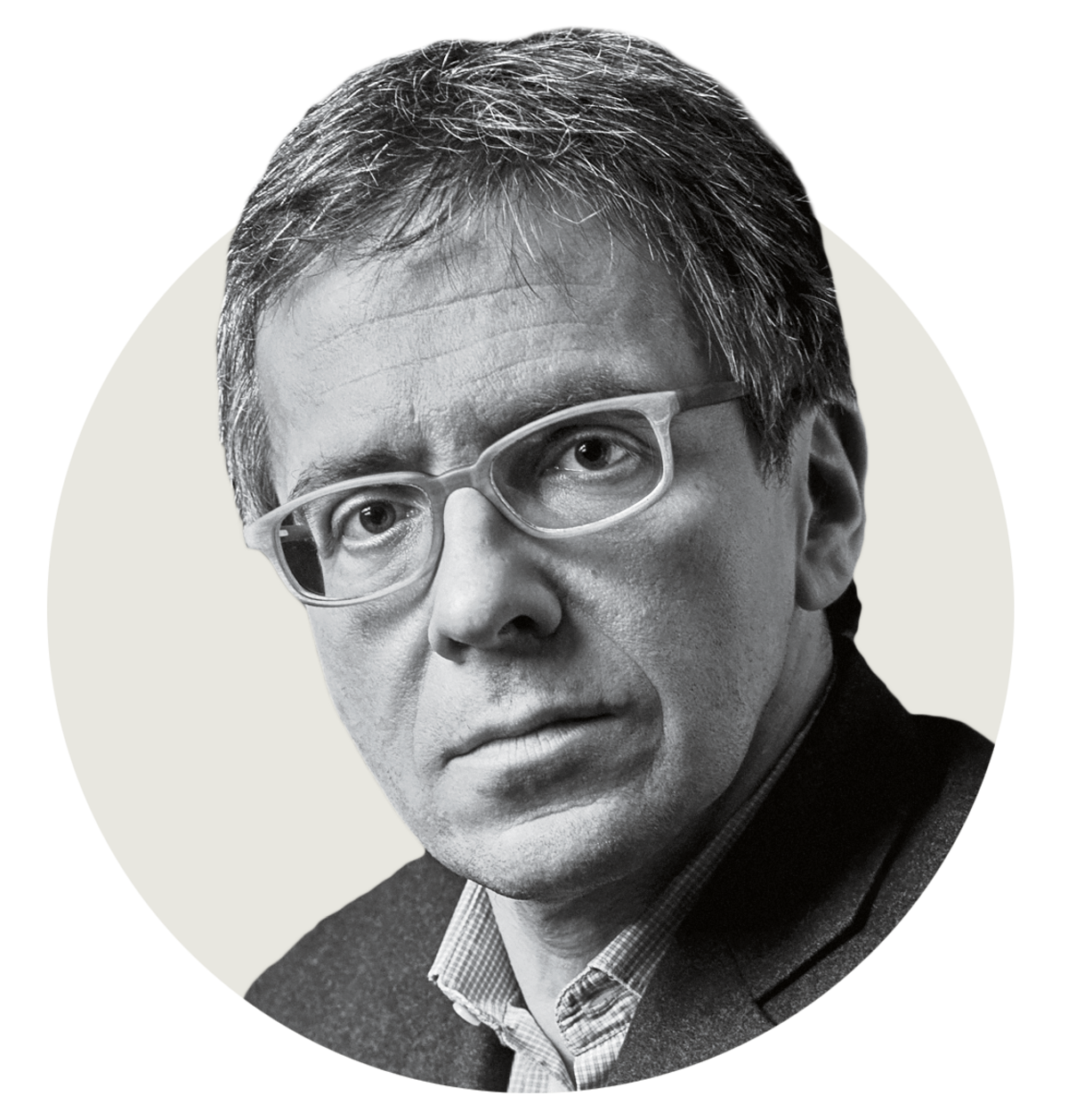
THE RISK REPORT BY IAN BREMMER
Germany’s bold military push

German troops pose with a tank during NATO’s Iron Wolf military exercises in Lithuania on May 16
FOR DECADES, SOME in Europe talked up the need for “collective European defense,” a policy to sharply reduce dependence on Washington for military protection. The debate never got far because Britain and Germany saw no reason to jeopardize transatlantic ties with a drive for security independence. When Russia launched a full-on invasion of Ukraine in 2022, it quickly became clear that Europe’s dependence on America for military muscle was deeper than ever.
Then Donald Trump returned to the Oval Office, confronting European leaders with the reality that his commitment to Europe had become an open question—especially as war raged in Ukraine. Earlier this year, the center-right CDU/CSU won federal elections in Germany, elevating Friedrich Merz to Chancellor. Merz wasted no time in trumpeting a plan to dramatically boost Germany’s role in Europe’s defense.
In May, Germany’s Foreign Minister pledged that Germany would spend 5% of GDP on defense, a demand Trump has made several times, and which NATO Secretary-General Mark Rutte has echoed (the U.S. spends 3.4%). Germany is the second NATO member, after Poland, to back this plan, and Merz has joined France, the U.K., and Poland in a push to bring Russia to peace talks with Ukraine.
But Merz isn’t just bowing to demands from Washington. In his first major policy speech to the Bundestag on May 14, he pledged that Germany’s military would be the “strongest conventional army in Europe,” a breathtaking promise for anyone old enough to remember the days when heavy military investment in post reunification Germany was politically taboo. Merz will push to increase troop levels from the current 182,000 active-duty soldiers to as many as 240,000 by 2031 (most likely by reintroducing the draft). Germany will also replace aging aircraft, tanks, and ships. The rest will go toward defense-related infrastructure. Even if Merz—whose coalition partner, the Social Democrats, is notoriously reluctant to fully commit to defense—can’t keep all of his promises, Germany will be a different kind of military player within a few years.
This is landmark news for Europe’s security. At the NATO summit in June, leaders are expected to approve a step-up in alliance-wide defense spending from 2% to 3.5%. A second commitment to 1.5% on defense-related infrastructure could bring the total figure to 5%. By committing to 5% and encouraging others to do the same, Germany’s plan bolsters NATO’s capacity without forcing E.U. members still struggling to reach 2% to make promises they can’t afford to keep. It’s also a win for Ukraine, which can now hope that smoother relations between the U.S.
President and European leaders will lower the risk that Trump entirely abandons U.S. support for Ukraine’s war effort.
BUT IT’S AN EVEN bigger win for Trump, who for many years has demanded to know why U.S. soldiers and taxpayers remain on the hook for protecting Europe 80 years after the end of World War II. Trump has claimed that his pressure on Europeans to “do more or else” has strengthened both the U.S. and Europe. It’s less likely now that Trump will use the next NATO summit to threaten to abandon Ukraine and NATO itself—though the Trump team may use the publication of the annual review of U.S. forces to signal the likelihood of any formal reduction in the thousands of American forces stationed in Europe.
Gone are the days when Trump could be regarded as an aberration in America’s otherwise predictable geopolitics. It’s now clear both that Vladimir Putin aims to test NATO’s resilience and that Washington’s commitment to Europe’s security is no sure thing. That’s why Germany is about to make history.
THE VIEW INBOX
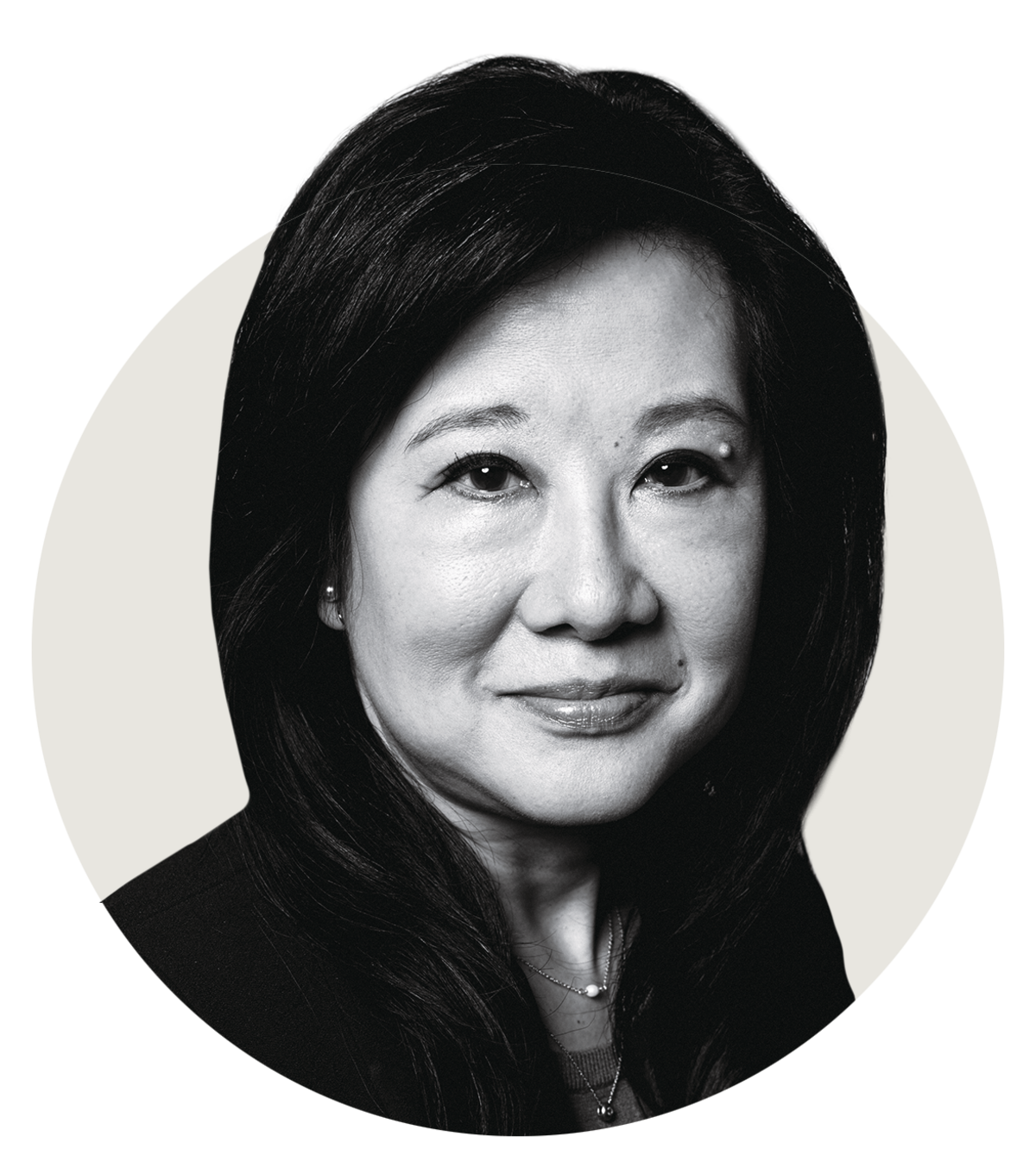
Health Matters
By Alice Park
SENIOR HEALTH CORRESPONDENT

ON MAY 20, THE FEDERAL government announced a major shift in how it plans to review and recommend COVID-19 vaccines for Americans. Among the biggest changes: when manufacturers want to update the vaccine each year to target the latest variants, they will be required to conduct additional studies.
Since 2023, federal health officials have recommended a yearly COVID-19 shot for most people, and vaccine makers have not needed to conduct additional tests on each year’s updated formula. (The flu shot is similarly tweaked each year to target circulating strains, without new studies to reaffirm its safety and effectiveness.)
Such studies would not be required for vaccines given to anyone at high risk for COVID-19, such as seniors, immunocompromised people, and anyone with a broad set of risk factors ranging from physical inactivity to diabetes. “This effectively means 100 million to 200 million Americans, those with the most favorable benefit-to-harm balance, will be covered by these approvals,” said Dr. Vinay Prasad, head of the U.S. Food and Drug Administration’s Center for Biologics Evaluation and Research, at a briefing.
For people not at high risk, the new guidance says that companies must conduct six-month trials to show their vaccines lower rates of COVID-19 symptoms, hospitalizations, and deaths in the general population compared with people receiving placebo.
Because some people develop no symptoms or mild ones, it could take a very large study to collect enough data for meaningful results. That could potentially add to the cost of the vaccines for manufacturers, which may then get passed to consumers.
As of April 2025, only about 23% of U.S. adults got the latest COVID-19 shot—which Prasad cited as evidence that the public is not convinced that the shot protects enough against disease. In addition, many Americans have now had multiple COVID-19 infections, which provides some immunity, so it’s not clear how effective the vaccines are for these people, he said.
Public-health experts say that while specific studies on these populations have not been conducted, declining hospitalization and death rates overall suggest that immunity to the virus—provided in part by vaccinations—is likely playing a role.

For more health news, sign up for Health Matters at time.com/health-matters
CHRISTINA HOUSE—LOS ANGELES TIMES/GETTY IMAGES
THE VIEW INBOX
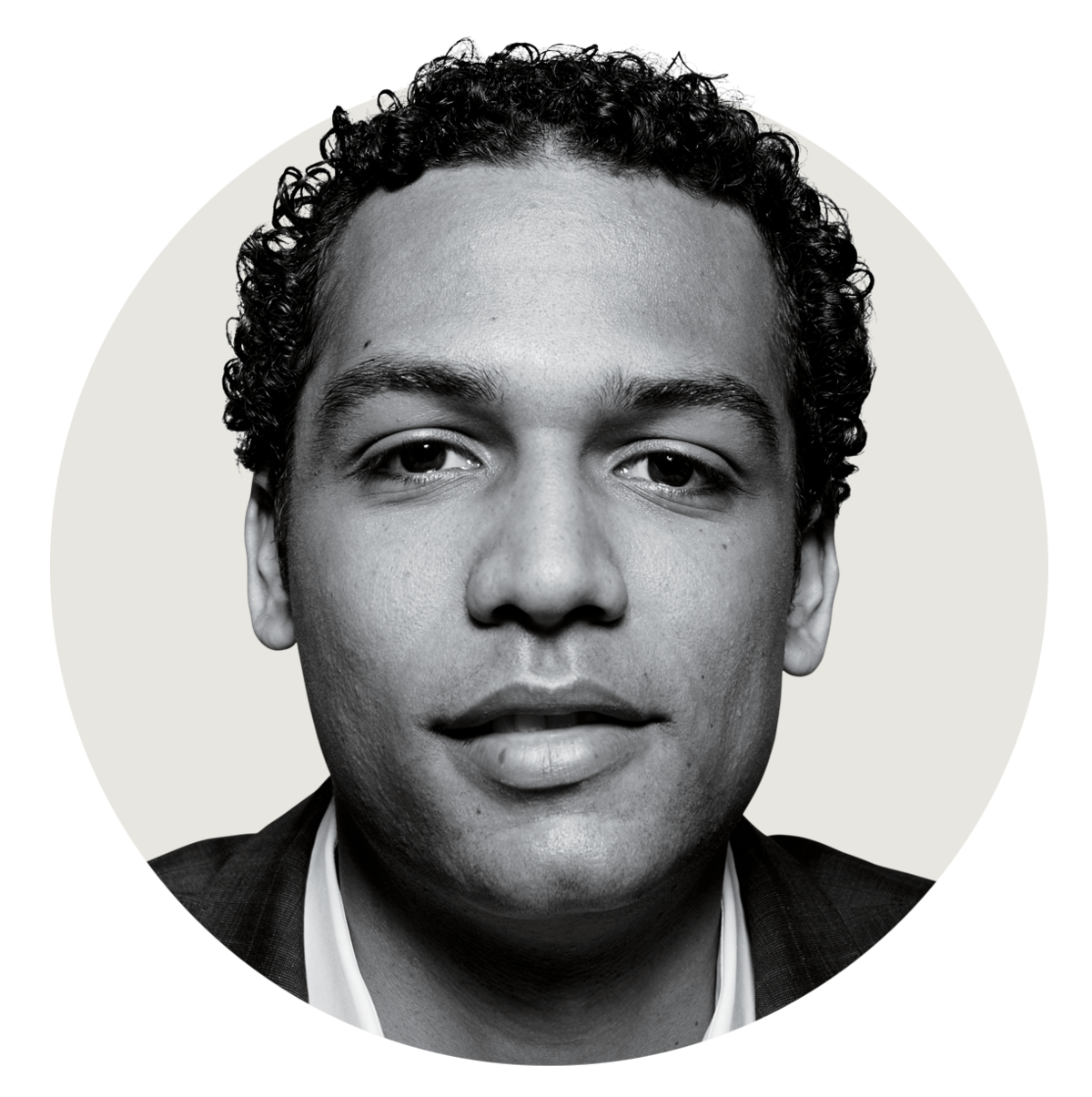
TIME CO2 Leadership Report
By Justin Worland
SENIOR CORRESPONDENT
For the past year, the energy and climate narrative has been intimately intertwined with questions about AI’s impact on energy demand. As tech companies race to construct new data centers, they’ve turned the U.S. emissions-reduction story onr its head. Brazil senses an opportunity. Brazilian officials want to persuade AI and other tech companies to set up shop there.
They cite the nation’s strategic location as a central hub in South America and supportive policy environment. But the biggest selling point by far is Brazil’s electricity system: nearly 90% of its power comes from renewable energy, and the country already has good transmission infrastructure in place.
“Our message to the world, on the basis of our plan, is that AI [power demand] is satiable with usage of renewable energy sources,” Luis Manuel Rebelo Fernandes, Brazil’s Deputy Minister of Science, Technology, and Innovation, told me at the Web Summit in Rio de Janeiro. There are signs the bet is paying off: dozens of data centers are in development across Brazil as big tech companies like Amazon and Microsoft pour billions into the sector there.
It’s an important story for Brazil and the Latin American market, of course, but it also illustrates the competitive dividend of clean energy. As electricity in some emerging-market countries increas-m ingly comes from solar power, they may stand to gain foreign investment—not just from AI but also from any foreign investor who wants their products made cleanly.

Sign up to learn how the week’s news connects to the climate crisis at time.com/climate-newsletter
THE VIEW SOCIETY

Living with grief that’s old enough to vote
BY REBECCA SOFFER
THE KNICKS WERE CLAWING THEIR WAY PAST THE CELTICS in Game 1 of an NBA Playoffs match so intense, my two young sons morphed into courtside commentators operating at decibel levels usually reserved for jet engines and Skittles-fueled birthday parties. We were shrieking with glee and high-fiving—me half tracking the score, half rummaging for my noise-canceling AirPods before their joy blew out my inner ear. Then, just after Jalen Brunson drove to the basket, a commercial cut in.
It was an AT&T ad portraying people suddenly inspired to dial up the ones they love from lush backyards, a boat on the Delta, and . . . a tightrope bridging a deep canyon. My stomach knotted up as it correctly sensed where this was going. At the end, three little words appeared, deceptively gentle, expertly lethal in their timing: Call your mom.
I’d love to. But she won’t answer. Eighteen years ago, my mom Shelby was killed in an accident on the New Jersey Turnpike.
My grief is now the age of a legal adult. It can vote. It can enlist. It may not yet be able to rent a car, but it certainly has been driving one for a while, quietly gripping the wheel during moments in which I naively thought I was steering. Like many 18-year-olds, my grief is composed and self-sufficient one moment, then reckless, loud, and needy the next. It is nuanced. It has opinions. It talks back.
I know full well that the passage of time doesn’t erase grief, but rather, stretches it. The sharp edges don’t vanish; they just space themselves out, lying in wait. That’s not a failure of healing. It’s just what love and loss look like when pulled across time.
My grief no longer flattens me on a daily basis. It’s less like a storm and more like humidity—part of the atmosphere I move through, affecting everything, even when I’m not fully aware. It’s embedded now, woven into my weltanschauung (a German word for “worldview”); how I watch basketball with my sons; how I read a line in a commercial and suddenly forget where I am. My grief is quieter, yes. But make no mistake: it’s still capable of ambush, long after society has decided that I should have “moved on.”
THIS IS NORMAL. Neuroscientist Mary-Frances O’Connor, who studies the grieving brain, has found that long after someone dies, our neural pathways continue to “search” for them, as if expecting someone to walk back through the door, or call, or text. This isn’t just a metaphor—it’s biology. Brain scans show grief activates the same regions involved in attachment and reward. We’re wired to seek out those we’ve lost, even when we consciously know they’re gone. It’s no wonder, then, that years—even decades—later, a scent, a commercial, or the shape of a stranger’s hand can deliver the blow all over again. Absence, as it turns out, is still a kind of presence. And the brain, like the heart, doesn’t always know the difference.
Grief isn’t linear—yet, at the very moment sustained support is most needed, the few resources that do exist are vanishing. In Texas, for instance, the 988 suicide and crisis hotline is grappling with a $7 million funding deficit, leading to thousands of abandoned calls each month as centers struggle to meet demand.
Nationally, the outlook is just as grim: the Trump Administration’s decision to abruptly cancel nearly $1 billion in Department of Education grants has jeopardized school-based mental-health programs across the country, leaving many students without essential support.
Absence, it turns out, is still a kind of presence
IN RURAL STATES where mental-health care is already scarce, schools that depended on these grants now face serious setbacks: in Nebraska, that means reduced access to trauma-informed care for Native American students; in parts of Texas with high youth-suicide rates, it means fewer lifelines for kids in crisis. The list goes on—despite an August 2024 American Psychiatric Association poll showing that 84% of Americans believe school staff are essential in spotting early warning signs of suicide risk.
The Department of Veterans Affairs (VA) is planning to cut approximately 83,000 jobs, representing over 17% of its workforce. These reductions are expected to significantly impact mental-health services, leading to longer wait times for therapy and counseling appointments—up to four months in some cases. I think about what it would have meant to sit in that raw, bewildering pain and trauma for more than a season without help—and how easily I might have gone under.
MENTAL-HEALTH PROVIDERS and organizations are doing important work. But even apart from recent budget cuts, there is a notable absence of national policies that reflect what loss actually looks like: expanded bereavement leave, sustained mental-health funding, and public acknowledgment of collective trauma. Grassroots initiatives like the National COVID Memorial, for instance, have emerged to honor the more than 1.2 million Americans who died of COVID-19. Yet, there is no federally recognized national memorial, either as a day or a physical place. And while the nonprofit Evermore is leading a two-year program to understand people’s lived experience with bereavement in order to help guide future research, the U.S. still does not have a universal national bereavement-leave policy that mandates paid time off for grieving employees.
This lack of acknowledgment underscores a broader societal discomfort with sustained mourning. Ironically, when individuals who have experienced profound loss connect, there’s an immediate, unspoken understanding—a shared language.
If we fully embraced that truth, we’d have a gentler time moving through hard things. I know this from personal experience. Over the past eight years, I’ve matched nearly 3,000 grievers across multiple countries in gift exchanges timed to Mother’s Day, Father’s Day, Sibling’s Day, and the winter holidays—an effort to help people reclaim a sense of agency during some of the most tender dates on the calendar. We need more spaces for these connections, and to grant permission to honor and express our grief without the pressure to rush through it. Grief is not a problem to be solved, but a journey to be supported, individually and collectively.
I’ve grown up alongside my grief. I’ve filled a toolbox’s worth of coping mechanisms. Most days, I describe myself as “living with loss” rather than “grieving.” But there are still moments—sudden, surgical—when it resurfaces with uncanny precision, cracking open what I was sure had been carefully, finally sealed. And when I’m pulled out of the reveries by my two kids yelling for me to catch the final seconds of a nail-biting game, I’m still learning to live with the version of grief on the sofa beside us—part child, part adult, unpredictable and unfinished, just like any teenager finding their way.
Soffer is author of The Modern Loss Handbook: An Interactive Guide to Moving Through Grief and Building Your Resilience and writes the Modern Loss Substack. She speaks globally on building compassionate communities through life’s most difficult moments
PHOTO-ILLUSTRATION BY TIME; SOURCE IMAGES: DAVE KATSBURG, BILGE PAKSOYLU—500PX/GETTY IMAGES; ROC CANALS, MIKE HILL—GETTY IMAGES; WESTEND61/GETTY IMAGES; DAPA IMAGES VIA CANVA
POLITICS
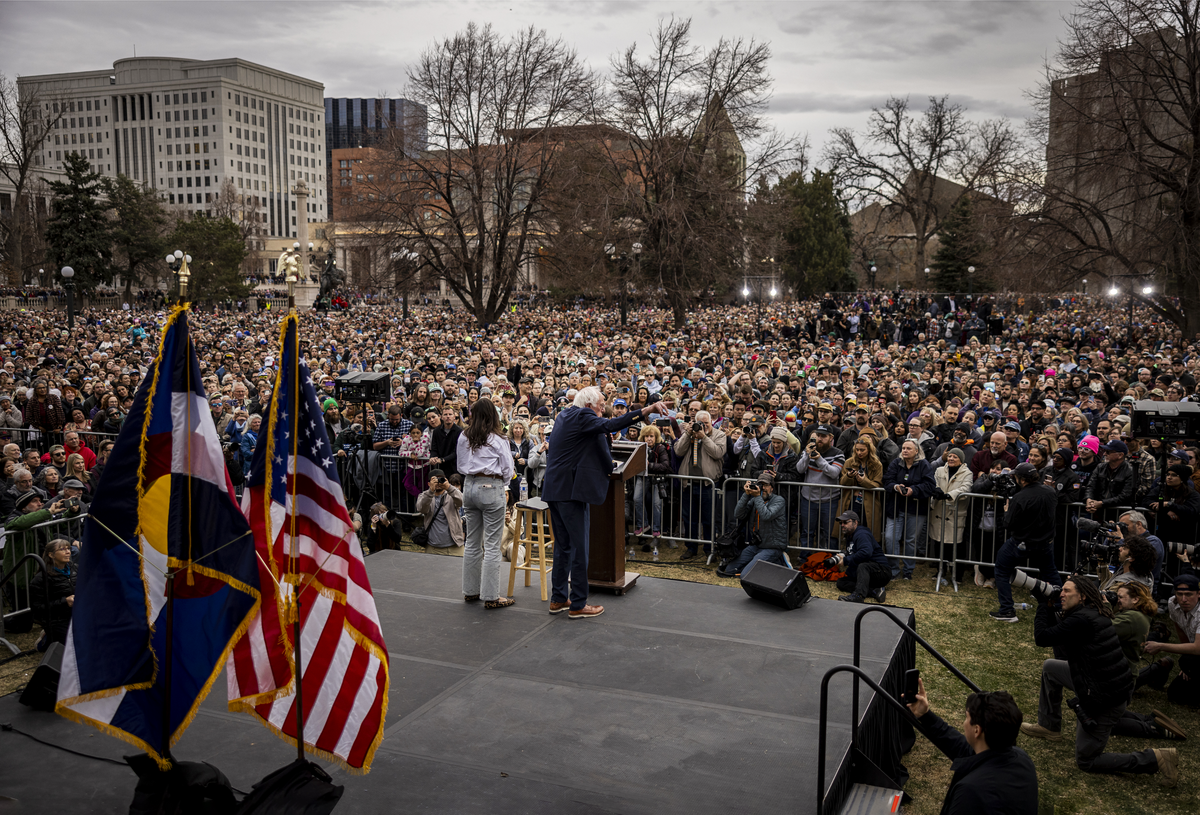
Senator Bernie Sanders addresses a crowd in Denver on March 21
DOWN AND OUT
After the 2024 fiasco, the Democrats are rethinking everything
BY CHARLOTTE ALTER
LIKE A LOT OF DEMOCRATS THESE days, Chris Murphy has been doing some soul searching. For years, the Connecticut Senator, who took office shortly after the mass shooting at Sandy Hook Elementary in Newtown, was one of the nation’s most outspoken advocates for tighter gun laws. Gun safety was so important, he argued, that supporting an assault-weapons ban should be mandatory for Democratic leaders.
Recently, Murphy has come to believe he was wrong. Not about tougher gun laws, but about trying to force all Democrats to adopt his position. “I bear some responsibility for where we are today,” he told me in a phone interview in April. “I spent a long time trying to make the issue of guns a litmus test for the Democratic Party. I think that all of the interest groups that ended up trying to apply a litmus test for their issue ended up making our coalition a lot smaller.”
Murphy’s shift in thinking is part of the reckoning that has gripped the party since President Donald Trump’s victory in November. Democrats could dismiss Trump’s first win as a fluke. His second, they know, was the product of catastrophic failure—a nationwide rejection of Democratic policies, Democratic messaging, and the Democrats themselves. The party got skunked in every battleground state and lost the popular vote for the first time in 20 years. They lost the House and the Senate. Their support sagged with almost every demographic cohort except Black women and college-educated voters. Only 35% of Democrats are optimistic about the future of the party, according to a May 14 AP poll, down from nearly 6 in 10 last July. Democrats have no mojo, no power, and no unifying leader to look to for a fresh start.
Everyone knows how bad things are. “As weak as I’ve ever seen it,” says Representative Jared Golden of Maine, who represents a district Trump won. Trump’s second term is “worse than everyone imagined,” says Nevada Senator Jacky Rosen. The Democratic National Committee has offered few answers as it prepares to release a “post-election review” sometime this summer. “I don’t like to call it an ‘autopsy’ because our party’s not dead—we’re still alive and kicking,” explains Ken Martin, the new party chair. “Maybe barely, but we are.”
You already know most of the reasons for the 2024 fiasco. Joe Biden was too old to be President, and just about everybody but Joe Biden knew it. His sheer oldness undermined all efforts to sell his policies effectively. Democrats lost touch with the working class, with men, with voters of color, with the young. Voters saw Democrats as henpecked by college-campus progressives, overly focused on “woke” issues like diversity and trans rights. They tried to convince people that the economy was good when it didn’t feel good; they tried to convince people that inflation and illegal immigration were imaginary problems. In an era when voters around the globe were in an anti-incumbent mood, Democrats were stuck defending the status quo. The pandemic election of 2020 and the post-Dobbs midterms in 2022 lulled top party officials into a dangerous complacency. They thought Americans hated Trump enough to accept an unsatisfying alternative. They thought wrong.
Over the past two months, I’ve spoken to dozens of prominent Democrats, from Senators to strategists, frontline House members to upstart progressives, and activists to top DNC officials, in an effort to figure out how the party can chart its way back. I asked them all versions of the same questions. How did they dig this hole, and how can they get out of it? What ideas do Democrats stand for, beyond opposing an unpopular President? How can they reconnect with the voters they’ve lost? Who should be leading them, and what should they be saying? In other words: What’s the plan?
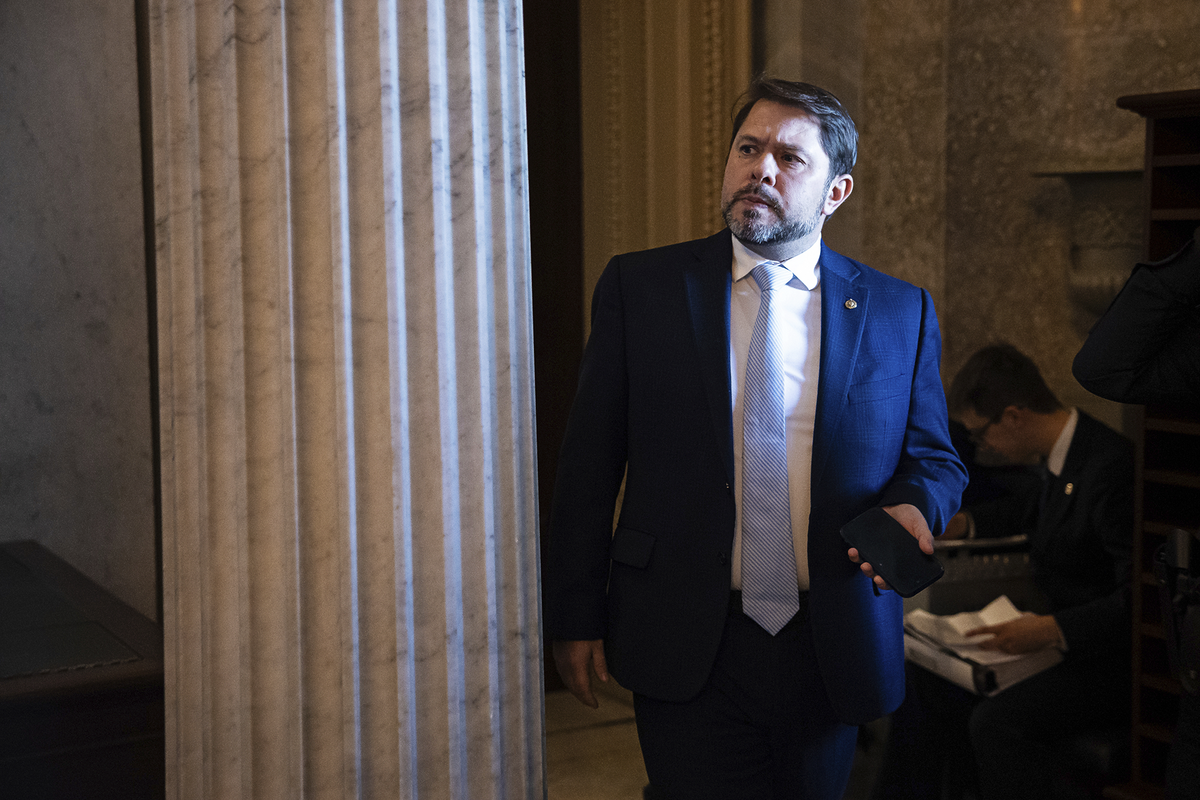
Gallego, at the Capitol on Jan. 9, is urging fellow Democrats to be less cautious and more authentic
Many of these conversations made my head hurt. Democrats kept presenting clichés as insights and old ideas as new ideas. Everybody said the same things; nobody seemed to be really saying anything at all. But in between feeble platitudes about “showing up and listening” and “fighting for the working class” and “meeting people where they are,” a few common threads emerged.
Democrats know they have a branding problem that transcends policy, messaging, or leadership questions. They largely agree they need to re-center economic issues in their messaging and develop what some are calling a “patriotic populism” to counter Trump. They need to build a bigger tent. Many moderate Democrats want to sideline the activist groups that pressured elected officials to take unpopular positions. Even many progressives are retreating from the purity politics that reigned in the Trump era. They know they need fresh ideas and new leaders, even though they can’t always agree on how to find them.
The intraparty squabbles between moderates and progressives that have dominated the past decade have given way to different fault lines. “If you’re talking about ‘conservative’ or ‘liberal,’ or ‘progressive’ or ‘moderate,’ you’re missing the whole f-cking point,” says Representative Pat Ryan, who outran Kamala Harris by double digits in his purple district in New York’s Hudson Valley. “It’s not progressive or moderate. It’s status quo or change. It’s for the people or for the elites.”
After a brutal winter, Democrats are beginning to show signs of life. The party won a crucial supreme court race in Wisconsin and picked up two seats in the Pennsylvania statehouse. In early April, roughly 4 million people attended more than 1,300 rallies across the U.S., demanding their leaders fight harder against Trump. The Fighting Oligarchy Tour, headlined by Senator Bernie Sanders and Representative Alexandria Ocasio-Cortez, has drawn hundreds of thousands of people across red states. The grassroots is sending a clear message to sitting Democrats: Do better, or we’ll replace you with people who will.
Most in the party recognize this is a crisis moment. But every crisis is also an opportunity—a chance to rethink policies, reframe messaging, and recruit new leaders who can meet the moment. The last time Democrats were this deep in the wilderness was in 2005, when few outside the DNC had heard of Barack Obama. Republicans’ own search for answers in the wake of Mitt Romney’s 2012 defeat gave rise to Trump. When you hit rock bottom, anything is possible—and every transformative political figure of the modern age has emerged from a moment like this one.
‘WE ARE BEREFT OF BIG IDEAS.’
—REPRESENTATIVE JAKE AUCHINCLOSS OF MASSACHUSETTS
IT’S A SUNNY TUESDAY in early spring, and Jake Auchincloss is sitting on a bench outside the Rayburn House Office Building. Auchincloss, a 37-year-old third-term Congressman from Massachusetts, seems nervous, almost jittery, as he explains why he thinks everybody is getting the Democrats’ problems wrong. “I hear a lot: ‘Get a leader, let’s rally behind somebody.’ And I strongly disagree with that,” Auchincloss told me. “The forest of ambition is large. There’s no shortage of presidential timber. I’m worried about the ideas.” This is what keeps Auchincloss up at night: “It’s that we are bereft of big ideas.”
Auchincloss has a few. He wants to offer free one-on-one tutoring to kids who are behind in school because of COVID-19, subsidize community-health clinics, and hold social media corporations accountable for what he calls the “attention fracking” of America’s youth. But a decade of fighting MAGA, he says, has “depleted some intellectual dynamism” from his party. “In 2028, we’d better be ready to have dynamic candidates on the stage offering whole new ideas,” he warns, “or we’ll lose again.”
In our conversations, Democrats often made that argument. It’s not enough to say what we’re against, they’d say, we have to say what we’re for. But when I asked these same party insiders what that should be, most regurgitated ideas Democrats have run on for decades. Protect Social Security and Medicare! Protect abortion rights! Protect labor! OK, I’d say. What about new ideas? They mentioned their own pet projects: a bill blocking a supermarket merger; a bill addressing specific veterans’ issues; a bill ensuring the right to fix your own car. Somehow, I had a hard time imagining “Permitting reform!” as a rallying cry capable of mobilizing millions of low-information voters.
“I’ve heard some folks say, ‘It’s not our policies, we just have to communicate better,’” says Representative Angie Craig, who is running for an open Senate seat in Minnesota. “It actually is our policies that swing-state voters aren’t with us on. For those colleagues who were calling to defund the police: our voters are not with you on that.”
Most Democrats now acknowledge that the progressive movement encouraged a kind of purity politics that hampered the party’s ability to win majorities. “We swung the pendulum too far to the left,” says Representative Ritchie Torres, who represents a Bronx district where Trump made inroads with working-class people of color, as he did in cities around the country. “We have become more responsive to interest groups than to people on the ground.”

Murphy has reconsidered his approach to litmus tests and leaned in to economic populism
Many Democratic officials believe the party moved too far left on social issues in particular. “There are some sports where trans girls shouldn’t be playing against biological girls,” says one lawmaker, adding that most of his fellow Democrats agree but are “afraid of the blowback that comes from a very small community.” Even abortion is up for a rethink. Some Democrats want a retreat from the enthusiastic embrace of abortion rights, and a return to talking about abortion as “safe, legal, and rare,” as Bill Clinton put it. “Refusing to say that even in the third trimester there’s no limits on it, it’s not where the average American is,” says another Democratic lawmaker. “The really embarrassing truth is Donald Trump is closer to the median voting on abortion than Democrats were.” Yet the fact these lawmakers would share these thoughts only without their names attached shows how much Democrats still fear antagonizing their liberal base.
Others insisted that the problem is one of emphasis. When Democrats spent so much time talking about other things—Student debt! LGBTQ rights! Police reform! Climate change!—voters decided they’d taken their eye off the ball. “You’ve got to be principally seen worrying about jobs and people’s pay and health care—economic issues,” says Representative Chris Deluzio, who represents a working-class district in western Pennsylvania. “And I think folks see too many Democrats as not caring principally about the economy.”
This theory might make more sense if Harris had run a 2024 campaign that was all about trans kids, abortion, and gun safety. Harris didn’t run that campaign. She offered tax credits to boost small businesses, proposals to lower the cost of groceries and childcare, and the most comprehensive affordable-housing plan ever put forth by a presidential candidate. And she lost. “Kamala Harris was talking about it,” says Representative Greg Casar of Texas, the chair of the Congressional Progressive Caucus. “But nobody was hearing it.”
SENATOR RUBEN GALLEGO met me outside the Senate gym, still slightly damp. Gallego, who was raised by an immigrant single mother and served in the Marine Corps, was a rare bright spot for his party last year. He outperformed Harris by 8 points in Arizona, handily won Latino men, and was one of only two new Democrats to win Senate battleground races. As we walked through the Capitol, Gallego, 45, describes his very simple message: “I’m here to bring you more security: economic security, and your personal family security.” It meant talking constantly about the cost of living, and taking a more hard-line stance on immigration than most of his Democratic peers.
When we arrived at his hideaway—Gallego was so new to the Senate that he had forgotten his key—the freshman Senator told me he didn’t necessarily think other Democrats needed to adopt his security message. He just wants them to speak like normal people. The party’s problem is bigger than bad messaging, he believes. The problem is caution. “Democrats in general are always fearful of messing up,” he said. “The Democratic mindset has been to run very tight, not open campaigns.”
I knew what he was talking about. Aides on the Biden and Harris campaigns were so cautious, they’d often go off the record just to provide canned talking points. That approach, Gallego says, is self-defeating in the age of social media, where crafting the perfect sound bite can mean missing the moment altogether. “I told my team during the campaign: This is a vibe election,” says Gallego. “If we can match the policy with creating this vibe, this culture, that’s gonna break through across all modes and mediums.” His point was that the art of messaging has changed. It’s less about developing the perfect slogan, and more about authenticity, simplicity, virality. The more consult-ified something sounds, the less memorable it is.
‘ALL THE PEOPLE IN LEADERSHIP ROLES ARE LADDER CLIMBERS, NOT LEADERS.’
—REPRESENTATIVE PAT RYAN OF NEW YORK
Like Gallego, many moderate Democrats have particular critiques of the party’s economic message. “I think Democrats have made this mistake of saying, ‘I’m here to help the little guy.’ Nobody wants to be called the little guy,” says Representative Marie Gluesenkamp Perez, 36, who has won twice in a red district in Washington State. “The fatal mistake in politics is condescension.” She’s not the only Democrat who thinks the party erred by targeting its messaging to the most marginalized, rather than the vast, struggling middle class. Nearly 70% of voters in battleground districts think Democrats are “too focused on being politically correct,” according to brutal internal polling shared with top party leaders in March, while a majority think Democrats are not looking out for working people and are “more focused on helping other people than people like me.”
The focus on protecting the most vulnerable, in other words, has left many Americans feeling ignored. “I constantly get draft mailers in my office that say things like ‘Democrats are fighting so you could put food on the table.’ That is not aspirational,” says Mallory McMorrow, a Michigan state senator now running for U.S. Senate. To McMorrow, the Democratic message should be simple, universal, and optimistic: “Democrats fight for the American Dream,” she says.
Others believe the party has to emphasize a more populist pitch to counter Trump’s. “The Democratic Party needs to make as our central message that our goal is to break the unholy alliance between corporate greed and corrupt government,” Casar told me. “If somebody is more conservative than me on this social issue, or we may disagree on this foreign policy issue, at the end of the day people say: the Democratic Party puts me first and the billionaires last. And that’s what wins.”
One of the things that surprised me over the course of these conversations was the way a Sanders-style economic populism had gained traction with politicians not normally associated with the Sanders wing of the party. “Our economy is rigged because our government is rigged,” Chris Murphy told me. Democrats, he added, “have to wake up every morning thinking about how to unrig our government so that the corporations and the billionaires don’t always get what they want.” This was a man who stumped so hard for Hillary Clinton in 2016 that he was on a short list to be her VP. “I think it was a huge mistake for our party to view Bernie as some fringe threat to the party,” he says now. “Bernie’s message all along has been the crossover message, the message that appeals both to Democrats but also to a big element of Trump’s base.”
FIVE MONTHS AGO, Kat Abughazaleh was an online journalist and researcher who made viral takedowns of far-right figures. But when she saw Democrats clapping politely during Trump’s second Inauguration, something snapped. “It was just so pathetic,” she told me, speaking on the phone from her home office in the Chicago suburbs. “I was like, ‘Well, maybe they’ll actually do something.’ And then they didn’t.”
Shortly afterward, Abughazaleh, 26, announced a primary challenge to Representative Jan Schakowsky, an 80-year-old party stalwart who has served in Congress since the year Abughazaleh was born. Schakowsky wasn’t the worst member of Congress, Abughazaleh thought. They agreed on a lot of issues. But Abughazaleh thought Schakowsky wasn’t up to the moment. Her campaign announcement video asked a simple question: “What if we didn’t suck?” She raised more money in the campaign’s first week than Schakowsky did the entire first quarter. Within six weeks, Schakowsky announced she would not seek re-election.
Even if the Democrats generate new policy ideas and adopt a sharper pitch, they’ll still bump up against the core issue that tanked Biden, Harris, and much of the rest of the party last year: age. Many Democrats are finally realizing that too many of their leaders are too established, too out-of-touch, or simply too old to connect with voters.
Four House Democrats died in office over the past year. House Democratic leader Hakeem Jeffries has acknowledged that Republicans could not have passed a budget resolution in April had their narrow majority not been widened by the deaths of two members of his own caucus. Of the 30 House Democrats who are 75 or older, more than half told Axios they planned to run for re-election next year.

Trump opponents gather in Los Angeles on April 5 in one of more than 1,300 protests nationwide
Many Democrats are not eager only for generational change. They want change at the top of the party as well. Some see Jeffries and Senate minority leader Chuck Schumer as too deferential to established norms or too reluctant to use procedural powers to slow down Trump’s agenda. Both are underwater in public-opinion polls. Only 27% of Americans approve of congressional Democrats overall—the lowest number since CNN started asking in 2008. “I think the party is hyperfocused on message and forgetting about the messenger,” says Amanda Litman, the co-founder of Run for Something, which recruits new Democrats to run for office and supports them with training, mentorship, and campaign tools. “They’ve missed the way people consume information. You look for a person, not an institution.”
A sclerotic party establishment has created a culture of waiting your turn. “All the people that are in formal leadership roles,” says Pat Ryan, “are ladder climbers, not leaders.”
At the DNC, Martin has locked horns with the party’s new vice chair, David Hogg, a survivor of the 2018 Parkland school shooting who rose to national prominence as a gun-safety activist. Hogg’s political organization, Leaders We Deserve, plans to invest $20 million to support young candidates challenging “asleep-at-the-wheel” Democrats in safe seats. Hogg tells me the party’s post-Biden “realignment” isn’t primarily about ideology. “It’s: Do you want to fight or do you want to roll over and die?” Martin has publicly rebuked Hogg, insisting the DNC maintain its long-standing position of neutrality. On May 12, the DNC’s credentials committee voted to void the elections of Hogg and another party official for procedural reasons they said predated the controversy, setting up the prospect of Hogg’s losing his position.
In the meantime, a new breed of Democrat is stepping up. They’re younger, more digitally fluent, more working class. They speak American without a D.C. accent. “People who haven’t been politicians for 30 years can go into a nonpolitical space and be a real person,” Amanda Litman told me as she walked to pick her children up from day care. These new candidates can talk persuasively about the costs of housing and childcare, issues that probably haven’t affected your life much if you’ve been in Congress since 1995. “It’s not the magic words,” says Litman. “It’s that many of these people can’t be credible messengers.”
Some new ones may emerge from the younger generation of Democrats who were elected in the 2018 wave after Trump’s first victory, and are now running statewide. Mallory McMorrow, 38, and Haley Stevens, 41, are vying for Michigan’s open Senate seat. Angie Craig, 53, is running for Senate in Minnesota. Abigail Spanberger, 45, is running for governor of Virginia. Representative Mikie Sherrill, 53, is running for governor of New Jersey. “The fight is generational,” Sherrill says. As soon as she arrived in Congress in 2019, she told me, she encountered an “entrenched” cohort of “collegial” lawmakers who refused to update their strategic playbook because they kept waiting for politics to go back to the chummy inside game it had been pre-2016. “Do I think we need a new generation of leaders? Yes,” she told me. “But guess what: I think we’re about to get it.”
WHEN GREG CASAR arrived at the Tucson rally for Sanders’ and Ocasio-Cortez’s Fighting Oligarchy Tour, the line of spectators stretched so long that Casar’s Uber driver thought he was going to a concert. Organizers had expected 2,000 people at a high school gymnasium; he said more than 10 times that many showed up. “People are even more opposed to what Donald Trump is doing than eight years ago,” Casar told me, fiddling with his AirPods as he sat outside a committee markup in late April. “But they want a new kind of leadership from the Democratic Party.”
As party leaders in Washington debate how to move forward, their grassroots base is sick of waiting for them to figure it out. Frustrated liberals have founded roughly 1,400 local Indivisible groups since the election, including more than 600 in GOP congressional districts. More than 46,000 young people have signed up to run for office through Run for Something since November. To those who participated in the “Resistance” movement of the first Trump term, the grassroots rage feels different this time. It’s not just targeted at Trump; it’s also focused on the feeble Democrats and spineless institutions that have failed to effectively resist him.
‘THE FIGHT IS GENERATIONAL.’
—REPRESENTATIVE MIKIE SHERRILL OF NEW JERSEY, WHO IS RUNNING FOR GOVERNOR
Some Democratic officials have responded by copying Trump’s own playbook. They’re favoring nonpolitical podcasts over cable studios, burnishing their social media game, showing up at football games and Coachella. They’re trying to worry less about who they’re offending and more about who they’re reaching. Group chats of Democratic lawmakers are full of delicate negotiations on how best to respond to the Trump presidency. “We recognize that the most important thing we can do is make this guy unpopular,” says one lawmaker. They’re sharing talking points and legal strategies, while weighing various acts of defiance against the potential for distraction. Internal discussions, says this lawmaker, are laser-focused on “figuring out what’s tactically smarter.”
Most Democrats expect a public outcry against Trump’s policies will help them retake the House in 2026. Winning back the Senate will be tougher, with more Democrats on defense in battleground states. In the meantime, a shadow presidential primary is already taking shape, with hopefuls drawing different lessons from Trump’s win and its aftermath. California Governor Gavin Newsom has started a podcast, featuring Trump allies like Steve Bannon and Charlie Kirk as guests, and pivoted to the center in his day job, cracking down on homeless encampments and pushing to reduce health care benefits for undocumented immigrants. Barnstorming against oligarchy helped Ocasio-Cortez raise $9.6 million in the first quarter of the year, rekindling speculation about her viability as a candidate for higher office. Cory Booker’s marathon Senate speech protesting Elon Musk’s cuts to the federal government was liked more than 350 million times on TikTok. And Illinois Governor J.B. Pritzker railed against “do-nothing Democrats” in a speech in New Hampshire. As Pritzker put it, “The reckoning is finally here.”
Democrats are coming around to a new mantra: winning the argument is less important than winning elections. If the path to victory means embracing economic populism, they’ll do it. If they have to make room for new faces, then sayonara, old friends. If they need to tack to the center on some social issues, so be it. If winning requires doing more podcasts, or embracing Instagram influencers, or campaigning on permitting reform, they’ll give it a try. Because now that Democrats have seen what a second Trump presidency looks like, they’re relearning the lesson they should have known all along: only winning is winning.
PHOTOGRAPH BY CHET STRANGE: GETTY IMAGES; RANCIS CHUNG—POLITICO/AP; JOSE LUIS MAGANA—AP; ETIENNE LAURENT—AFP/GETTY IMAGES
WORLD
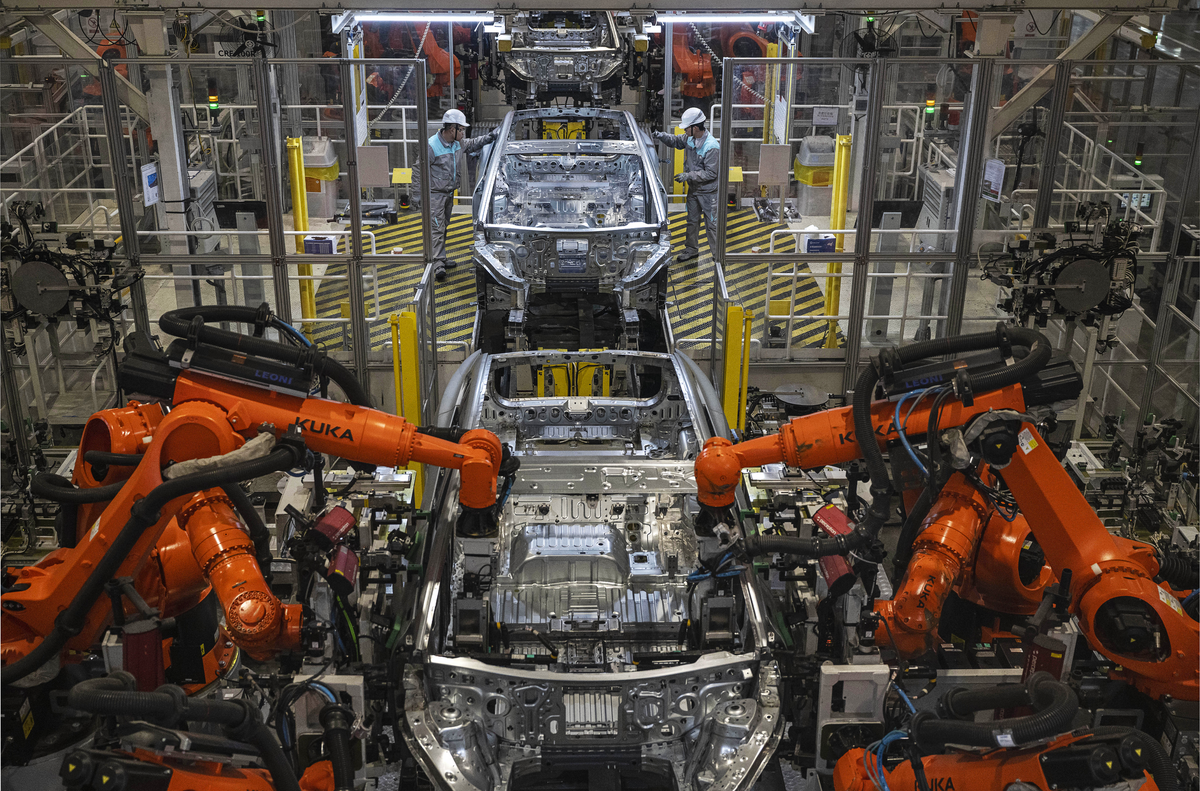
NIO EMPLOYEES WORK ON AN AUTOMATED ELECTRIC-VEHICLE PRODUCTION LINE ON JAN. 17 IN HEFEI, CHINA
THE SHIFT EAST
Once an auto underdog, China’s electric-vehicle boom now powers its tech rise
BY CHARLIE CAMPBELL/ SHANGHAI AND HEFEI
AT NIO’S DESIGN WORKSHOP IN SUBURBAN SHANGHAI, ENGINEERS spread billets of clay onto an aluminum frame of a basic car. A robotic arm with a mechanized drill bit then carves a series of grooves into the clay corresponding to a designer’s sketch. The rough surface is then painstakingly smoothed with palette knives before aluminum foil is pasted on top. Finally, the sleek-looking metallic model is rolled into a sunlit courtyard where every curve and camber is scrutinized.
“The artistry really happens with these guys putting color on, taking it off; putting more clay on, taking it off,” says Colin Phipps, senior director of NIO Shanghai Design, who previously worked 12 years for Cadillac. “This is a very labor-intensive process.”
It’s also an incongruously artisanal first step of a design methodology that is otherwise steeped in pushing technological boundaries. Since its founding in 2014, NIO has notched 9,800 global patents, most impressively popularizing battery-swapping technology that allows customers to change their drained battery for a fully charged one in just three minutes at over 3,000 swap stations across China and Europe.
NIO also produces the world’s longest-range electric-vehicle (EV) battery, capable of over 650 miles (1,000 km) on a single charge (Tesla’s record is 402 miles). It has the world’s only dual-display windshield—projecting data at two separate perspectives directly in the driver’s line of sight—and the first homologated drive-by-wire system, which guides the wheels without a physical steering shaft. NIO’s EP9 sports car was upon launch in 2016 the world’s fastest EV, breaching 194 m.p.h. and breaking records at Germany’s famous Nürburgring Nordschleife racing circuit. “Innovation creates value,” NIO CEO William Li tells TIME. “And innovation helps us survive amid fierce competition, be it in China or worldwide.”
NIO is just one of an alphabet soup of Chinese brands—from AION, BYD, and Clever, to Maxus, Neta, and Onvo, to Xpeng, Yangwang, and Zeekr—dominating the global EV market today.
It’s been a meteoric rise. In 2001, China had fewer than 10 million passenger vehicles for its 1.2 billion population. That’s just one vehicle for every 128 people, or a market penetration equivalent to America’s in 1911, three years after Henry Ford produced his first Model T. But by 2009, China was the largest car market in the world. From being a net car importer as recently as 2020, China today sends more vehicles overseas than any other nation; its passenger-car exports jumped nearly 20% in 2024 to 4.9 million. Meanwhile, imports of cars to China dropped from a peak of 1.24 million in 2017 to just 705,000 last year.
Chinese automakers are expected to account for a third of the global market by 2030, according to AlixPartners. When it comes to EVs, China already accounts for nearly two-thirds of global sales (62%). NIOs are currently sold in six European nations as well as Israel and the UAE. BYD, meanwhile, is now undisputedly the world’s top EV firm, present in over 70 countries and outselling Tesla globally for a second straight quarter. While Tesla delivered 336,681 vehicles worldwide for the January–March period, down 13% year-on-year, BYD delivered 416,388, up 38%.
Americans remain largely unaware of all this. Under President Biden, a tariff of 100% was slapped on Chinese EVs, and President Trump has added an additional 25% on all foreign cars. This has negative consequences for EV adoption in the self-styled spiritual home of the automobile—where half of Americans are interested in going electric, according to recent polls. It also impacts the global fight against climate change.

BYD EVS STACKED AT CHINA’S TAICANG PORT ON APRIL 8 AWAIT EXPORT TO SOUTH AMERICA
“Consumers in the U.S. could drive better cars, consume less gasoline, spend less on maintenance, and that would also be good for climate change,” says Paul Gong, head of China autos research at UBS Investment Bank. “There is a certain pity that because of tariff protectionism, and geopolitics, the world is not as green and not as prosperous.”
Still, some very real concerns lie behind import barriers. The U.S. and allies accuse China’s industrial policies of massive subsidies that cause overcapacity and crowd out competitors. Chinese government support to its EV industry cumulatively totaled $230.9 billion from 2009 to 2023, according to the Center for Strategic and International Studies (CSIS), a bipartisan D.C. think tank. Last July, the E.U. also imposed a provisional antisubsidy tariff of up to 37.6% on Chinese EVs, prompting Beijing to hike tariffs on European pork and brandy in retaliation. In August, Canada hiked its import tariff on Chinese EVs to 100%.
However, to simply blame state subsidies for China’s mastery of EVs is reductive. Time and again, whether it’s smartphones, solar panels, or 5G, China is combining state support with economies of scale and a fiercely competitive domestic market to command transformative technology. Strong supply chains leverage high-quality, low-cost components to commercialize technology for market. And China’s ascendency in EVs provides a window into future tussles between the world’s top two economies over innovations set to power the Fourth Industrial Revolution.
The risk for the U.S. is that these advantages will soon also allow China to dominate industries such as generative AI, quantum computing, and humanoid robotics. And EVs are front and center to those goals.
“These are much more than just battery-powered vehicles,” says Ilaria Mazzocco, a senior fellow focused on China business and economics at CSIS. “The technological shift involves a lot of data processing, more AI integrated into the system, and synergies that provide pathways to advance in other technologies.”
CHINA’S RISE DIDN’T initially make the West uncomfortable. Far from it. China’s peerless manufacturing efficiency reaped billions of dollars for U.S. firms. The fact that an ostensibly communist nation was trying its hand at capitalism was thought endearing, even quaint—not to mention proof that liberal economic theory had won the day. The country, after all, represented a giant and growing market for American industry.
Until China began to pull ahead. Though it welcomed McDonald’s and Starbucks and encouraged its brightest to hone their minds at Western universities, Beijing maintained a strict hold over the economy, while cannily acquiring foreign expertise. Today China accounts for 27.5% of all global auto sales, more than the next three countries—the U.S., India, and Japan—combined.
China’s government facilitated this rise by allowing foreign auto firms to enter the Chinese market only with a domestic partner, as well as what might be called resourceful harvesting of intellectual property. It was good old-fashioned protectionism—and for China, it worked. Chinese companies are poaching engineers and executives from storied European and American manufacturers while buying up foreign competitors wholesale. Ford sold Swedish firm Volvo to China’s Geely for $1.8 billion in 2010. In 2017, Geely also bought storied British sports-car firm Lotus.
‘These are much more than just battery-powered vehicles.’
—ILARIA MAZZOCCO, CSIS SENIOR FELLOW
“Ten or 15 years ago, products in China weren’t competitive globally, to put it mildly,” says Dan Balmer, Lotus president and CEO for Europe, Asia-Pacific, Middle East, and Africa. “But you could see the energy, the enthusiasm, the investment into the industry. So they’ve learned very well, and they’re now leading in many fields.” Lotus now retains a design and production facility in the U.K., but all its Eletre and Emeya EVs are made in Wuhan, best known as the epicenter of COVID-19, where a $1.1 billion plant opened in 2022 can turn out 150,000 vehicles a year.
“Before, people were coming to China just to have better access to the Chinese market,” says Frank Bournois, dean of the China Europe International Business School in Shanghai. “Now you come to China to improve your processes. And AI is really pushing that forward.”
U.S. policymakers have a hard time squaring this new paradigm, as evidenced by Vice President J.D. Vance’s complaints to Fox News in early April that “we borrow money from Chinese peasants to buy the things those Chinese peasants manufacture.” But whereas the first generation of Chinese entrepreneurs grew up poor and were happy to wring a livelihood from cheap imitations, today’s tech graduates were spared the privations of their parents and yearn for something more meaningful. “Before, Chinese were happy to copy others just so they wouldn’t go hungry,” says Grace Shao, a former Alibaba manager turned IT consultant who publishes the AI Proem newsletter. “Now they seek a sense of mission.”
While Washington attributes China’s recent successes to subsidies, that is only part of the story. When the Beijing central government pinpoints an industry to prioritize, city and provincial governments immediately offer incentives in the desperate race to seed a local champion. This flood of liquidity generates a bubble that artificially inflates values and encourages other big players to enter the market. But in 2020, the leading government-supported EV maker in China was Tesla, whose consumers received $325 million in tax rebates as well as $82 million in grants to construct its Shanghai Gigafactory. Meanwhile, at its peak in January 2021, NIO’s market cap was $96.57 billion, or double that of General Motors.
Competition between regions and manufacturers, however, is remorseless. In 2023, some 52,000 EV-related companies shut down in China. As the EV bubble burst, NIO’s worth has plunged to just $7.53 billion, despite shipping a record 221,970 cars last year. But those firms that emerged unscathed are lean and technologically agile, and infused with the necessary moxie to thrive. BYD, for one, employs more engineers than Tesla has total staff. In March, it unveiled an EV battery that can charge in just five minutes. “You cannot imagine such competition intensity in any other major market,” says Gong.

AN UNMANNED EVTOL TEST FLIGHT ON MARCH 14 IN SHENZHEN, CHINA
NIO’s factory in Anhui province is a case in point. It has an annual capacity of 300,000 units and can deliver entirely bespoke cars of 3.5 million specification combinations within 10 days. Ford may have pioneered the assembly line, but NIO has an assembly matrix six floors high and five wide, where individual chassis can be plucked in any direction. Once they’re grounded, AI-powered automated guided vehicles ferry each shell among 940 welding and riveting robots. Most impressively, ground was broken at the factory in April 2021 and mass production started just 17 months later—a timeline virtually unheard of in the U.S.
Crucially, traditional auto manufacturers and China’s new energy companies approach the production process in reverse. Instead of focusing on the panels, axles, and bearings of a car, NIO first looks at the high-voltage architecture—batteries, power train, and so on—followed by the low-voltage, like digital compute. “Then we bolt the mechanical pieces around it,” says Jonathan Rayner, NIO’s vehicle-experience manager for its ET9, who joined the firm after 14 years at Jaguar Land Rover. “With today’s modern software and capabilities, what used to be the hard thing for the old companies is relatively easy.”
Putting software at the beating heart of production means modern EVs are unlike their gasoline-powered forebears. Even if you purchased a NIO, BYD, or Lotus a few years ago, the car’s brain is being regularly updated, much like your smartphone. This also means that the constantly honed AI-powered core technologies can be applied to many adjacent fields. “AI is a very important enabler for our vehicle products,” says Li, NIO’s CEO. “These technologies help us improve the product experience and overall competitiveness.”
WAITING OUTSIDE AN OFFICE BUILDING in Shanghai’s Pudong district, a white robotaxi produced by Pony.AI, a Guangzhou-based autonomous-vehicle firm, circles slowly around the entrance foyer before coming to a stop at my feet. Once I’m aboard, the self-driving system embarks on a 20-minute tour of the rain-soaked neighborhood, dodging delivery bikes, overtaking parked vans, and bravely fighting through oncoming traffic at stoplights. “Strategically, we definitely have the ambition to go global,” says James Peng, CEO of Pony.AI. “Because mobility needs are everywhere. Using technology to have a positive societal impact should be our ambition.”
Of course, the U.S. also has robotaxis. Alphabet-owned Waymo completed 4 million paid driverless ride-hailing trips in 2024 in Phoenix, San Francisco, and Los Angeles. But competition is scant. Amazon-backed Zoox secured the necessary permits to carry the public in Foster City, Calif., only last year. Tesla has claimed since 2016 to be about a year away from launching a robotaxi; CEO Elon Musk most recently said his Cybercab would be ready by 2027.
‘Using technology to have a positive societal impact should be our ambition.’
—JAMES PENG, PONY.AI CEO
More notable are the players that have exited the space. Uber sold off its self-driving business in 2020 after a fatal collision. Ford abandoned its stake in its robotaxi developer Argo.AI two years later. In 2023, GM paused all its Cruise driverless operations, despite already plowing in $10 billion, following collisions that led to the suspension of California licenses. (While a recent spate of self-driving crashes in China hasn’t diminished official support, the government on April 17 did ban the word autonomous from car ads.) By comparison, Pony.AI faces a crowded field. China also has Apollo Go, DiDi, AutoX, and WeRide—the latter already operates in 30 cities across nine countries—all clamoring for market share with express government backing. As of August 2024, Chinese public-security authorities had issued 16,000 test licenses for autonomous vehicles and 20,000 miles of roads nationwide had been opened for testing.
For Peng, the difference is that while licenses in China are harder to obtain at the outset, once permission is granted, the government will be fully supportive. “In the U.S., it’s easy to get a license,” he says. “But if you’re ever in an accident and it’s your fault, they will heavily penalize you.”
Rather than fostering its own domestic champions, the U.S. national strategy aims to slow down its key rival via stricter export controls. However, China is catching up. In semiconductors—a crucial industry in which the U.S. currently leads—Huawei’s Ascend 910C AI chip reportedly achieves up to 60% of performance in inference tasks compared with Nvidia’s latest H100. Whereas NIO’s earlier models contained four Nvidia chips, its latest ET9 instead has two designed in-house. “It’s precisely the shortage of semiconductors that is leading China to develop their own faster,” says Bournois.
The rush is also on to translate EV supremacy to other industries. Humanoid robots produced by Hangzhou-based Unitree caused a stir in households across China when they appeared, twirling decorative fans and dancing with other performers, at state broadcaster CCTV’s prestigious Lunar New Year Gala in January.
It was a stunning display of China’s booming robotics industry. Over 190,000 robotics-related companies were registered in China last year, with 44,000 more registered since the start of 2025, according to data company Qichacha. As with EVs and AI, Beijing has prioritized humanoid robots as “disruptive products.” In 2023, China’s Ministry of Industry and Information Technology (MIIT) issued industrial-development guidance that outlined its goal of mass-producing humanoid robots by 2025 to build a globally competitive industrial ecosystem expected to reach $43 billion by 2035.
EVs are key. Roughly 70% of their components are interchangeable, which is why Chinese automakers including BYD, Xiaomi, Chery, GAC Motor, Huawei, SAIC, and Xpeng Motors are all entering the robotics market. At March’s National People’s Congress, China’s annual rubber-stamp parliament, XPeng chairman He Xiaopeng proposed supportive policies for humanoid robots to mirror those EVs enjoyed, arguing the industry has similar growth potential over the next five to 20 years.
China is also gaining ground in the so-called low-altitude economy—autonomous air taxis, drone delivery, and so on. Last March, China’s MIIT and civil-aviation and transport regulators released a six-year plan for the sector, exploring regulations for aerial tolls, pilot licenses, and establishing trial areas where early-stage eVTOL (electric vertical takeoff and landing vehicles) can fly around actual city environments. The 2025 NPC’s Government Work Report named the future industry among the state’s priorities. Once again, China’s EV industry provides the backbone. Early eVTOL pioneers include Ehang, Autoflight, XPeng, and AeroFugia, a subsidiary of Geely. “We have the basic infrastructure already ready for the low-altitude industry,” says Burt Gao, Aerofugia’s CEO and chief scientist.
“Also, our supply chain is the same as for EVs.”

A UNITREE G1 HUMANOID SHAKES HANDS WITH KIDS ON MARCH 24 IN YANTAI, CHINA
IT IS NOT ALL POSITIVE for China, of course. The nation faces myriad economic challenges, including deflation, local governments drowning in debt, poor consumer spending, plummeting real estate values, record youth unemployment, and a demographic time bomb. China’s regulatory framework and especially its draconian rules regarding data transfers are anathema to foreign partners. In September, the European Chamber of Commerce in China released a position paper that made over 1,000 recommendations for how to improve the business environment. Then there’s the as-yet-unknown effect of a trade war with the U.S., where China last year sent 14.7% of exports, worth $438.9 billion.
But as America walls itself off, China also has a golden opportunity to reset trade relations with the rest of the world. In mid-April, after Trump’s global tariff onslaught, President Xi Jinping embarked on a charm offensive in Southeast Asia, declaring that a trade war has “no winners” and that protectionism “leads nowhere.” Just as export controls have spurred domestic innovation, a U.S.-waged trade war only puts Chinese firms in a more favorable light. “The bar is low in terms of looking like a more reliable and constructive partner than the United States these days,” says Mazzocco of CSIS.
We have been here before. The U.K. became the world’s biggest economic superpower in the 18th and 19th centuries through its first-mover advantage in industrialization. But the U.S. adopted these technologies and, via its larger market and manufacturing capabilities, soon became the global leader in both innovations and their commercialization. The question is whether the U.S. can survive a trade war that threatens to drastically diminish its markets, while simultaneously undermining the development of core technologies by defunding universities and research institutions. China already produces twice as many highly cited AI-research publications as the U.S. According to a recent report from the D.C.-based Information Technology and Industry Foundation, China is near the lead of innovation or better in 6 out of 10 industries of the future. If EVs are any augury, America’s days at technology’s vanguard might be numbered.
“We believe the Chinese market has the best talent,” says Li. “Every year there are several million new science and technology graduates.” And they, like their government, are determined to seize the day.
PHOTOGRAPH BY KEVIN FRAYER; GETTY IMAGES; STRINGER/AFP/GETTY IMAGES; VCG/GETTY IMAGES; TANG KE—VCG/GETTY IMAGES
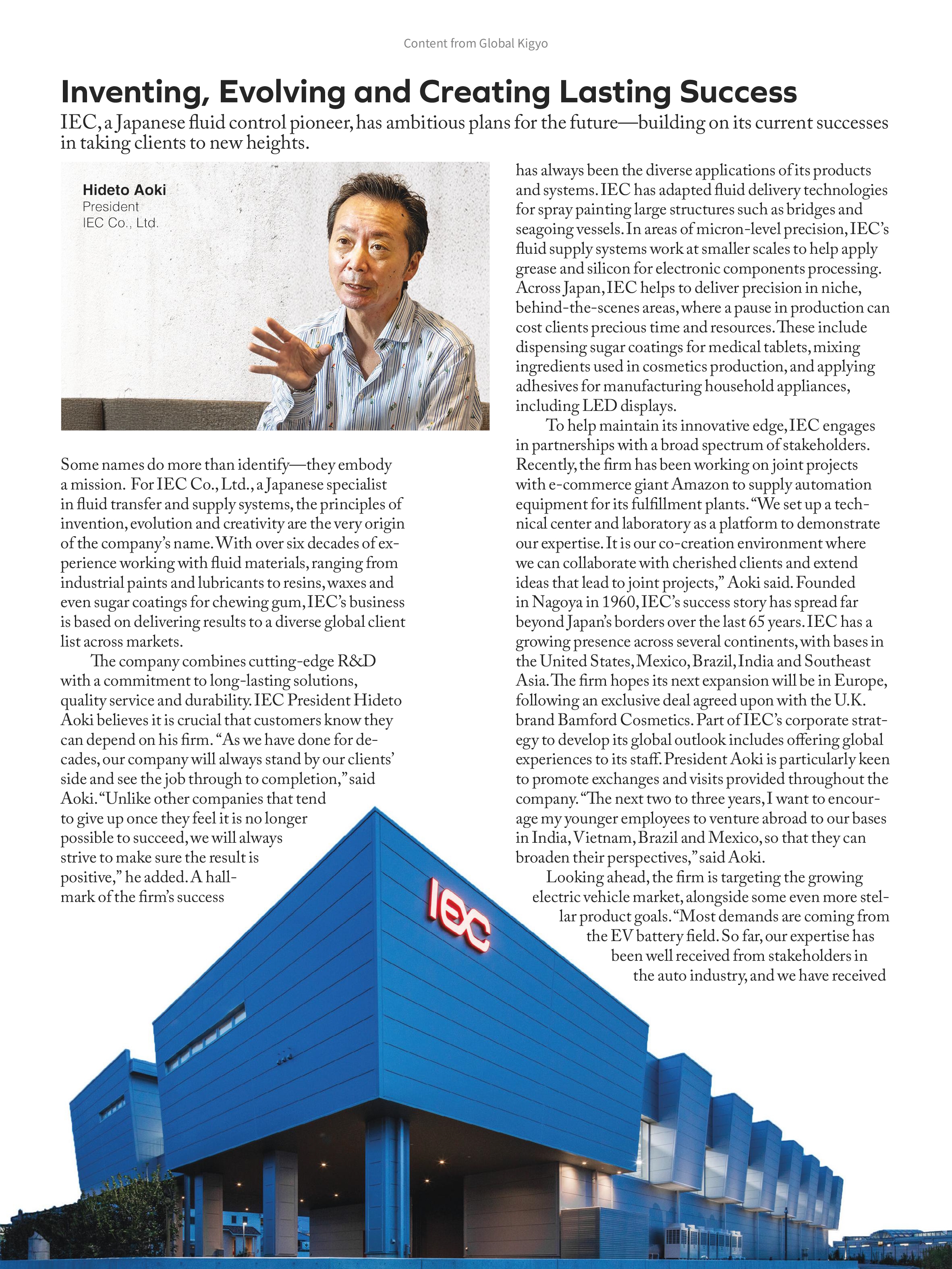
TIME100 PHILANTHROPY TITANS

THESE ARE THE 100 MOST INFLUENTIAL PEOPLE SHAPING THE FUTURE OF GIVING
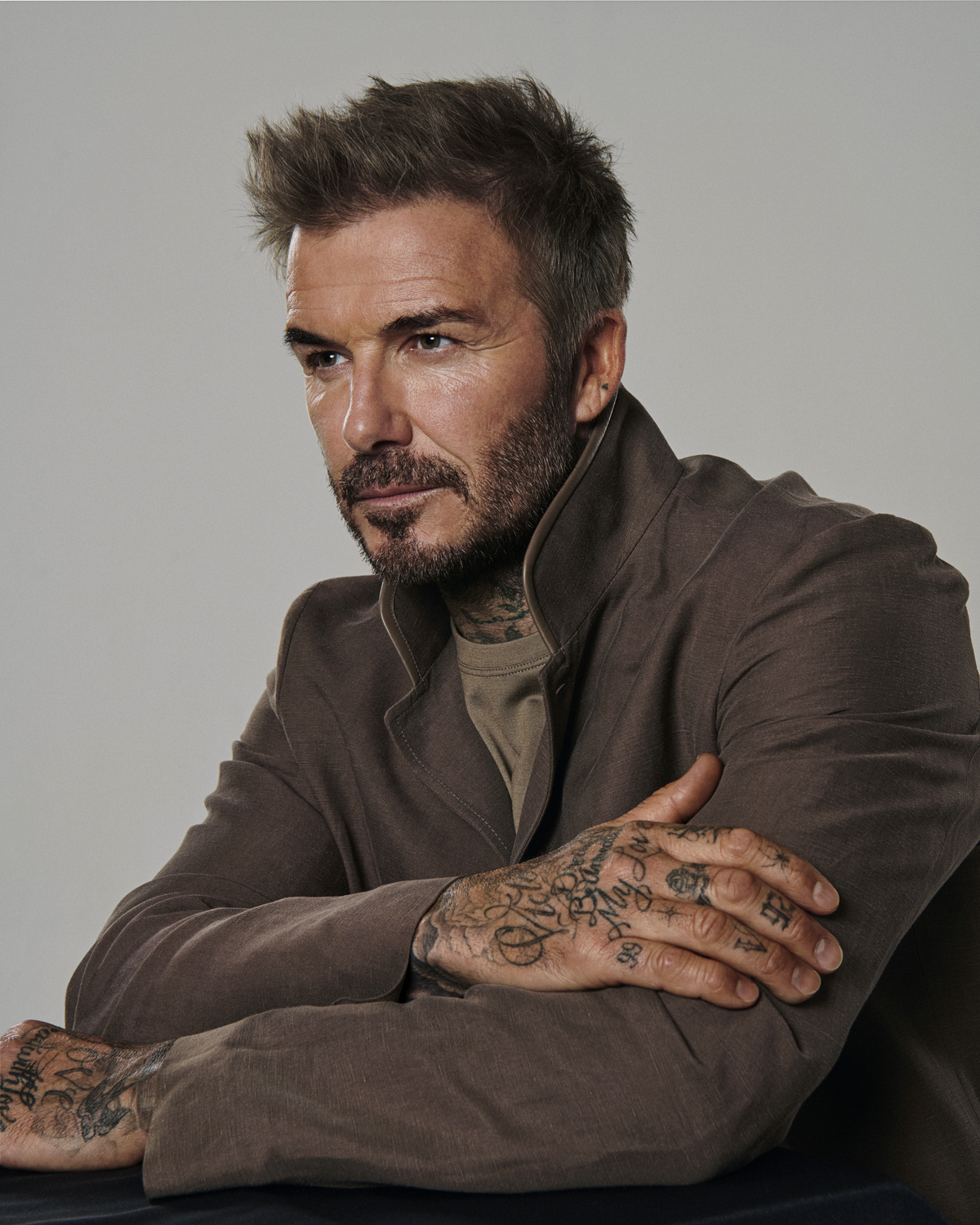
BECKHAM PHOTOGRAPHED IN MIAMI IN APRIL
David Beckham
CHAMPION OF CHANGE
BY SEAN GREGORY/FORT LAUDERDALE, FLA.
ON THE FIRST SUNDAY NIGHT IN APRIL, DRUMS ARE beating and horns are blaring in a boisterous Chase Stadium in Fort Lauderdale, Fla., as Lionel Messi and his Inter Miami teammates make a humdrum regular-season American soccer game a happening. Inter Miami and Toronto FC are tied 1-1 in the waning seconds of the contest when Messi drives a ball into the goal box, giving his team a golden chance to pull out the win. His pass lands on the foot of Inter Miami’s Fafà Picault, who pops what should be a surefire game winner over the net. A few seconds later, the referee blows the final whistle. David Beckham, co-owner of Inter Miami, sits still in his box, his face frozen in disbelief. He looks too ticked to move. Finally, he rises to shake a few hands and slap some shoulders. “That was a frustrating game,” he says.
“I feel more exhausted watching the team as an owner,” says Beckham, whose wife Victoria noted how sweaty he was when he got home and asked what in the world he had been doing. “I’m so invested in the game that I feel that I’ve played the game.”
It has been a dozen years since Beckham retired from professional soccer following a career in which he won six Premier League titles with Manchester United, a La Liga championship with Real Madrid, two Major League Soccer (MLS) Cups with the L.A. Galaxy, and a Ligue 1 championship with Paris Saint-Germain. And having just reached a major milestone—his 50th birthday, on May 2—Beckham admits that he’d love to get back out there. “There’s a lot of players that say, ‘Oh, well, I miss the locker room. I miss the banter,’” he says. “I don’t miss any of that, because I have that with my family and with my friends. I miss training every day. I miss playing every weekend. Every day, I wake up, and I feel like something’s missing. Even at 50 years old, in my head, I can still play.”
It’s not as if he’s let himself go. Beckham, who keeps to a strict fitness regimen, lost his shirt for photos in April’s Men’s Health, and when he and Victoria are in the same place, they work out together almost every morning. “I let Victoria believe that she’s working harder,” says Beckham. “But I think I’m the one that’s working harder. Don’t tell her that.” (“David does an hour in the gym, and I do an hour and 45 minutes,” Victoria says. “So, Sean, I will let you make that decision.”) Still, he concedes that although he feels like a 25-year-old in his head, his body cannot do what it did when he was the World Cup captain for England in the aughts.
But don’t expect any midlife crises. For one thing, the man does not have time. Beyond co-owning Inter Miami, Beckham has a range of business interests to keep him busy—supplement and eyewear lines, a production company that oversaw the 2023 Emmy-winning Netflix documentary, Beckham, and partnerships with brands like Stella Artois and Hugo Boss. And he remains committed to his longtime philanthropic work, particularly with UNICEF, where he is one of the organization’s longest-serving goodwill ambassadors.
“The competitive part of it is, I want to see wins,” says Beckham. “I want to see these kids walking around with clothing and not be subject to violence in their homes or in their schools or in their communities. Keeping these young kids in education. Keeping them out of early child marriage. When you go into these projects and you see that happening, that’s a win.”
He’s talking about his charitable efforts, but it’s really the connective tissue of this all. He may have left the pitch as a player, but his drive to prove himself, to take big swings and see them pay off, persists across his endeavors. As he moves into the next half-century of his life, Beckham is happy to reflect upon his journey but eager to look forward as well. He is well aware that he is one of the 21st century’s most famous faces and has a global platform enjoyed by only a select few, many of whom—Messi, Tom Brady, and Tom Cruise, among them—were guests at his lavish birthday parties in London and Miami. And so even as he is content, he refuses to be satisfied. “I truly think,” Victoria says, “that he’s just scratching the surface of his full potential.”
‘I TRULY THINK HE’S JUST SCRATCHING THE SURFACE OF HIS FULL POTENTIAL.’
—VICTORIA BECKHAM
IN CONJUNCTION WITH HIS BIRTHDAY, Beckham launched a fundraising appeal with UNICEF. “If you, like me, believe that every child should have the chance to achieve their full potential, please click the link in my bio to donate,” he wrote in an April post on Instagram, where he has 88 million followers, more than any active English Premier League player. He turned over his social media accounts to a trio of teenage girls from Brazil, Madagascar, and Sudan, who each shared stories of perseverance through roadblocks like war, disease, and lack of educational resources for girls.
While it may not get the same attention as, for instance, his Netflix doc, the making of which, he says, was “like therapy,” his relationship with the organization is almost as long as his marriage to Victoria. It began on a trip to Thailand with Manchester United in 2001 when he visited a UNICEF-supported protection center, for women and girls as young as 5 who’d experienced violence and abuse. He knew instantly this was something he wanted to be a part of. He started partnering with UNICEF, and in 2005 received a call from then U.N. Secretary-General Kofi Annan, asking if he’d become an ambassador. “There’s certain phone calls that you get that make you quite emotional,” says Beckham. “That made me very emotional.”
He has since gone on humanitarian trips to places like Sierra Leone, India, and Indonesia to shed light on challenges facing children and families in those countries. He recalls one in particular, in 2014, a few months after Typhoon Haiyan ravaged the Philippines, killing more than 6,000 people. Beckham met with a family impacted by the storm. “The mum was completely glassy-eyed,” he says. “It felt like there was no life within her. The father explained what happened: he was on the roof of their home holding both his young daughters when a wave hit and knocked him unconscious. He woke up hours later holding on to just one of his daughters.”
In 2015, to mark his 10-year anniversary with UNICEF, Beckham launched his “7” fund—named for his number on his England and Manchester United jerseys—which has since raised more than $20 million. Among the beneficiaries have been 160,000 adolescents in Nepal who receive education and mental-health support, some 400,000 children in Djibouti who got the polio vaccine, and 40,000 boys and girls in El Salvador who take part in sports and recreational activity.
“The reason why sport is so powerful is typically that is how men communicate,” says Victoria. “But quite often in my experience, and I know in David’s experience on the ground, you have women and young girls holding entire communities together. They’re somewhat unheard. He sees the power in women and girls.”
While his efforts have taken him around the world, he remains involved with organizations in his native Britain. He is on the leadership council for the nonprofit Malaria No More UK, and a self-described royalist, he joined Prince William last year in helping to raise north of $20 million for the London Air Ambulance Service, which used the funds to purchase two lifesaving emergency helicopters.
He’s also formed a bond with the monarch himself. During the pandemic, Beckham took up beekeeping at his Oxfordshire country home. This is not news to anyone who saw Beckham, which opens with a scene of him in his beekeeping outfit. (“All of a sudden, people laugh,” Beckham says, recalling his experience at the premiere in London. “I’m like, ‘This is not funny.’ I even turned around. I was like, ‘Why are you all laughing?’”) But when he attended a British Fashion Council event in 2023, his hobby was less well-known and he held a jar of honey behind his back to present to the King. “I was worried about his secret security wondering, ‘What is that?’” he says. The gesture sparked a pleasant conversation, as King Charles III is also a beekeeper, and the King later invited him to his home at Highgrove Gardens, where Beckham observed “most amazing beehive I have ever seen.” In 2024, Beckham became an ambassador for the King’s Foundation, which offers U.K. students training in areas such as textiles, STEM, and horticulture.
In January, the World Economic Forum gave Beckham a Crystal Award at its annual meeting in Davos, Switzerland, for his “long-term humanitarian work and unwavering commitment to improving the lives of children” around the globe. “He doesn’t have to do anything,” says UNICEF executive director Catherine Russell. “He’s a very famous, wealthy person who could just dillydally around. And he doesn’t do that. Does really serious work to help people in the world who most need it. To me, it doesn’t get much better than that.”
TO BE FAIR, it’s hard to imagine Beckham dillydallying around anything. Throughout his career, he’s been clear on his course and confident that everyone would see the wisdom of his moves eventually. When he was considering joining the Galaxy from soccer superpower Real Madrid before the 2007 season, he heard ad nauseam that he was making a huge mistake. After all, MLS was an afterthought in the soccer world, not at all established as a topflight league. “When you do get questioned, I like to come out fighting,” says Beckham. “I always knew that I could help raise this sport in this country, and hopefully I’ve done that.”
In 2014, he exercised his option to purchase an MLS expansion team for $25 million, a stipulation in his Galaxy contract. He set his sights on Miami, a city he had never visited before it became his preferred destination for a franchise, only to have politicians reject multiple stadium proposals. He was told by several advisers that he should sell the team back to MLS and earn a small profit for his trouble. But Beckham stuck with his vision, partnering with Jorge and Jose Mas, who run a Miami-based construction and engineering firm and used their political connections to help push through the $1 billion Miami Freedom Park plan. Jorge is now managing owner of the team, Jose is co-owner, and the mixed-use stadium, which includes Inter Miami’s new 25,000-seat home, hotels, offices, a public park, and retail spaces, is expected to open next season. Inter Miami is worth more than $1 billion.
In the early seasons of Inter Miami’s existence, Beckham would stay up well past midnight in London to watch his team, more often than not, lose. “It got to the point where Victoria went, ‘Maybe you’re the problem. Why don’t you try to not sit up and watch one night and just see if you win?’” says Beckham. “I tried it once, and it didn’t work. So I was like, ‘You’re wrong.’” He set out to change their fortunes, using his own experience moving to the U.S. as a sales pitch to Messi. It was another reminder that it never hurts to aim high. “I could never have dreamed to have Lionel here,” says Beckham. “As an owner, you always say that you want the best players. Does it really happen? No. And he is the best player to have ever played the game.” Messi, even at 37, has exceeded expectations. After his arrival, Inter Miami won the 2023 Leagues Cup—the annual competition between teams from MLS and Liga MX, the top league in Mexico—and the 2024 Supporters’ Shield, awarded annually to the team with MLS’ best regular-season record. Pictures of the team celebrating these accomplishments hang in Beckham’s Inter Miami office.
Though Messi’s contract expires after this season, Beckham is confident that he’ll be back in Miami in 2026, and that he will play in next year’s World Cup. “I think his heart is in Miami now,” says Beckham. “Players these days, they look after themselves more. They’re playing longer. His No. 1 passion is obviously his family. His other passion is football. As long as he’s happy, he will continue to play as long as he wants. It would be nice if he played another 10 years. I can’t see it. But you never know.”
‘HE’S A VERY FAMOUS, WEALTHY PERSON WHO COULD JUST DILLYDALLY AROUND. AND HE DOESN’T DO THAT.’
—CATHERINE RUSSELL, UNICEF EXECUTIVE DIRECTOR
BECKHAM, WHOSE CAREER has had him crisscrossing the world, understands that it’s impossible to know what lies ahead. But that doesn’t stop him from making both plans and predictions. He intends, over the next six months, to have low-key catch-up dinners with longtime friends in both the U.S. and U.K. He hopes to take a UNICEF trip to Brazil or India sometime this year. “Those are the moments that I love more than anything, going on the ground and meeting these young children,” Beckham says. And laugh if you will about the bees, but sometime in the next few months Beckham has plans to launch Bee Up, a brand of honey-based snacks like gummies, sticks, and bars marketed to the U.S. travel-soccer-kid set.
He’s also looking forward to the 2026 World Cup, though to be clear, despite putting down roots in the U.S., he’s still cheering for his home team. “I’m sorry,” he says. “I’m going to have to go with England.” And his tracking of what’s happening across the pond is not entirely confined to fandom. While he is highly invested, financially and emotionally, in Inter Miami, he allows that he’s not uninterested in expanding his portfolio. In March, thousands of Manchester United fans marched in protests against the Glazer family, who’ve owned the team over the past two decades. “I’d love to say that I own Manchester United one day,” says Beckham. “It’s always been my team, it will always be my team, and I care deeply about Manchester United.” But the team is valued at around $6.55 billion, according to Forbes, making it the second most valuable soccer franchise on the planet, trailing just Real Madrid. “Slightly out of my price range,” Beckham says.
In the meantime, he does see potential for the Americans at the global level. “The U.S. will win a World Cup at some point,” says Beckham of a country whose best result on the men’s side since 1934 was a quarterfinal appearance in 2002. “This country is too powerful, is too big, has the best facilities, has the best coaches. The foundations have now been set.” Left unsaid is that he can claim some credit for this.
Of course, there are some things that are completely out of Beckham’s hands. Despite his affinity for and connection to the royals, knighthood—to the surprise of many—has thus far eluded him even as his fellow sportsmen Lewis Hamilton and Mo Farah have received the honor. “I’ve heard people in the media talk about it’s something that I really, really want, and of course, it would be an unbelievable honor,” says Beckham, who waited in line for 12 hours to pay his respects to the Queen at her 2022 funeral. “If it happens at some point, amazing. If it doesn’t, there’s nothing I can do about it.”
Beckham got his first gig when he was 12: he was a pot-boy, clearing drinks off the tables at a dog track. On Saturdays, he’d accompany his dad to his job fixing stoves in London hotels and restaurants, acting as his little helper. He’s always dug working and has no plans to slow down now. “The last 50 years have been pretty enjoyable and pretty hectic and packed with things that I never thought and dreamt that I’d ever be part of,” he says. “I want that to continue. If that stops, that’s when I won’t want to go to work. And that’s never going to happen.”
BECKHAM’S WORLD

PLAYING SOCCER WITH CHILD SURVIVORS OF TYPHOON HAIYAN IN THE PHILIPPINES IN 2014

CELEBRATING AFTER SCORING A GOAL DURING THE 2002 FIFA WORLD CUP
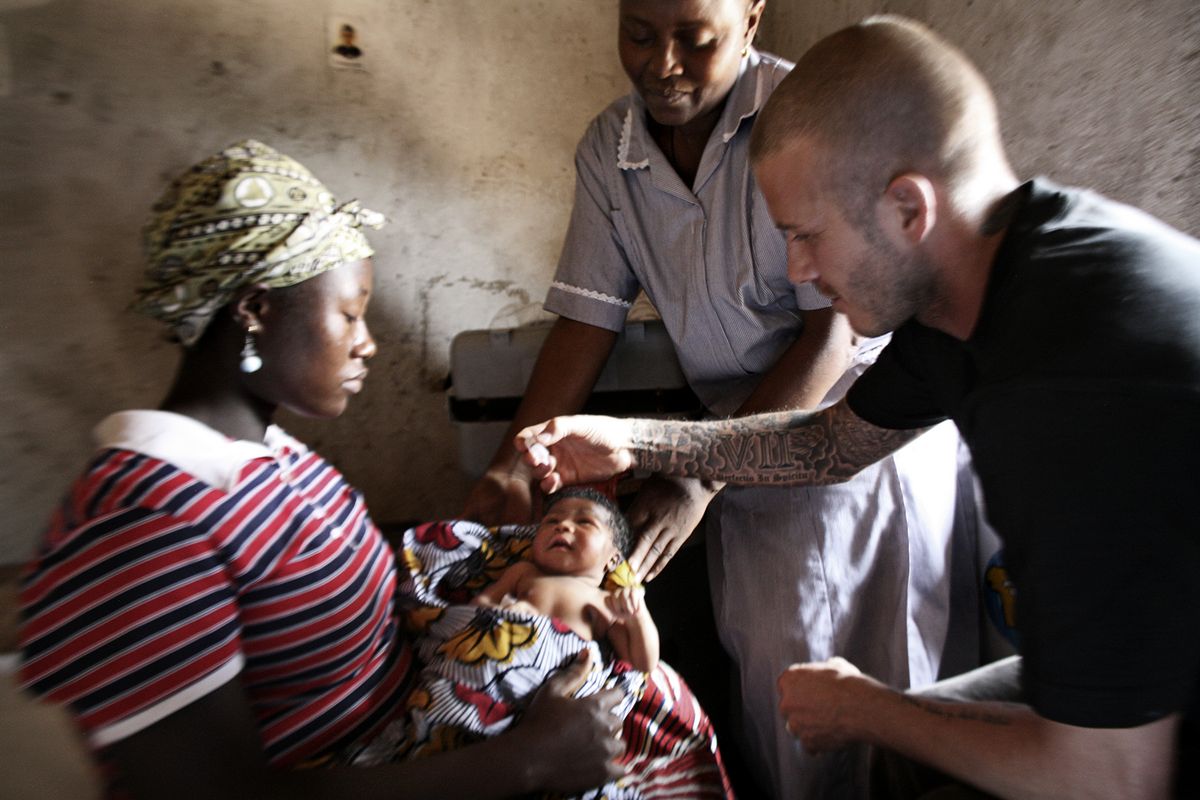
ON A 2008 TRIP TO SIERRA LEONE, WHERE A 2-DAY-OLD WAS GETTING A POLIO VACCINE
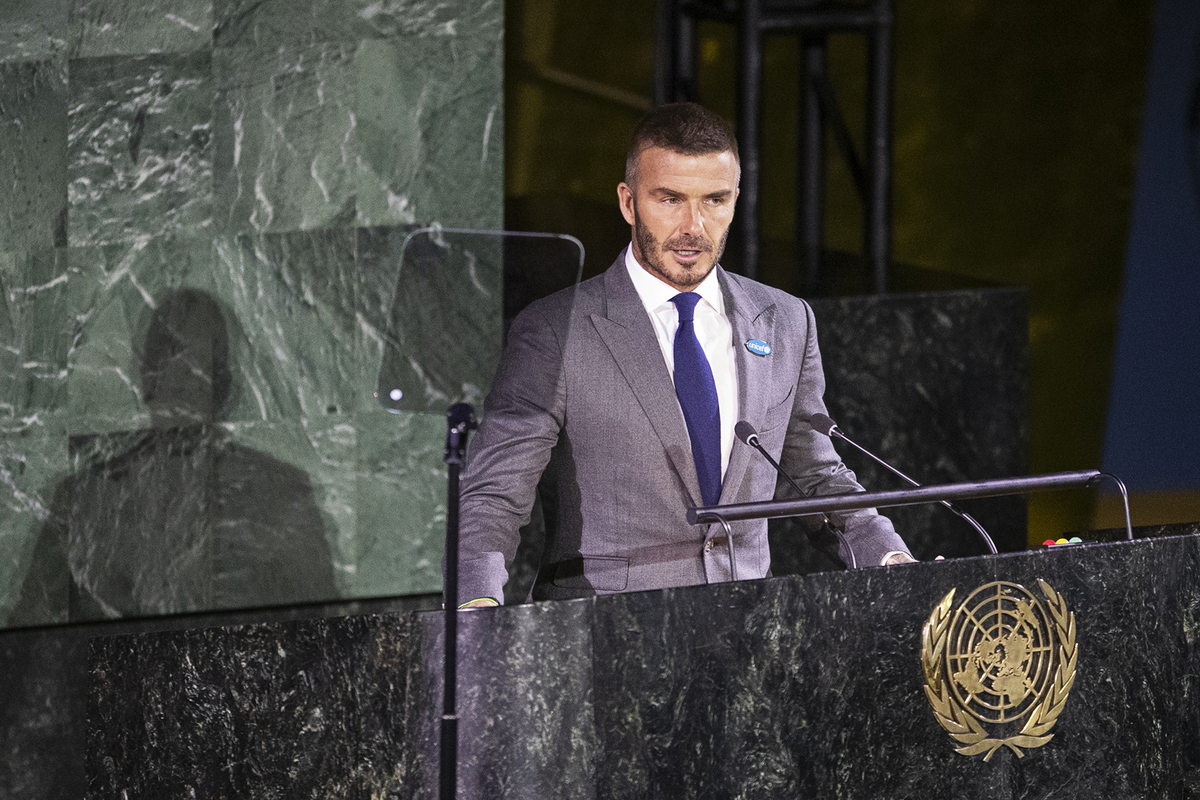
AT THE U.N. FOR THE 30TH ANNIVERSARY OF THE CONVENTION ON THE RIGHTS OF THE CHILD IN 2019
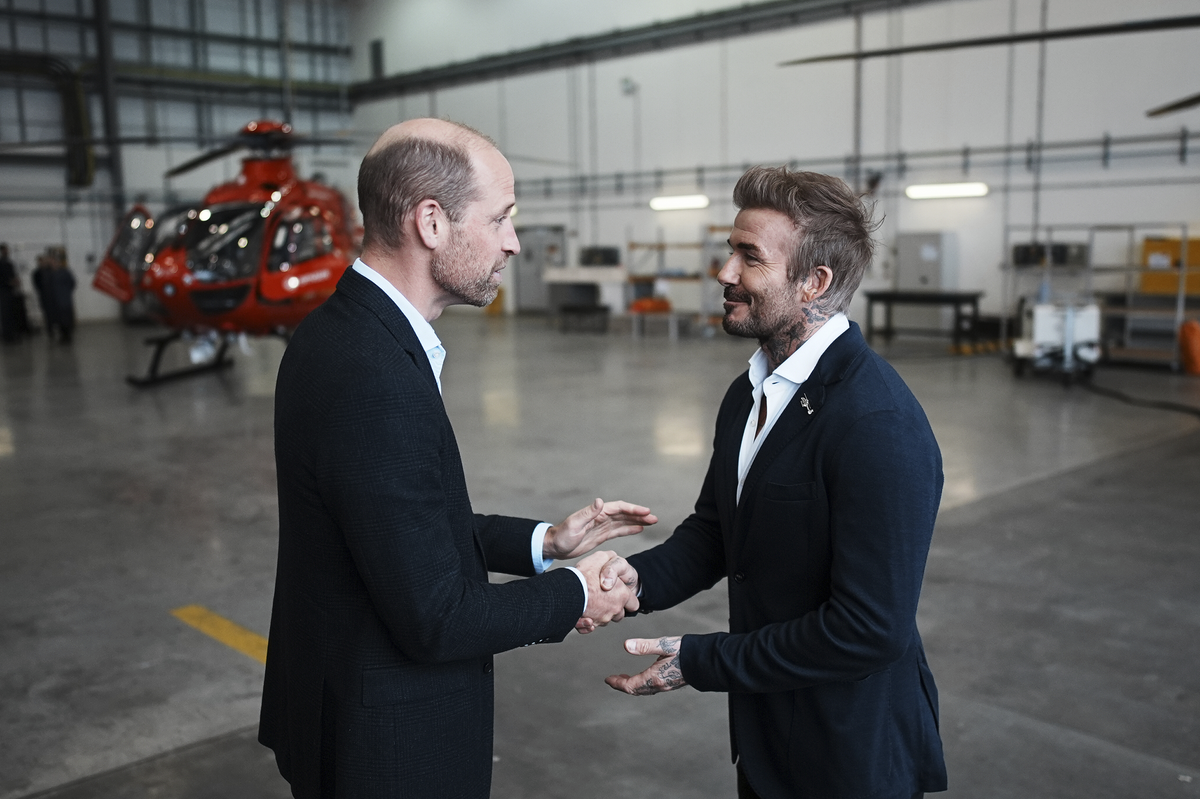
WITH PRINCE WILLIAM AFTER RAISING MONEY FOR EMERGENCY HELICOPTERS IN 2024
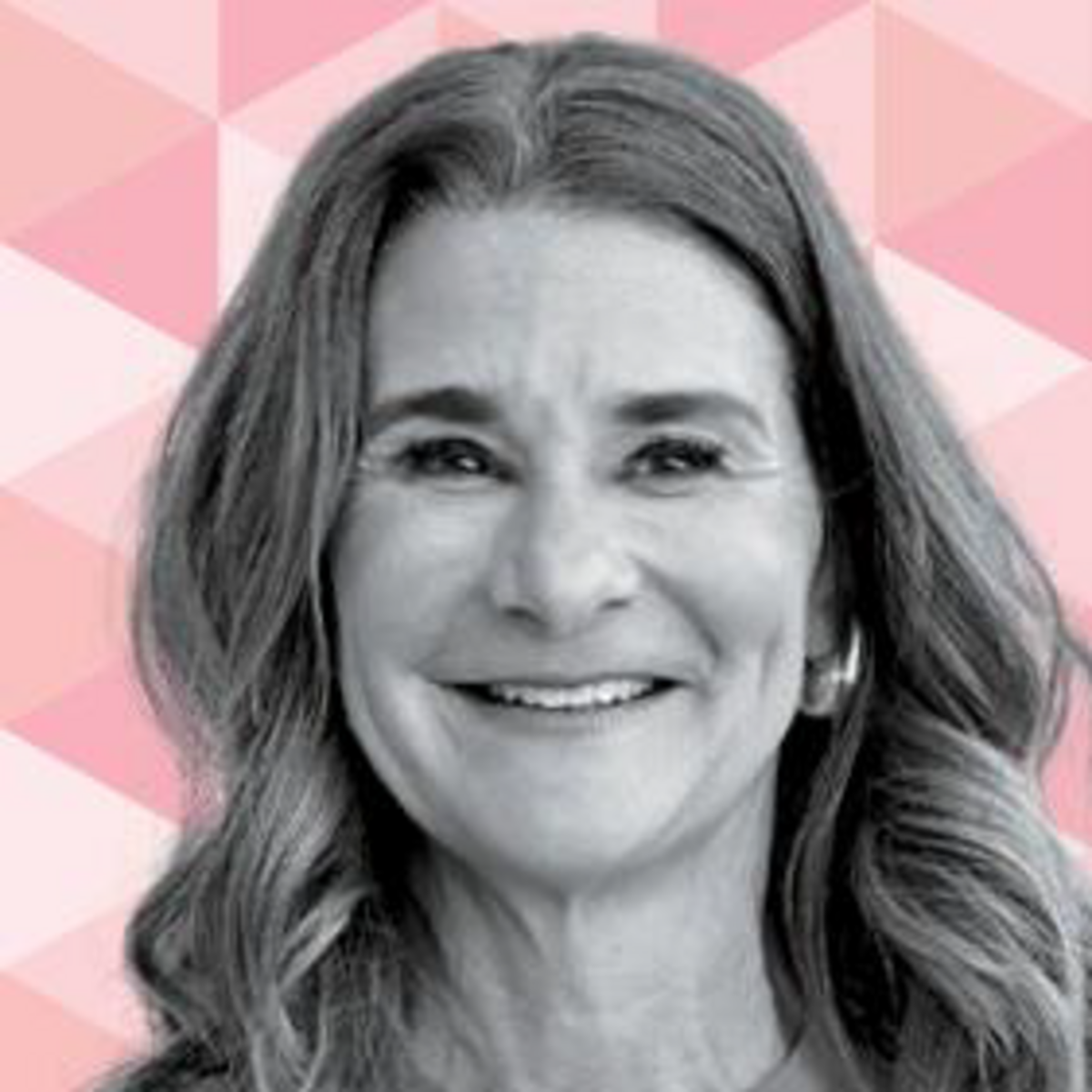
Melinda French Gates
UPLIFTING WOMEN AND FAMILIES
In June 2024, Melinda French Gates left the iconic foundation she started with her former husband Bill, and embarked on her solo philanthropic journey with a bang, giving away about $502 million in just a year. (While it’s not a competition, it was nearly three times as much as her ex donated that year.)
French Gates’ Pivotal Ventures blends investments, philanthropy, and advocacy, mostly targeted to women, girls, and families, both in the U.S. and internationally. “I believe in using every tool in my toolbox,” she told TIME shortly after she left the Gates Foundation. “Whether that’s philanthropic money, whether that’s private money I use for investing in social good or whether it’s money to do political giving.” She announced plans to distribute $1 billion over two years via Pivotal, including grants to such women as Ava DuVernay, Allyson Felix, and Jacinda Ardern, so they can in turn fund causes they deem worthwhile. —Belinda Luscombe
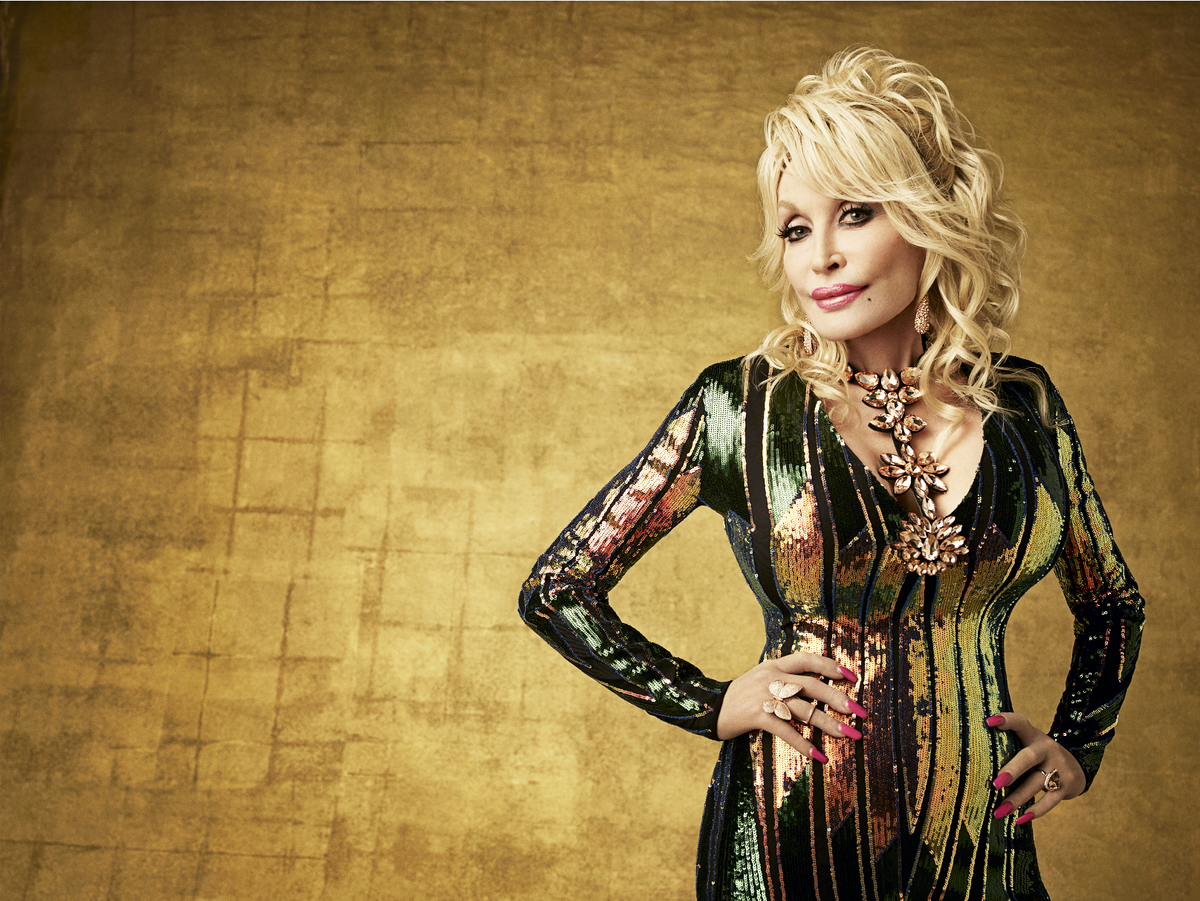
Dolly Parton
LONGTIME GIVER
Country-music icon Dolly Parton has been giving almost as long as she has been singing. The musician created the Dollywood Foundation in 1988 to decrease the dropout rate in her childhood home of Sevier County, Tennessee. The foundation supports initiatives to keep kids in school and make sure they can read. Its signature program, Imagination Library, has sent more than 270 million free, age-appropriate books to children under 5 across the U.S., as well as in Canada, the U.K., Ireland, and Australia.
Parton’s philanthropy, often focused in her home state, is as eclectic as her music. She was a major donor to COVID-19 vaccine research, giving $1 million to Vanderbilt University Medical Center in an effort that led to the development of the Moderna vaccine, and has also funded pediatric infectious-disease research at Vanderbilt. Parton received the Carnegie Medal of Philanthropy in 2022 in recognition of her generosity, and she shows no signs of changing course: in October 2024, she partnered with the Mountain Ways Foundation to give $1 million to flood victims affected by Hurricane Helene in East Tennessee. —Alana Semuels
Michael & Susan Dell
FOCUS ON EDUCATION
Michael and Susan Dell have given away $2.8 billion via their namesake foundation since its launch in 1999. Focused on education, it reaches an estimated 7 million students, from kindergartners to those in college, every year. —B.L.
Li Ka-shing
GLOBAL DONOR
At age 96, Hong Kong tycoon Li Ka-shing is still actively giving: last year, he donated $14 million to the University of Cambridge Early Cancer Institute as well as $15 million to Stanford University for a program to nurture entrepreneurs. —Charlie Campbell
Mukesh & Nita Ambani
EMPOWERING MILLIONS
Billionaires Mukesh and Nita Ambani’s Reliance Foundation has funded initiatives affecting millions of Indians, from sustainable agriculture in rural communities to water-conservation projects, scholarships, and school infrastructure. —Ellen Chang
Michael Bloomberg
MAKING MED SCHOOL FREE
Michael Bloomberg has so far donated more than $21 billion to causes ranging from climate to education to the arts. Last year he gave $1 billion to Johns Hopkins University to cover tuition for many medical students. —Justin Worland
Carlos Slim Helú
GIVING BIG IN LATIN AMERICA
Business magnate Carlos Slim Helú is the wealthiest person in Mexico and one of its biggest philanthropists. He’s given more than $4 billion since 2006 to causes from education to health care and road safety and disaster relief. —E.C.
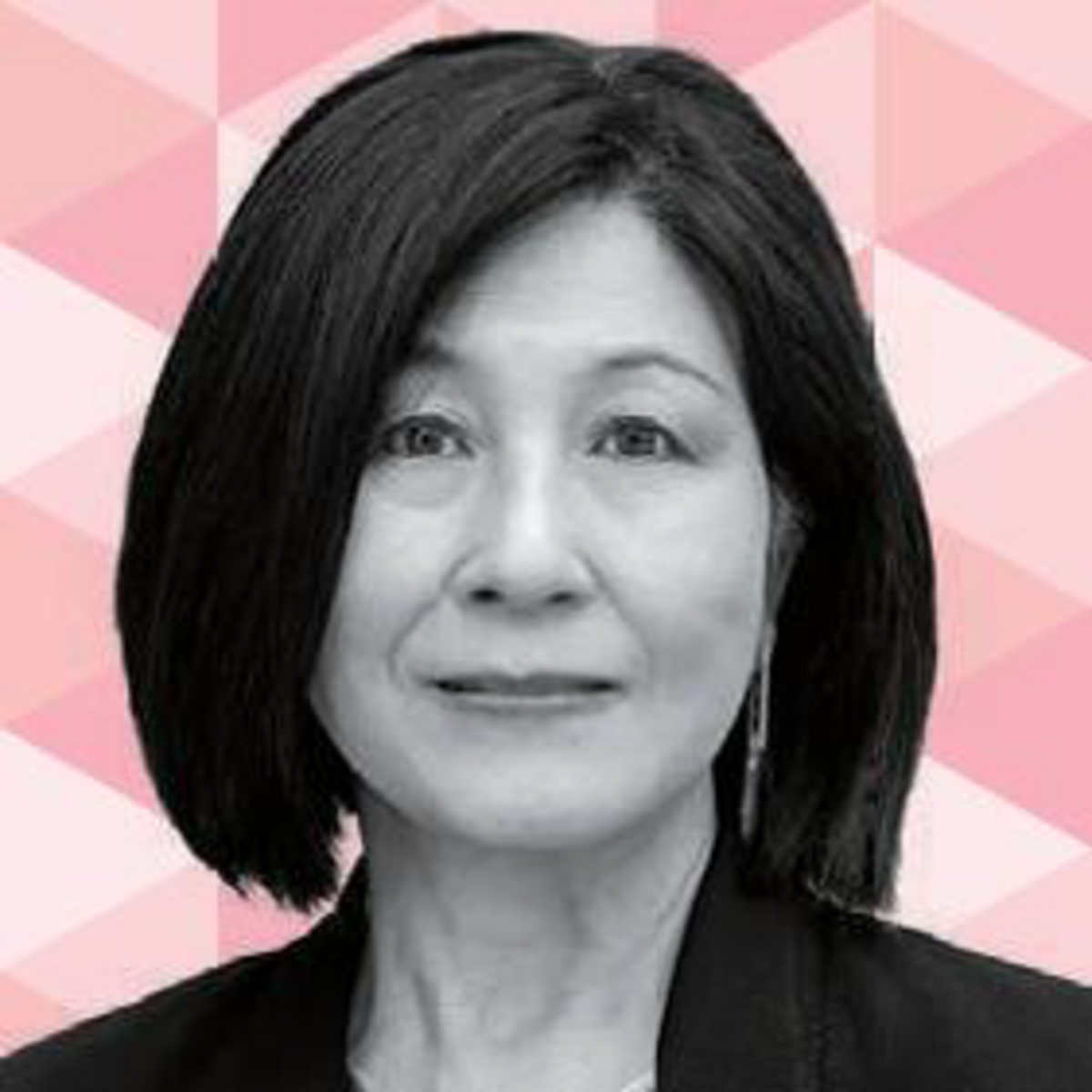
K. Lisa Yang
SUPPORTING SCIENTIFIC RESEARCH
Students at top U.S. universities may be familiar with the name K. Lisa Yang, which adorns several science centers. The retired investment banker, who donated a total of $74.5 million last year, has become a major funder of academic research aimed at preserving the planet’s ecosystems and helping people who are physically or cognitively disabled.
In February, she gifted Harvard University $30 million to set up a sister Brain-Body Center to one she established at MIT in 2022. In 2024, she donated $35 million to endow a wildlife health center at Cornell and $28 million to launch a research center at MIT—part of a $200 million, six-center research collective she started there in 2017 with the Center for Autism Research (co-founded with her ex-husband Hock E. Tan). “The things that we’re most passionate about are the things that touch our own lives,” says Yang, who has two children on the autism spectrum. —Kerri Anne Renzulli
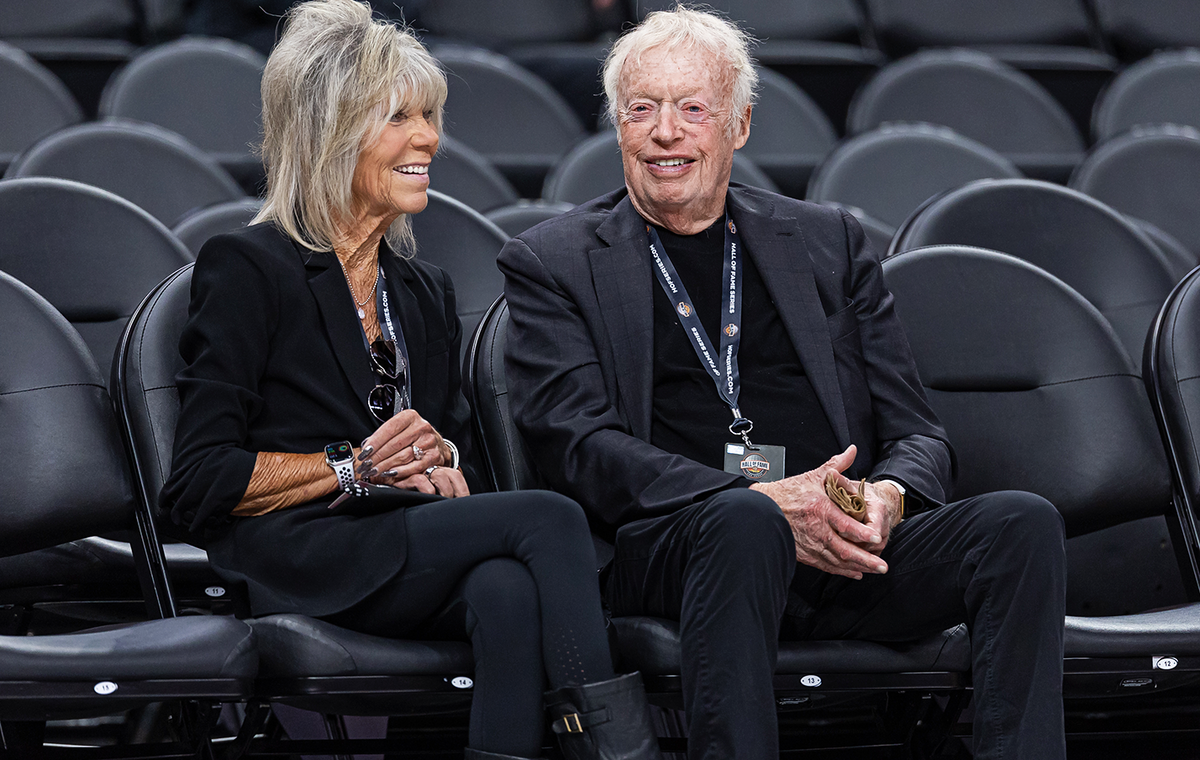
Phil Knight & Penny Knight
INVESTING IN COMMUNITIES
Nike co-founder Phil Knight and his wife Penny are among the most generous donors in the U.S., with estimated lifetime giving of $3.6 billion—including $370 million in 2024—often focused on education and community initiatives.
Their donations to academia often have a personal connection. The Knights have donated $1 billion to the University of Oregon, Phil’s alma mater, for an innovation hub focusing on biomedical research. They have also given more than $575 million to Stanford University, where Phil got his M.B.A.
Elsewhere, the Knights in 2023 pledged $400 million to the 1803 Fund, to strengthen the historically Black community in North and Northeast Portland. The nonprofit’s initial project centers on Albina, a formerly vibrant business and residential community noted for its music scene that was partially razed to make way for a highway and basketball arena. “I’m pretty proud of what it’s done so far,” Phil, 87, says of the foundation. “And I’m optimistic about what it will contribute in the future.” —Sean Gregory
Aliko Dangote
GIVING BACK TO AFRICA
Business magnate Aliko Dangote built a net worth of $23.9 billion through cement, agriculture, and oil-refining operations in Nigeria. His foundation, which he endowed with $1.25 billion in 2014, aims to give back to the continent that facilitated his success, spending an average of $35 million a year on programs across Africa. “Health, education, economic empowerment, disaster relief, and food—these are the five main things that any African nation needs,” he says.
The foundation is in the middle of a $100 million program to treat children with severe malnutrition. This year, it’s also repeating an initiative launched in 2024 to distribute more than 1 million bags of rice throughout Nigeria. A prior vaccine initiative, in partnership with the Bill and Melinda Gates Foundation and others, resulted in the World Health Organization announcing in 2015 that polio is no longer endemic in the country.
Education is a priority too. The foundation is broadening local efforts this year, including providing vocational training and constructing school complexes in Nigeria. “We need to create the next generation of African leaders,” he says. —Penelope Wang
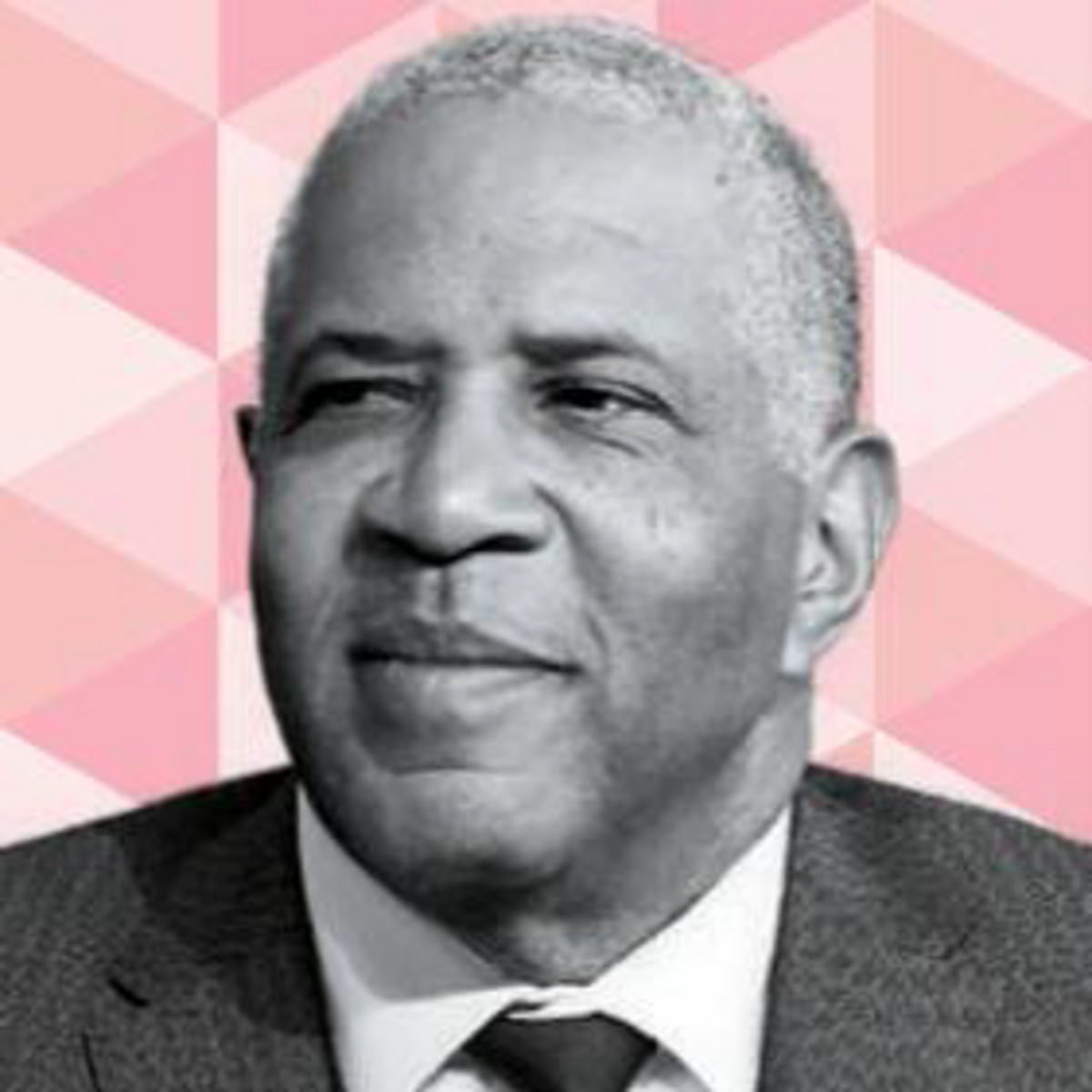
Robert F. Smith
UPLIFTING YOUNG PEOPLE
Finance billionaire Robert F. Smith’s best-known act of philanthropy came in 2019 when he made a $34 million promise during his Morehouse College commencement address to pay off the student debt of that year’s 396 graduates. The CEO has continued to center his giving—$265 million over the past decade—on education, housing, and health care initiatives to lift up communities of color.
Through his Fund II Foundation, he created InternXL, an online platform to connect 30,000 STEM students, mostly of color, with partner companies. Other programs include the Student Freedom Initiative, which offers low-cost loans and other financial assistance to students at historically Black colleges and universities, and grants to reduce disparities in health care outcomes for Black people.
Smith, the first Black person to sign the Giving Pledge, has no plans to change the focus of his giving despite the antidiversity push in Washington, believing the country is better off when everyone is healthier, better educated, and more capable of economic success. He says, “That isn’t a race thing, that’s a fact thing.” —Steve Friess
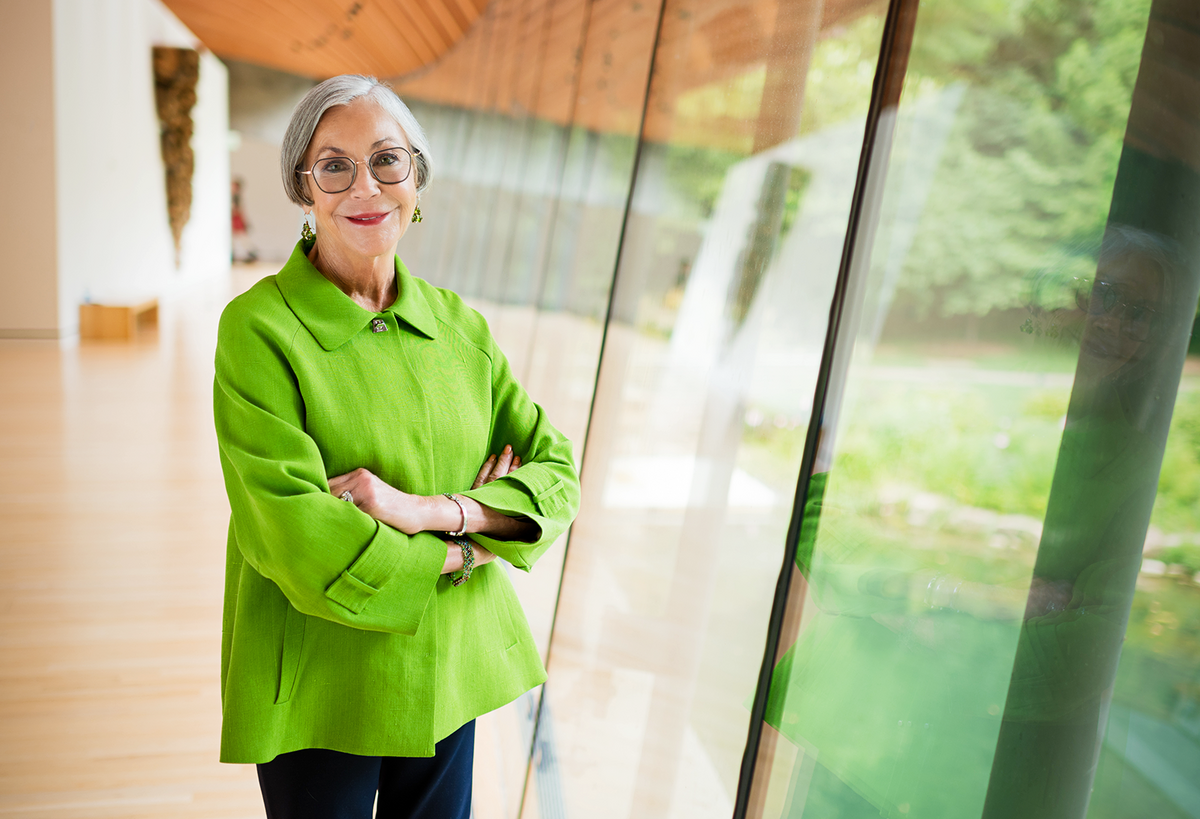
Alice L. Walton
FUNDING ART AND HOLISTIC HEALTH
With an estimated net worth of $101 billion, Walmart heir Alice L. Walton, 75, is the richest woman in the world. She has historically directed a lot of her giving—$1.5 billion so far—to the arts, founding the Crystal Bridges Museum in Bentonville, Ark., as well as the Art Bridges foundation, which helps regional galleries get access to major American works.
More recently Walton has turned her energy and money toward health care. In May, a new 85,000-sq.-ft. home for the Waltonfunded Heartland Whole Health Institute opened on the Crystal Bridges campus, complete with art galleries and event spaces as well as wellness services, designed to facilitate connections between art, nature, and health. And from July, the Alice L. Walton School of Medicine, also in Bentonville, will give its first five cohorts of students tuition without fees. Also coming in 2026: a major expansion of the Crystal Bridges Museum, which will increase its capacity by 50%. —Belinda Luscombe
Reed Hastings & Patty Quillin
FUNDING EDUCATION
Netflix co-founder Reed Hastings anda his wife Patty Quillin focus their giving on education. They’ve donated to HBCUs and created a research initiative on AI and humanity. —Alana Semuels
Oprah Winfrey
GREAT SERVICE
Via her foundation, Oprah Winfrey has given away more than $500 million, mostly to education. But during crises, she also pitches in as eagerly as she gave out cars on TV, like the $30 million she sent to Maui after the fires. —B.L..
Asha Curran
BOOSTING GENEROSITY
GivingTuesday CEO Asha Curran helped nonprofits across the U.S. raise a record-breaking $3.6 billion in one day last November, a 16% increase in donations from 2023. More than 36 million people participated globally. —K.A.R.
MacKenzie Scott
REWRITING THE RULES
MacKenzie Scott has given $19 billion to more than 2,400 groups since 2019, usually without being asked and with no strings attached. In January, the Center for Effective Philanthropy called her strategy “transformative.” —B.L.
Tim Gill & Scott Miller
LGBTQ+ CHAMPIONS
Tim Gill and Scott Miller have been key donors supporting marriage equality and LGBTQ+ causes in the U.S., including funding litigation. It can feel slow, but Gill says, “We will make incremental progress toward a freer and more fair world.” —Peter Carbonara
Ken Griffin
MAKING AN IMPACT
Investor Ken Griffin’s approach to philanthropy has a lot in common with his strategy at his hedge fund Citadel: both are focused on evidence-based initiatives with the potential to deliver high-impact, scalable results. “I want to be seen first and foremost as a person who supports problem solvers,” he says.
Griffin, whose lifetime giving exceeds $2 billion, donated $400 million in 2023, in combination with the David Geffen Foundation, to the Memorial Sloan Kettering Cancer Center, to drive state-of-the-art cancer care, and $50 million last year to advance neurological care at Baptist Health South Florida. Other recent donations include $20 million to Miami Dade College for scholarships and $15 million to the National Constitution Center. —Ellen Chang
Jacob Pruitt
GIANT GRANTMAKER
Fidelity Charitable president Jacob Pruitt leads the nation’s largest donor-advised fund and the biggest grantmaker. Last year it made 2.7 million grants, from disaster relief to education, totaling nearly $15 billion, up 25% from 2023. —P.C.
Steve & Connie Ballmer
WILDFIRE RELIEF
Los Angeles was still smoldering on Jan. 30 when Steve and Connie Ballmer hosted FireAid, a concert of A-list stars, raising about $100 million for wildfire relief, including a matching donation by the Ballmers. —S.F..
Azim Premji
IMPROVING EDUCATION
Tech magnate Azim Premji has directed his wealth to systematically improving public education in India with grants to nonprofits, direct teacher training, and policy advocacy shaping the national curriculum. —Tharin Pillay
Warren Buffett
RESHAPING PHILANTHROPY
Billionaire investor Warren Buffett, 94, plans to donate more than 99% of his wealth, which is valued around $150 billion, during his lifetime or upon his death. HeH has long focused his giving on education, agriculture, and antipoverty programs. —A.S.
ODD ANDERSEN—AFP/GETTY IMAGES; MARY ALTAFFER—AP; PRESS ASSOCIATION/AP; DAVID TURNLEY—GETTY IMAGES; BECKHAM: TED ALJIBE—AFP/GETTY IMAGES; FRENCH GATES: CHRISTIAN LIEWIG—CORBIS/GETTY IMAGES; PARTON: ART STREIBER—AUGUST; YANG: COURTESY CAITLIN CUNNINGHAM; KNIGHT: MICHAEL HICKEY—GETTY IMAGES; SMITH: RICHARD DREW—AP: WALTON: COURTESY ALICE L. WALTON FOUNDATION
TIME100 PHILANTHROPY TRAILBLAZERS
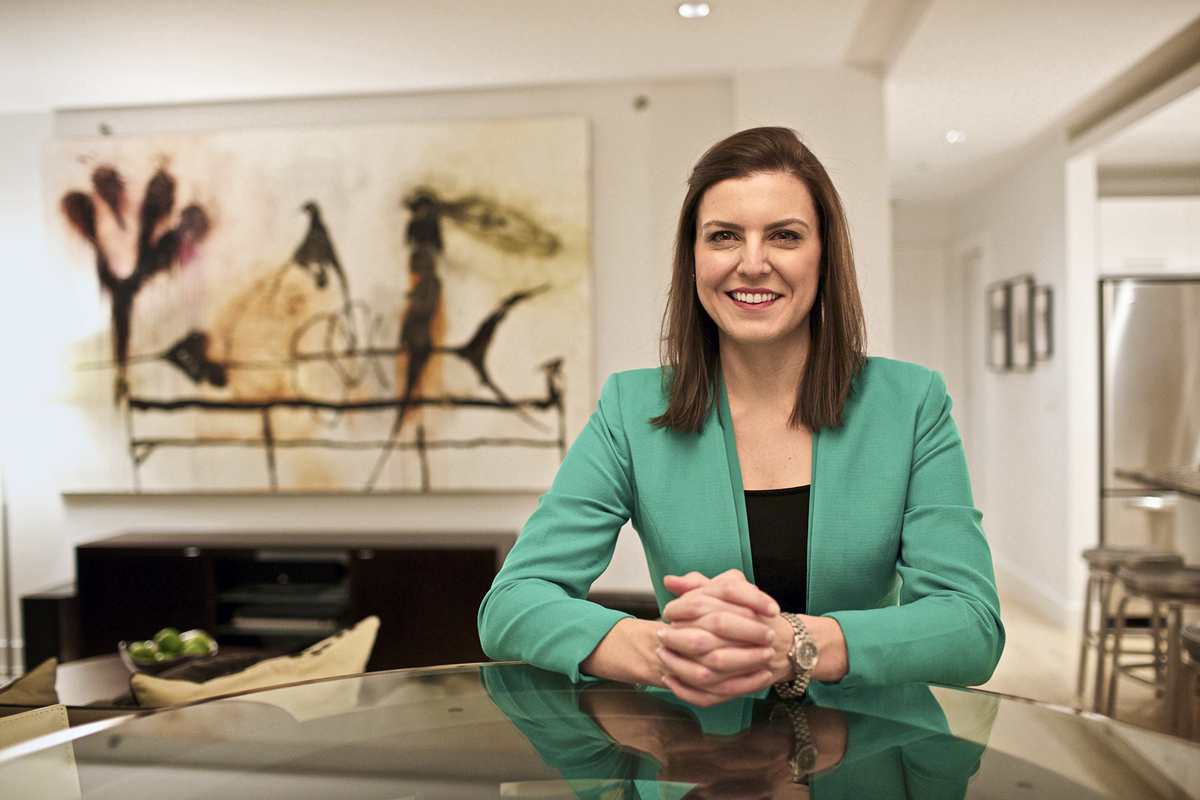
LORENZ CO-FOUNDED THE GIVING PLEDGE NEXT GEN IN 2014
Katherine Lorenz
LEADING NEXT-GEN HEIRS
BEING AN HEIR TO A BILLION-DOLLAR FORTUNE certainly has its benefits. It can also come with big challenges, from the intricacies of figuring out how best to carry out a loved one’s legacy to the infighting that can sometimes boil over in families when great wealth is passed down. Katherine Lorenz, granddaughter of Texas oilman George P. Mitchell, knows the terrain—and she’s dedicated to helping her fellow heirs navigate it.
Lorenz is the leader of the Giving Pledge Next Generation group, the heirs of the ultra-wealthy philanthropists who formally promised to donate the majority of their wealth to charitable causes in their lifetimes or their wills. Lorenz co-founded the group in 2014 with 24 members. It now has 300, ranging in age from 21 to 75, as the press of the challenges they’re likely to face becomes more urgent. Dozens of the nearly 250 billionaires who signed the Giving Pledge have died before wrapping up their giving plans. And about 50 of the remaining Pledgers are over age 80.
Her goal is to provide heirs with resources to help them establish decisionmaking processes, reduce family arguments, and deal with emotionally fraught questions like how strictly they need to adhere to their loved one’s giving strategies vs. their own ideas about how and where they can do the most good. Lorenz, who is president of the Cynthia and George Mitchell Foundation, the nonprofit that her grandparents established in 1978, says, “Carrying out someone else’s legacy is not easy.”
‘GIVING AWAY MONEY IS EASY. MAKING AN IMPACT IS HARD.’
—KATHERINE LORENZ, PRESIDENT, CYNTHIA AND GEORGE MITCHELL FOUNDATION
To help, the Next Gen group offers in-person training sessions, WhatsApp chats, and access to consultants who can offer advice about ways to divide donation pools that allow disagreeing heirs to fund different charities. Last year, for the first time, the Next Gen group also attended the Giving Pledgers’ annual meeting. Such big multigenerational gatherings are helpful, says Lorenz, who previously served as a senior adviser for the National Center for Family Philanthropy and deputy director of the Institute for Philanthropy. “When you hear from other families what’s worked for them or what hasn’t worked, you get ideas,” she says. Lorenz knows firsthand how challenging—and rewarding—inheriting the responsibility for fulfilling a pledge can be. She was steeped in her grandfather’s concerns about improving sustainability—Mitchell made his fortune by pioneering the shale-gas extraction method commonly known as fracking—and leaving a legacy for the greater good. He was also deeply concerned about energy and environmental conservation. She recalls, “Every time you saw him, he’d say, ‘If you can’t make the world work with 4 billion people, how are you going to make it work with 10 billion people? What are you going to do about it?’”
Yet she also believes the Next Gen has to figure out how to forge their own giving path. Newbie philanthropists often start out by writing checks to their alma mater, Lorenz says. But as they begin to zero in on what causes they really care about and where their dollars will do the most good, donations often shift to organizations that have a more direct effect on a community, such as food banks, land trusts, or arts groups. “Giving away money is easy,” says Lorenz. “Making an impact is hard.”
In addition to helping families increase the size and impact of their donations, Lorenz says her goal is to help heirs turn a legacy from a potentially stressful burden to a joyous activity that brings relatives together—an outcome with benefits beyond the family. She says, “When you enjoy it more, you give more.”
—KIM CLARK
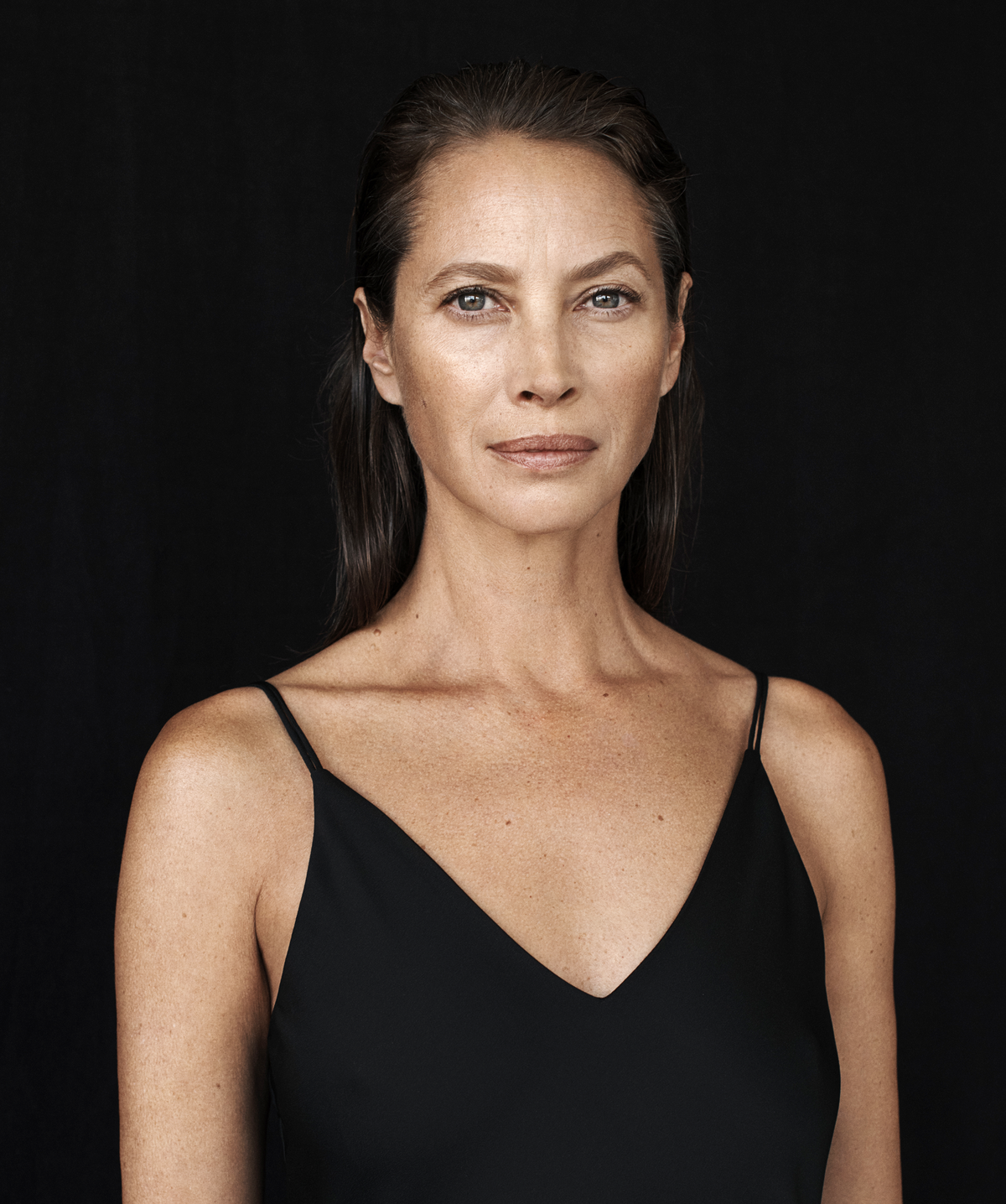
Christy Turlington Burns*
IMPROVING MATERNAL HEALTH CARE
For the past 15 years, Christy Turlington Burns has been on a mission to make sure women have access to the kind of medical care that saved her life when she experienced postpartum complications.
Her nonprofit Every Mother Counts (EMC) has provided support to nearly 2 million women, families, and health care workers and invested $48 million in community-led programs, advocacy, and awareness. EMC is fundraising for its Endurance Fund, which will provide ongoing support to community-based organizations, provide emergency grants to areas affected by crisis, and finance continued care for women in marginalized communities. “Our investments are small on the scale of what’s needed, but they point to what works,” she says. “There are very few global challenges that aren’t intractable, but this one is solvable.” —Sandra Block

Lin-Manuel Miranda
BREAKING DOWN BARRIERS
While Latinos make up 19% of the U.S. population and 24% of movie-ticket buyers, they have fewer than 5% of film-industry roles. Hamilton creator Lin-Manuel Miranda and his family are out to change that. Colectivo, a new initiative from their Miranda Family Fund, in partnership with Tribeca Studios and the Hispanic Federation, will provide three emerging Latino filmmakers with funding and mentorship; the resulting short films will premiere at the Tribeca Festival in June. Each film team will also include participants from the Miranda Family Fellows program, which offers scholarships, training, and mentoring to people from underrepresented communities working in theater, TV, and film.
For the Mirandas, philanthropy is a family affair, with mom, psychologist Luz Towns-Miranda, and dad, community activist Luis A. Miranda Jr., involved, along with their children and the siblings’ spouses. Says Miranda: “All of our philanthropy is rooted in giving underrepresented groups a chance to make art and get in the door without the barriers that so often leave us out.” —Diane Harris
Nick Allardice
MOBILIZING MOON SHOTS
Nick Allardice is CEO of Give-Directly, which provides unconditional cash to people living in extreme poverty, and is making big bets testing new programs. “The world needs more moon shots,” he says. —Kerri Anne Renzulli
Stephen & Ayesha Curry
SERVING STUDENTS
Last August, basketball champion Stephen Curry and his wife, entrepreneur Ayesha Curry, pledged $25 million to narrow the literacy gap in Oakland, Calif.’s underserved communities through small-group tutoring. —Sean Gregory
Petra Nemcova
REBUILDING POST-DISASTER
Supermodel Petra Nemcova’s nonprofit works to accelerate the rebuilding of safe schools and homes after natural disasters, from the L.A. wildfires to hurricanes, and supports Ukrainian refugee children. —Harry Booth
Richard Curtis & Lenny Henry
HARNESSING LAUGHTER
After witnessing firsthand the devastation of famine in Ethiopia in the 1980s, British screenwriter and producer Richard Curtis returned home with an idea to use comedy to raise funds to help those in need. Fronted by beloved British comedian Lenny Henry and other famous faces, it became Comic Relief, known for its Red Nose Day fundraiser and annual telethons. “We took a big gamble in believing that people can take tragedy and comedy on the same night,” says Curtis, who also co-founded the Make Poverty History campaign in 2004.
That gamble has paid off. Comic Relief has raised over $2 billion for charity projects tackling poverty and injustice, supporting more than 100 million people globally. To date, the nonprofit’s stateside arm, Comic Relief U.S., has raised more than $436 million.
Earlier this year, Comic Relief’s 40th, Curtis and Henry were honored with a Carnegie Medal of Philanthropy Catalyst Award.
Henry credits the success of Comic Relief to its ability to appeal to the public’s will to do “the right thing.” He says, “I think it is really important in terms of citizenship, that we know when it’s our turn to do something, and we have the energy and the wherewithal to do it.” —Ayesha Javed
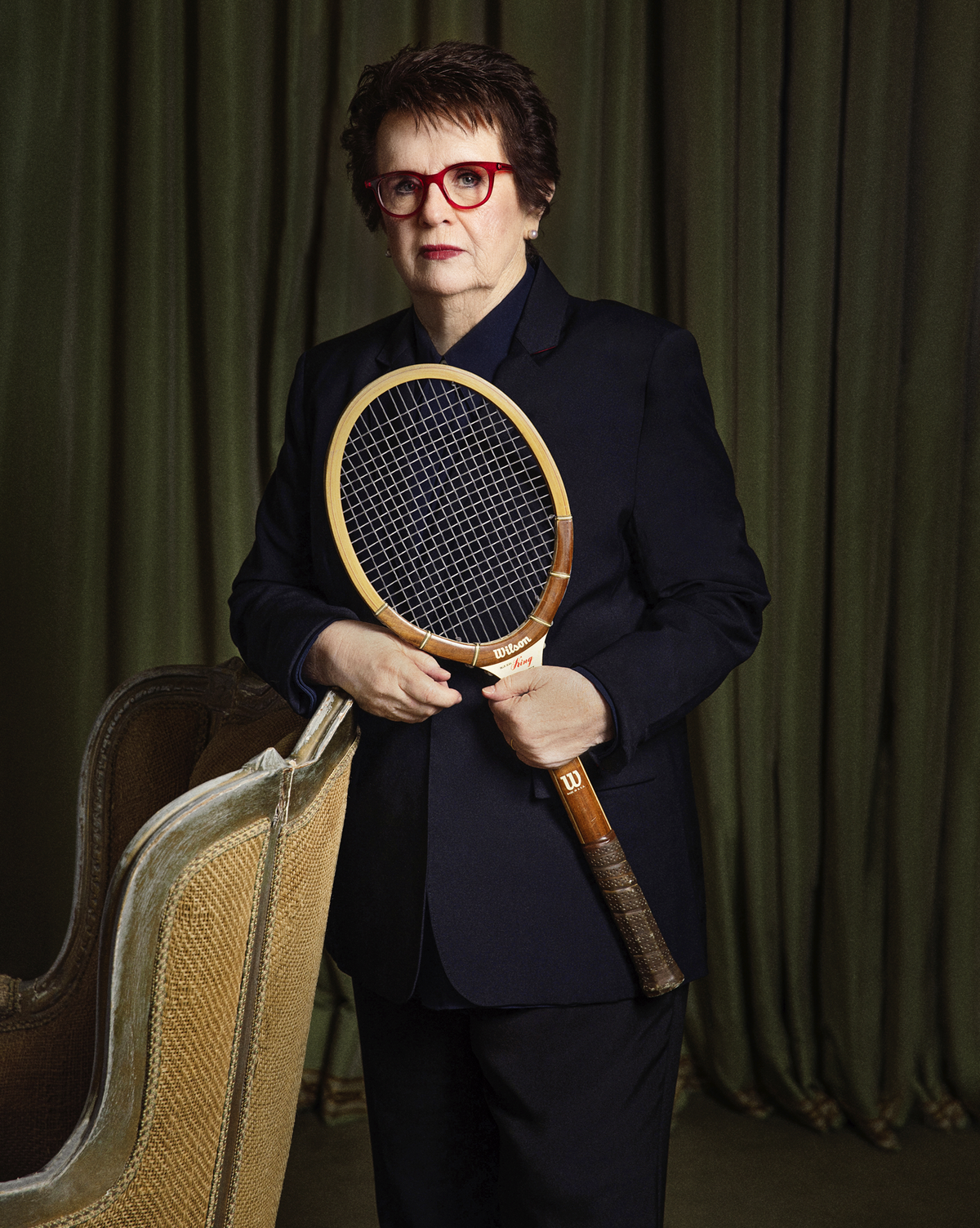
Billie Jean King
CHAMPIONING WOMEN IN SPORTS
How much impact can you have with a $5,000 donation? If you’re tennis legend Billie Jean King, quite a lot.
That’s how much King gifted in seed money in 1974 to launch the Women’s Sports Foundation (WSF), which has since channeled over $100 million into creating opportunities for women in sports through research and grants to individual athletes and nonprofits. That initial gift reflected King’s trademark fusion of activism and savvy institution-building, honed during a pivotal year in 1973 when she co-founded the Women’s Tennis Association, successfully lobbied the U.S. Open to become the first major tournament to offer equal prize money, and beat Bobby Riggs in the historic “Battle of the Sexes” match.
In the ensuing five decades, she’s remained dedicated to advocacy for equality in sports and to philanthropy that supports the power of sports to transform lives and foster social change. Her Billie Jean King Foundation provides grants to the WSF, where she is honorary chair, as well as awards for young sports leaders.
Celebrating WSF’s 50th anniversary in October, King said, “We must all remain committed to protecting the progress made, while working toward a future where the playing field is truly level.” —Harry Booth
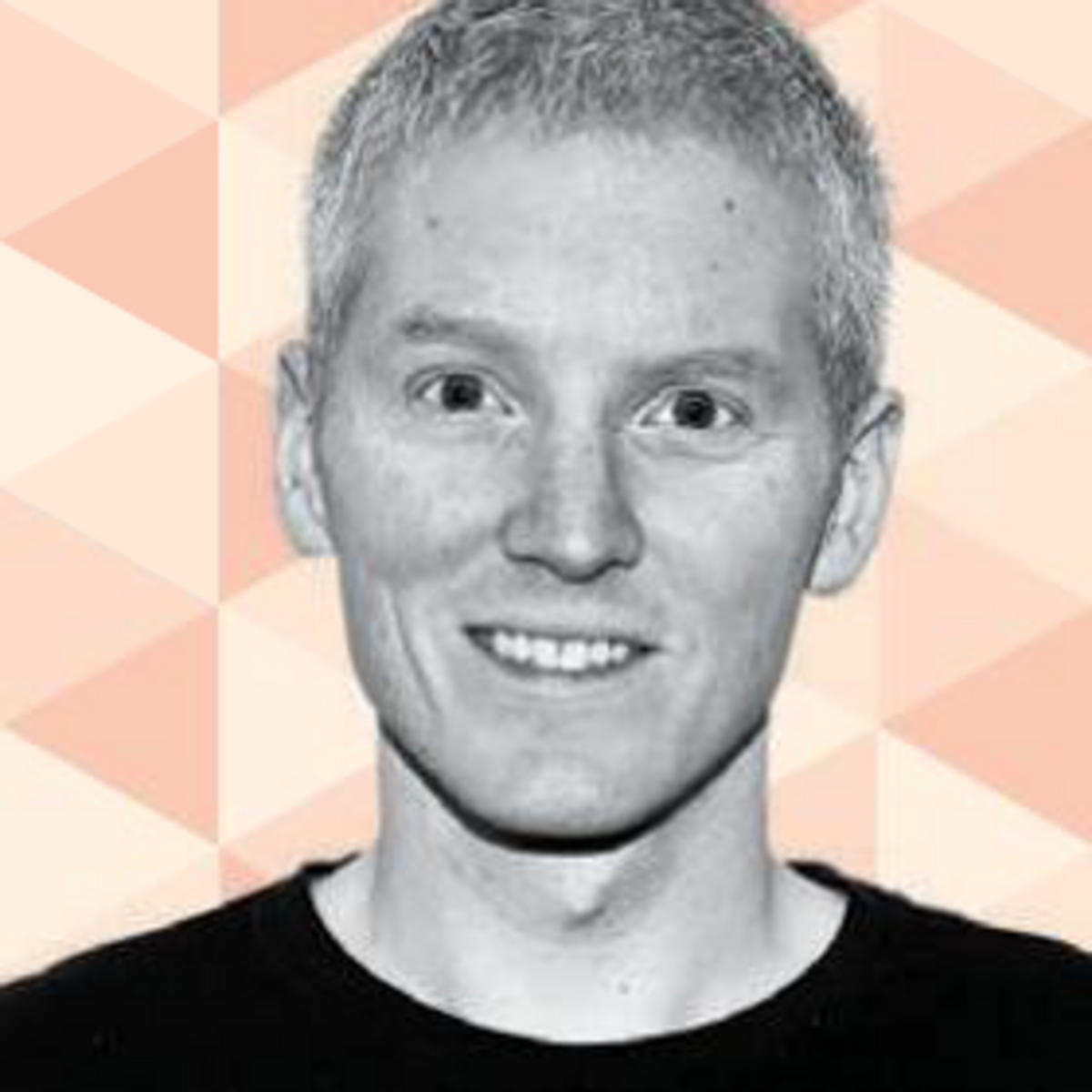
Patrick Collison
BOOSTING RESEARCH
“May the wind be always at your back” is the Irish blessing for a swift journey. It evidently worked for billionaire Stripe co-founder Patrick Collison, who started out as a schoolboy entrepreneur in 2007 at 18.
Speed is also the byword for Collison’s approach to philanthropy. In 2020 he co-launched Fast Grants, a rapid-funding system for scientists researching solutions to the COVID-19 pandemic, and in 2021 he was a founding donor of the nonprofit Arc Institute, launched with an initial endowment of $650 million. It aims to expedite scientific research into complex diseases by providing multiyear funding.
In January, Arc announced a partnership with Nvidia to fast-track scientific research by developing and publicly sharing powerful computational tools that advance biomedical discovery—including its recently launched open-source model, EVO 2, which combines AI and biology to help uncover potentially lifesaving targeted therapies. The goal: “to accelerate scientific progress, understand the root causes of disease, and narrow the gap between discoveries and impact on patients.” —Jackie Hunter
María José Iturralde
SAVING THE AMAZON
María José Iturralde leads Fundación Pachaysana, an Ecuadorian nonprofit that partners with Indigenous communities to restore the rainforest, including paying locals to be stewards of the land. —H.B.
Jeff Atwood
GIVING WITH URGENCY
In January, tech entrepreneur Jeff Atwood committed to giving away half of his wealth in the next five years. He’s started with a bang, donating $1 million each to eight nonprofits, including support for veterans and children in poverty. —Sandra Block
Byron & Tina Trott
COLLEGE FOR RURAL KIDS
Byron and Tina Trott have helped 80,000 rural students pursue college and other postsecondary school paths. And they’re looking to expand: in 2024 they pledged to donate an additional $130 million over the next decade. —S.B.
Yousriya Loza-Sawiris
PATHS FROM POVERTY
Yousriya Loza-Sawiris, matriarch of one of Egypt’s wealthiest families, has spent over 40 years leveraging her family’s power and influence to create pathways out of poverty for marginalized Egyptians. —T.P.
Strive & Tsitsi Masiyiwa
HELPING AFRICANS THRIVE
Econet founder Strive Masiyiwa and his wife Tsitsi, a social entrepreneur, have devoted much of their estimated $1.2 billion fortune to empowering Africa’s people.
Their HigherLife Foundation was created to give educational support to orphans from their native Zimbabwe. It now focuses on education, health, disaster relief, and rural entrepreneurship to help communities across Africa thrive. It’s provided over 250,000 scholarships and trainings and invested $100 million in job creation and $60 million in health care and crisis response.
In May, Tsitsi announced their nonprofit Delta Philanthropies was a founding donor in a $600 million fund to improve newborn and maternal health on the continent. —Tharin Pillay

Eric Church
AIDING HURRICANE HELENE RECOVERY
Country star Eric Church spends about half of his year in Avery County, North Carolina, a rural, mountainous, and low-income area of his home state. But last September, Hurricane Helene devastated the area.
To support his community, Church mobilized his influence and fan base, organizing Concert for Carolina with fellow country star Luke Combs, which raised over $24.5 million. Church also expedited the release of his single “Darkest Hour,” donating all royalties to those impacted by Helene.
Half of the show’s proceeds went to Church’s nonprofit, Chief Cares. Church and his team decided to buy $850,000 worth of land in Avery County, to build around 45 homes in an effort to provide affordable housing for families, who are expected to move in by late summer. After three years, they will be given the opportunity to buy their homes with financial support from Church’s nonprofit.
While it’s not uncommon to relocate after a disaster, Church believes local people, “who are going to continue the values and have pride in that community,” are the strongest asset for recovery. “We’re giving people a chance to have a permanent home that they can live in for the rest of their lives, and keep them in the community,” he says. —Andrew R. Chow

Marlene Engelhorn
GIVING WEALTH AWAY
What do you do when you inherit millions but don’t believe you deserve the money? Austrian heiress Marlene Engelhorn tore up the ultra-rich playbook and let a group of strangers decide.
Engelhorn received millions after her grandmother’s death in 2022 in Austria, where there is no inheritance tax, reinforcing her view that unearned wealth undermines democracy.
Last year, she invited a group representative of Austria’s population, from all walks of life, to decide on her behalf how to give away €25 million ($27 million), which represents the bulk of her inheritance and at least 90% of her total wealth. After consulting with experts, the Good Council for Redistribution agreed to split the money among 77 organizations, which tackle issues such as tax policy, climate protection, and human rights.
Engelhorn entrusted the group, she says, because “if you want democracy, you have to abolish monarchy and any structure that resembles it”—including inherited wealth. —H.B.
Susan Fales-Hill
DIVERSITY IN THE ARTS
TV writer-producer Susan Fales-Hill is a prodigious fundraiser, pushing American Ballet Theatre to foster new talent in diverse communities. “It’s all about reinforcing our common humanity,” she says. —Steve Friess
Michele Kang
UPLIFTING WOMEN
Michele Kang is a leading investor in women’s sports, pledging $55 million to U.S. Soccer to help build “a future where women’s sports are fully resourced, celebrated, and respected.” .” —Sean Gregory
Nikhil Kamath
SHARING HIS WEALTH
Billionaire Nikhil Kamath has donated millions to environmental and educational projects. His Young India Philanthropic Pledge asks wealthy Indians under 45 to give away at least 25% of their wealth. —Kim Clark
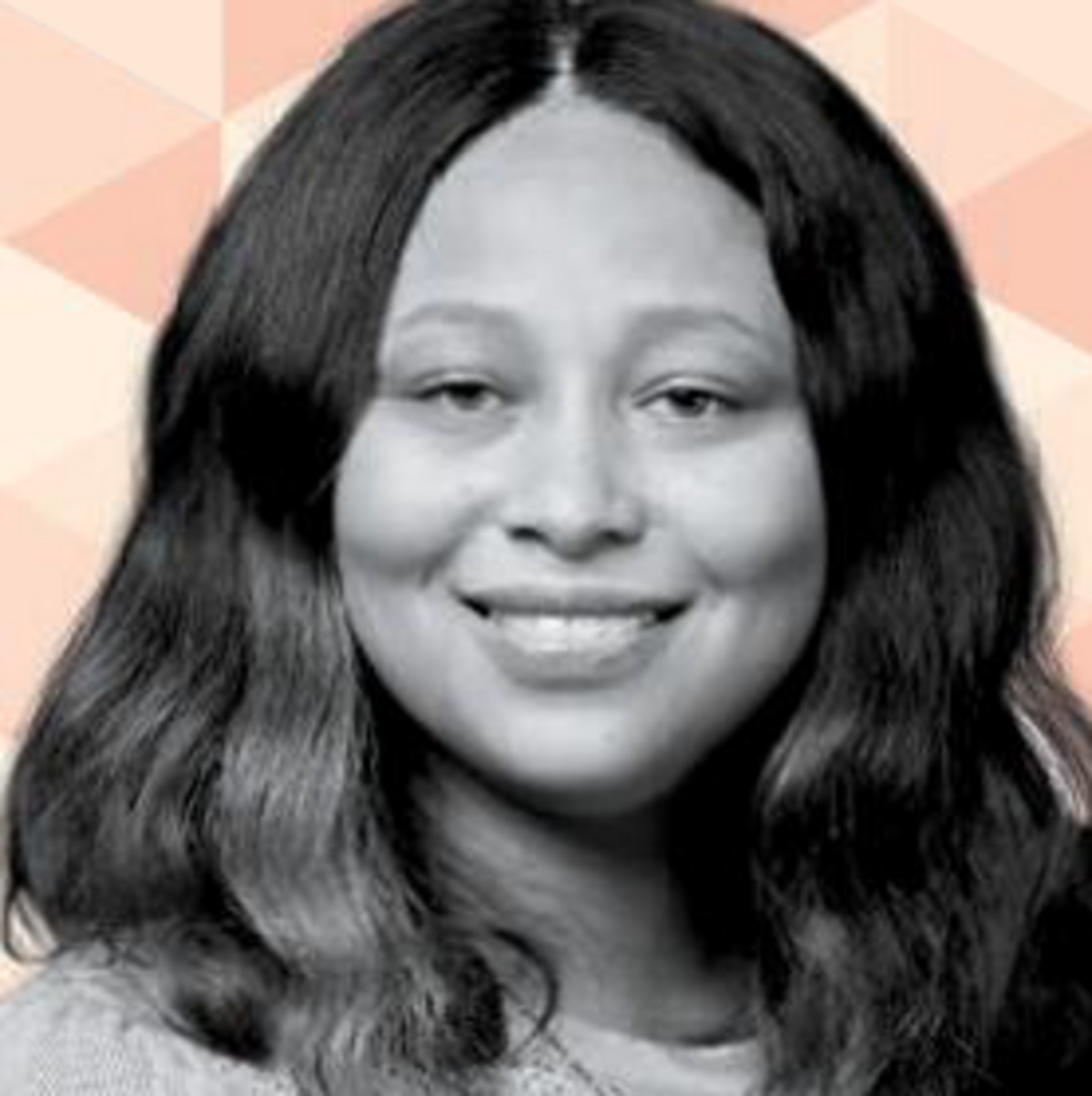
Tiffany Benjamin
FOCUSING GIVING
Last fall, the Humana Foundation donated $15.2 million to nonprofits working to improve the emotional health and nutrition of seniors and children. The grants were part of CEO Tiffany Benjamin’s larger vision to eliminate barriers in health care—an approach that garnered her the 2024 Council on Foundations award for outstanding leadership in corporate philanthropy.
Since taking over in 2022, Benjamin has reined in the foundation’s once scattered giving strategy to concentrate on mental health, food scarcity, and novel health interventions for chronic conditions. Disaster relief is also a priority: in the past year, the foundation sent $1.5 million in aid for recovery efforts after Hurricanes Milton and Helene, plus an additional $250,000 to help flooding victims in Kentucky. She says, “My favorite thing is when we invest in an organization at a tricky time and they tell us: Because of your investment, we were able to do this amazing, big thing.” —Kerri Anne Renzulli
*DISCLOSURE: TIME’S OWNERS MARC AND LYNNE BENIOFF HAVE SUPPORTED EVERY MOTHER COUNTS
LORENZ: BENJAMIN NORMAN—THE NEW YORK TIMES/REDUX; TURLINGTON: PAOLA KUDACKI—TRUNK ARCHIVE; MIRANDA: COREY NICKOLS—GETTY IMAGES; KING: CELESTE SLOMAN—TRUNK ARCHIVE; COLLISON: PHILLIP FARAONE—WIRES/GETTY IMAGES; CHURCH: AMY HARRIS—INVISION/AP; ENGELHORN: GENE GLOVER—AGENTUR FOCUS/REDUX; BENJAMIN: COURTESY HUMANA FOUNDATION
TIME100 PHILANTHROPY LEADERS

WALKER LEADS THE $16 BILLION FORD FOUNDATION, FOUNDED BY HENRY FORD IN 1936
Darren Walker
DRIVING TRANSFORMATION
IN THE EARLY MONTHS OF THE PANDEMIC, FORD Foundation president Darren Walker came up with a radical idea. With interest rates near zero and stocks tanking, he posited major philanthropies should issue 50-year bonds to raise money for COVID-19 relief. It would save them from having to sell assets at the low values of the time. “It was an arbitrage play, really,” he says.
Ford’s “social bond,” the first in U.S. nonprofit history, raised $1 billion to buck up hundreds of nonprofit grantees during the unprecedented crisis. He lobbied 14 other large groups to also issue bonds, but only four joined in.
“Too many operate from a culture of no as opposed to asking, How do I get to yes?” Walker says. “I believe philanthropy should be doing the bold, risk-taking work that the government or private sector isn’t willing to or cannot do.” After seeing how successful the social bonds were, some leaders who had initially refused issued them too.
Walker, who will step down from Ford at the end of 2025 after 12 years, has been a transformative figure. Under his direction, the $16 billion foundation, among the nation’s wealthiest, turned its attention sharply to issues of social justice and inequality, including boosting educational opportunities and civil rights for people of color and those with disabilities—he established the first disability-rights program by a major foundation. In 2014, he chaired the committee to lead Detroit out of bankruptcy, corralling automakers, unions, and other stakeholders to strike an $816 million “Grand Bargain”—Ford contributed $125 million—to pay off the city’s debt without jeopardizing the pensions of local-government workers or selling off the city’s art-museum collection.
‘PHILANTHROPY SHOULD BE DOING THE BOLD, RISK-TAKING WORK.’
—DARREN WALKER, FORD FOUNDATION PRESIDENT
This can-do instinct comes, he says, from his own rise from poverty in rural Texas to work first as a lawyer, then an international investor, and for the past quarter-century in nonprofits. In 2006, he became vice president of the Rockefeller Foundation. Seven years later, he took over Ford, becoming the first out gay Black man to lead a multibillion-dollar U.S. philanthropy. Walker is often the one others turn to for advice and perspective; he believes that’s partly because he’s one of the few who know what it’s like to be poor or marginalized. “My experience and my background are unusual,” he says. “I tend to see the world through a lens of abundance and not limitations.”
While he’s often lauded for his groundbreaking yet collaborative approach—winning the Council on Foundations Award for Distinguished Service in 2024—Walker regards his own record as “mixed” largely because, in focusing so heavily on poverty and diversity, he worries he failed to notice an important national shift. “These last few years, we’ve seen inequality impacting working-class white Americans who were not a demographic that was a priority for philanthropy because for most of the 20th century, they were doing better,” he says. “Now we’re seeing white households with indicators of poor well-being, downward mobility, and lower life expectancy. We need to pay attention to that.”
It’s one of the reasons he decided to step down—so a new leader can look at the Ford Foundation’s mission with new eyes. But Walker, whose longtime partner died in 2019, also wants to look at his own life anew.
His parting advice to fellow heads of philanthropies? “It’s easy to convince yourself that you’re a success when you’re a foundation president because people tell you you’re doing a good job all the time,” Walker says. “Don’t believe that. We need to assess ourselves with some humility.”
—STEVE FRIESS
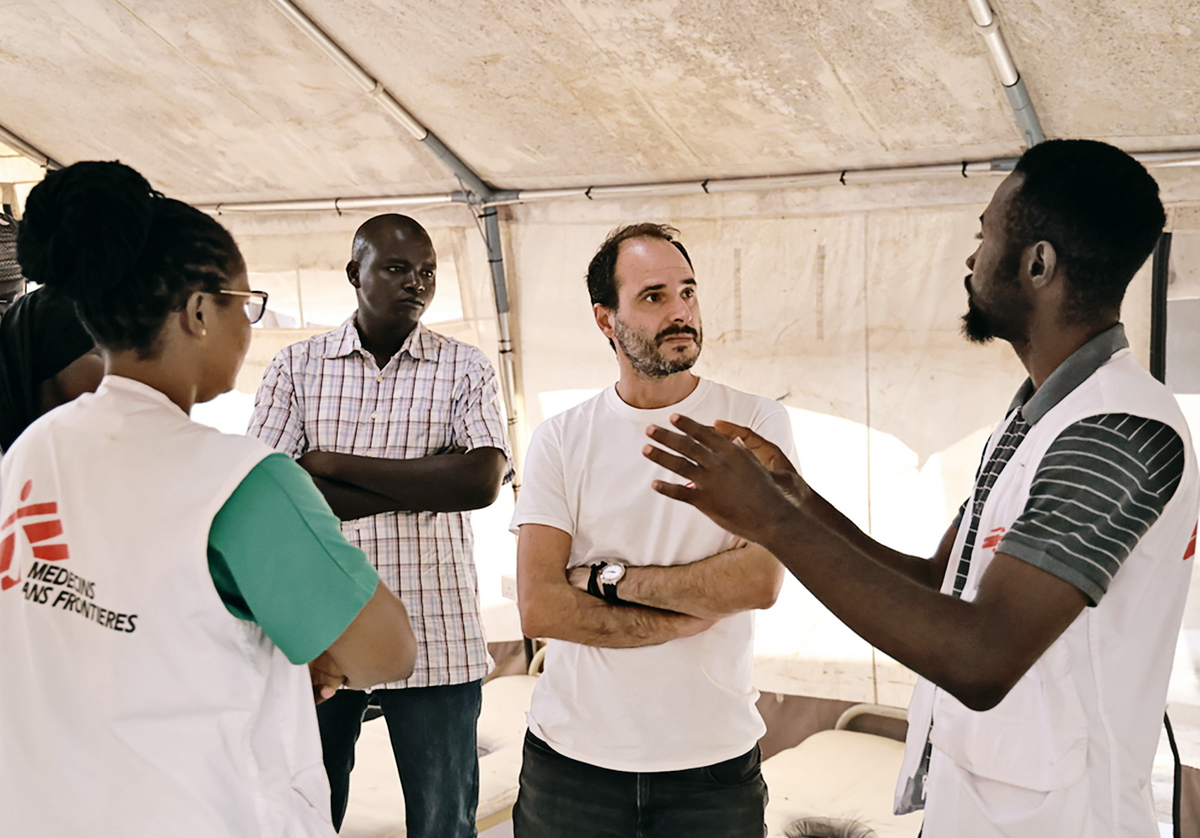
Christos Christou
HUMANITARIAN CARE
Even for an organization that works in places others are fleeing, Dr. Christos Christou’s time as international president of Médecins Sans Frontières (MSF) has been tumultuous. During his tenure, which will end in September, he has supported medical teams providing aid amid wars in Ukraine, Sudan, and Gaza, and also in Myanmar, where a 7.7-magnitude earthquake in March killed thousands.
The situation in Gaza has been particularly fraught. Eleven MSF workers have been killed since the war began, says the former field surgeon, who visited the West Bank in November 2023 to meet staff. All told, since the conflict began on Oct. 7, 2023, MSF has provided nearly 700,000 outpatient and 188,000 emergency-room consultations in Gaza, and performed nearly 20,000 surgeries.
He’s most proud of standing with communities that lost everything. “We didn’t leave them alone,” he says. “We gave people hope, which they needed more than anything.” —Jackie Hunter
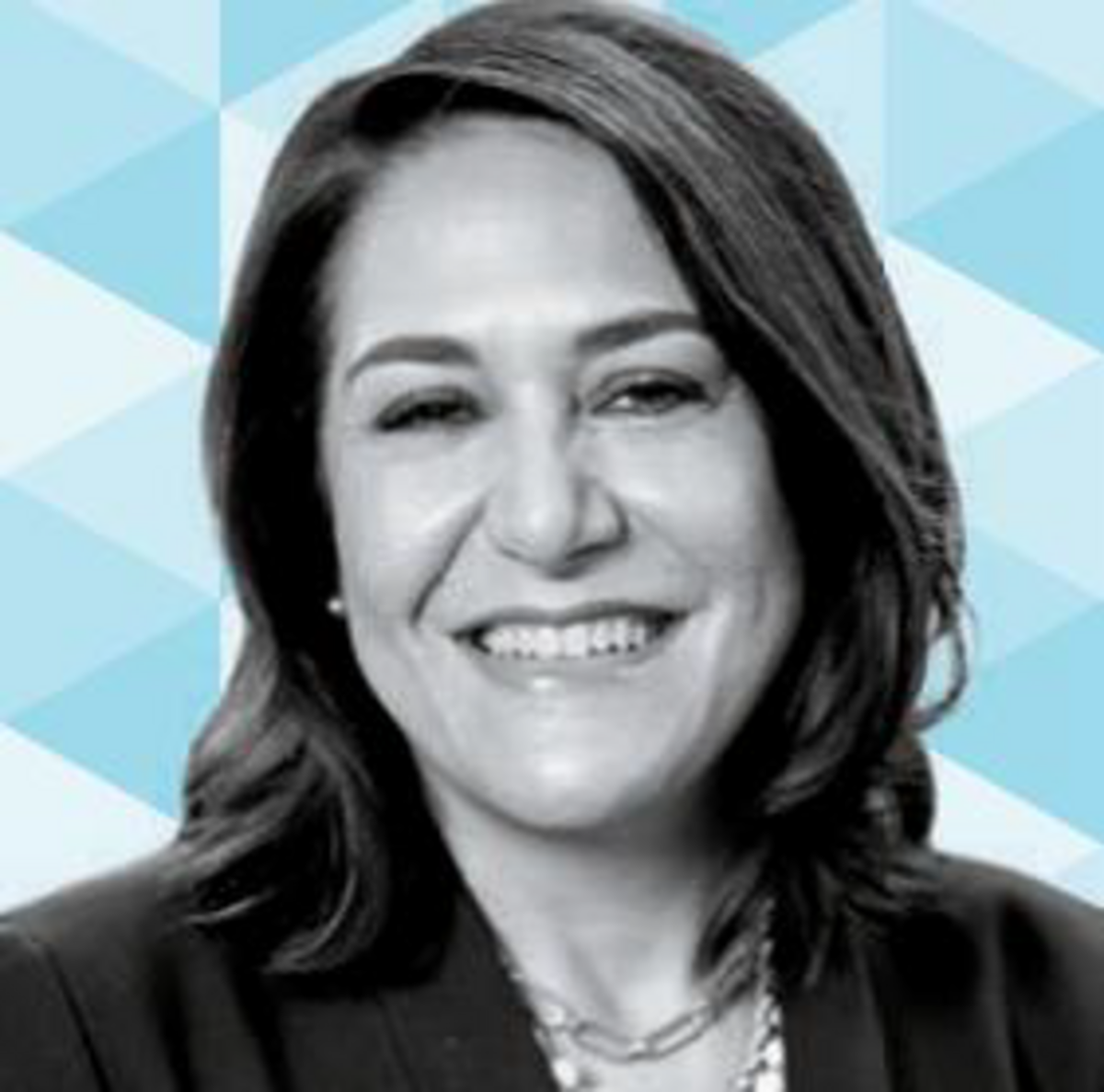
Maribel Pérez Wadsworth
SUPPORTING LOCAL NEWS
Local newsrooms are vanishing at a rate of more than two a week, leaving around 55 million Americans in news deserts with limited access to essential information. The Knight Foundation is out to reverse that trend through its support of journalism.
Leading the charge is its president and CEO, Maribel Pérez Wadsworth. Under her direction, the foundation last year doubled its pledge to Press Forward, a national coalition to bolster local news, to $300 million over five years. In July, the foundation gave a timely $6.9 million infusion to strengthen nonpartisan election coverage in pivotal states—reflecting Wadsworth’s belief that philanthropy must “move at the speed of news.” In February, Knight added $25 million to an initial grant of $20 million for the American Journalism Project, which supports nonprofit local news.
Many of the challenges we face come down to a “lack of connection and engagement” with our fellow citizens, Wadsworth says. “Local journalism in particular is a grounding element. It is an anchor that helps communities to be strong and connected.” —Harry Booth
Jack Ma
LIFTING LEADERS
Alibaba founder Jack Ma’s foundation focuses on education, entrepreneurship, environmental protection, and women’s leadership from global to local: in January, Ma marked the 10th year of providing 100 outstanding rural schoolteachers in China with funding and training. —Charlie Campbell
Lisa Sobrato Sonsini
FAMILY GIVING
Lisa Sobrato Sonsini started her family’s foundation in 1996 with a focus on sustainability and income inequality. This year Sobrato Philanthropies is making its largest financial commitment yet, putting more than 25% of its $1 billionb in assets into a range of projects. —Penelope Wang
Marco Dunand & Suzan Craig Dunand
BOLD CLIMATE INITIATIVES
Marco Dunand and Suzan Craig Dunand signed the Giving Pledge in 2024, furthering their work to address biodiversity loss and climate change. “There’s no other more important issue,” Marco says. —Kerri Anne Renzulli
Celina de Sola
SUPPORTING MENTAL HEALTH
Celina de Sola, co-founder and president of Glasswing International, aims to reduce poverty and violence in Latin America, with a focus on public education, mental health, (including training more than 45,000 frontline workers),) and empowering communities. —P.W.
John Palfrey
FILLING THE FUNDING GAP
Amid federal funding cuts this spring, John Palfrey, president of the $8 billion John D. and Catherine T. MacArthur Foundation, bumped up its giving by $80 million for the next two years. It typically disburses $400 million a year to a range of causes that aid underserved communities. —S.F.
Abdul Aziz Al Ghurair
FUNDING EDUCATION
Philanthropy is a family tradition for Abdul Aziz Al Ghurair, chair of Mashreq Bank. He also leads the foundation his father set up to provide educational opportunities for Arab and Emirati youth, which has helped more than 230,000 young people. —Tharin Pillay
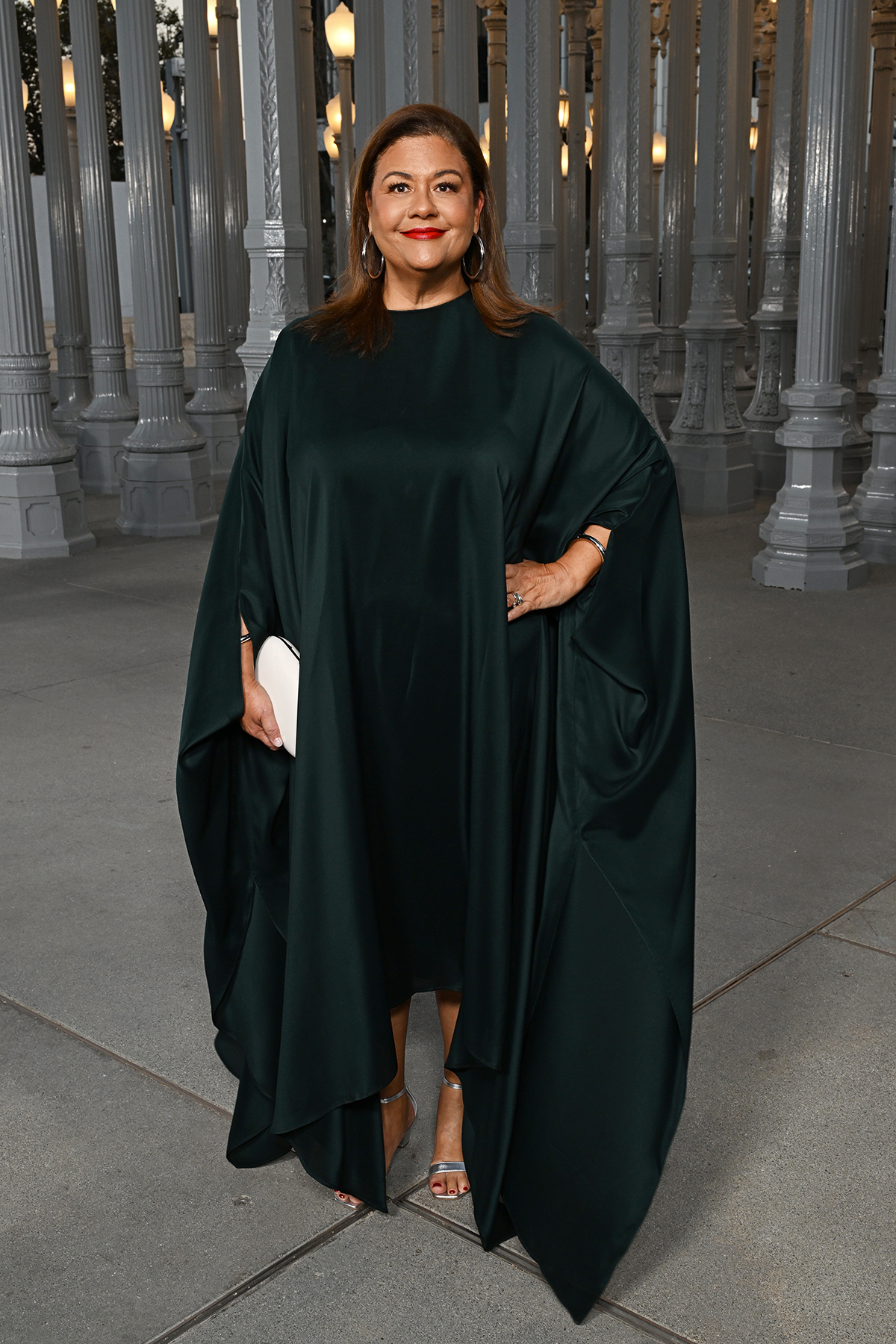
Elizabeth Alexander
PROMOTING THE ARTS, AND DIVERSITY
Few people have championed diversity, or culture, on as significant a scale as Elizabeth Alexander, president of the $7.9 billion Andrew W. Mellon Foundation—the largest funder of the arts and humanities in the U.S. So how does she feel about the widespread rollback of the kind of diversity initiatives she’s been championing? “Absolutely laser-focused,” she says.
In April, after the Trump Administration deemed much of the funding for the National Endowment for the Humanities wasteful, Mellon stepped in. “We had grantees calling us, panicked,” says Alexander. “We made a $15 million grant to the Federation of State Humanities Councils ... so that these projects for now can carry forward.” The move has already spurred at least one philanthropist to make a matching grant of $250,000 to the Alabama State Humanities Council—and that, she says, is the goal.
“As much as this is a challenging time, it’s actually a very powerful time in philanthropy, because people are coming together.” —Belinda Luscombe
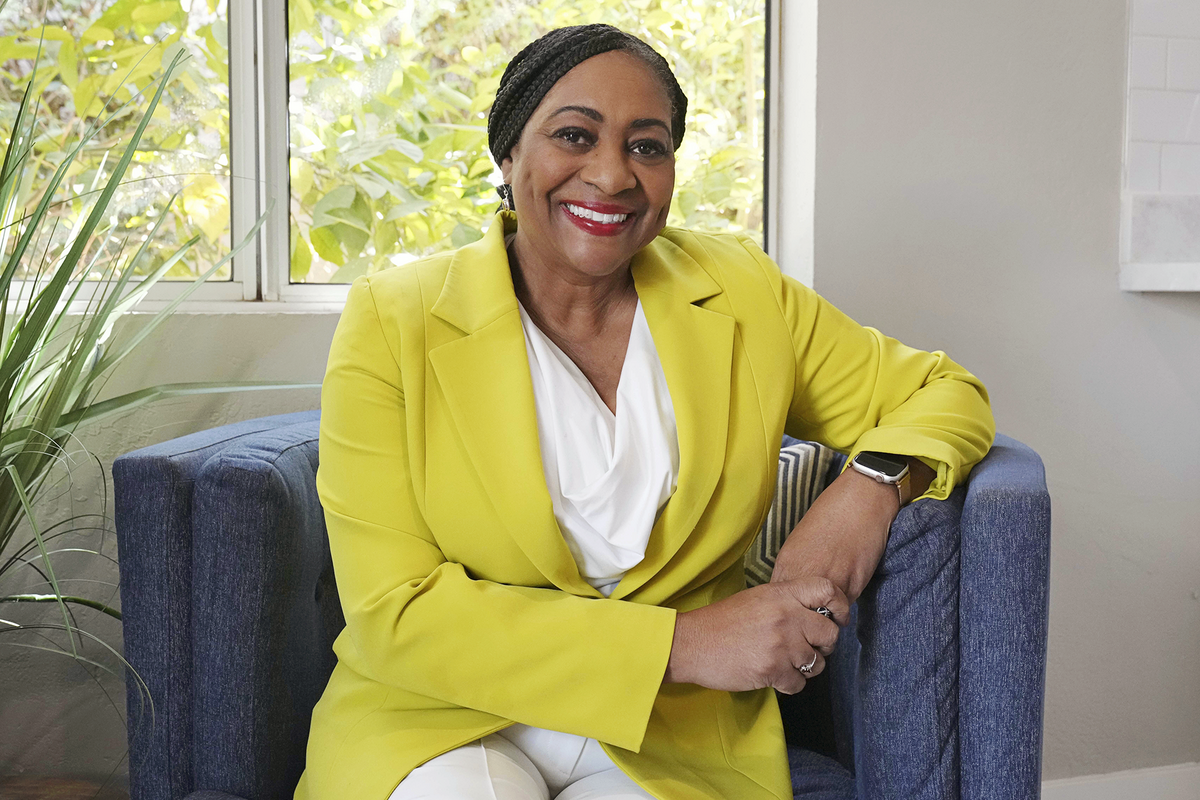
La June Montgomery Tabron
FINDING NEW WAYS TO SERVE
In 2023, almost a decade into her tenure as president and CEO of the $9.4 billion W.K. Kellogg Foundation, La June Montgomery Tabron commissioned a yearlong listening tour with its more than 2,000 grantees. Not content to keep doing what she’d been doing, she wanted ideas about how the philanthropy could have a greater long-term impact on children by imagining what the world would be like in 2035.
The report, published in April 2024, is heavy on suggestions to address systemic racism, climate change, housing affordability, and gender-based violence, and Montgomery Tabron’s enthusiasm for many of them reflects her ongoing pursuit of new ways to be of service. Her dedication to these issues is also reflected in two books she published this year—a memoir, How We Heal, and a children’s book, Our Differences Make Us Stronger.
More than half of Kellogg grants now go to groups led by people of color, and her larger goal, she says, is to level the playing field for all children as early as possible. “We didn’t start out with a quota,” she said on a podcast in January. “We started out in earnest saying, ‘Who do we need to lift up to sustain the changes that we want to achieve?’” —Steve Friess
N. Clay Robbins
A SURGE IN GIVING
Giving at Lilly Endowment, led by chair and CEO N. Clay Robbins, has gone into overdrive. In 2024 the foundation awarded a stunning string of grants totaling more than $2.5 billion—a fivefold jump from 2018, focused mainly on public-works projects and education. —S.F.
Cecilia Conrad
MAKING CONNECTIONS
Cecilia Conrad’s Lever for Change connects donors with organizations through open-call funding competitions. To date it’s helped guide $2.5 billion to more than 500 charities, advising major donors like MacKenzie Scott and Reid Hoffman.. —Kim Clark
William C. Rudin
BIG APPLE BOOSTER
William C. Rudin leads the family real estate business and continues a tradition of donations to health, education, social services, and the arts to improve life in the Big Apple, from sponsoring the marathon to funding hundreds of New York City nonprofits. —Penelope Wang
Alex Soros
STEERING A BEHEMOTH
In 2022 Alex Soros took over his father’s giant philanthropy, the Open Society Foundations, which disbursed $1.7 billion in 2023. He plans to continue funding good-governance groups, pro-democracy campaigns, and human rights, and add new initiatives on the environment. —Philip Elliott
Josh & Marjorie Harris
TEAM PLAYERS
Investor Josh Harris and his wife Marjorie are some of the largest supporters of after-school sports in the U.S. But through Harris Philanthropies they fund much more, including grants to aid diversity in medicine and tackle health inequalities. —Natalie Donback
Sylvan Adams
ONE OF ISRAEL’S BIGGEST DONORS
For the past nine years, real estate mogul Sylvan Adams has given at least $100 million a year to Israel and elsewhere to support education, sports facilities, the elderly, and health care. He bases his giving on tikkun olam, meaning “repairing the world” in Hebrew. —Ellen Chang

Mark Suzman
A BOLD PLEDGE
In May, the Gates Foundation, led by CEO Mark Suzman, unveiled its audacious endgame: spend its whole $200 billion endowment over the next 20 years, then close its doors for good.
This empty-the-tank strategy, says Suzman, offers a real shot at a legacy that would long outlive the organization: eradicating a handful of the world’s deadliest diseases. “We hope there are some things we will have literally solved,” he says.
The foundation, with its partners, has already helped push polio to the brink of annihilation, reducing cases by 99.9%. Future successes, Suzman says, will depend on new innovations, from vaccines to AI—and wealthy nations continuing to support lifesaving programs abroad.
“We cannot possibly make up the slack of the government cuts,” Suzman says. He hopes the big pledge and bold vision will help draw governments back into the fold. “Success is not only possible. It has happened in the past, and it can happen in the future.” —Harry Booth
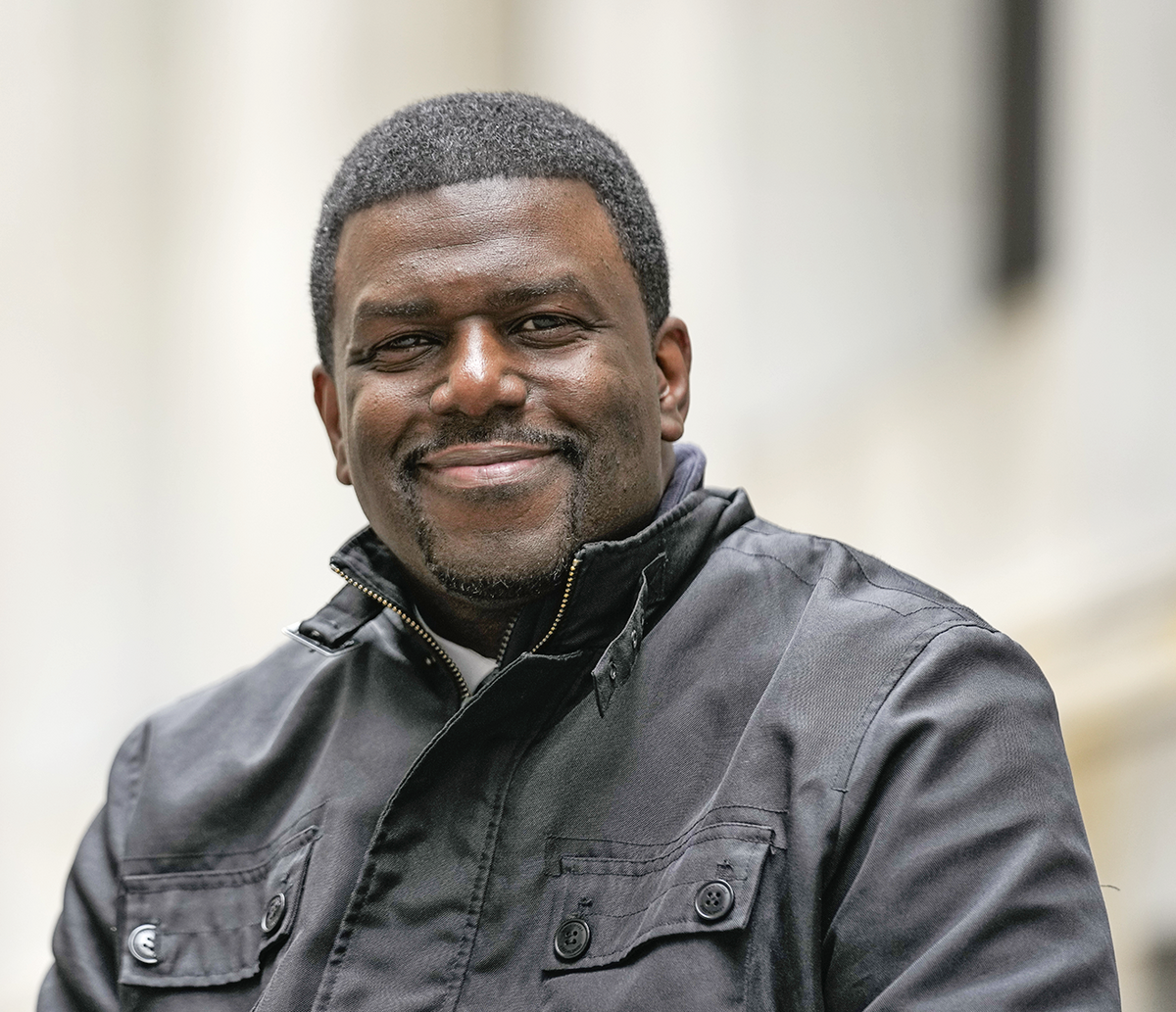
Artis Stevens
YOUTH MENTORING
When Artis Stevens became president and CEO of Big Brothers Big Sisters of America (BBBSA) in 2020, his top goal was to reduce the 120-year-old mentoring organization’s 30,000-long wait list of kids looking for a “big.” Through smart partnerships with organizations like the NFL, investment in improved tech, and better outreach to its 20 million alumni, he has cut the wait list by a third, reversed 10 years of declining membership, and helped the nonprofit double its funding.
Stevens is now expanding to enroll an additional 30,000 teens and young adults in its workplace mentoring program, where they’ll get career training, connect with industry leaders, and find internships. “We work with 300-plus companies across the country and are the largest youth workplace mentorship program in the U.S.,” he says.
BBBSA also embeds paid mentors in middle schools to help teachers address absenteeism and behavioral issues. It plans to expand the program to high schools and the juvenile-justice and foster-care systems, after a study it conducted with Harvard and the Treasury Department showed that mentees are 20% more likely to attend college and earn 15% more in their early professional years. “Mentorship has long-term impacts, not just for young people, but our society and economy,” Stevens says. —Kerri Anne Renzulli

José Andrés*
HUMANITARIAN CHEF
Fifteen years ago, chef José Andrés founded World Central Kitchen (WCK), a nonprofit that has since served more than 450 million meals in disaster areas and war zones. In 2023, he added the Longer Tables Fund to his philanthropic portfolio; its initiatives include an institute that studies solutions to fix the world’s food supply.
But Andrés is still reeling from the events of April 1, 2024, when the Israel Defense Forces (IDF) struck a convoy in Gaza, killing seven WCK workers. While the IDF took responsibility, a March report by news service Devex called WCK’s safety measures into question. “We have systems, and we have protocols,” says Andrés. “We’re not going to change the world without taking some risk. Many years ago, I decided I’m not going to watch people suffering from the comfort of my own home. What happened that day is something that will follow me the rest of my life.” He remains committed to responding to the humanitarian crisis in Gaza, where WCK is delivering thousands of gallons of water a day to distribution points. —Sean Gregory
Allison Sesso
ALLEVIATING DEBT
Allison Sesso leads Undue Medical Debt, a nonprofit that buys and forgives medical debt, taking $15 billion off the backs of over 9 million individuals by the start of 2025. It has partnered with states on debt-relief programs,r bought debt directly from hospitals, and worked with debt collectors. —K.A.R.
Reeta Roy
FULFILLING WORK
Mastercard Foundation president and CEO Reeta Roy wants to expand access to education and foster financial inclusion. She’s eight years into a 13-year campaign to help 30 million young people in Africa find “dignified and fulfilling work” by 2030, but will step down at the end of 2025. —S.F.
David Bohnett
COMMUNITY CONNECTION
When David Bohnett sold his tech company in 1999, he put much of his nearly $300 million in profit into a foundation that focuses on fostering connection, particularly among the LGBTQ+ community. It supports arts groups and training programs for civic leaders. —K.C.
*DISCLOSURE: TIME’S OWNERS AND CO-CHAIRS MARC AND LYNNE BENIOFF HAVE SUPPORTED WORLD CENTRAL KITCHEN
WALKER: JAKE CHESSUM—TRUNK ARCHIVE; CHRISTOU: COURTESY SARAH NUHU—MÉDECINS SANS FRONTIÈRES INTERNATIONAL; WADSWORTH: COURTESY JOHN S. AND JAMES L. KNIGHT FOUNDATION; ALEXANDER: MICHAEL KOVAC—LACMA/GETTY IMAGES; MONTGOMERY TABRON: RICK SCUTERI—AP; SUZMAN: HOLLIE ADAMS—BLOOMBERG/GETTY IMAGES; STEVENS: SETH WENIG—AP; ANDRÉS: COURTESY WORLD CENTRAL KITCHEN
TIME100 PHILANTHROPY INNOVATORS
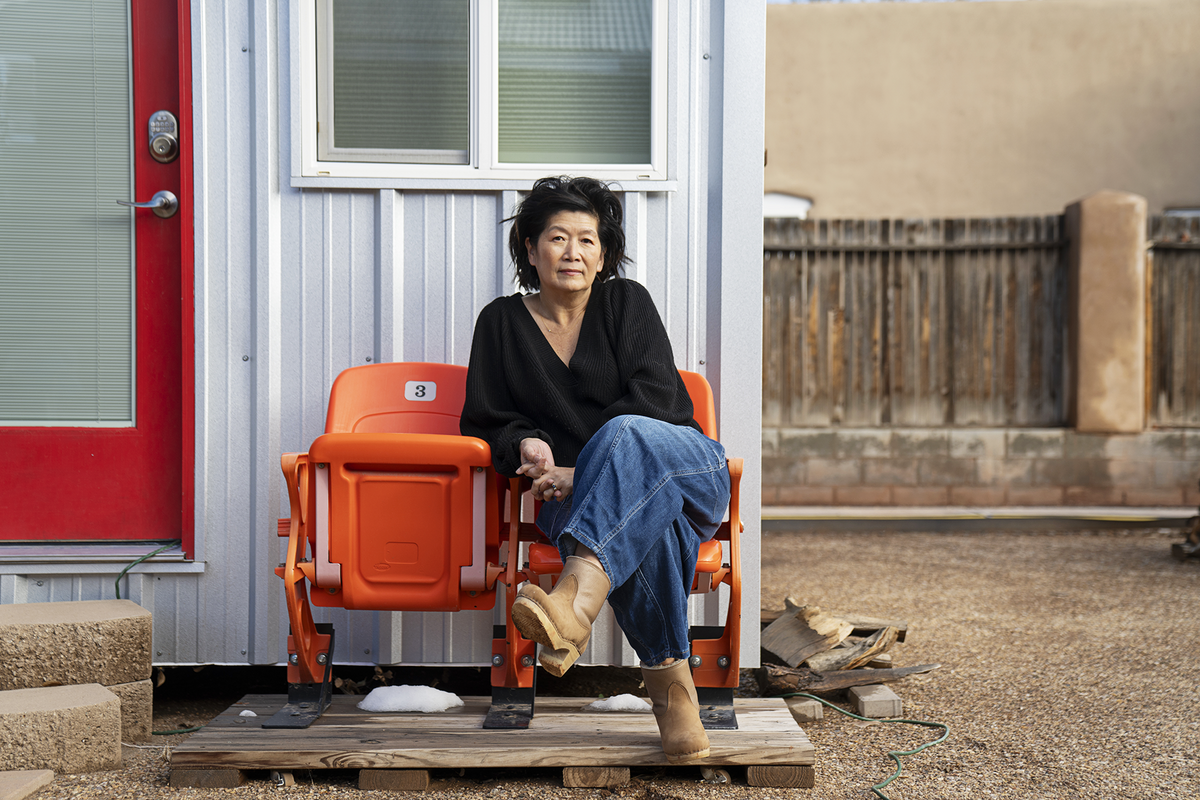
LEE FOUNDED THE ASIAN WOMEN GIVING CIRCLE 20 YEARS AGO
Hali Lee
COLLECTIVE-GIVING LEADER
TO HALI LEE, THE FUTURE OF PHILANTHROPY LIES IN collective giving. That’s what the philanthropy consultant contends in her new book, The Big We: How Giving Circles Unlock Generosity, Strengthen Community, and Make Change. Social change, she says, can start with people, often women, gathered around kitchen tables, pooling their resources to donate whatever they can afford to local organizations like soup kitchens and libraries. “Everybody’s got a kitchen table,” she says.
The movement seems to be taking off. From 2017 to 2023, one study found, nearly 4,000 collective-giving circles in the U.S. donated $3.1 billion to charity.
Lee has been doing her part. She started the Asian Women Giving Circle 20 years ago, which has made more than $1 million in small grants to support cultural projects by people of Asian American and Native Hawaiian or Pacific Island ancestry. She also helped launch Philanthropy Together, a group scaling collective giving.
Bigger change can follow from small-dollar donors coming together, Lee believes. While “Big Phil” certainly does good, she says, “billionaires don’t have any incentive to change the systems that made them rich.”
Why is the giving-circle movement so heavily female? I’m Korean American, and in my culture there is something called a geh, a shared-giving circle. You might have heard of tandas [in Mexico], or sou sous [in West Africa]. Indonesians call it arisans. A lot of these cultural forms of pooling resources are organized and run by women. Women were often traditionally excluded from the more formal ways of banking. These cultural forms of generosity, while not philanthropic in origin, lend themselves naturally to being turned into philanthropic forms.
Is there a political aspect to the giving-circle movement? Where I land is civic engagement. Giving circles are a great vehicle for people to practice being civically engaged. And if there was ever a time when we really need to do that in this country, and maybe even globally, it’s now. Civic engagement just means being curious and interested in what’s happening in my community and then caring enough to get educated, then taking one more step with a group of friends, neighbors, or colleagues to take action together.
‘ YOU WILL 100% MAKE MISTAKES ALONG THE WAY, SO BUILD IN LEARNING.’
—HALI LEE
What are the most common problems in running a giving circle? The really common problem is constipation. A group will start to try to replicate Big Phil. They think they need to be very formal, have a 501(c)(3) and all this apparatus that they actually don’t really need. All of that tends to constipate the flow of dollars. I often just tell people, don’t build apparatus unless you need it, try to keep it simple, just get the money or volunteer time flowing. You will 100% make mistakes along the way, so build in learning and humility.
How can all the members of a giving circle stay on the same page about which causes to support? Have a couple of conversations about what are your individual values, what are the group’s values. If you can agree on something in your neighborhood or town that keeps you up at night, maybe that’s the thing you agree to raise money for or volunteer for.
Some circles decide to pick a different thing every year. Each member might get a turn. That’s a good way to learn about a lot of different issues that impact a community. The important thing is just to dive in and get started. You can adjust along the way.
—PETER CARBONARA
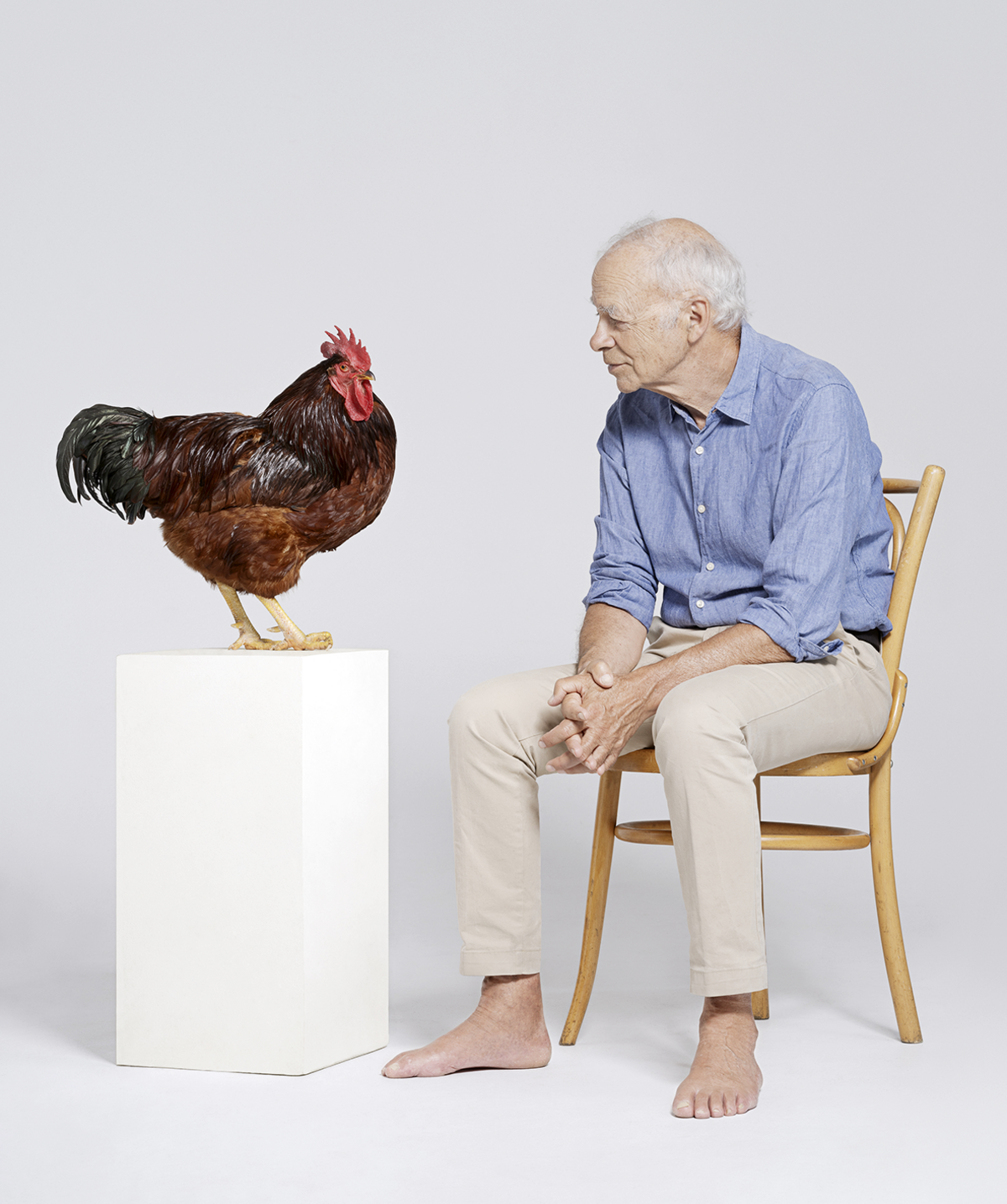
Peter Singer
A PHILOSOPHER OF GIVING
Through clear-eyed arguments and ceaseless advocacy, Australian philosopher Peter Singer has revolutionized modern philanthropy—twice.
His 1972 essay “Famine, Affluence, and Morality,” which argued that people ought to prevent suffering from death and poverty when they can do so without sacrificing anything of comparable moral importance, has long influenced giving strategies for wealthy donors and laid the foundation for the effective-altruism movement. Meanwhile, his 1975 book Animal Liberation helped launch the modern animal-welfare movement.
Last year, his charity, The Life You Can Save, which researches nonprofits fighting extreme poverty, passed the $100 million mark in donations to the organizations it recommends, a decade after its founding. In 2021, Singer, a professor emeritus of bioethics at Princeton, won the Berggruen Prize for Philosophy and Culture, and donated the $1 million he received to high-impact nonprofits.
“I’m happy that I’m still around, having some influence, and I hope to have some years to expand that influence,” says Singer, who is 78. “That seems to me to be the best thing I can do with the remaining time that I have.” —Tharin Pillay
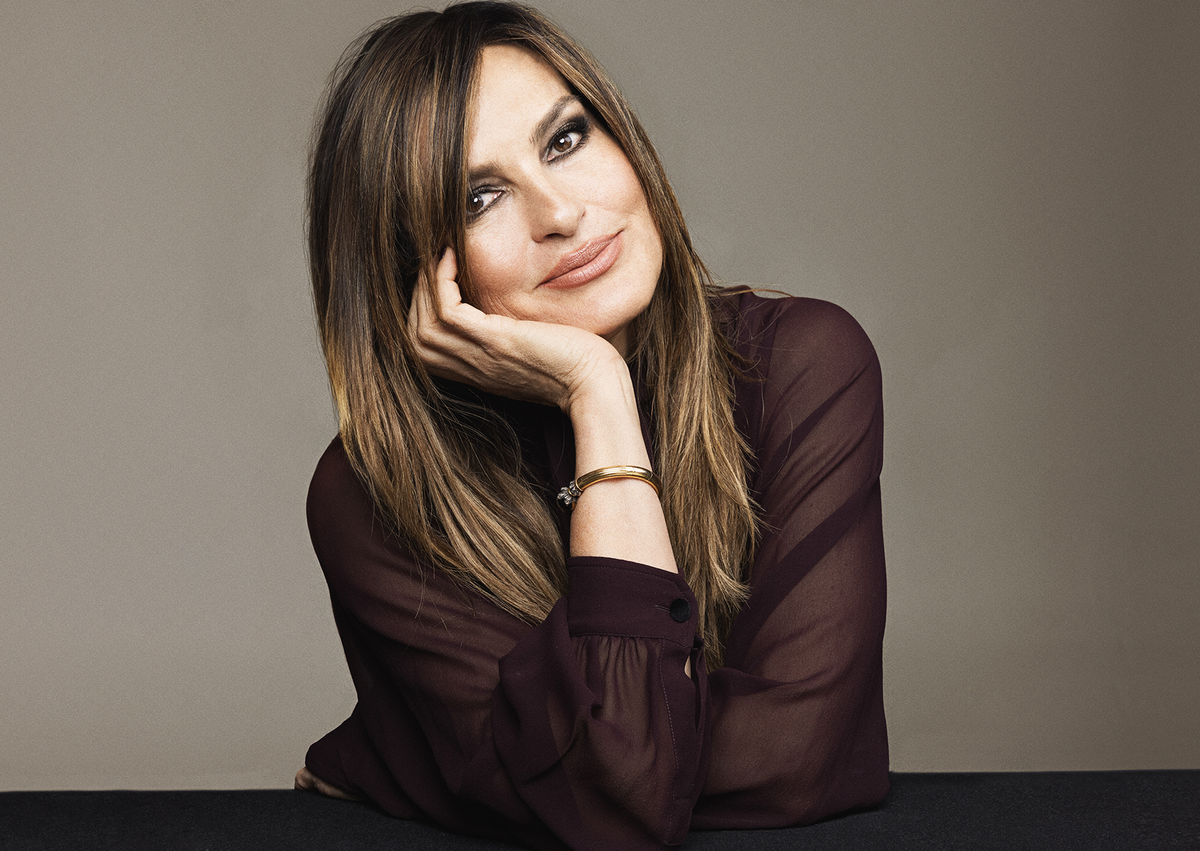
Mariska Hargitay
ADVOCATE FOR SURVIVORS
For millions of viewers, Mariska Hargitay is Olivia Benson, the tough but compassionate NYPD captain tackling crimes on Law & Order: SVU. Away from the cameras, she channels that same fierce dedication into her real-world role as an advocate for survivors of sexual assault.
Hargitay’s Joyful Heart Foundation focuses on changing how society responds to survivors of sexual assault, domestic violence, and child abuse. Since 2010, it has prioritized tackling the vast backlog of untested rape kits in the U.S.—crucial DNA evidence that is often left unprocessed. The foundation has identified tens of thousands of untested kits, funded training to clear the backlog, and driven policy changes. Its six pillars of reform—which include mandating statewide kit tracking and testing timelines—have been adopted by 21 states.
In 2024, Hargitay shared a more personal connection to this work, revealing in an essay that she had been raped in her 30s—which took her decades to come to terms with. “I couldn’t process it,” she wrote. “I was building Joyful Heart on the outside so I could do the work on the inside.” —Harry Booth
Prince William & Catherine, Princess of Wales*
MODERNIZING ROYAL GIVING
Prince William and Catherine, Princess of Wales, focus on homelessness and mental health with their Royal Foundation and spotlight climate solutions through the Earthshot Prize. —H.B.
Badr Jafar
STRATEGIC PHILANTHROPY
In 2020, Badr Jafar, who is a champion of strategic philanthropy, launched HasanaH, a digital platform for Islamic giving that hosts high-impact projects with $95 million in total fundraising goals. In September he was appointed the UAE’s special envoy for business and philanthropy. —H.B.
Sarah Haacke Byrd
EMPOWERING WOMEN
Less than 2% of philanthropic funds are dedicated to groups that focus on women and girls. Women Moving Millions CEO Sarah Haacke Byrd wants to change that. Since 2007, WMM members have donated more than $1 billion to nonprofits with that focus. —Sandra Block
Tyler Cowen
FAST-TRACK FUNDING
Economist Tyler Cowen’s Emergent Ventures funds entrepreneurs working on highly scalable ideas for meaningfully improving society. Emergent Ventures’ successes have included funding one of the first COVID-19 saliva tests via its Fast Grants program. —T.P.
Robert Rosenkranz
A “SELFISH PHILANTHROPIST”
Investor Robert Rosenkranz calls himself a selfish philanthropist. Ambition led him to his best-known philanthropic endeavor: Open to Debate. He’s also founding a cultural institution in New York City and funding research on aging and longevity. —Kerri Anne Renzulli
Pierre & Pam Omidyar
NETWORK BUILDERS
Pierre and Pam Omidyar have given over $4 billion to humanitarian and civic causes, creating a network of institutions, and helped establish a public-private partnership to ensure AI serves public interests. —T.P.

Nicole Taylor*
COMMUNITY GIVING
Community foundations gather the funds of many, directing them toward coordinated action. “It’s being that bridge” between donors and everyday people, says Nicole Taylor, president and CEO of Silicon Valley Community Foundation, the largest such institution in the U.S. SVCF gave away $1.5 billion in 2024, and its network of over 1,000 donors includes Silicon Valley heavyweights like Mark Zuckerberg and Reed Hastings, as well as many smaller contributors.
Taylor’s driving mission is “putting the community back in the community foundation.” That has meant refocusing on the Valley’s deep-rooted inequalities, including a $100 million initiative to invest in grassroots Black-led organizations, now set to spin off as an independent group. —Harry Booth
John Green
SPOTLIGHTING PUBLIC HEALTH
Tuberculosis is the world’s deadliest infectious disease despite being curable—an injustice author John Green details in his recent, bestselling book Everything Is Tuberculosis. Last year, Green announced that he and his family would donate $1 million annually to help fight the disease in the Philippines, which has the fourth highest burden of TB globally. The move builds on a long history of giving for Green, whose foundation—co-founded with his brother Hank—has awarded a total of more than $10 million in grants to dozens of charities, including Partners in Health. —Megan McCluskey
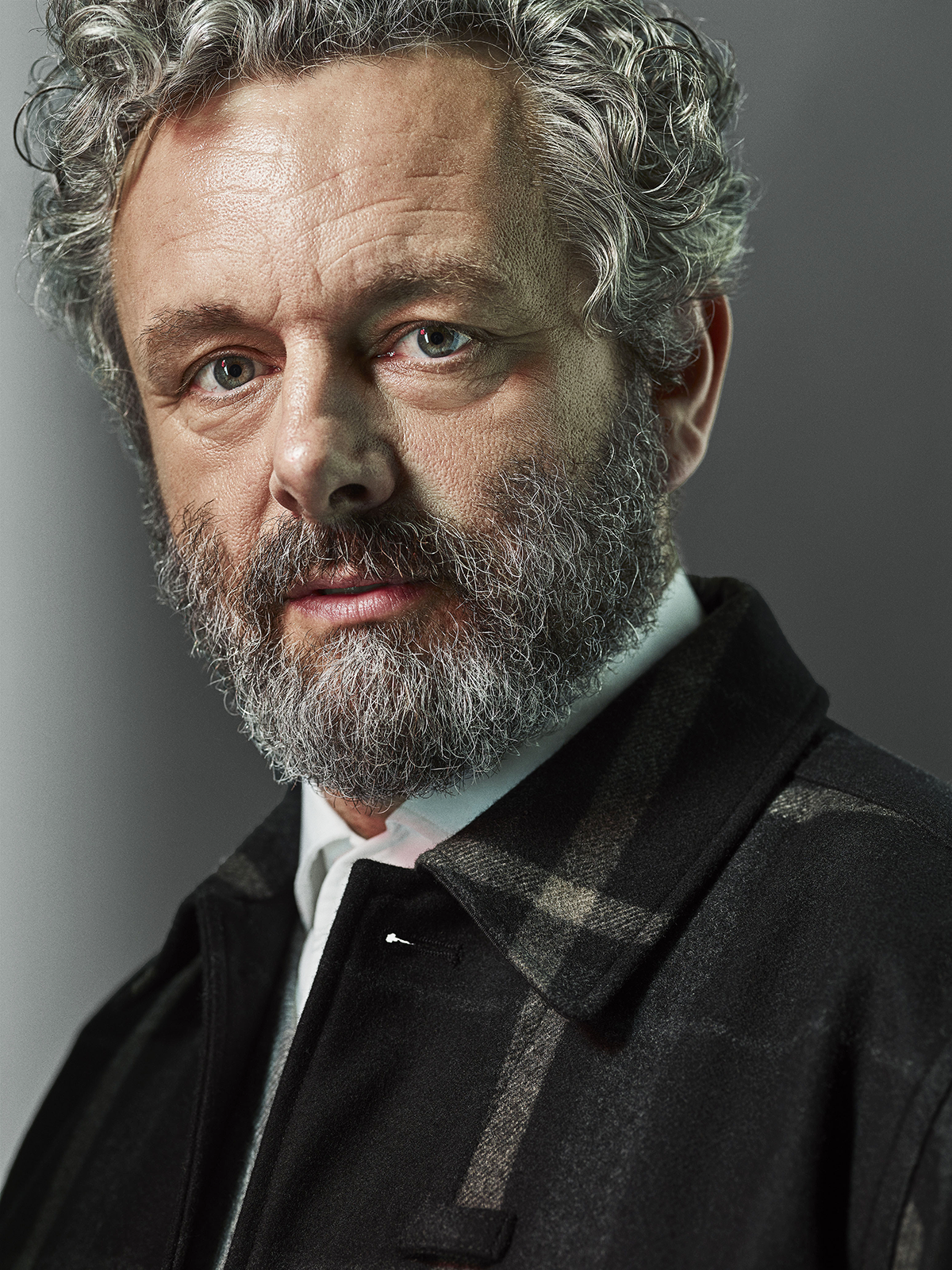
Michael Sheen
NOT-FOR-PROFIT ACTOR
When funding for the Homeless World Cup soccer tournament in his home country Wales fell through in 2019, Michael Sheen decided to sell two of his houses to help cover the shortfall. Realizing the impact his earnings could have, he declared himself a “not-for-profit actor” in 2021.
Sheen has kept using the money he makes from acting to fund social projects, focusing in particular on helping the people of Wales. In March, he revealed the results of a two-year project that involved creating a debt-acquisition company with £100,000 ($133,000) of his own money to buy up borrowers’ cut-rate loans and writing off around £1 million ($1.3 million) worth of debt for some 900 people across south Wales. Sheen previously also pledged £50,000 ($66,000) over five years to fund a bursary to help Welsh students attend the University of Oxford. —Ayesha Javed
Tony Hawk
SKATEBOARDING FOR ALL
The skate park in Tony Hawk’s hometown didn’t just make him the world’s most famous skateboarder. It also gave a sense of belonging, he says. “It was never lost on me how lucky I was to have that community.”
In 2002 he launched the Skatepark Project to fund safe places to skate in all 50 states, including 15 new parks in 2024, and provide equipment. It has also helped fund skate parks in Afghanistan, Cambodia, and South Africa, in partnership with the nonprofit Skateistan.
Hawk also wants to add more skate parks in Native American communities and underserved areas. —Sandra Block
Sara Lomelin
COLLECTIVE GIVING
Sara Lomelin leads Philanthropy Together, which scales and strengthens collective giving with training and a database of over 4,000 giving circles seeking new members. “It’s the multiplying effect of the dollars, the ideas, and the volunteer hours,” says Lomelin. —Kim Clark
Sol Trujillo
FIGHTING STEREOTYPES
Sol Trujillo co-founded the Latino Donor Collaborative to fight economic myths about Latinos in the U.S. through original research. A recent report focused on the growing power of Latinas in the U.S. L’Attitude Ventures, his venture-capital firm, funds Latino-run companies. —Peter Carbonara
Cari Tuna & Dustin Moskovitz
HIGH-IMPACT GIVING
Cari Tuna and Dustin Moskovitz’s Good Ventures and Open Philanthropy take a data-centric approach to “help humanity thrive,” directing dollars to causes where they can do the most good, in areas from AI safety to housing and air quality. —P.C.
Anand Giridharadas
ELITE CHALLENGER
Author Anand Giridharadas’ 2018 book Winners Take All changed the national conversation about big-donor philanthropy, arguing that elites use it to unjustly justify their wealth. The alternative, he says, is a democratic system with appropriate taxation on the ultra-rich. —Billy Perrigo
Francine A. LeFrak
WELLNESS FOR WOMEN
Francine LeFrak focuses her philanthropy on women. Her approach, she says, centers on the “three pillars” of wellness: physical, mental, and financial. Her foundation supported a state-of-the-art center for well-being at Barnard College, opening in June. —P.C.
Jennifer Pritzker
AN ECLECTIC GIVER
In January, Jennifer Pritzker’s Tawani Foundation gave a restored Frank Lloyd Wright house to her alma mater, Loyola University. Other recent recipients include a military museum, the Chicago Symphony, and transgender-health researchers. —Belinda Luscombe
"*DISCLOSURE: TIME’S OWNERS AND CO-CHAIRS MARC AND LYNNE BENIOFF HAVE SUPPORTED THE ROYAL FOUNDATION AND SILICON VALLEY COMMUNITY FOUNDATION
LEE: COURTESY KATE RUSSELL; SINGER: COURTESY PETRINA HICKS; HARGITAY: VICTORIA STEVENS—AUGUST; SHEEN: FELICITY MCCABE—GUARDIAN/EYEVINE/REDUX; TAYLOR: NIC COURY—AP
SPORTS
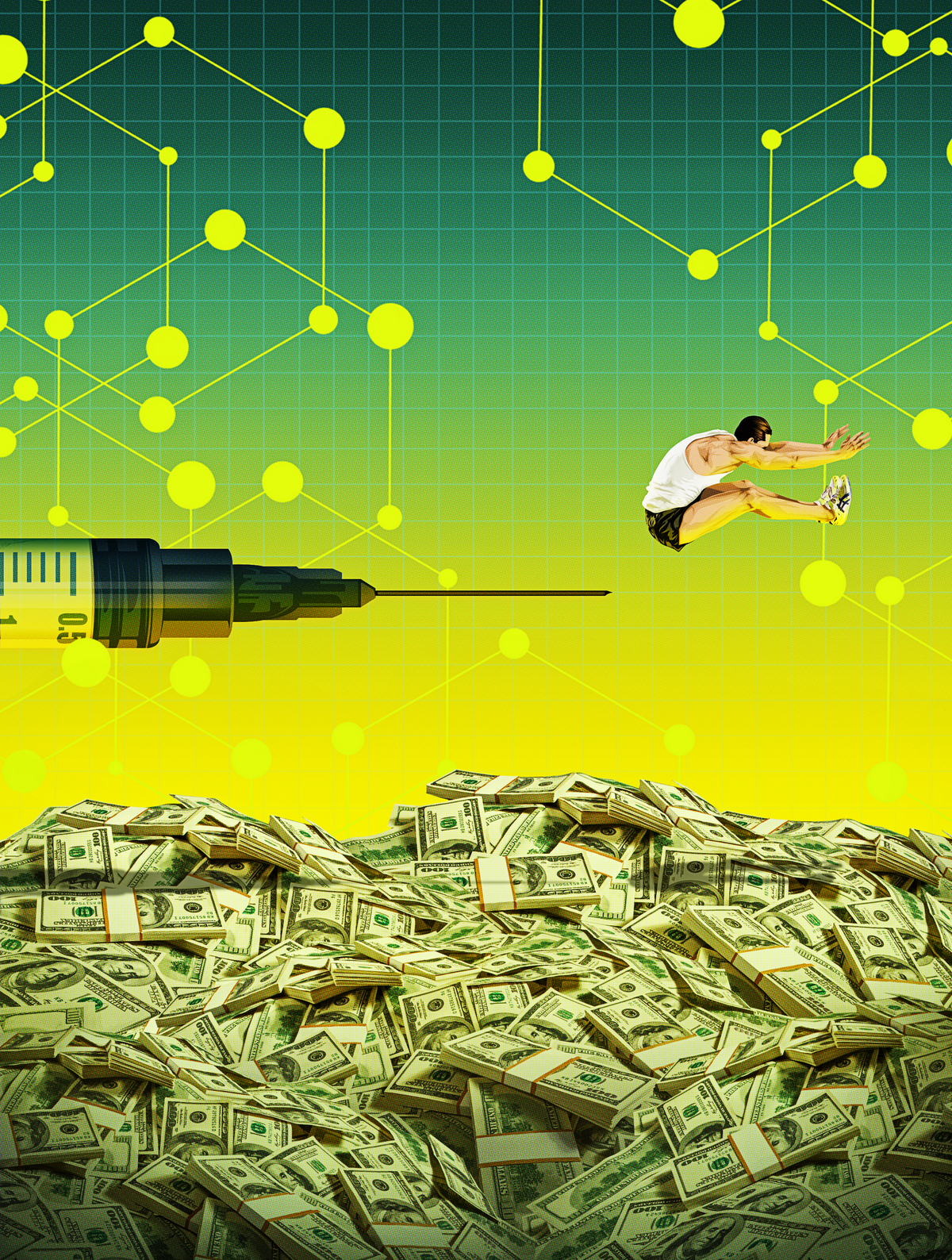
POWER PLAY
THE ENHANCED GAMES AIM TO BE THE ALTERNATIVE OLYMPICS—A MULTISPORT COMPETITION WITHOUT THE DRUG TESTING
BY SEAN GREGORY
WHEN KRISTIAN GKOLOMEEV WOKE UP one morning in February, the last thing he expected to do was break a world record in the pool. The Greek swimmer and four-time Olympian, who finished fifth in the 50-m freestyle in Paris and Tokyo, had gone to Greensboro, N.C., to take part in a preview of something called the Enhanced Games, a new startup that plans to stage an Olympic-style competition permitting the use of most performance-enhancing drugs (PEDs) currently banned in global sports.
It was another athlete, however, who had come to make a splash that day. Retired Australian swimming star James Magnussen—a former world champion who won three Olympic medals—had said publicly in early 2024 that he’d “juice to the gills” and break the 50-m freestyle world record if the Enhanced Games would put up a $1 million prize. Enhanced Games officials took him up on the offer.
Magnussen, a few months into his PED regimen, was supposed to swim under 20.91 seconds, the mark César Cielo of Brazil set in 2009, in a timed solo effort to prove that the Enhanced Games concept—even before its first formal event launched—would result in performances the world has never before witnessed. But Magnussen, whose body ballooned with muscle while taking drugs, kept falling short. Gkolomeev, on the other hand, was just three weeks into his own low-dosage use of PEDs and feeling better than expected. So Gkolomeev put on a full-body polyurethane swimsuit, similar to the type worn by Cielo in 2009. (Such suits have been banned in competition since 2010, because of all the records that fell while swimmers wore them.) He hit the water, and tapped the wall in 20.89 seconds, breaking the official world record and winning that $1 million prize.
You won’t find Gkolomeev’s swim in any official record book, because it wasn’t a sanctioned race, and because he was taking PEDs (Gkolomeev declined to detail his cocktail; the Enhanced Games say they advocate for transparency while also respecting privacy). But he found another kind of value in his accomplishment. “I feel,” he says, “kind of like a superhuman.”
The Enhanced Games, which on May 21 announced that they’d hold their debut event Memorial Day weekend 2026 in Las Vegas, are, at their core, selling fast times. Founded by entrepreneurs and investors Aron D’Souza (who encouraged Silicon Valley billionaire Peter Thiel to bankroll Hulk Hogan’s lawsuit against Gawker, which ultimately bankrupted the outlet) and Christian Angermayer (a psychedelic evangelist), they are betting that consumers just want to see athletes swim and run as fast as possible, without biotechnical restrictions. They will stage events in swimming, track, and weight lifting and expect to sign up about 100 athletes, who will likely have to give up future Olympic aspirations if they’re going to use drugs.
Enhanced Games officials argue that while the Olympics focus on fairness (testing everyone to make sure no one has an advantage from PEDs), they’re more concerned with safety (monitoring the medical profiles of athletes to ensure they’re healthy enough to compete). They also note that most Olympians don’t earn much money, whereas Enhanced Games athletes will receive better pay and benefits. And, they say, despite the testing protocols, there remains speculation about whether Olympic athletes are clean, so the Enhanced Games make that a nonissue. Rather than have male and female categories, Enhanced Games athletes will compete in XY or XX divisions, though it’s unclear how the company will conduct chromosome testing, which has been deemed invasive and potentially inaccurate by many scientific experts and banned from the Olympics since 1999.
Health and medical experts are already ringing alarms. “This kind of reminds me of the Roman circus,” says Charles Yesalis, professor emeritus of health policy at Penn State University and an expert on PEDs in sports. The International Olympic Committee (IOC) says, “If you want to destroy any concept of fair play and fair competition in sport, this would be a good way to do it,” while the World Anti-Doping Agency (WADA) calls the Enhanced Games a “dangerous and irresponsible concept.” Olympic officials, however, might have to walk a diplomatic tightrope: in February, the Enhanced Games announced that 1789 Capital, where Donald Trump Jr. is a partner, was leading a multimillion-dollar investment in the company. The Olympics are coming to L.A. in 2028, while President Donald Trump is still in office, and the President is featured front and center in a promotional video touting 1789’s Enhanced Games play.
Beyond the athletic competition, the Enhanced Games are making the grand case that safe use of PEDs at their events can trickle down to the general public, allowing people to live happier, healthier, and more productive lives. Their pitch arrives amid a growing interest in longevity, with scientists and biohackers alike looking for ways to extend and improve our years on this planet. When the Enhanced Games convened the Second Conference on Human Enhancement in December, Bryan Johnson, the subject of the Netflix doc Don’t Die: The Man Who Wants to Live Forever, was a keynote speaker. This effort also comes at a time when many Americans are fired up about defending personal freedoms—whether it’s their right to opt out of vaccines or to put performance-enhancing substances in their bodies.
Still, how this new addition fits into the sports landscape remains to be seen. Controversy over risk, fairness, and athletic legitimacy feels almost guaranteed. And of course there’s the question of demand. The Olympics, even with all their flaws, broke all sorts of viewership records last summer. Is an audience really thirsting for a doped-up version? And is it all that impressive to push the limits of the human body when you’ve got Lord knows what in your system?
AS D’SOUZA TELLS IT, he was at the gym one day in 2022 when he noticed just how many people around him did not come by their looks naturally. He started working on the Enhanced Games concept, confident there were plenty of athletes being denied opportunities because they took drugs that were perfectly legal in their countries but banned from competition. But it was on a walk around Biscayne Bay in South Florida over Christmas that year that he got a crucial vote of confidence. He shared the idea with his father, a 78-year-old medical professor specializing in cardiology, who not only did not balk but saw real promise. “The first thing he said was, ‘The data that will come out of this will change the world,’” says D’Souza. Though participants don’t have to reveal publicly what they’re taking, organizers hope they’ll enroll in an independently approved clinical trial assessing the impact of PEDs on elite athletes. The results could have implications for everyday living. “We can literally invent humans 2.0,” says D’Souza. “The compounds that allow athletes to run faster and jump higher are the same compounds that will allow my dad to walk up a flight of stairs.”
A medical commission will be tasked with overseeing a battery of blood, heart, brain, and bone tests to ensure athletes are not subjecting themselves to undue risk in competition. A scientific body will communicate key findings to the public. “We’re not in the business of sports, we’re in the business of science and cultural change,” says D’Souza. “And the cultural change that will be the most profound will be a view that medicine is not just about making sick people less sick. Medicine is also an important tool to elevate human performance.”
To execute this vision, the Enhanced Games will need a significant audience against which to sell media rights: officials say TV and streaming outlets have expressed interest in distributing the first event. A planned direct-to-consumer line of supplements and FDA-approved performance enhancers could provide another revenue stream. “I don’t see anything intrinsically wrong with the Olympics,” says D’Souza. But he doesn’t like that they’re the only option for a multisport international event testing “Citius, altius, fortius,” or “Faster, higher, stronger.” “Competition is very healthy,” he says. “The fact that the IOC has a monopoly in sports governance today is problematic.”
D’Souza, who is Australian, brought the Enhanced Games idea to Angermayer, a billionaire investor from Germany whom Thiel had first connected him with more than a decade ago. And Angermayer, the founder of the multibillion-dollar fund Aperion Investment Group, with holdings in crypto, biotech, and other sectors, agreed to partner in the venture, with backing from Thiel.
Angermayer is also co-founder and chairman of Atai Life Sciences, a clinical-stage psychedelic biopharma company with, as of May 21, some $400 million in market cap. He sees a connection between mainstream acceptance of psychedelics and the potential of the Enhanced Games. Society has come around on a variety of things that were once broadly considered taboo: Angermayer points to gay rights, but attitudes have also changed on marijuana and sports gambling, with consumers leaning more libertarian on such subjects. It’s your choice to bet on basketball or take psychedelics. Angermayer sees the expected debut of the Enhanced Games, which he thought would take a few more years to get off the ground, as further proof of shifting winds. “The zeitgeist has changed on all sorts of crazy ideas,” says Angermayer.
He just hopes it hasn’t shifted to the point where all Enhanced Games smoke subsides. “I hope there are demonstrators on the street saying, ‘This is bad!’” he says, with a laugh. “Because doing that, and the controversies, drives attention.”
‘WE CAN LITERALLY INVENT HUMANS 2.0.’
—ENHANCED GAMES PRESIDENT ARON D’SOUZA
WHILE ANGERMAYER might not get his protest marches, the Enhanced Games will have no shortage of opponents. “They’re potentially dangerous in several ways,” says Dr. Michael Joyner, a human-performance expert at the Mayo Clinic. For one, says Joyner, the long-term effect of PEDs is not well known: a whole population could be putting themselves at risk for damage. Second are the acute risks of substances like stimulants, which can lead to dehydration, high blood pressure, heart palpitations, and more. While the best medical monitoring can give athletes a clean bill of health going into a race, if they were to, say, load up on stimulants moments before the start—knowing they won’t be drug-tested afterward—the results could prove disastrous.
Plus, it’s no secret that young people look up to elite athletes. As a result of the Enhanced Games, increasing levels of PED use could reach high school sports, an unintended consequence of the endeavor. “These Games are sending an inappropriate message to our children,” says Yesalis.
Furthermore, says John William Devine, a lecturer in sports ethics and integrity at Swansea University in Wales, “lifting the ban on performance-enhancing drugs would undermine the purpose of the sports themselves.” If it’s impossible to separate the quality of a pharmacological cocktail from the will and skills of the athlete, an achievement can quickly lose its luster. “The fact that you have run faster or lifted more or jumped longer or jumped higher doesn’t necessarily mean that your performance is more excellent,” says Devine.
Still, experts worry the Enhanced Games could steal some shine from the official record holders. “It’s a little bit unfortunate that it’s a distraction from the greatest-ever performers we have out there,” says Joyner, citing Olympic champions like U.S. swimmer Katie Ledecky and shot putter Ryan Crouser, who also hold world records. “You’re looking for some edge, when these people are pushing limits so effectively within the rules.”

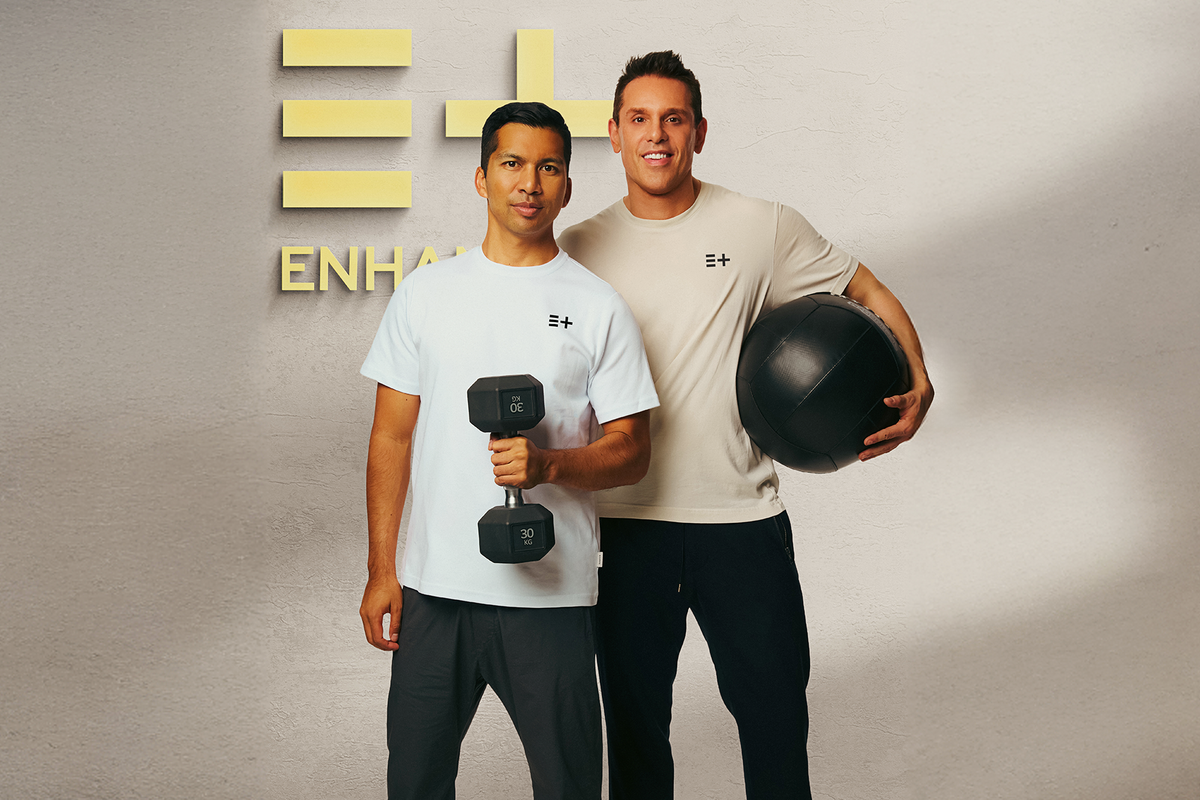
KRISTIAN GKOLOMEEV BEGINS HIS 50-M FREESTYLE SWIM IN WHICH HE BROKE THE OFFICIAL WORLD RECORD ON FEB. 25; ENHANCED GAMES CO-FOUNDERS ARON D’SOUZA AND CHRISTIAN ANGERMAYER
ANDRII GOVOROV, a Ukrainian swimmer who set the nonenhanced 50-m butterfly world record in 2018, says he’s never taken a PED. As a new Enhanced Games athlete, he compares the anticipation of taking these drugs to someone with a fear of heights about to jump off a cliff. “Of course I’m nervous,” says Govorov. “I don’t know what to expect.”
Govorov is taking the plunge, however, for a host of reasons. For one, his future as an Olympic swimmer seemed uncertain. He competed in London in 2012 and Rio in 2016, but just missed qualifying for Paris. After Russia’s 2022 invasion of Ukraine, he couldn’t train consistently in his home country. He bounced from Hawaii to Germany to Spain to Portugal in the run-up to Paris, and the unpredictability affected his times. “I was just a guest,” he says. “I could never choose my preparation. You cannot break any record with that approach. You’re a survivor.”
The Enhanced Games will give Govorov access to training, support, and a personalized drug plan. It seemed like a better deal, especially since drug controversies have consistently dogged the Olympics, whether it was U.S. track stars being busted for doping early this century, the state-sponsored Russian sample-swapping antics in Sochi, or Chinese swimmers heading to Tokyo despite testing positive for banned substances (China claimed samples were contaminated in a hotel kitchen). “The system is not providing fairness,” says Govorov. “They are just trying to catch the mouse, and they never do it in the correct way.”
Asked by Joe Rogan last year why an athlete would choose the Olympics given the incentives offered by Enhanced Games, Angermayer answered: “Not our problem.” The IOC is finally adding Govorov’s specialty, the 50-m butterfly, to the 2028 program. But he’s still leaving his gold-medal dreams behind. “I’ll never come back, no matter what,” he says. “This is a one-way ticket for me.” Chasing his own world record—and the $500,000 bonus he can get from the Enhanced Games if he sets the new 50-m butterfly mark—doesn’t feel like settling. “I could potentially be one of the first superhuman athletes on planet earth,” he says.
There’s that word again. The Enhanced Games are hard-selling super-humanity. Doping rules, to the startup’s proponents, serve as innovation caps that don’t exist in other fields. “We are going to go to Mars,” says Govorov. “We are going to conquer the universe. Why do we need to stop with that? It’s just part of the evolution. We are part of the sports evolution. That’s completely clear.”
ENHANCED GAMES ATHLETES

Kristian Gkolomeev

Andrii Govorov

James Magnussen
ILLUSTRATION BY TAYLOR CALLERY FOR TIME; COURTESY ENHANCED
CULTURE
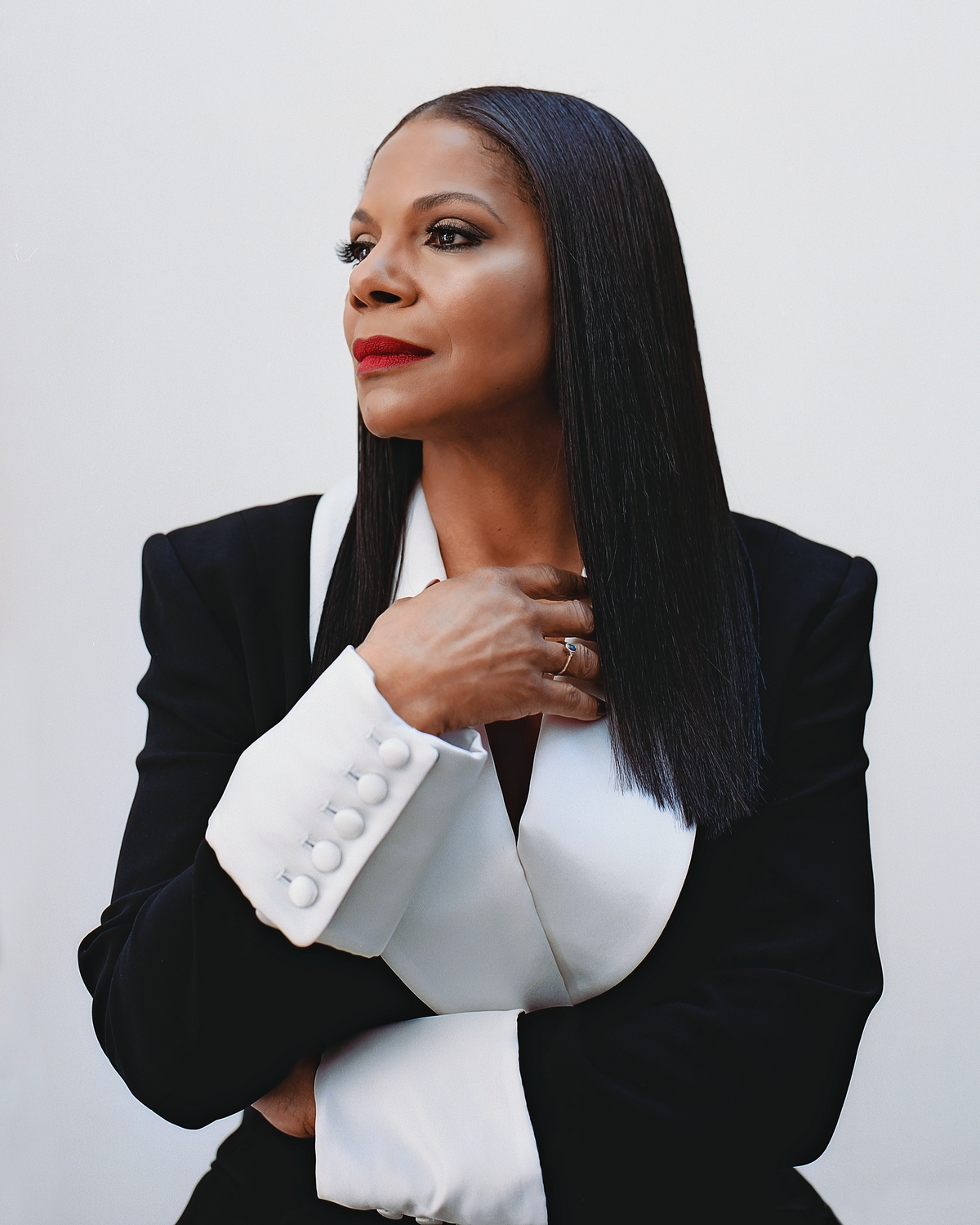
LIVING LEGEND
Gypsy star Audra McDonald is now the performer with the most Tony wins and nominations in history
BY CHARLOTTE ALTER
IF YOU HAPPEN TO TAKE YOUR EYES OFF THE STAGE DURING THE FIRST FEW MINUTES OF GYPSY ON BROADWAY, AND TURN INSTEAD TO THE AISLE, YOU’LL SEE A WOMAN STANDING ALONE IN THE DARK.
She’s in a velvet coat, holding a small dog, her face contorted into a grimace of ambition so fierce it looks something like rage, her eyes focused on the children dancing onstage as her hands twitch to the beat of the music. At first, nobody notices her, even though she is Audra McDonald, arguably the greatest living stage actor, even though she is already in character as Mama Rose, the most famous and reviled stage mother in musical theater. Then, she calls out her first line (“Sing out, Louise!”) and every head turns in unison. She is the person they have come to see, and she had been standing there next to them all along.
“Rose snuck in,” she tells me, leaning back on a cushioned chair in her dressing room, four hours before curtain. Her hair, prepped for her wig, is tucked under a baseball cap, and she is wearing comfy clothes before getting into costume. “When all the rest of the mothers have been kicked out, she snuck in, went in front, checked out what was going on. She’s already miles ahead when the show starts.”
The same could be said, in some sense, of McDonald. After rumors of her casting spread last year—“You know, people talk, people talk,” she said—the announcement was met with excitement and anticipation. And since the show opened in December, she’s been garnering widespread praise, with at least one critic having a “spiritual epiphany.”
“When you talk about Greta Garbo, you think of that face. When you think about Ethel Merman, you hear that voice,” says Christine Baranski, who worked with McDonald on The Good Fight and The Gilded Age. “With Audra, it’s that lustrous presence.”
Gypsy is a musical fable that follows Mama Rose’s relentless pursuit of fame for her daughters throughout Depression-era America, resulting in her losing one, June, altogether and pushing the other, Louise, to become the burlesque dancer Gypsy Rose Lee. It’s a show about the American Dream, or, more precisely, it’s a show about a mother’s American Dream, one that for most of history could be expressed only through her children. The show, with its famed music by Jule Styne and lyrics by Stephen Sondheim, is frequently referred to as the King Lear of Broadway, and Mama Rose is one of the meatiest roles available to a performer. “This is the Shakespeare of a musical theater woman’s career,” says Norm Lewis, who co-starred with McDonald in The Gershwins’ Porgy and Bess, for which she won her fifth Tony. “This is the pinnacle.”
She’s been played by luminaries like Ethel Merman, Tyne Daly, Bernadette Peters, Angela Lansbury, and Patti LuPone in the past, but until now, Mama Rose had never been played on Broadway by a Black actor. If anybody was going to do it, it was going to be McDonald. She is like the Meryl Streep of theater, except McDonald has more Tonys than Streep has Oscars. McDonald holds the record for most Tonys ever won by a performer, and is the only person to have a Tony in all four acting categories. And when her 11th nomination was announced on May 1, she officially became the most Tony-nominated performer in history, at just 54 years old.
And yet McDonald’s record-breaking performance comes at a unique moment for American theater. More and more audiences seem to be coming to Broadway to see shows and actors they recognize from their screens. The biggest shows are still the old standbys— Wicked, The Lion King—and some of the buzziest productions boast Hollywood names. Even as McDonald’s Mama Rose puts theatergoers in seats—Gypsy took in a respectable $1,891,769 in its highest-grossing week in January—it’s still the TV and movie stars who are bringing the big money to Broadway. Othello, starring Denzel Washington and Jake Gyllenhaal, raked in $2,818,297 during a week in previews, making it the top-grossing play in Broadway history, only to be topped by George Clooney’s Good Night, and Good Luck, which in May became the first Broadway show to exceed $4 million in a week. Glengarry Glen Ross, featuring Kieran Culkin and Bob Odenkirk, also crossed the $2 million mark.
‘SHE HAS SOME ABILITY TO ACCESS THE RAWEST AND MOST VISCERAL EMOTIONAL LIFE AND CONTINUE TO SING.’
—DIANE PAULUS, TONY-WINNING DIRECTOR OF THE GERSHWINS’ PORGY AND BESS
All of this makes McDonald’s dominance even more remarkable; at a time when theater seems like it’s being consumed by celebrity, her career represents a commitment to the old-fashioned principles of artistry. “She has some ability to access the rawest and most visceral emotional life and continue to sing,” says Diane Paulus, who directed her in The Gershwins’ Porgy and Bess. “That’s what’s mind-blowing.”
McDonald can walk down the street without being recognized, and she’s mostly able to live her life without being accosted by fans. When audiences arrive at the Majestic Theatre, they’re not coming to see her because she’s famous, they’re not there to take a photo or breathe the same air as a movie star; they’re there to witness her raw talent. “It’s not, Oh, let’s look at this perfect object,” says Gypsy director George C. Wolfe, who also directed McDonald in Shuffle Along as well as the movie Rustin. Her talent “makes an audience feel compelled to become vulnerable in the presence of her character’s vulnerability.”
Sitting in her dressing room surrounded by four different bouquets, including roses from Sunset Boulevard’s Nicole Scherzinger, widely assumed to be her main competition at the Tonys on June 8, I ask McDonald: What is talent? Is it inspiration? Is it 10,000 hours of practice? Is it, as entrepreneurs like to say, just hard work? She pauses for a second, thinking. “I think it’s an open channel connection to the divine, whatever the divine means to you,” she says quietly, preserving her voice. “Something coming through, that energy, that source, God, whatever you call it. It’s an open channel connection to that. Just a turnpike, no roads in the way.”
Which is why this show has been marketed by only two words, telling you everything you need to know: “Audra/ Gypsy.” Musical theater’s greatest performer taking on musical theater’s greatest role.
MCDONALD HAS BEEN singing and dancing onstage since she was 9. She was born in West Germany, where her father was serving in the military, but raised in Fresno, Calif., in the 1970s. Her father had been a high school band director before becoming associate superintendent of the Fresno school district, and her mother, an administrator at California State University, sang in the church choir. Her childhood home had both a piano and a jazz organ. “Being musical and having musicality was just what everybody did in my family,” she says. McDonald didn’t realize she was special until her father noticed that she sang louder than the other kids in the junior choir.
“One day after church, my mom and my dad had me matching pitches,” she recalls. “They were whispering to each other. I remember thinking, What is this all about?” McDonald had been diagnosed as a hyperactive kid, she says, “and they were looking for ways to channel my energy.” Her parents had just seen a show at the Fresno Dinner Theater, which had a junior company that performed before the main show.
Once she made the cut, she did Rodgers and Hammerstein, Irving Berlin, even Gypsy, playing one of the children in the little skit that opens the show (McDonald did not actually see the entire show when she was first in it as a child; the kids got to go home early). But when she was offered a role playing a servant girl, her parents forced her to decline.
At the time, she was devastated; looking back, however, she thinks their insistence was a gift. They worried that playing that part would have taught her, “Well, I can only play servants and I can only play enslaved people.” Instead, refusing that role set her up for a lifetime of auditioning for interesting parts, “even though I didn’t necessarily look the way people think I should look.” If she wasn’t cast, it wouldn’t be because she didn’t try out. “That was instilled in me at a very early age, to not be the one to cut myself off from these roles.”
McDonald trained in classical music at Juilliard, which she recalls as an imperfect fit; in retrospect, she says, she should have studied drama. For a period after she graduated, McDonald struggled to get roles. She was told to make herself look as light as possible when she auditioned to play Julie in Show Boat, so “I had all this white makeup on me, to try to lighten my face up.” She auditioned for the ensemble of Beauty and the Beast and didn’t get the part.
Her first big role was Carrie in the 1994 revival of Carousel. She was 23. It was one of the first times that a Black actor was cast in a classic musical-theater role that had traditionally been seen as white. “It was just this huge thing, just mind-blowing for a lot of people,” she says. “Some people thought it was wrong and historically incorrect. And everybody’s always going to have an opinion, especially when it’s classics.” She won her first Tony for that role.
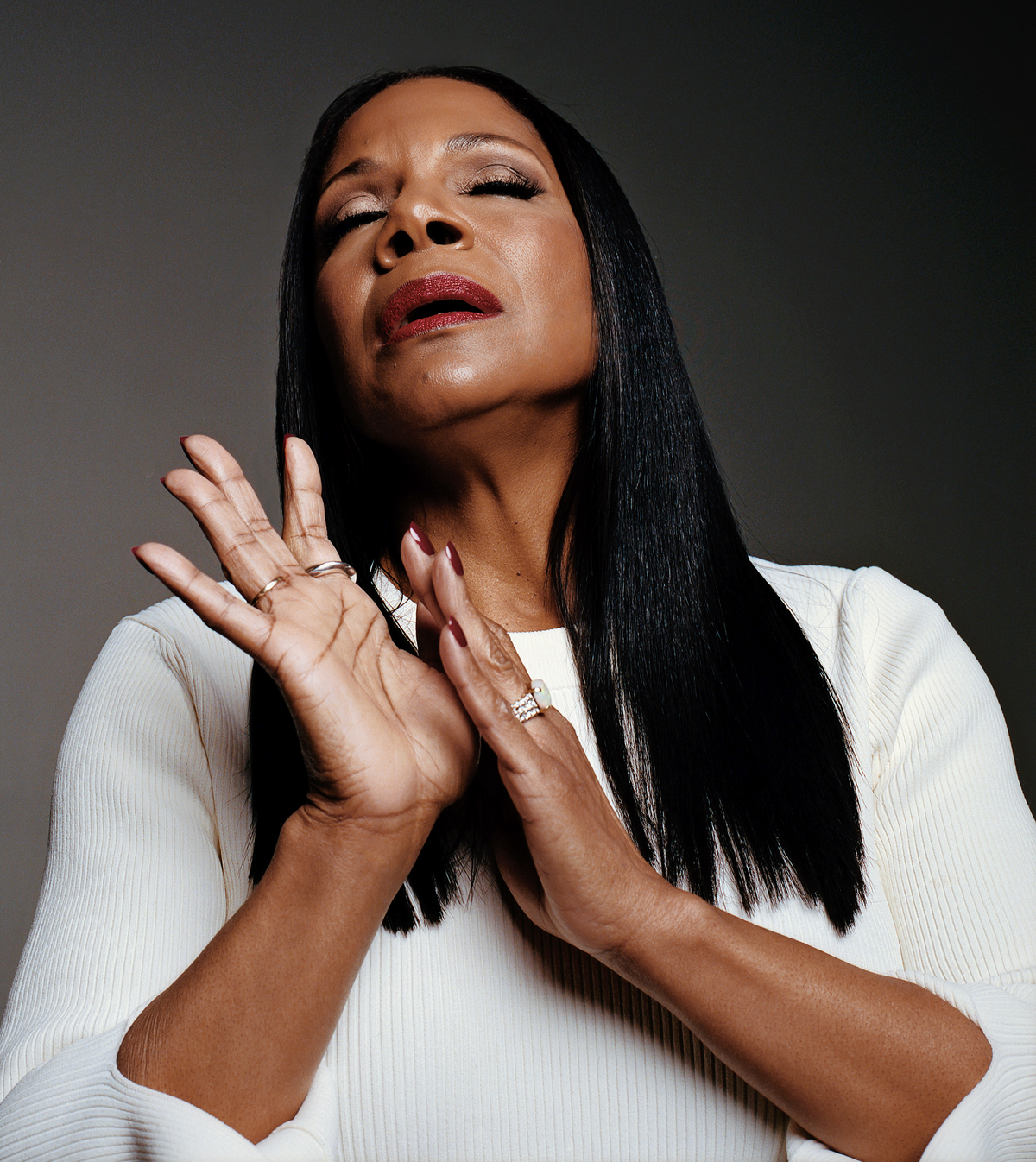
In the years since, colorblind casting has become far more normalized. “Now I just don’t think it’s thought of as such a big deal,” she says. Even though this production of Gypsy stars not only a Black Mama Rose but also Black daughters—making this a show about a Black family seeking vaudeville fame in the 1930s—McDonald frequently points out that not a single line has been changed from the original show. Wolfe thinks that the “boundary-breaking” nature of McDonald’s performance is the least interesting thing about Gypsy. “It shrinks the conversation,” he says. “Because the wonder is the talent, the wonder is the gift, the wonder is how hard she works. To discuss her exclusively within a parameter of race, or how she’s breaking through Broadway, that has more to say about Broadway than it has to say about Audra McDonald.”
But 30 years after Carousel, the conversation has not entirely moved on. “A talent as rare as Audra McDonald shouldn’t play a Black Rose. She should just play Rose,” wrote columnist John McWhorter in the New York Times, adding that a Black woman seeking Shirley Temple–style stardom for her Black daughters would be “a delusion so quixotic that it would have to be the story’s central tragedy.” After seeing her performance, McWhorter wrote a whole new piece: “I’ve Changed My Mind. Audra McDonald Was Right.”
LET ME TELL YOU about the time I acted with Audra McDonald. Well, first let me clarify. I was a student intern on The Gershwins’ Porgy and Bess in the summer of 2011, and McDonald was the star. One of the other actors twisted her ankle during blocking, so for a week of rehearsals, I stood onstage and did the injured cast member’s physical movements while she sat in the wings, icing her ankle, saying her lines, and singing her songs. At one point, my character was supposed to give a drink of water to McDonald’s Bess. We didn’t have props yet, so I pretended to hand McDonald a glass the way a toddler might present an imaginary cup at a tea party. She took it, and drank. She drank the water as if it were a full gulp of cold water on a hot day, as if she could see the droplets spilling down the side of the non-glass that I sloppily handed her, the glass that she invented. Then she wiped her chin, where the imaginary water had spilled.
To show up and work like this every rehearsal, every performance, every day, McDonald has become an emotional athlete. “She’s a marathon runner.” says Baranski. “She’s a Navy SEAL.”
McDonald arrives at least three hours before every show. She gets into her wig and makeup, stretches, and does her vocal warm-ups. Then, a half hour before the show begins, she needs total quiet. She asks that nobody speak to her unless it’s an emergency. “It’s almost like there’s a bomb . . . those things that implode before they explode? That’s me,” she says. “I’m clearing the way for me to go on her journey.” (In the middle of all this, she also has to rub a pepperoni stick all over her hands, which helps keep the little dog in check onstage.) Then, five minutes before curtain, “I’m a little bit like a restless horse,” she says, banging on her knee in a galloping beat, like, “Let’s go.”
And indeed McDonald’s career has been nonstop, if not always a straight line. Two years after Carousel she won another Tony, for her performance in Master Class. A few years later she won her third, for Ragtime. By that point, she was one of only a handful of actors in history to win three Tonys in five years; she was 27. Five years later, she won again, for A Raisin in the Sun, and earned an Emmy nomination for her role in the 2008 TV adaptation.
Still, she says, her onstage acclaim did not necessarily translate to roles beyond Broadway. “People only see our successes,” she says. She was trying to break into television, but “I was banging my head up against the wall.” There were “years and years where I couldn’t book a thing,” she says. “I couldn’t book a commercial.”
‘SHE’S A MARATHON RUNNER. SHE’S A NAVY SEAL.’
—CHRISTINE BARANSKI, MCDONALD’S CO-STAR IN THE GOOD FIGHT AND THE GILDED AGE
Finally, in 2007, as she was in the middle of a divorce from her first husband, she was cast as fertility specialist Naomi Bennett in Private Practice, Shonda Rhimes’ spin-off of Grey’s Anatomy. She commuted to L.A. for years, not wanting to uproot her young daughter Zoe from her home in New York. But eventually it became too much; she asked Rhimes to write her gracefully out of the show, so she could be back east for Zoe’s teenage years.
It was soon after McDonald returned from L.A. that she took on the part of Bess. That role demonstrated the lengths she would go to to bring a character to life. She would repeatedly go back to the original texts, insisting her character have a scar on her face because that’s how she was described in the novel that inspired the play that inspired the opera. She interviewed sex workers and drug addicts in order to inform her emotional understanding of the role. Even months after the critics had come and gone, she was still doing more research to deepen her connection to Bess. One day, well after the show had opened, Paulus visited her backstage. “She was like, ‘I just watched this documentary,’” Paulus recalls. “We’d done a run at American Repertory Theater, we’d done a run on Broadway, and she’s still searching, she’s still learning.”
Two years later, she played Billie Holiday in Lady Day at Emerson’s Bar & Grill (Tony No. 6) and was nominated for an Emmy for her performance in the TV broadcast. (She has one Emmy for hosting a PBS special as well as two Grammys, so she needs only an Oscar to complete her EGOT.)
When she took a role in Shuffle Along in 2016, however, McDonald’s physically taxing career crashed against her family life. By then McDonald was married again, to Broadway actor Will Swenson, but she was surprised to learn during rehearsals that she was pregnant again at 45. It was a complicated pregnancy, full of swelling and water in the knees at a moment when she had to do a lot of high-energy dancing. One night, while she was singing her big number, she started to hemorrhage onstage. “I felt it happen. I felt that gush,” she told me when I interviewed her in 2023. “And I thought, ‘I just lost my baby, and I’m still singing.’”
It turned out McDonald did not lose her pregnancy that night; her younger daughter Sally is now 8. But after experiencing a second medical event onstage and leaving midperformance to go to the hospital, she did have to back out of Shuffle Along. When the show closed shortly afterward, her pregnancy was blamed. That experience, she says, taught her about the pressures women face while trying to balance motherhood with a career in the theater. “It was very interesting to have people in the business come up to me afterwards and say things like, ‘Oh, wow, your baby literally stopped that show,’” she recalls. “That was really difficult and unnecessary.”
“It’s so hard to have the kind of career Audra had and to have a marriage and a family,” says Baranski. “She’s the total human being and the total performer. Often one thing suffers because of the other, but she brings it all together.”
In many ways, McDonald has lived Mama Rose’s dream. Rose is a woman who swallowed her own aspirations and put them into her girls, trying to save her daughters from a life where they “cook and clean and sit and die,” as Rose puts it. “People were always referring to Rose as some monster,” McDonald says. “I think she’s not a monster.”
McDonald doesn’t need her audiences to like Rose, but she needs them to understand her. “I think she’s a woman with very few options, big ambitions, big dreams, big trauma that she’s trying to run from,” she says. “She is trying, and she’s not succeeding.”
I ask McDonald if the show had made her think differently about her own girls. “So interesting having one that’s 8 and one that’s 24,” she says. “And when I started this show, it was before the election, and where are we now?” She does what can only be described as a full-body shudder. Sally wants to be a veterinarian or an astronaut or a tennis star, depending on the day. Zoe works at a theater and is playing bass for a new musical. “I want happiness and fulfillment and health for them. I want them to be able to be free, to be who they are, to express that without fear of persecution,” she says. “Then the other dream is to recognize and respect all people and all different cultures and ways of being and ways of expressing and ways of living and ways of existing, and they do.” Then she exhales a long breath. “It’s a weird time.”
PERFORMANCES OF GYPSY began less than three weeks after the 2024 election, which not only dashed the dreams of those who hoped to elect the first Black woman President but also marked a culmination of a cultural backlash against diversity, equity, and inclusion. Since then, President Trump has taken over as chair of the Kennedy Center, where McDonald has performed on multiple occasions, and his Administration has slashed millions of dollars of arts funding, with National Endowment for the Arts grants being summarily canceled.
I ask McDonald how she’s staying sane through all of this. “I don’t know that I am,” she says. She flexes her fingers as if she’s making and unmaking a fist. It’s clear she has thoughts—a lot of them—but she’s weighing what to share. After a long silence, she says there’s only one way through the madness: “Let art bring people back to their humanity.”
McDonald has been deliberate about using her stature to create more opportunities for other Black performers; she co-founded Black Theatre United after George Floyd’s murder to combat systemic racism in commercial theater. But now, she’s using her politics to fuel her performance. “Night after night, the show has to feel fresh. So sometimes you have to find new veins to open,” she says. “Post-election, I didn’t have to search as hard for the veins. They were raw and coming right up.”
There’s a moment at the end of the show when Rose, rejected by her children, finally comes to terms with her thwarted ambitions for herself. She is the stage mother, and not the star, because she “was born too soon and started too late.” She sings in a frenzy, her face streaked with tears, as her lips quiver and her hands reach up spread-fingered toward a future she never got a chance to grasp: “When is it my turn?” And you can see it, in this sweating, crying, grasping moment: the clear turnpike, the open channel to the divine.
Normally, McDonald doesn’t like to know who is in the audience. But on the night former Vice President Kamala Harris came to see the show in February, somebody let it slip. That night, when she sang those words—“When is it my turn?”—it was about so much more than one stage mother’s vaudeville ambitions.
McDonald has based her Rose on her aunts, grandmothers, and great-grandmothers, and whenever she sings this final song, “I always feel them coming up.” But the night Harris was in the audience was different. “I felt like I had roots shooting all the way down to the center of the earth, and then just shooting all the way up through my head,” as if she were channeling “every Black woman that’s ever lived,” she says. “That’s what it felt like to me that night that she was there.”
Given all of her accomplishments, it’s reasonable to wonder where she goes from here. How does one push past the pinnacle? For McDonald, though, it’s hard to look beyond Gypsy. She will return on the third season of The Gilded Age in late June, and is thinking of starting a concert tour soon, but the Broadway run was recently extended through October, and she has no plans to leave.
And if she breaks her own record at the Tonys? McDonald would be honored, she says, but the awards are not the point. “They don’t change your life per se,” she says. “They change people’s perception of you, people’s expectations of you.” When I ask her what she means, her face starts to transform into a Greek chorus of envy and concern. “‘Well, you’ve got a Tony, you must be something!’ Or: ‘You’ve got a Tony, and you didn’t get nominated this time, so now you’re a loser!’ Or: ‘Are you OK? Oh, God, you didn’t win, oh God!’”
Her face returns to normal. “That’s all being thrown on you: it’s perception and expectation,” she says. “It’s an incredible honor, but it’s almost like you have nothing to do with you actually winning a Tony. You can do your work, and that’s it. All I can do is do my work.”
QUEEN OF THE TONYS
If Audra McDonald wins her seventh Tony, for her portrayal of Mama Rose in Gypsy, at the June 8 ceremony, she’ll break her own record. She has won six times and is the only person ever awarded in all four performing categories.
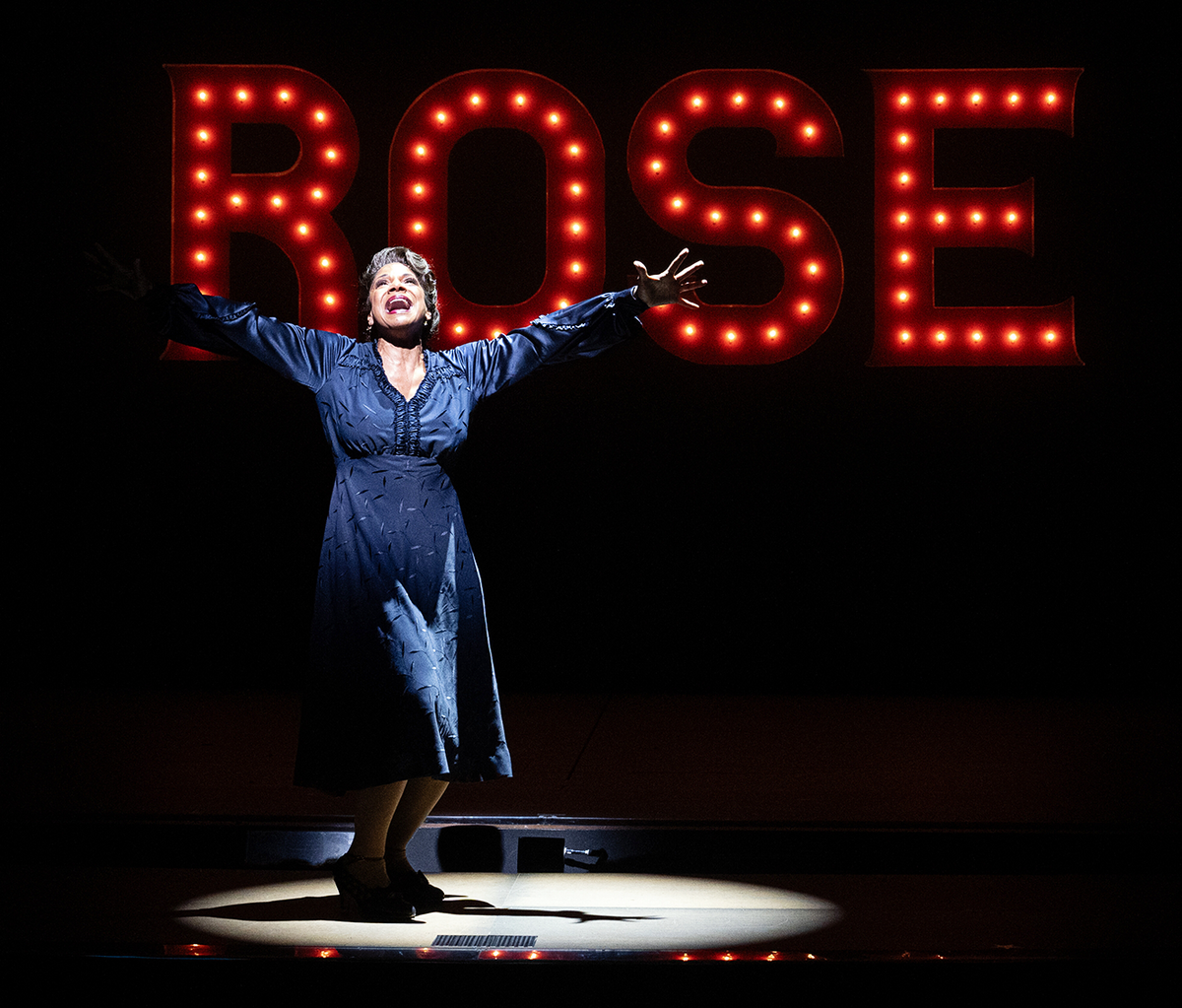
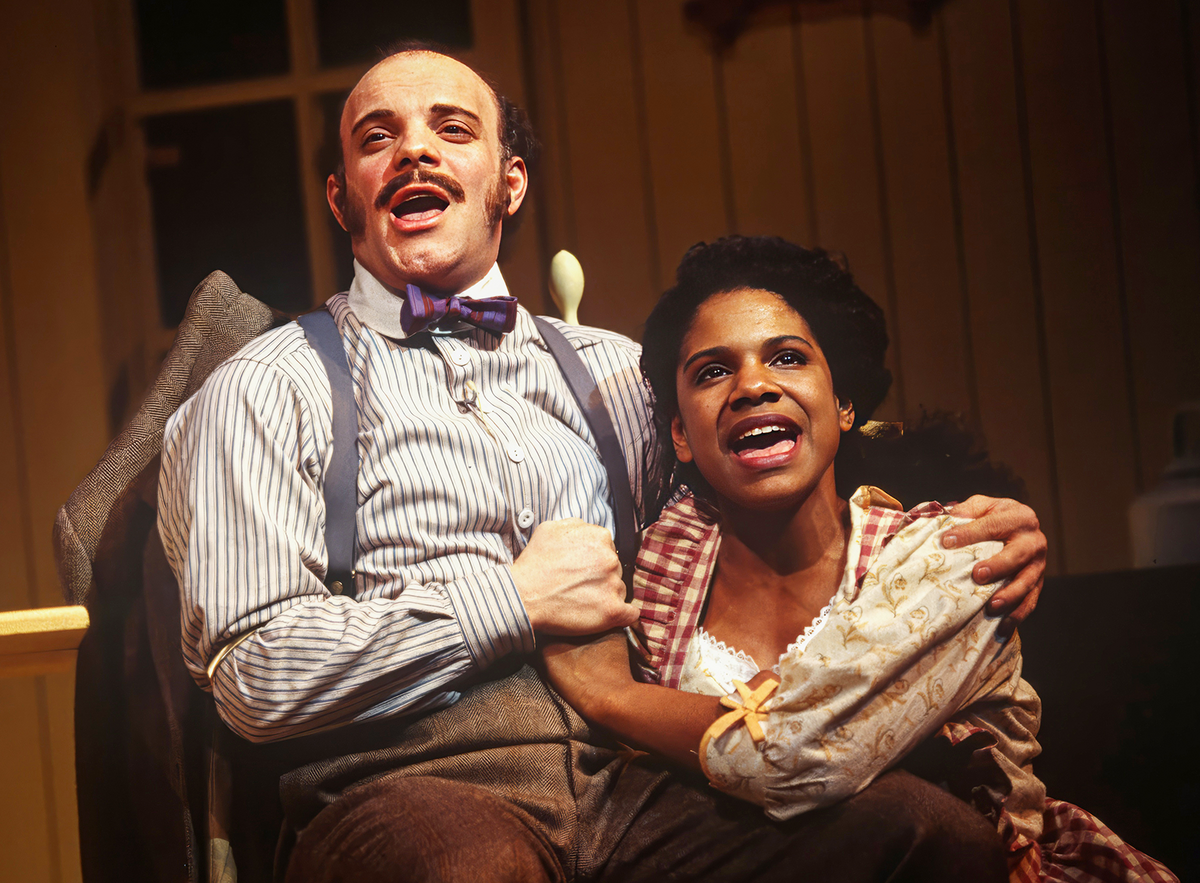
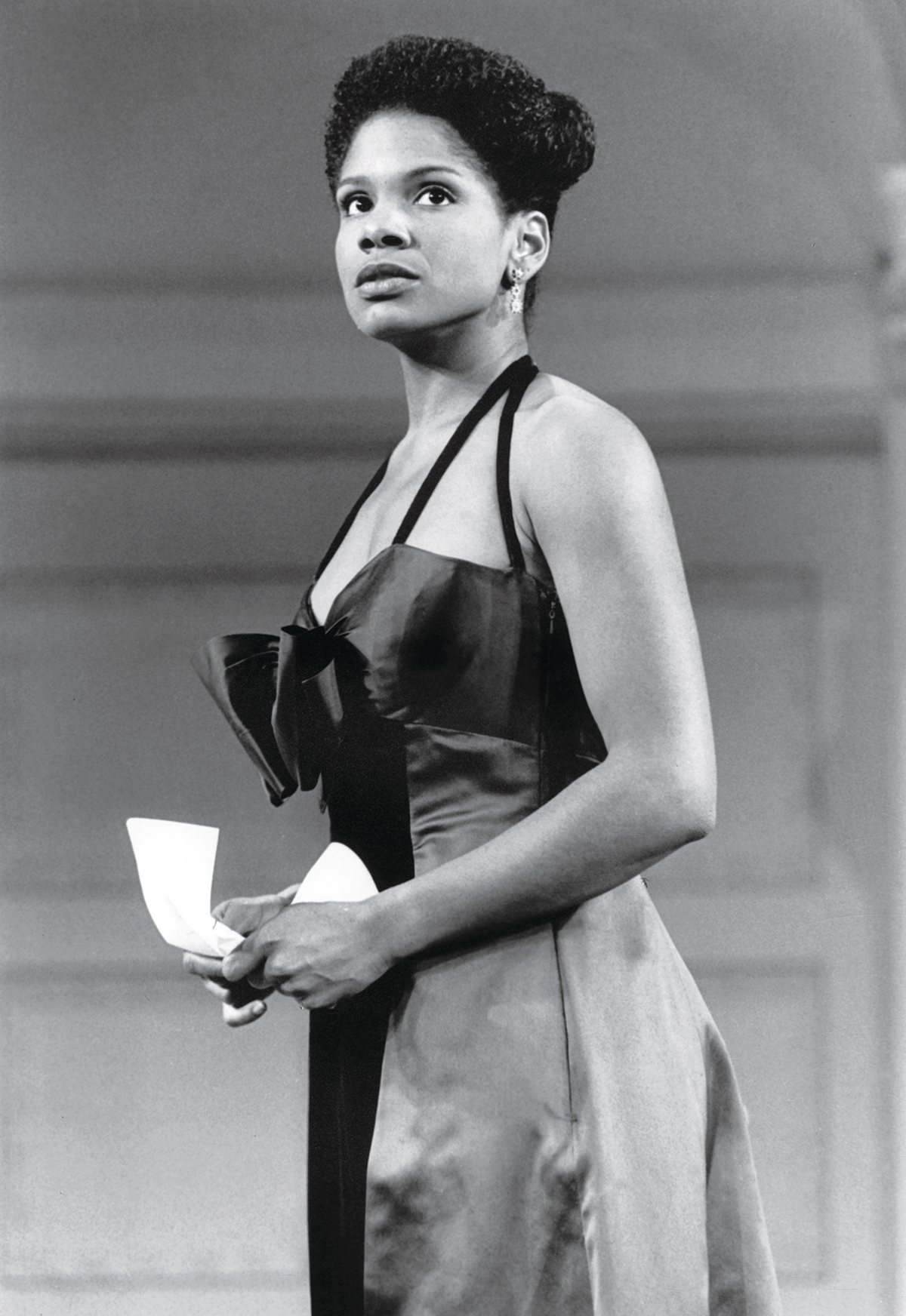
MCDONALD WON HER FIRST TONY AT 23, FOR HER PERFORMANCE IN THE 1994 REVIVAL OF CAROUSEL, RIGHT. SHE WON HER SECOND TONY IN 1996, FOR HER ROLE IN MASTER CLASS, LEFT.
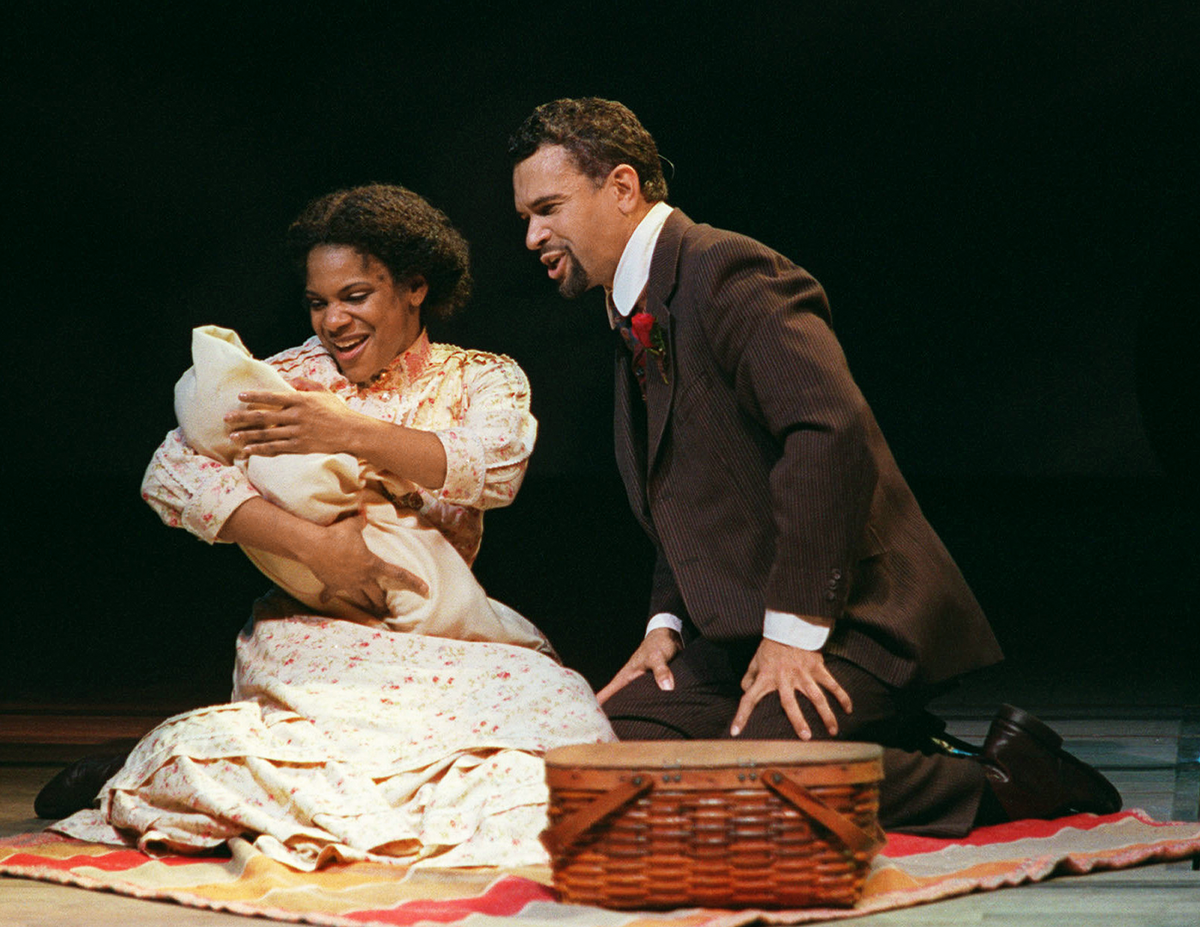
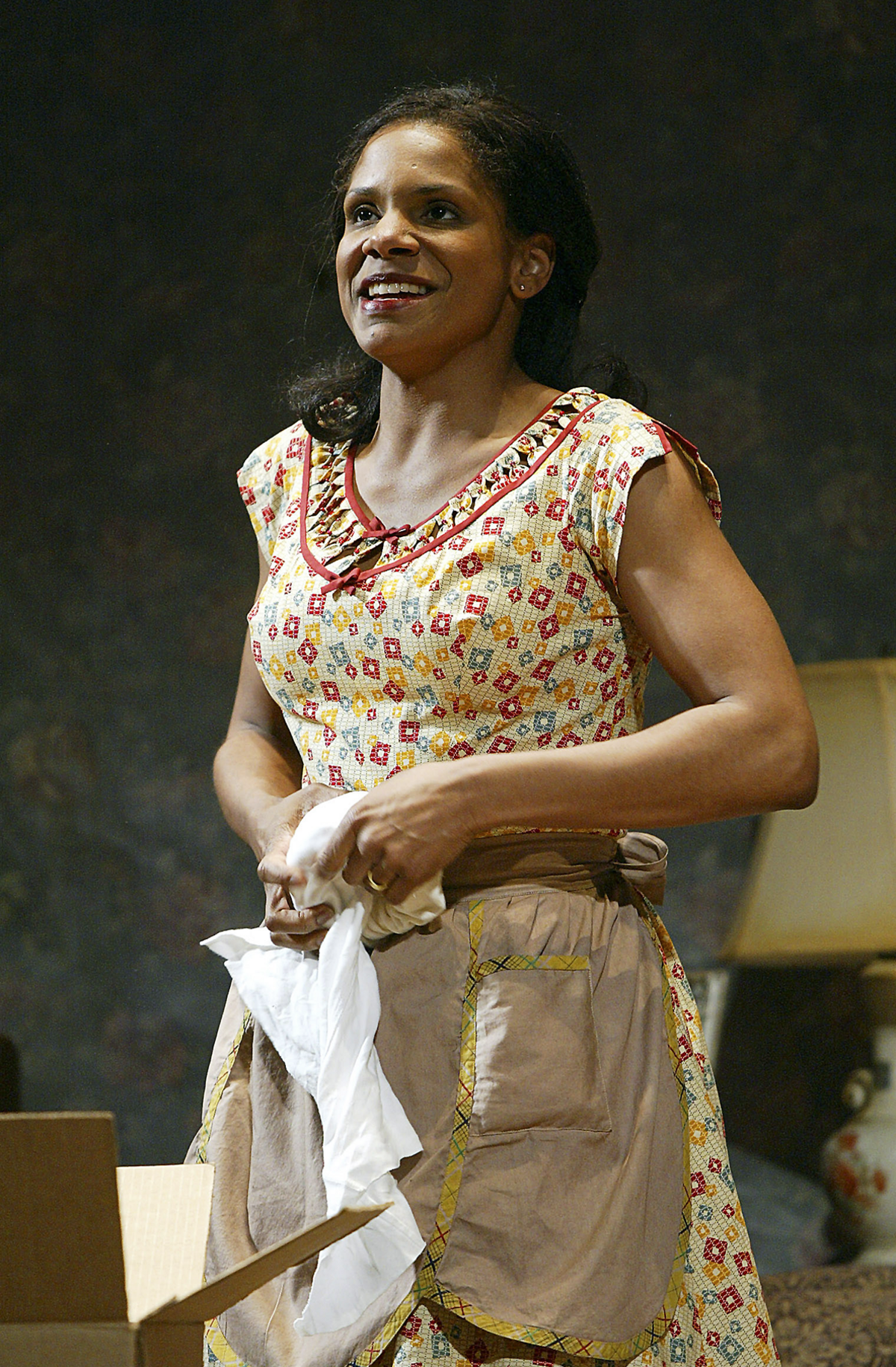
HER 1998 TONY FOR RAGTIME, LEFT, MADE HER ONE OF ONLY A FEW PERFORMERS TO WIN THREE TONYS BEFORE TURNING 30. SHE WON AGAIN, IN 2004, FOR A RAISIN IN THE SUN, RIGHT.

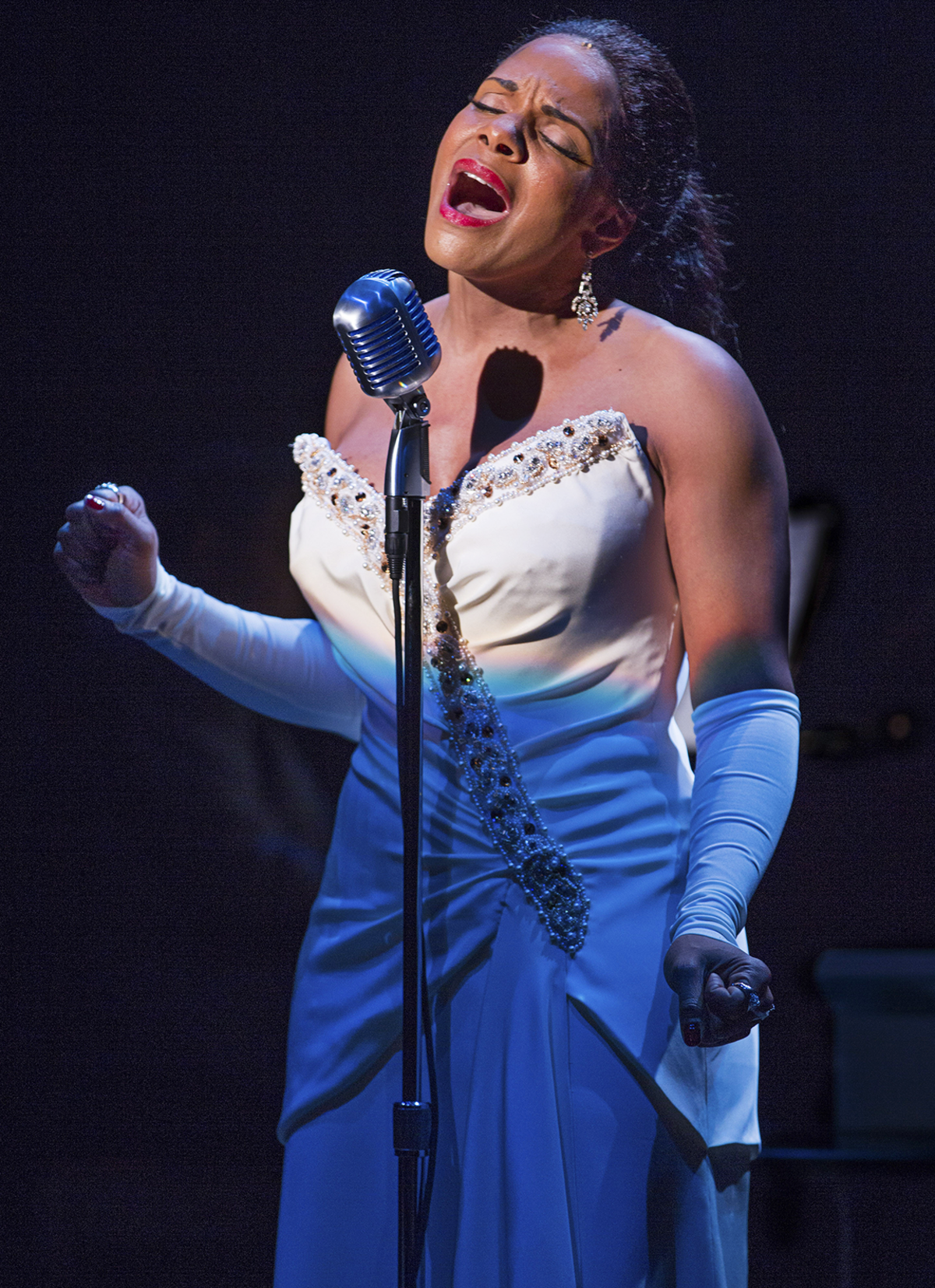
MCDONALD WON HER FIFTH TONY FOR THE GERSHWINS’ PORGY AND BESS, LEFT. HER SIXTH TONY, FOR LADY DAY AT EMERSON’S BAR & GRILL, MADE HER THE MOST TONY-AWARDED PERFORMER IN HISTORY, RIGHT.
PHOTOGRAPHS BY ERIK CARTER FOR TIME; SARA KRULWICH—THE NEW YORK TIMES/REDUX (1,4,5,7); JOAN MARCUS; EVERETT COLLECTION; JEMAL COUNTESS—GETTY IMAGES
Time Off
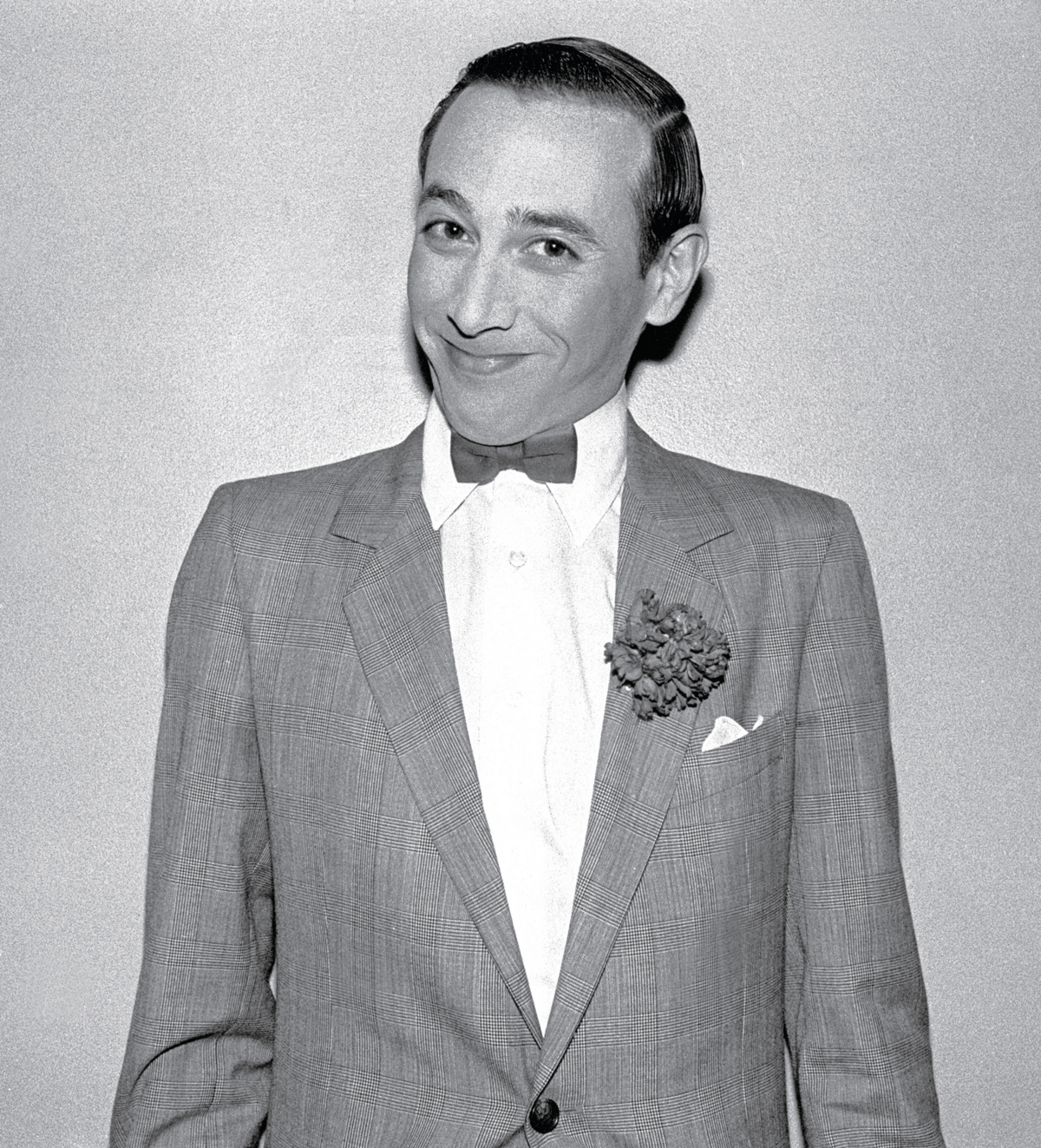
The Man Behind the Bow Tie
In a documentary filmed just before his death, Paul Reubens reflects on the life he led when the cameras weren’t rolling
BY RICH JUZWIAK
ON JULY 31, 2023, MATT WOLF RECEIVED NEWS that no documentarian wants to hear: the subject of his uncompleted film was dead. This was no mere talking head. It was a man who left an indelible mark on pop culture, whose manic persona, gray suit, and bow tie helped define the 1980s. On a personal note, says Wolf, it was someone who “changed who I was through his art.” The subject was Paul Reubens, the actor best known as Pee-wee Herman, who had been diagnosed with cancer six years prior.
“Paul was very preoccupied with the film being finished before he died,” says Wolf, whose two-part HBO documentary, Pee-wee as Himself, premiered at Sundance to rapturous praise and is now streaming on Max. Though Reubens never said his death was imminent, or even told Wolf of his cancer diagnosis, his legacy was clearly on his mind. “Every day I woke up saying, ‘You must rise to the occasion. Do not drop the ball,’” says Wolf, whose previous documentary subjects include the musician Arthur Russell and the Biosphere 2.
Reubens was, according to Wolf, intense, complex, and “the funniest and one of the smartest people I’ve ever met.” He was also a “resistant subject.” That resistance plays out onscreen and distinguishes Pee-wee as Himself from other celebrity bio-docs. This one tells, but it also shows. The telling comes via recollections from Wolf’s talking heads—drawn from 40 hours of interviews with Reubens, plus friends, family, and colleagues—as well as Reubens’ career archive, including 1,000 hours of video footage and tens of thousands of images. These take us from Reubens’ early life as a precociously creative child growing up not far from the Ringling Bros. Circus headquarters in Florida, through his work in the improv group the Groundlings, to his career successes: creating and starring in the hit 1985 film Pee-wee’s Big Adventure and practically rewriting the book on children’s programming during the five-season run of his Saturday morning CBS show Pee-wee’s Playhouse.
Where the doc shows rather than simply tells, however, comes when Reubens breaks the fourth wall about the process of making it, including wanting to be more hands-on with the production and his suspicious regard of Wolf. The tension is palpable. At one point, Reubens tells Wolf that he made “one documentary that I liked out of, what—six?” “There were times I was angry at Paul,” recalls Wolf. “I accepted this was great material for the film, and he knew it.”
Reubens, who admired people “living conceptually” during his college days at California Institute of the Arts, had devised Pee-wee as a character meant to exist in the real world as well as showbiz. He was often billed as Peewee Herman during interviews and in movies, rarely letting his real self show in service of his full-time performance-art piece. For Wolf, the trick was to pull back the curtain on the performance to reveal the man himself.
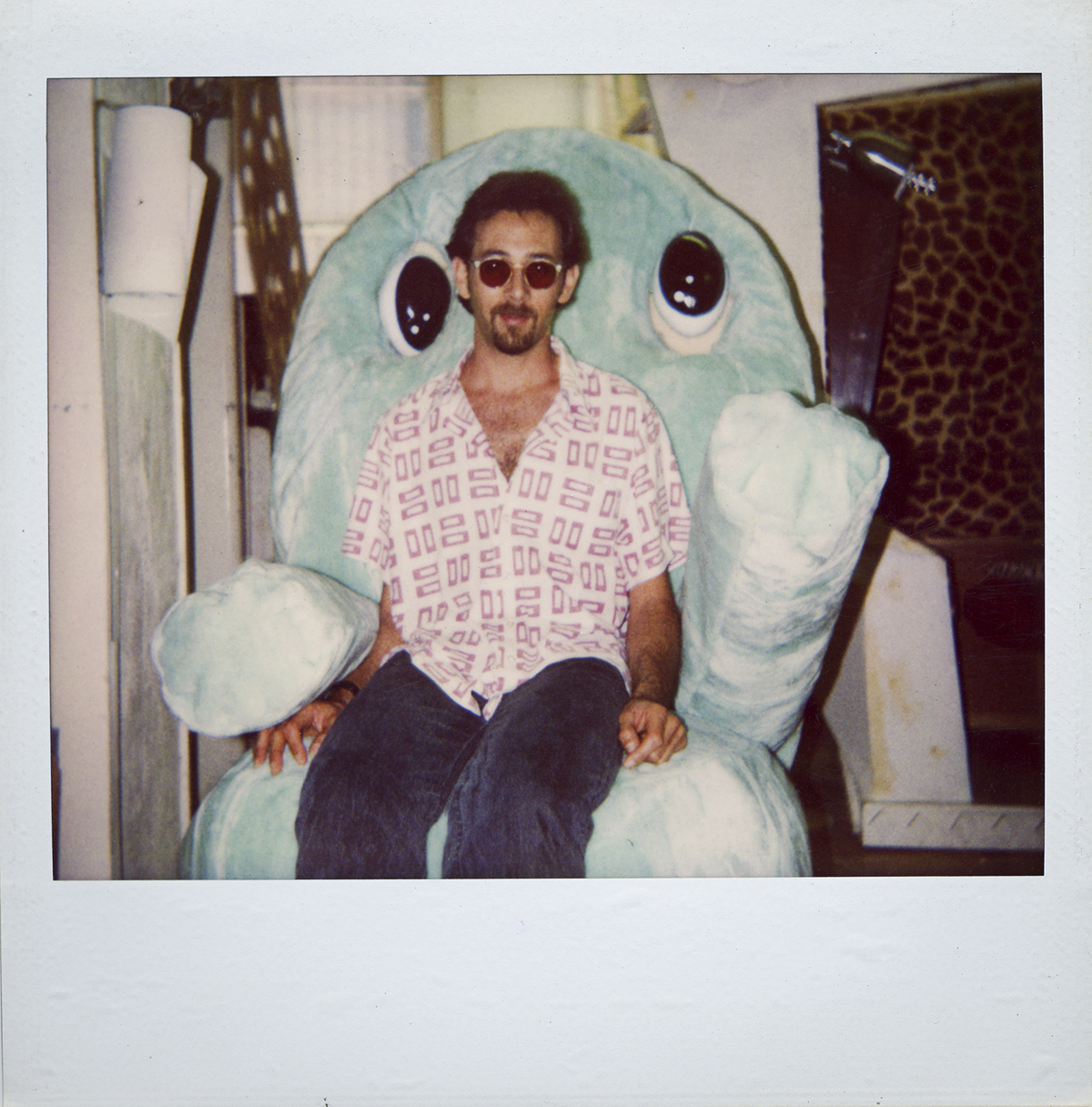
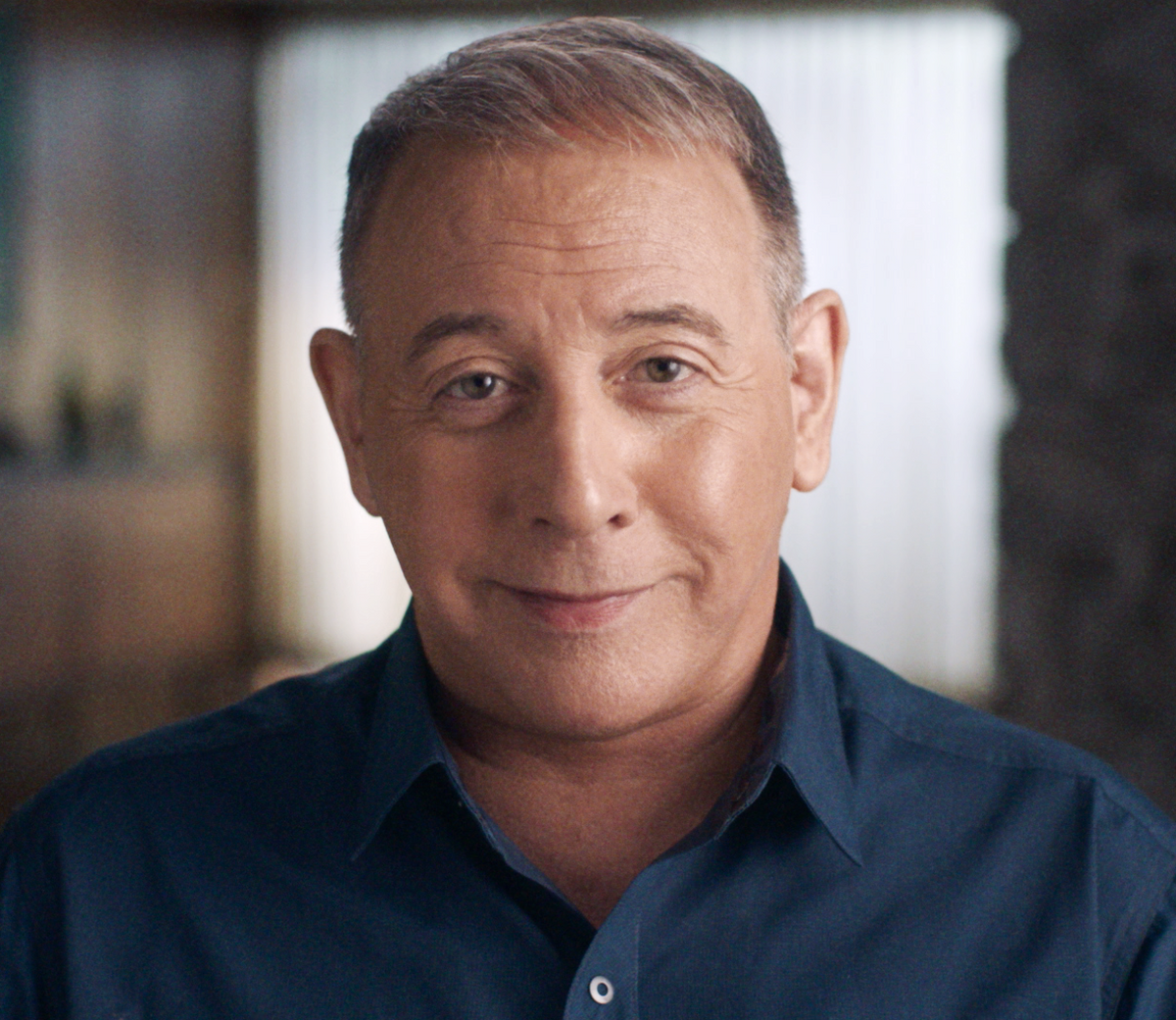
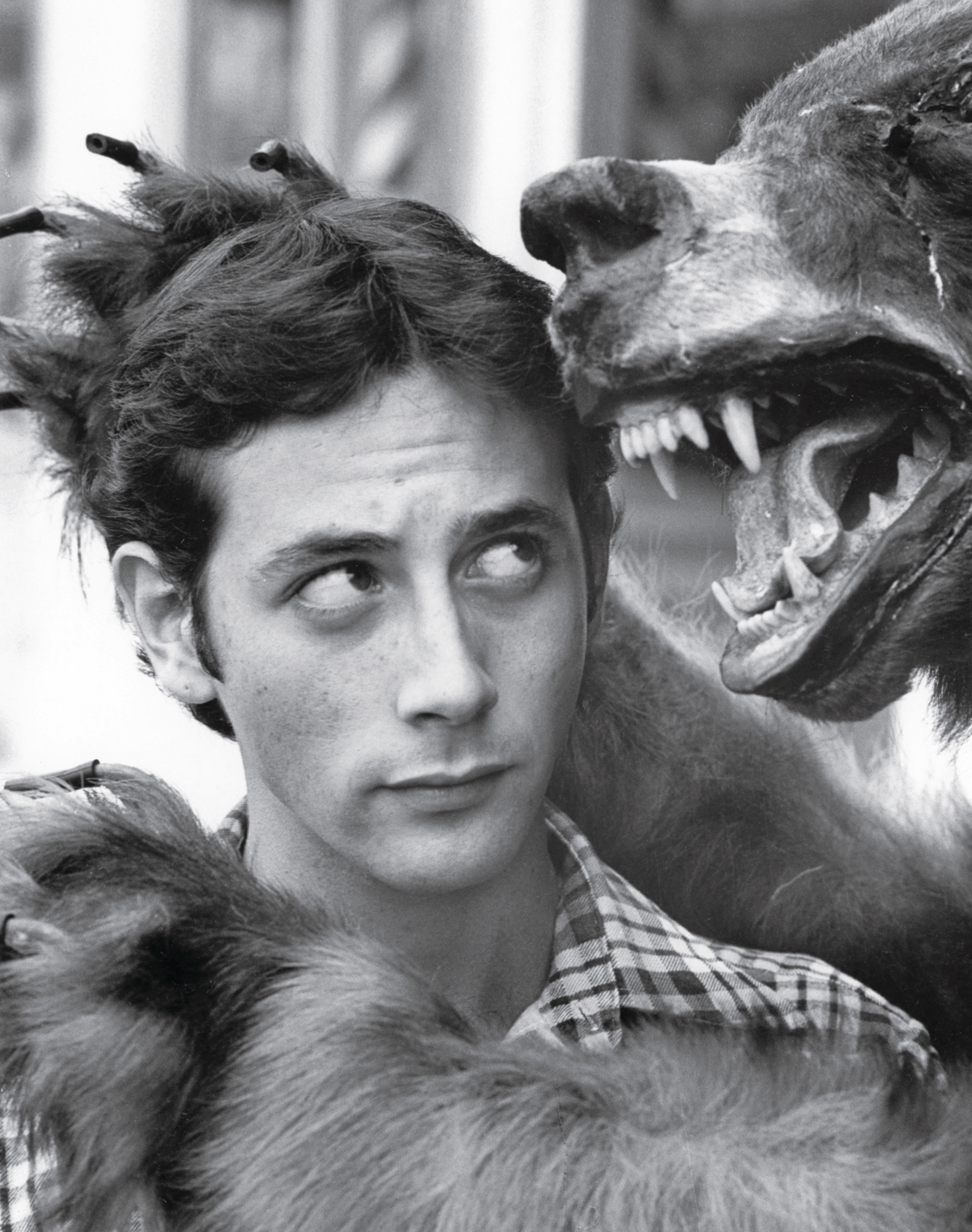
Archival Polaroids of Reubens as a young artist, left and right; Reubens in the documentary, center
REUBENS WAS WOLF’S “DREAM SUBJECT.” They connected in 2020, during the height of pandemic lockdown, after Wolf caught wind that Reubens was interested in making a film about his life. So began a series of FaceTime and Zoom interactions that would number in the hundreds of hours. “With Paul, there was no 15-minute conversation,” Wolf says. Reubens, unsure whether Wolf was the right guy for the job, proceeded begrudgingly. And then one day, the resistance just abated. “He said, ‘I’m in. Sometimes you gotta take a leap of faith,’” remembers Wolf.
Though the line between director and subject was fixed, Wolf nonetheless considered Reubens a collaborator. But the question of just how much Reubens was to contribute added to the strain. Before Wolf had completed his interviews, Reubens went incommunicado. “We were at an impasse as to what postproduction would look like, and I was holding my ground that I would be doing that independently, and that he would have opportunities to see the cut,” says Wolf. “And that didn’t feel like enough to him.”
“Paul was very particular,” says Cassandra Peterson (better known as Elvira), who befriended Reubens in the 1970s when both were in the Groundlings and who appears in the doc. “He wanted to control things, and have things exactly the way he wanted, to a really extreme degree. So I kind of felt sorry for the filmmakers. I knew it would be a tough road.”
Wolf was initially reluctant to include his own presence in the movie, but he and Reubens decided together to explore their dynamic onscreen. Control was a frequent topic behind the scenes and in front of the camera, where Reubens openly pondered if he should be the one making the film. Wolf attempted to shoot candid footage of Reubens to augment the talking-head material, but it didn’t work. “If anything that wasn’t planned happened, he would be unhappy,” Wolf recalls. As to Reubens’ need for control, Wolf has some theories. “Many exceptional artists are incredibly controlling,” Wolf says. But also: “He was controlling because he lost control of his personal narrative in the media.”
Wolf is referring to two arrests that resulted in career-upending scandals. The first occurred in 1991, when Reubens was picked up in an adult movie theater in Sarasota, Fla., and charged with indecent exposure. This resulted in the effective cancellation of Pee-wee’s Playhouse; he pleaded no contest and maintained publicly that the allegations were false. The second happened in 2002, when Reubens was charged with possession of child pornography. He eventually took a lesser plea of obscenity, while maintaining that nothing in his archive of vintage gay erotica constituted child sex abuse material. The impasse between Wolf and Reubens occurred before Wolf got to ask about these arrests in detail. Those parts of the movie are largely told through the recollections of his friends and family.
Wolf did capture Reubens discussing his sexuality, which Reubens had never done publicly. Though he had relationships with men, he was closeted for the sake of his career. In the film, Reubens seems at ease discussing his life as a gay man, but Wolf says the filming of that interview “was not a chill, easy day.” Sexuality was both a point of connection and tension among director and star. Wolf, too, is gay, but came out at 14 and values his sexuality as a key feature of his identity, a position Reubens didn’t share. When Wolf engaged Reubens about his sexuality, he noticed his subject was “squirmy and procrastinating a lot” then spoke only in vague terms. Finally Reubens took Wolf aside and said, “I don’t know how to do this.” To that, Wolf had a simple directive: “Just say, ‘I’m gay.’” Once the cameras were back rolling, Wolf asked Reubens point blank, “Are you gay?” Reubens joked and then “snapped in,” discussing his sexuality freely. “It was extraordinary, and I felt very proud of him,” Wolf says.
‘Every day I woke up saying, ‘You must rise to the occasion. Do not drop the ball.’
MATT WOLF ON TELLING REUBENS’ STORY
IN JULY 2023, Wolf and Reubens resumed communication and agreed to proceed with the shoot. But the interview they planned never came to pass—Reubens died at 70 just two weeks later. The day before he died, Reubens recorded a voice note in which he reflected on his 2002 arrest and sent it to his publicist, Kelly Bush Novak, who passed it on to Wolf. Toward the end of the film, a frail-voiced Reubens says, “More than anything, the reason I wanted to make a documentary was to let people see who I really am and how painful and difficult it was to be labeled something that I wasn’t. The moment I heard somebody label me as, I’m just going to say it, a pedophile, I knew it was going to change everything moving forward and backwards.”
Reubens’ death put Wolf in a shaky position. He pushed down feelings of grief in order to finish his film. The stakes couldn’t have been higher. “I’ve never felt so trusted to take on such a big thing,” Wolf says. Peterson loves the resulting film. “I really felt like Matt got Paul. He had a handle on what he was doing,” she says.
The documentary is an honest portrait of a creative technician, his drive, his process, and the way he negotiated life in the public eye. The film rather explicitly asks a question that has preoccupied the culture on conscious and subconscious levels in the age of social media and scorn for traditional media: Who gets to tell people’s stories? It seems clear that had Reubens been in creative control, we wouldn’t have seen the glimpses of his humanity that, while not always flattering, make Pee-wee as Himself so riveting. And, while they might not have been what Reubens wanted, they are the product of the deep respect and admiration Wolf had for his subject. “I was determined to make meaning out of this,” says Wolf. “I said to Paul, ‘I will do right by you.’ I meant it.”
HBO; HBO/PEE-WEE HERMAN PRODUCTIONS INC. (2)
TIME OFF REVIEWS
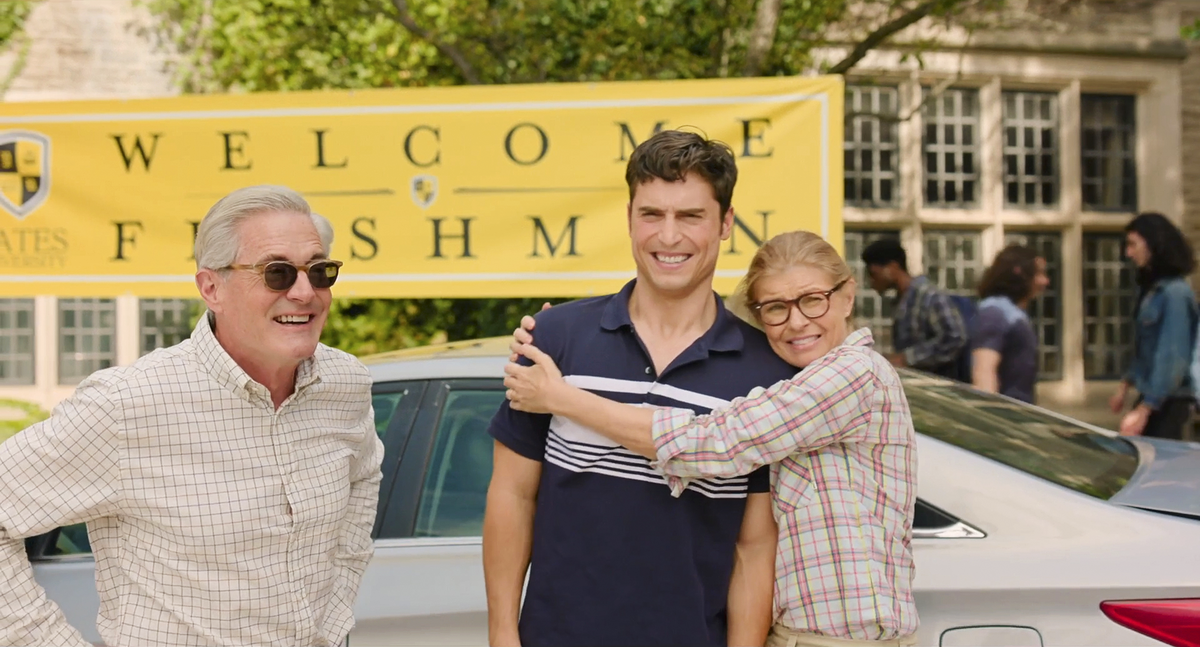
Skinner, center
TELEVISION
Comedy’s new generation finds its absurdist voice
BY JUDY BERMAN
THE CREATORS OF FX’S ADULTS MUST HAVE known comparisons between their show and Girls were inevitable, because they leaned way into them. Beyond the similar titles, both comedies follow 20-something friends in New York City. There’s an explicit callback in Adults’ premiere to Girls’ pilot, when Lena Dunham’s narcissistic aspiring writer informs her parents she might be “a voice of a generation.” Adults abbreviates this cliché as “V of our G,” and applies it to a media-savvy young man who becomes the envy of his peers after a workplace sexual-harassment scandal lands him a six-figure payout.
Equal parts tribute and send-up, the moment cleverly heralds the arrival of a new generation anointing its own voices. Adults is the creation of Rebecca Shaw and Ben Kronengold, a couple and comedy team whose Yale graduation speech went viral in 2018. Along with comedian Benito Skinner’s college-set Prime Video romp Overcompensating, it’s the second hangout comedy to debut in May from creators born in the mid-’90s. Neither as internet-addled nor as pandemic-damaged as you might expect, these shows update the genre with all the absurdism and self-awareness of a generation that distracts itself from a world in crisis by bingeing Girls, Friends, and Sex and the City.
While previous zeitgeisty series about young adults in New York were set in aspirational environs, Adults gestures toward Gen Z’s limited horizons by packing its five characters into one guy’s childhood home in an unfashionable part of Queens. Timid sweetheart Samir (Malik Elassal) is the man of the house, fumbling through challenges like a broken water heater. Issa (Amita Rao) is a dramatic, sexually liberated heir to Broad City’s Ilana; her chill, pansexual boyfriend, Paul Baker (Jack Innanen), is, inexplicably, always addressed by his full name. Anton (Owen Thiele) makes friends everywhere he goes. Anxious striver Billie (Lucy Freyer) is the only one who thinks much about her future.
The Gen X Friends had the luxury of slacking in a coffee shop for years before ascending to the kind of high-powered careers the SATC women had when we met them in their 30s. As much as they flailed in pursuit of them, the millennial Girls had dreams. But for the Adults, just being able to confidently claim the titular identity seems a sufficient life goal.
Adulthood is even more elusive for the two freshmen at the center of Overcompensating. Surrounded by new acquaintances egging them on to prove their hetero horniness, Skinner’s innocent ex-jock Benny and Carmen (Wally Baram), whose late older brother instilled her high tolerance for alcohol and love of video games, attempt to hook up. When he can’t go through with it—because Benny is gay—they become best friends. That relationship is tested by a social scene where everyone is desperate to look like they’re having the most fun, sex, success. Though Skinner situates this competition in the physical world, it’s also a reflection of the peer-pressure panopticon that is growing up on social media.

The five Adults in training
CRITICS TOO OFTEN do a disservice to the art of younger generations, overstating the similarities between works that have little in common besides the age of their makers or failing to account for their own cohort’s aesthetic prejudices. So I want to be clear: Overcompensating and Adults take divergent approaches to the Gen Z sitcom. Overcompensating feels more old-fashioned in its coming-out storyline and earnestness. And if I was put off by Skinner’s over-the-top ingenuousness—Benny’s eyes are so wide, they almost pop out of his head—that is likely in part because I wasn’t raised on the exaggerated character work favored by the social video creators among whom he got his start.
Still, the shows differ from TV for Gen Z conceived by 40-somethings like Mindy Kaling (Never Have I Ever, The Sex Lives of College Girls) and Sam Levinson (Euphoria). The young creators seem less concerned with grand political statements; in their place is an “LOL Nothing Matters” sense of whimsical absurdity. “We are in a post–de Blasio, pre–Avatar 3 moment. We have to live!” Adults’ Issa declares. Benny tells his problems to his Megan Fox poster, a talisman of straightness—and the miniature Fox replies.
The shows have a certain irreverence too. Their casts are as effortlessly diverse as the New York of Friends and Girls was unfeasibly white. Yet their humor telegraphs exhaustion with a decade of millennial social-justice discourse that performatively polices language and identity in the face of global catastrophe. In the Adults premiere, characters make cynical attempts to capitalize on the workplace-misconduct scandal; Anton crows that the victim “looks like he was molested.” Paul Baker recoils, in another episode, at a gun-shop clerk who uses the R- word and asks if Paul is “fruity,” only to find out the man has a beloved sister with an intellectual disability and is, himself, gay. Overcompensating has a gentler tone, but a scene where Benny calls a girl the C-word would’ve sent Twitter circa 2015 into convulsions.
What keeps these series from coming off as crass is the genuine camaraderie that connects and, to some extent, shelters their characters from the precariousness of their lives. The Friends idly bantered and arranged themselves into couples. The Girls were so self-centered, it doomed their friendships. But even when the young people in Adults and Overcompensating do betray one another, the love they share remains pure. The kids probably aren’t all right, but at least they have each other’s backs.
PRIME; ADULTS: FX; SIRENS: MACALL POLAY—NETFLIX
TIME OFF REVIEWS

Fahy and Alcock play sisters at odds
TELEVISION
The siren song of a silly summer soap
Meghann Fahy doesn’t have the best luck with vacations. The White Lotus took her to Sicily, where her character’s marriage was tested and many people got killed. In The Perfect Couple, her character was the murder victim, whose death derailed a Nantucket society wedding. Fahy’s latest bad trip, Sirens, feels a lot like this year’s Perfect Couple. Both shows cast big-name actors as rich people summering on exclusive New England islands. Each pits a young heroine of humble means against the formidable, possibly sinister lady of the estate; this time, that quintessential Nicole Kidman role is played by a serenely terrifying Julianne Moore. And while Sirens shows flickers of ambition to transcend the typical A-list crime soap, its admittedly addictive pleasures are chiefly of the sudsy variety.
Based on a play by creator Molly Smith Metzler (Maid) and backed by a team of executive producers that also includes Margot Robbie, the miniseries introduces Fahy’s Devon as a central-casting burnout, exitingc a police station in all black, combat boots, and smudgy eyeliner. Never mind, for now, what she was doing there. Devon has been stuck in Buffalo caring for a dad with dementia (Bill Camp). Now, she’s hit a breaking point and needs help from her semi-estranged sister, Simone (House of the Dragon breakout Milly Alcock).
The trouble is, Simone loves her job as the live-in assistant and creepily close confidant of Michaela (Moore), the charismatic but exacting wife of a billionaire (Kevin Bacon), whose philanthropic foundation seems kind of like a cult. Devon’s raccoon-eyed arrival on an island that might as well be sponsored by Lilly Pulitzer, at the beginning of an event-packed Labor Day weekend set to culminate in Michaela’s big annual gala, throws the household into chaos.
Sirens has been promoted as a dark comedy with a “Greek mythology vibe”; flourishes like a m trio of fawning Michaela followers who speak in unison do occasionally conjure a surreal, satirical mood. The finale implies a desire to comment on the misogyny and wealth worship underlying stories like The Perfect Couple rather than reproduce it. Yet Metzler too often stops short of true wit and strangeness. This makes for an inconsistent tone, from which we’re happily distracted by a dazzling backdrop, a twisty plot, and diva-worthy performances—all elements that make Sirens just as fun to watch as the shows it means to critique, but not much more insightful. —J.B.
SIRENS is available to stream on Netflix
TIME OFF REVIEWS
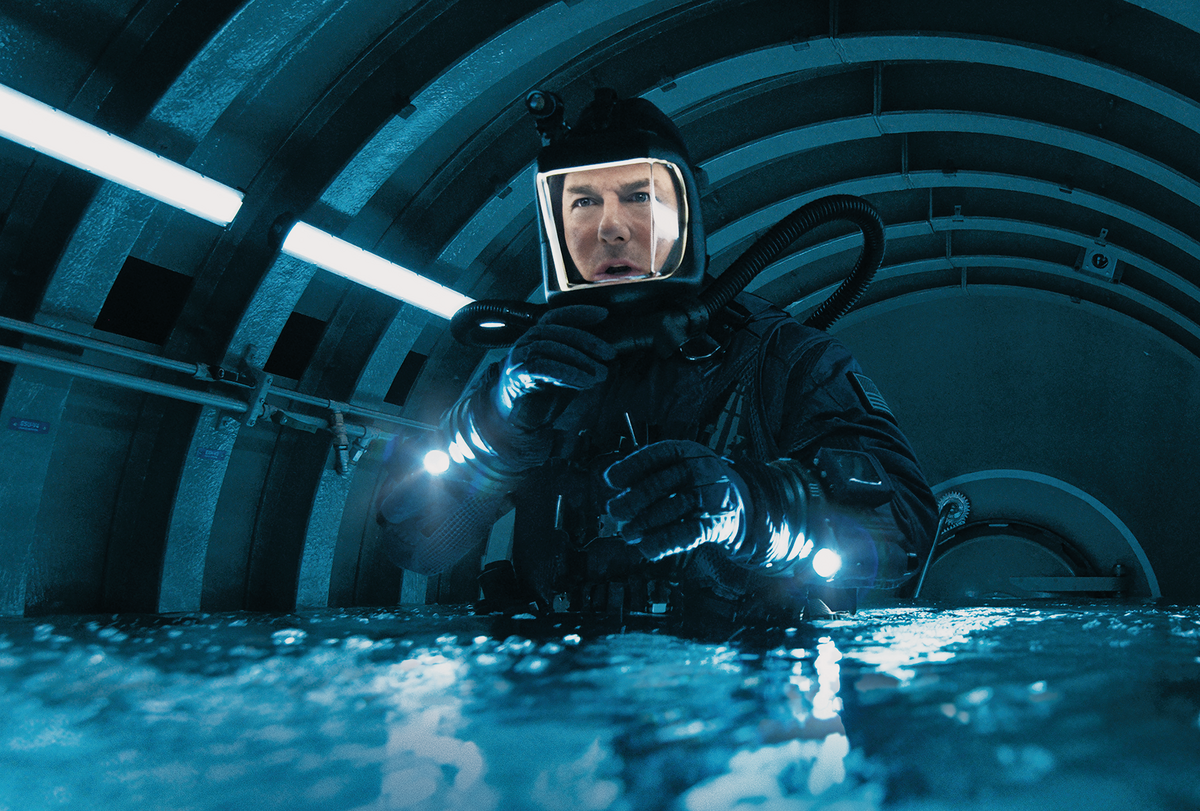
Cruise performs stunts in sea and sky in the franchise finale
MOVIES
A new M:I won’t save cinema, but it’s fun to watch Tom Cruise try
BY STEPHANIE ZACHAREK/ CANNES, FRANCE
MISSION: IMPOSSIBLE—THE FINAL RECKONING, the eighth film in the franchise and ostensibly its finale, looks, feels, and sounds like the sort of movie you need to see on the big screen. The powers that be at the Cannes Film Festival clearly thought so too: the picture premiered here on May 14. And even if, some 20 years ago, including a pop-franchise entry might have seemed like a cheap, attention-grabbing stunt, it means something different now. Aside from the fact that Cannes isn’t necessarily above such a stunt, it has always been all about the big-screen experience, which is now so endangered that it needs all the attention it can get. You don’t have to love Cruise to acknowledge that he’s probably the most widely recognizable movie star in the world. Sometimes recognition counts as a kind of love.
Just as his Mission: Impossible character Ethan Hunt gamely takes on the burden, ad nauseam, of saving the world, Cruise genuinely thinks he can save cinema. His optimism is touching, if unrealistic. But Mission: Impossible—The Final Reckoning— directed by franchise veteran Christopher McQuarrie—won’t save the movies. It’s big, and at times very beautiful. The story is the problem: Final Reckoning doesn’t flow; it lurches. If you’ve seen but forgotten the first half of this double whammy, 2023’s Dead Reckoning Part One, you needn’t worry. You could queue up Final Reckoning at home, go walk the dog, and get caught up in a snap when you return. And how cinematic is that?
The plot goes something like this: Ethan Hunt is in hot water for—quelle surprise—failing to follow orders. Now he must complete a mission to vanquish the scary all-seeing, all-knowing AI being known as the Entity.
To do so, he must dive deep into Arctic waters to procure a doodad known as the Podkova, which contains its source code. Not so fast, though: the Podkova is nothing without a little plug-in known as the Poison Pill.
The movies aren’t just one thing, and they can’t be saved by one man
UNFORTUNATELY, THAT’S IN THE POSSESSION of wily villain Gabriel (Esai Morales), who seized it from one of Ethan’s dearest colleagues, Ving Rhames’ Luther. Many of Ethan’s other helpers have returned: tech-support smarty Benji (Simon Pegg), foe turned friend Paris (Pom Klementieff), and ace pickpocket Grace (Haley Atwell), who’s also Ethan’s love interest. Grace doesn’t get to do much pickpocketing: her chief job is to gaze admiringly at her hero beau and issue solemn declarations. At one point, Ethan nearly dies—it wouldn’t be an M:I movie without one or two or three close calls—and in a sequence shot with the tender, dreamy vagueness of a feminine-hygiene commercial from the ’70s, she brings him back to robust health with her womanly caresses.
But no matter: cinema is still bigger than all of us, with the capacity to be many things. Final Reckoning is just one kind of thing, a big-screen entertainment that should be better than it is. It does offer some moments of joy. And no matter how you feel about Cruise, you’ve got to admit he looks pretty good. If the cartilage in his joints is wearing away, you’d never know it. He’s still got that boys’-adventure-book grin, though he can also be solemn when he remembers that the fate of the world is in his hands. As Ethan Hunt, Cruise may just be going through the motions of being Tom Cruise. But would an audience want him any other way? The movies aren’t just one thing, and they can’t be saved by one man. Still, we’ll believe the world can be snatched from AI doom if Tom Cruise can just plug the Poison Pill into the Podkova. For now, it’s almost enough.
MISSION: IMPOSSIBLE: PARAMOUNT PICTURES/SKYDANCE
TIME OFF REVIEWS

As father and daughter, Del Toro and Threapleton worship different gods
MOVIES
Wes Anderson returns with a muted Scheme
WES ANDERSON, WHO SPECIALIZES in designing fancifully invented societies, probably doesn’t strike anyone as an angry person. But his espionage comedy The Phoenician Scheme, which played in competition at Cannes before opening in theaters May 30, shows glimmers of something that might be called anger, or at least frustration, over the greed and immorality of people who have too much and only want more. The picture is flat and schematic—even more than usual for Anderson, who favors static camerawork and sets that resemble meticulously decorated dollhouses; he also has a penchant for dividing his movies into discrete chapters with deadpan title cards. All those features figure here, but the movie is more muted than usual for Anderson, both in its color tones and story. There’s something somber about it; it hints at exhaustion on Anderson’s part, not of the movies, but of the world.
Benicio Del Toro plays Anatole “Zsa Zsa” Korda, the richest man in Europe, a ruthless 1950s business tycoon who has a knack for surviving plane crashes. The suggestion is that his immorality is the key to his immortality; he’s just too distastefully wily to die. After surviving one such smash landing, he returns to his palazzo to consider his legacy, having decided that his eldest child and only daughter, Liesl (Mia Threapleton), will be his only heir. But Liesl has other plans. For one thing, she’s a nun in training, ready to renounce all earthly belongings. And she has little affection for her father, who she believes might even have killed her mother. Still, Zsa Zsa talks her into accompanying him on a multicountry jaunt, during which he’ll wheedle and hoodwink his associates into supplying the money for a big infrastructure scheme, the details of which are so boring, they’ll make your eyes glaze over. A meek and geeky insect specialist named Bjorn (Michael Cera) accompanies them, nurturing a crush on Liesl, whose moonfaced radiance gives her a kind of hot-cha-cha beauty, set off by her demure white veil and habit. Liesl’s fixation on believing in a higher power, especially within a religious framework, is one quirk we haven’t really seen from Anderson before. Still, he offsets it jauntily, with a revolving door of actors in bit parts including Tom Hanks, Riz Ahmed, Bryan Cranston, Benedict Cumberbatch, Hope Davis, and Mathieu Amalric.
It hints at exhaustion, not of the movies, but of the world
YOU MIGHT NEED to be a Wes Anderson purist to love The Phoenician Scheme. There’s nothing wrong with the performances: Cera, with his tootling phony Swedish accent, has an amusing savoir faire. Threapleton, with her take-no-prisoners stare, is charmingly enigmatic. But although there are a few good costumes—Zsa Zsa sports a dashing pair of Russian Constructivist–influenced zigzag-pattern pajamas—the film’s design overall feels restrained. There’s lots of 1950s industrial gray-green; even a Marseilles Art Deco nightclub feels a little decoratively subdued, and the plot jumps around so much that we don’t spend much time there anyway.
Zsa Zsa suffers from troubling dreams—apparently, he does have a conscience—rendered in understated grayed-out tones, with the sobering vibe of old Rockwell Kent illustrations—they may be the movie’s best feature. The Phoenician Scheme has none of the lavish, kooky excess of, say, The Grand Budapest Hotel. And the plot, with its fixation on intricate business deals, is—let’s just come out and say it—boring. But Anderson seems to be expressing an indistinct dissatisfaction with the current world order in the best way he can: in a parade of color that’s somehow less colorful than usual. —S.Z.
THE PHOENICIAN SCHEME: COURTESY CANNES FILM FESTIVAL
6 QUESTIONS
Marina Silva Brazil’s Environment and Climate Minister on growing up in the Amazon, hosting this year’s U.N. climate talks, and the global retreat of the Trump Administration
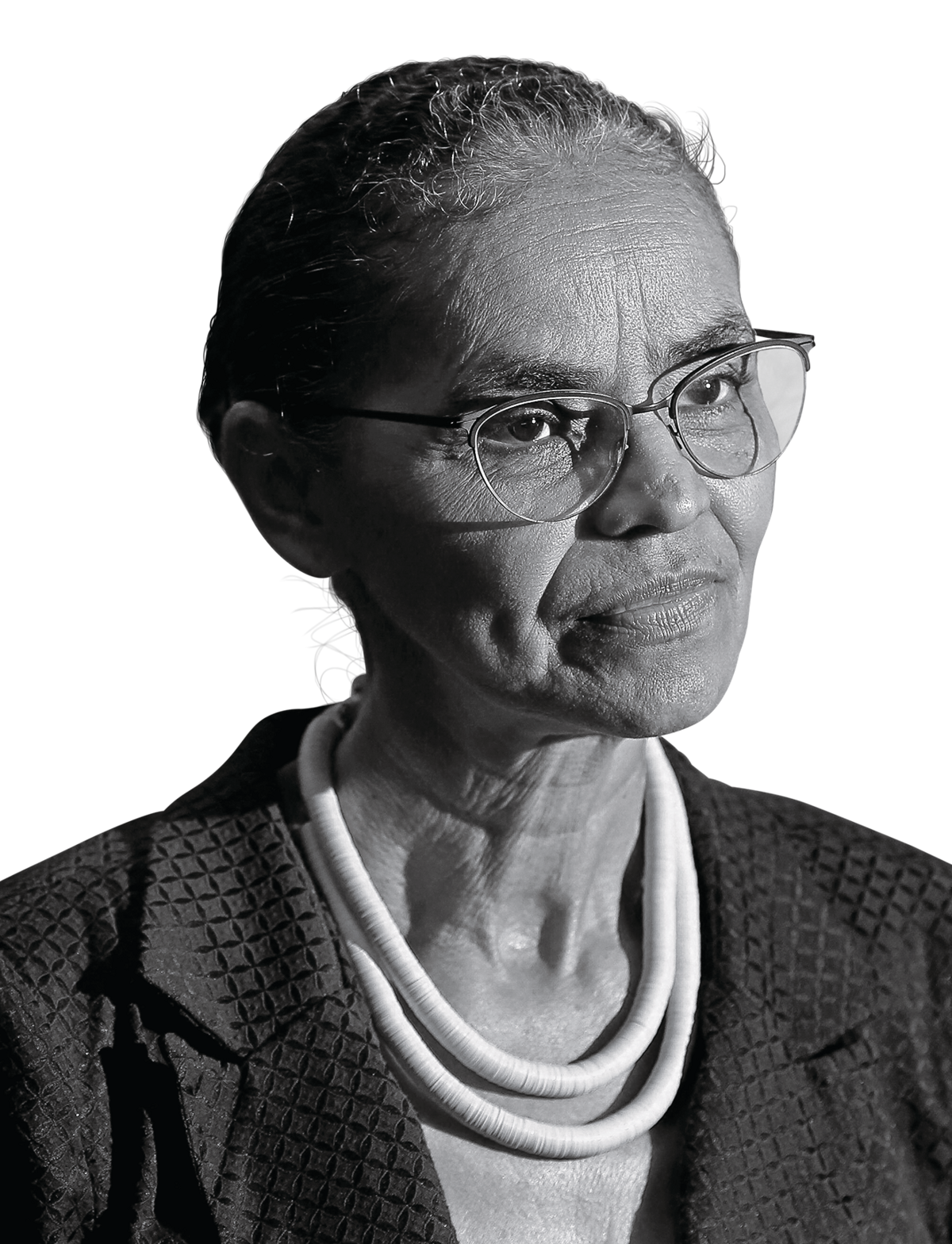
What can you share about growing up in the Amazon and how it has informed your work? We can’t separate from ourselves that which built us: our dreams, our commitments, our values. The Amazon is a wonderful place. It’s an explosion of colors, smells, diversity. It has an acoustic beauty. It has a beauty of image, pictorial beauty, and it is impossible to remove that from within us.
Since taking office, the government of President Luiz Inácio Lula da Silva has managed to dramatically reduce Amazon deforestation. How have you done it? In 2023, when we took office, we had deforestation on an ascending curve that was out of control. We had to rebuild command-and-control organizations and increase public funding. Based on data and evidence, we began from the very beginning to apply policies that we projected would work. And the result is a 46% drop in the last two years compared to the baseline of 2022. Now we have greater complexity. You can initially reduce the highest rates of illegal deforestation. But from now on we need to have policies to stem legal deforestation.
Environmentalists have expressed concern about potential oil exploration in the Amazon region. What is the government planning to do? The decision is not a decision that’s my ministry’s responsibility. It’s also not an individual decision by the President. It’s one done by the National Council on Energy Policy. We need to have more debates about energy security. Increasingly, countries that produce petroleum will have to bet on new [clean] sources. What I defend is a fair transition, a planned transition for everybody. It’s not magic. You can’t just change the sources of generation overnight.
More broadly, how do you balance the economic demands with the environmental concerns? That’s a challenge that’s not only ours. It’s for all of humanity. How to solve serious global environmental issues and at the same time maintain the prosperity of our society. With the worsening of geopolitical tensions, things have become more difficult, especially with the decision of the Trump Administration to leave the Paris Agreement, to stimulate the use of carbon fuels. The challenge that we have in front of us is to do a planned and fair transition away from fossil fuels. We’re already at the limit. There was a window of opportunity of not shooting over 1.5°, and now it’s just a sliver.
Do you see an opportunity to forge partnerships with other countries as the U.S. pulls back from climate collaboration? We can’t be deniers, not with geopolitics, not with climate. The vacuum created by the U.S. is the U.S.’s vacuum. They’re the second largest emitter. They’re the largest technological and economic power in the world. Global society and U.S. society have to demand a contribution to face these issues. But, as we have responsibilities with the future of life on earth, we have to double our efforts to protect life and the balance of the planet. The world needs to continue demanding that the U.S. act. Carbon-intensive products need to begin to be taxed. There is a price to reduce deforestation, to innovate technology. There’s a cost to our societies and to our companies. Why can some not contribute to reducing this burden?
What are your hopes for the upcoming U.N. climate talks—known as COP30—happening in the Brazilian city of Belém? If we look at a timeline of all of the COPs, my hope is that it will be an historical COP. Not because it is done in Brazil, but because it’s being held in one of the worst moments that humanity has ever faced. We need to leave Belém with a mandate to create a road map so that we can end deforestation, so that we can stop using fossil fuels in a manner that is fair for everybody.
—JUSTIN WORLAND/BRASÍLIA
SERGIO LIMA—AFP/GETTY IMAGES
Trump’s Learning Curve
Faced with the war’s complexities, Trump backs away from Ukraine peacemaking
BY SIMON SHUSTER
The Shift East
Once an auto underdog, China’s electric- vehicle boom now powers its tech rise
BY CHARLIE CAMPBELL
Power Play
The enhanced games aim to be the alternative Olympics—a multisport competition without the drug testing
BY SEAN GREGORY
Living Legend
Gypsy star Audra McDonald is now the performer with the most Tony wins and nominations in history
BY CHARLOTTE ALTER
View Desktop Version
Subscribe Now

